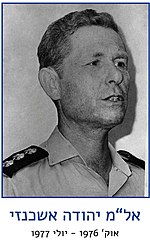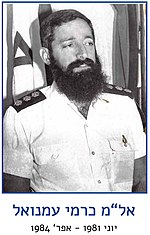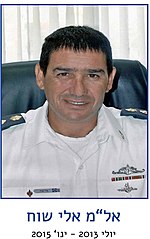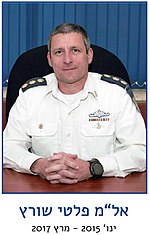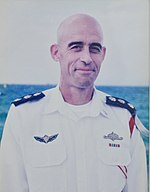My sandbox
On 10 June, Pakistani security forces carried out aerial strikes in Tirah Valley of Khyber Agency in the northwestern tribal areas next to the Afghan border, during which nine militant hideouts were destroyed and at least 25 militants were killed [1] [2] [3] [4]. The aerial strikes were conducted in the wake of the attack, and were an extension of a campaign of military operations against militants being conducted since the past few months. [2] [1] The area was believed to be used as a shelter for several anti-state militant factions and foreign fighters from Central Asia. [1] [3]
On 11 June, the Army decided to intensify air strikes on militant hideouts following a conference between top military commanders at the General Headquarters, Rawalpindi. [5] [6]
On the early hours of Thursday 12 June, the U.S. conducted two successive drone strikes near Miramshah in North Waziristan, after a nearly six-month break in US drone campaigns in the tribal areas of northwest Pakistan. The drone strikes killed 16 suspected militants. According to a Pakistani intelligence sources, the militants killed included four Uzbeks, a few key Afghan Taliban commanders and members, and two members of TTP Punjab. [7] [8]
On 15 June, Pakistan Air Force fighter jets bombed eight militant hideouts in North Waziristan, during which at least 105 militants [9] [6] (or up to 150 according to other official sources) [10] were killed according to security officials. Most of those killed during the strikes were Uzbek fighters, as the targets were predominantly Uzbek hideouts, and the dead included insurgents linked to the airport attack. [10] Military and intelligence sources confirmed the presence of foreign and local militants in the hideouts before the military operation. Abu Abdur Rehman Almani, a key Uzbek militant commander and a mastermind of the attack, was also reported killed. Some foreign militants from the East Turkestan Islamic Movement, a Uyghur separatist group from western China, were also among the dead. [11] [6]
-
 Supreme Political Council
Supreme Political Council
 Yemeni Armed Forces (
SPC)
Yemeni Armed Forces (
SPC)
-
Yemen Army(
SPC)
- Coastal Missile batteries [12]
- Air Defence systems [13]
- SAM batteries [14]
 Yemeni Navy(
SPC)
Yemeni Navy(
SPC)
 Yemeni Air Force(
SPC)
Yemeni Air Force(
SPC)
- Mil Mi-17 helicopters [16]
- Shahed drones
- KAS 04 drones [17]
-
Yemen Army(
SPC)
 Houthi militia
Houthi militia
 Iran
Iran
 Artesh
Artesh
 NEDAJA
NEDAJA
- IRIS Albortz [18] (Frigate)
 IRGC
IRGC
 NEDSA
NEDSA
- MV Behshad [19] (Intel ship)
 Quds Force
[20]
Quds Force
[20]
Hezbollah [21]
 Islamic Resistance in Iraq
[22]
Islamic Resistance in Iraq
[22]
 Israel
Israel
 Israeli Navy
Israeli Navy
 Israeli Ground Forces
Israeli Ground Forces
 Israeli Air Force
Israeli Air Force
- F-35 Adir fighter jets [25]
- Combat helicopters [26]
 United States
United States
 United States Navy
United States Navy
-
 USS Dwight D. Eisenhower (
Aircraft carrier)
USS Dwight D. Eisenhower (
Aircraft carrier) -
 USS Philippine Sea (
Cruiser)
USS Philippine Sea (
Cruiser) -
 USS Carney (
Destroyer)
USS Carney (
Destroyer) -
 USS Gravely (Destroyer)
USS Gravely (Destroyer) -
 USS Laboon (Destroyer)
USS Laboon (Destroyer) -
 USS Mason (Destroyer)
USS Mason (Destroyer) -
 USS Thomas Hudner (Destroyer)
USS Thomas Hudner (Destroyer) -
 USS Florida (
Submarine)
USS Florida (
Submarine) -
 United States Naval Air Forces
United States Naval Air Forces
- 21 F/A-18 Super Hornets
- One E-2C Hawkeye
- SeaHawk helicopters [27]
-
 United States Air Force
United States Air Force
-
 CENTCOM
[28]
CENTCOM
[28]
 United Kingdom
United Kingdom
 Royal Navy
Royal Navy
- HMS Diamond (Destroyer)
- HMS Richmond (Frigate)
- HMS Lancaster (Frigate)
 Royal Air Force
Royal Air Force
- Four RAF Typhoon fighters
- Two Voyager KC2s [29]
 Sri Lanka
Sri Lanka
 Sri Lanka Navy
Sri Lanka Navy
- SLNS Gajabahu [30] [31] (Armed patrol vessel)
 Canada
Canada
 Royal Canadian Navy (personnel only)
Royal Canadian Navy (personnel only)
 Australia
Australia
 Royal Australian Navy (personnel only)
Royal Australian Navy (personnel only)
 New Zealand
New Zealand
 Royal New Zealand Navy (personnel only)
Royal New Zealand Navy (personnel only)
 Singapore
Singapore
 Republic of Singapore Navy (personnel only)
Republic of Singapore Navy (personnel only)
 Bahrain
Bahrain
 Royal Bahrain Naval Force (personnel only)
Royal Bahrain Naval Force (personnel only)
 Seychelles
Seychelles
 Seychelles Coast Guard (intelligence support)
Seychelles Coast Guard (intelligence support)
 France
France
-
 French Navy
French Navy
- Languedoc ( Frigate)
- Alsace (Frigate)
- Forbin (Frigate) [32]
-
 French Naval Aviation
French Naval Aviation
- Eurocopter AS565 Panther helicopters [33] [34]
-
 French Air and Space Force
French Air and Space Force
-
 Italy
Italy
 Italian Navy
Italian Navy
- Caio Duilio (Destroyer)
- Virginio Fasan (Frigate)
- Federico Martinengo (Frigate)
 Germany
Germany
 German Navy
German Navy
- Hessen (Frigate)
-
 Marineflieger
Marineflieger
- One Westland Lynx
 Belgium
Belgium
 Belgian Navy
Belgian Navy
- Louise-Marie (Frigate)
 Belgian Air Component
Belgian Air Component
-
40th Squadron
- One NH90
-
40th Squadron
 Estonia
Estonia
 Estonian Navy (personnel only)
Estonian Navy (personnel only)
 Greece
Greece
 Hellenic Navy
Hellenic Navy
- Hydra (Frigate)
 Denmark
Denmark
 Royal Danish Navy
Royal Danish Navy
-
 HDMS Iver Huitfeldt (Frigate)
HDMS Iver Huitfeldt (Frigate)
-
 Netherlands
Netherlands
 Royal Netherlands Navy
Royal Netherlands Navy
-
 HNLMS Tromp (Frigate)
HNLMS Tromp (Frigate) - HLMS Karel Doorman (Joint support ship) [36] [37]
-
 Netherlands Naval Aviation Service
Netherlands Naval Aviation Service
- One NH90
- One Eurocopter AS532 Cougar
-
 Sweden
Sweden
 Swedish Navy (personnel only)
Swedish Navy (personnel only)
 Finland
Finland
 Finnish Navy (personnel only)
Finnish Navy (personnel only)
 India
India
 Indian Navy
Indian Navy
-
 INS Kolkata (Destroyer)
INS Kolkata (Destroyer) - INS Kochi (Destroyer)
- INS Chennai (Destroyer)
-
 INS Visakhapatnam (Destroyer)
INS Visakhapatnam (Destroyer) - INS Mormugao (Destroyer)
-
INS Tarkash (Frigate)
- INS Talwar (Frigate)
-
 Indian Naval Air Arm
Indian Naval Air Arm
- HAL Dhruv helicopters
-
 Pakistan
Pakistan
 Pakistan Navy
Pakistan Navy
- PNS Tughril (Frigate)
- PNS Taimur (Frigate)
- PNS Shamsheer (Frigate)
- PNS Aslat (Frigate)
- PNS Moawin ( Replenishment oiler)
- PNS Madadgar (Coastal tanker)
- PMSS Zhob ( Maritime Patrol Vessel)
-
 Pakistan Naval Air Arm
Pakistan Naval Air Arm
- WS-61 Sea King helicopters
 China
China
 People's Liberation Army Navy
People's Liberation Army Navy
- Jiaozuo (Destroyer)
- Xuchang (Frigate)
- Honghu (Replenishment oiler)
-
 People's Liberation Army Naval Air Force
People's Liberation Army Naval Air Force
- Two Harbin Z-9 helicopters [38]
 Saudi Arabia
Saudi Arabia
 Royal Saudi Air Defense Forces
Royal Saudi Air Defense Forces
- 290th Patriot unit [39]
 Egypt
Egypt
 Israel Defense Forces
Israel Defense Forces
 Israeli Ground Forces
Israeli Ground Forces
-
 Northern Command
Northern Command
-
 Ga'ash division
Ga'ash division
-
 Golani Brigade
[42]
Golani Brigade
[42]
-
 Saar me-Golan Brigade
Saar me-Golan Brigade -
Barak Brigade [43]
-
 Carmeli Brigade
[43]
Carmeli Brigade
[43]
-
-
 Ha Mapatz Division
Ha Mapatz Division
-
 Kiryati Brigade
Kiryati Brigade -
 Alon Brigade
Alon Brigade
- Battalion 5030 [44]
-
-
 Galilee Division
Galilee Division
-
 Ba'ram Brigade
[45]
Ba'ram Brigade
[45]
-
-
 Bashan division
[46]
Bashan division
[46]
-
-
 Southern Command
Southern Command
-
 Gaza Division
Gaza Division
-
 Gefen Brigade
[47]
Gefen Brigade
[47]
-
 Katif Brigade
Katif Brigade
-
-
 Ha-Plada Division
Ha-Plada Division
-
 Edom Division
Edom Division
-
 Sinai Division
[56]
[57]
[58]
Sinai Division
[56]
[57]
[58]
-
 Harel Brigade
[56]
Harel Brigade
[56] -
 Negev Brigade
[59]
Negev Brigade
[59] -
 Jerusalem Brigade
Jerusalem Brigade
-
-
-
 Central Command
Central Command
-
 Ha'Bazak Division
Ha'Bazak Division
-
 Multidimensional Unit
[60]
Multidimensional Unit
[60] -
 Kfir Brigade
Kfir Brigade
-
 Sharon Brigade
Sharon Brigade -
 Schualey Marom Brigade
Schualey Marom Brigade -
 Yiftach Brigade
Yiftach Brigade
-
-
 Ha'Esh Division
[62]
Ha'Esh Division
[62]
-
 35 Paratroopers Brigade
35 Paratroopers Brigade -
 Tip of Spear Brigade
Tip of Spear Brigade -
 Oz Brigade
Oz Brigade
-
 Hetzei HaEsch Brigade
Hetzei HaEsch Brigade
-
-
-
 Home Front Command
[66]
Home Front Command
[66] -
 Infantry Corps
Infantry Corps
-
 Bislamach Brigade
[67]
Bislamach Brigade
[67] -
 261st Infantry Brigade
261st Infantry Brigade -
 Hamarom Brigade
Hamarom Brigade
-
-
 Combat Engineering Corps
Combat Engineering Corps
-
 Combat Intel Collection Corps
[69]
Combat Intel Collection Corps
[69]
-
 Nesher Battalion
Nesher Battalion -
 Shahaf Battalion
[70]
Shahaf Battalion
[70]
-
-
 Artillery Corps
Artillery Corps
-
 Amud ha-Esh Brigade
[71]
Amud ha-Esh Brigade
[71]
-
-
 Armoured Corps
Armoured Corps
-
 Ram Brigade
[72]
Ram Brigade
[72] -
 Hativa Shimoneh Brigade
[73]
Hativa Shimoneh Brigade
[73] -
 Bison Brigade
Bison Brigade
-
-
 Israeli Air Force
Israeli Air Force
 Israeli Navy
Israeli Navy
 Israel Police.
[79]
Israel Police.
[79]
-
 Shin Bet
[79]
Shin Bet
[79] -
 Israeli armed citizens
[83]
[84]
Israeli armed citizens
[83]
[84]
-
 Joint Operations Room
Joint Operations Room
 Hamas
[85]
Hamas
[85]
-
 Al-Qassam Brigades
[86]
Al-Qassam Brigades
[86]
- Al-Nukhba Commando Force
- North Brigade
- Beit Lahia Battalion
- Beit Hanoun Battalion
- Al Khalifa al Rashidun Battalion
- Martyr Suhail Ziadeh Battalion
- Jabalia al Balad Battalion
- Imad Aql Battalion
- Elite Battalion
- Gaza Brigade
- Sabra-Tal al Islam Battalion
- Daraj wal Tuffah Battalion
- Radwan Battalion
- Shujaiya Battalion
- Zaytoun Battalion
- Shati Battalion
- Possible Elite Battalion
- Central Brigade
- Deir al Balah Battalion
- Al Bureij Battalion
- Al Maghazi Battalion
- Nusairat Battalion
- Possible Elite Battalion
- Khan Younis Brigade
- Camp Battalion
- North Khan Younis Battalion
- South Khan Younis Battalion
- Eastern Khan Younis Battalion
- Qarara Battalion
- Elite Battalion
- Rafah Brigade
- Eastern Battalion
- Khalid bin al Walid Battalion
- Shaboura Battalion
- Unknown Fourth Battalion
- Elite Battalion
- West Bank Brigade
-
Hamas-Lebanon
- Al-Aqsa Flood Vanguards [89]
-
 Palestinian Islamic Jihad
[90]
Palestinian Islamic Jihad
[90]
 Al-Quds Brigades
Al-Quds Brigades
- Tulkarm Battalion [91]
- Jenin Battalion [92]
- Nablus Battalion [93]
- Tubas Battalion [94]
 Democratic Front for the Liberation of Palestine
[95]
[96]
Democratic Front for the Liberation of Palestine
[95]
[96]
 Ex-
Fatah Groups
Ex-
Fatah Groups
![]() al-Aqsa Martyrs' Brigades
[94]
al-Aqsa Martyrs' Brigades
[94]
 Popular Front for the Liberation of Palestine
[104]
Popular Front for the Liberation of Palestine
[104]
 Abu Ali Mustafa Brigades
Abu Ali Mustafa Brigades
- Dheisheh camp guards
 Popular Resistance Committees
[105]
Popular Resistance Committees
[105]
 Palestinian Freedom Movement
[105]
Palestinian Freedom Movement
[105]
 Al-Ansar Brigades
Al-Ansar Brigades
 Palestinian Mujahideen Movement
[105]
Palestinian Mujahideen Movement
[105]
 Mujahideen Brigades
Mujahideen Brigades
 Popular Front for the Liberation of Palestine – General Command
[106]
Popular Front for the Liberation of Palestine – General Command
[106]
- Lions' Den [107]
- Jenin Brigades [108]
- Biddya Brigades [109]
- Al-Ayyash Battalion [110]
- Lone wolf insurgents
-
Axis of Resistance
Hezbollah
-
Hezbollah Military Wing
- Lebanese Resistance Brigades [111]
- Redwan Force [112]
- Imam Hussein Brigades [113]
- Islamic Azz Brigades [114]
- Syrian Hezbollah [115]
-
 Islamic Group
[116]
Islamic Group
[116]
 SSNP-L
[117]
SSNP-L
[117]
 Amal Movement
[118]
Amal Movement
[118] Islamic Resistance in Iraq
[119]
Islamic Resistance in Iraq
[119]
-
 Supreme Political Council
[122]
Supreme Political Council
[122]
 Syria
Syria
 Iran
Iran
| Lacccadives Scramble | |||||||||
|---|---|---|---|---|---|---|---|---|---|
| |||||||||
| Belligerents | |||||||||
|
|
| ||||||||
| Commanders and leaders | |||||||||
|
|
| ||||||||
| Units involved | |||||||||
|
Travancore Police |
| ||||||||
The Scramble of Lacccadives was a military race between Pakistan Navy and Indian authorities in Travancore to reach the islands of Lakshadweep and annex the territory which took place in late August 1947. Both countries deployed naval vessels but the indian authorities were able to reach first annexing the islands.
The Aminidivi islands under the rule of Tipu Sultan of Mysore Kingdom in 1787 were annexed to the British Raj in 1799 after the Fourth Anglo-Mysore War. The rest of the islands remained under the suzerainty of the Arakkal family in return for a payment of annual tribute. [129] The British took over the administration of those islands in 1908 for nonpayment of arrears and attached it to the Madras Presidency. [130] As Lacccadives were not a separate entity so they weren't considered during the Partition of India and thus their status was unclear so Pakistan attempted to take hold of these islands. [131]
At the end of August, 1947, Liaquat Ali Khan, came to realisation that Lacccadives, a region with Muslim majority didn't become a part of Pakistan and could be taken control of with ease. The Deputy Prime Minister of India, Vallabhbhai Patel, also started to think about Lacccadives. [131] [132] [133]
So , the Royal Pakistan Navy sent a naval vessel towards Lacccadives from Karachi. In India Vallabhbhai Patel was informed about the plannings in Karachi. He immediately sent collector of Travancore to Lacccadives. [131] [132] [133] He also sent a message to Mudaliar brothers to convey the collector of Travancore to order the police officials to go to Lacccadives with available weaponry. Vallabhbhai Patel stated “If the police forces no firearms with them, they can take lathis with them but somehow take possession of the area.” [134] and the Flag of India was raised. [131]
A few hours later,
Pakistani warship reached and had to return on seeing the
Indian flag flying.
[131]
[132]
[133]
The islands were annexed into the Dominion of India and became part of the Madras State under the Constitution of India in 1950. [135] In 1956, the islands which were had been divided between the South Canara and Malabar districts of Madras state, was organized into a separate union territory administered by the Government of India, following the States Reorganisation Act. [136] [137] The territory which was known as Laccadive, Minicoy, and Amindivi Islands became Lakshadweep islands on 1 November 1973.
fr:Émeutes de mai 1967 en Guadeloupe
| 1967 Guadeloupe riots | |||
|---|---|---|---|
 A mural painted in the remembrance of the victims in
Point-à-Pitre | |||
| Location | |||
| Caused by | Racism, Socio-economic inequalities and Low Wages | ||
| Goals | Increase of Wages, Separatism | ||
| Methods | Riots, Traffic Obstruction and Civil disobedience | ||
| Parties | |||
| |||
| Lead figures | |||
| Casualties and losses | |||
| |||
The riots of May 1967 in Guadeloupe were clashes which occurred between gendarmes and demonstrators on the island during strikes following a racially motivated attack. The riots resulted in the deaths of 87 people (1985 estimate, 1967 estimate reported 7 deaths). [138] [139] Other sources estimate the number to be between 80 and 200. [140]
Guadeloupe, an island with a number of socio-economic inequalities between the peoples of European and African ancestry [141] [142] significantly increased by the social transformation policies relaunched by the French government to compensate for the damage caused by Hurricane Inez . [143]
Moreover due to the Decolonisation movements taking place in other parts of the world, similar separatist movements also began to take form in Guadeloupe, such as GONG but the Gaullist movement in France was not willing to negotiate because of the strategic location of the island. [144] So these movements came into direct conflict with the French authorities, police and paramilitaries. [145]
On March 20, 1967, Vladimir Snarsky, white owner of a large shoe store in Basse-Terre , unleashes his German shepherd to chase away Raphaël Balzinc, an old black and disabled shoemaker who set up his stall in front of the store. [146] [147] The white owner, was the local leader of the Gaullist UNR party , ironically asked his dog “Say hello to the nigger!” ". This racist incident sparked riots and strikes in Basse-Terre and Pointe-à-Pitre. Two squadrons of National Gendarmerie were deployed in Guadeloupe. [148]
On May 24, 1967, construction workers in Guadeloupe went on strike to obtain a 2.5% salary increase and parity in social rights. [149]
On May 26, at noon, a crowd gathered in front of the Pointe-à-Pitre Chamber of Commerce and waited while negotiations took place between union organizations and the employer representatives. Around 12:45 p.m., they learned from a representative that the negotiations had broken down and rumors began to spread. [150]
The employers' representative, Georges Brizzard , reportedly said: " When the Negroes are hungry, they will go back to work!". The Demonstrators started chanting “ Djibouti , Djibouti” to recall the violence which had taken place there , with the French Army shooting separatist demonstrators on sight. [138].
The clashes began with tear gas grenades fired by the gendarmes against demonstrators who threw Lambi conch shells , stones and glass bottles. On the morning of May 26, Mobile Gendarmerie opened fire during violent demonstrations by strikers, causing several injuries. [151] When a gendarme took off his helmet to wipe his forehead , he received a violent blow to his head severely injuring him, the Mobile Gendarmerie open fire in retaliation, causing the death of Jacques Nestor, a prominent activist of the Guadeloupe National Organization Group. . According to the authorities, the firefight was initiated by demonstrators who opened fire first. [151]
The French authorities initially believed the insurrection to be fomented by the GONG but investigations revealed the riots to be spontaneous. [147]
Some sources state that the opening of fire on demonstrators was knowingly approved by the French government. [152]
The official toll from the authorities at the time of the massacre was 7 to 8 dead. In 1985, the Secretary of State for the French Overseas Territories, Georges Lemoine, confirmed the death toll of atleast 87 victims, cross-checked from several administrative sources, including the General Intelligence. [153] Most estimates put the death toll between 80 to 200, exact death toll was difficult to determine due to the destruction of archives. [140] MP Christiane Taubira put the death toll around one hundred. [154]
More than 30 Gendarmes (some red kepis ' Mobile Gendarmerie" [155]) and members of the Republican Security Companies were reportedly injured by the demonstrators [156]
A mural was painted in remembrance of the victims on May 26, 2007 in Pointe-à-Pitre. [157]
Commemorations of the victims were held in 2017 , demanding the opening of classified archives. [158]
- Biloute , a song by Mé swasannsèt , album Rékòlt, 2010
- Jacques Le Cornec, A West Indian kingdom: of stories and dreams and mixed peoples , L'Harmattan, 2005
- Raymond Gama and Jean Pierre Sainton, Mé 67 , Guadeloupean publishing and distribution company, 1985
- Jean Plumasseau, In the name of the fatherland , Éditions Nestor, 2012
- Raymond Gama (2011). Éd. Lespwisavann (ed.).
Mé 67:mémoire d'un événement (in French). Port-Louis.
ISBN
978-2-9527540-4-0.
OCLC
779736808.
{{ cite book}}: CS1 maint: location missing publisher ( link) [103]
- “May 1967 in Guadeloupe, investigation into a forgotten massacre” on January 15, 2014 in 50 years of news stories on 13th street and on Planète+ Justice .
- “May 1967, Police repression in Guadeloupe” broadcast by Fabrice Desplan, France Ô .
- “May 67 – Don’t shoot the children of the republic” by Mike Horn, 2017, France Ô .
- “The debate: May 67, the legacy of a revolt". Historical magazine presented by Fabrice d'Almeida in Histoire d'Outre-Mer, France Ô (broadcast on 01/31/2018)
- Rendez with avec X, par Patrick Pesnot on France Inter, 7 March 2009: « May 1967 : The massacre at Pointe-à-Pitre. [159]
- Sensitive affairs, by Fabrice Drouelle on France Inter , broadcast on Thursday April 28, 2016: “When the blacks are hungry, they will return to work” Guadeloupe, May 67, a bloody repression. [160] [161]
- “Diable Positif: The massacre of May 67”, posted online on May 10, 2020 [162].
- "Racisme d'Etat : "Le déni est bien construit" - Par La rédaction | Arrêt sur images". www.arretsurimages.net.
- “50 years ago, the Guadeloupean demonstrations ended in massacre”, on Slate. [163]
- “From the forgotten massacres of May 1967 in Guadeloupe to the beginnings of the modern security order in the neighborhoods”, on Bastamag. [164]
- May 67 , by Thomas Cantaloube (Gallimard, the Black Series, 2023) (in French)
- Where dogs bark by their tails, by Estelle-Sarah Bulle (Liana Levi, 2018) (in French)
June 1972 near the Lebanon Coast Shayetet 13 Dvor 883 under the command of Dan Rabin and senior commander in the sea Eli Levi and INS Sa'ar under the command of Zvi Yanai carried out an ambush for a militant boa that was destroyed.
On October 16, 1973 two Dvor ships were used for rescue and transport for the force of Shayetet 13 participating in Operation Lady. [165] From October 17-20 off the coast of Beirut, the Unit 707 vessels of Shayetet 7 along with two bees sabotaged maritime communication lines disrupting the communication lines. [166]
On June 7, 1978 in the Haifa naval base an explosion in the wheelhouse of Dvor 862 as a result of hydraulic oil vapors from the steering system or fuel leakage from the rubber boat tanks killed Corporal Rafi Malka [167]
On August 9, 1974 in southern Lebanon in front of the Port of Tzur a Dvor boat of the squadron destroyed a militant boat. [168] On June 3-4, 1979, near Rosh HaNkira, a militant boat targeting the coastal radar was captured by a bee. On August 17-18, 1979 in the sector of Ras al-Bayada a militant boat was captured. On November 18, 1979 three bees under the control of Col. Moshe Oron chased and 853 bees under the command of Eran Osherov destroyed a militant boat. [169] On June 16, 1980 near Rosh HaNkira a fast terrorist boat trying to penetrate from Lebanon was discovered by the control control and intercepted by Dvor 894 under the command of Dan Rabin. A militant fired a missile that hit the Dvor. Two wounded, one moderately injured were evacuated by helicopter. The three militants were neutralized. On September 23, 1984 in front of the Sidon beach Dvor team 853, under the command of Lieutenant Yehiel Klusky, noticed at 5:30 that some militants were trying to penetrate. In an exchange of fire with IDF soldiers on the beach, 3 militants were killed and several were captured. [170] On October 19, 1984 near the Coast of South Lebanon Dvor blocked a militant boat killing two militants in exchange of fire. On August 26, 1985 about 14 miles west of Sidon, a militant yacht was captured. On July 10, 1986 on the coast of Rosh HaNkira a rubber boat with militants from the Popular Front for the Liberation of Palestine was discovered by Devor 852 under the command of Idan in an exchange of fire, two IDF soldiers were killed and eleven were wounded meanwhile the four militants were killed and their boat was destroyed. [171] On September 10, 1986 about five kilometers north of Tzur INS Moladat (commanded by Noam Feig), with Dvora 881 (commanded by Micah Shitkin) with the help of combat helicopters, discovered a rubber boat 600 meters from the beach of Mint Abu Zeid and fired at it. Some of the militants were injured and the rest managed to escape with the boat to the shore. On December 10, 1987 in the area of the Litani estuary the Dvora 894 ship under the command of Eran Shor destroyed a militant ship during the encounter, Sergeant Major Amit Sela was killed [172] On December 4, 1988 between Cyprus and Lebanon a Dvora boat stopped the ship 'Hassan' which was involved in the transfer of militants from Cyprus to Lebanon. On April 8, 1989 off the coast of Southern Lebanon a militant boat was destroyed by Dvora 810 under the command of Ido Ram. On October 30, 1989 near the coast of South Lebanon the ship Dvora 811 under the command of Lieutenant Danny Naor, encountered a militant boat that was on its way to an attack in Israel and destroyed it. On November 13, 1989 in the waters of Southern Lebanon an attempted attack on the ship Dvora 811 under the command of Dani Naor, by a Lebanese fishing boat, was thwarted. On June 23, 1990 southwest of Tyre a militant boat that was on its way to the attack was destroyed by Deborah 811 under the command of Dani Naor. [173] On July 31 1990 in front of Rashidiya Dvora 811 under the command of Dani Naor discovered a fast boat with armed militants on it. On 5 September 1990 near Sidon INS Reshef (Saar 4) under the command of Aryeh Nagler, and Dvora 816 under the command of Dani Amir captured a militant from a ferry. On July 10, 1994 near Ras al Bayda Dvora 813 under the command of Boris Vossler killed two militants of the Hezbollah who were on their way to carry out an attack. [174]
On July 14, 2006 INS Hanit was damaged by a Hezbollah rocket and a Davor boat of the squadron destroyed a gas station. [175] [176] [177]
| Air Wing 7 | |
|---|---|
| כנף 7 | |
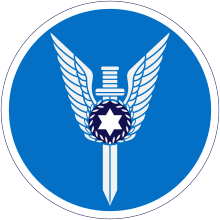 Logo of the Wing | |
| Active | 2022 – present |
| Country | |
| Allegiance | |
| Branch | |
| Type | Special Forces Wing |
| Garrison/HQ | Palmachim Airbase |
| Nickname(s) | Special Forces Wing |
| Commanders | |
| Current commander | Lt. Col J [178] |
| Notable commanders | Omri Gonen |
Wing 7 is the special air forces wing of the Israeli Air Force. It is composed of three combat units Unit 669, Shaldag Unit and Unit 5700. The wing's permanent base is at the Palmachim Airbase.

The wing was established out of an operational need to deal with the Air Force's core challenge of having a special operative force for designated operationz. The wing is a complementary component to the Air Force's activities through special operations in routine and emergency. The wing's main missions include: [179]
- Special reconnaissance
- Tactical air control
- Airfield Assault Zone establishment
- Combat search and rescue
- Operation of forward airstrips and airfields
The wing currently has 3 operational units.
- Unit 669 - Special Tactics and Rescue Unit
- Shaldag Unit - Air Commando Unit
- Unit 5700 - Forward Base Operatives
Until the establishment of the Wing, the wing's units were subordinated to the various air force bases and the professional direction was the responsibility of the Special Air Forces Command. With the establishment of the wing in July 2020, the command of the Special Air Forces that operated at the Air Force Headquarters was abolished, and a SAF branch in the attack department and a SAF training section in an integrated training branch was established at the corps headquarters. [179]

Following the surprise attack on Israel on October 7, 2023, the Shaldag Unit was deployed to fight Hamas militants in the communities they had infiltrated. The unit's fighters were flown by helicopters to the rear of the terrorist units and fought in the Battle of Re'im Camp, the Battle of Kibbutz Be'eri, the Battle of Kibbutz Alumim, the Battle of Holit, and the Battle of Kfar Aza. During the battles, five of the Shaldag Unit fighters were killed. [180] [181] Similarly, the Unit 669 was the first to reach certain combat centers, the unit evacuated hundreds of wounded in operational cooperation with the circle of elite units in the IDF , especially the mobility unit. [182] [183] [184]
The Shaldag Unit participated in the raid on Shifa Hospital and the exposure of Hamas's tunnel network beneath it, together with Yahalom fighters from the Combat Engineering Corps and Oketz Unit. [185]
On December 20, Shaldag Unit along with Sayeret Matkal, Shayetet 13, the 401st Brigade, and Oketz fighters, completed the takeover of the "Senior Officials' Quarter" of Hamas in Palestine Square in the Rimal neighborhood in central Gaza City. The quarter served as the main governmental and security hub of Hamas. The complex includes an extensive tunnel network connecting the offices of senior officials, safe houses, offices, and residences of the military wing and the military leadership of Hamas in the Gaza Strip. [186] On February , together with other special forces, the Unit 669 took a major part in Operation Golden Hand to free two hostages, Fernando Simon Merman and Luis Har, who were held in Rafah . [187] The force and the abductees from the scene of the operation were taken by Unit 669 to the evacuation helicopter , which evacuated the abductees to the Sheba Medical Center. [188]
- "A video on the YouTube channel of the Israeli Air Force".
- "סערה על הקרקע". Israeli Air Force website.
| Unit 5700 | |
|---|---|
| יחידת ההנחתה הקדמית | |
 Unit logo | |
| Active | December 10, 1973 – present |
| Country | |
| Branch | |
| Type | Special Operations Force |
| Role | Airfield Assault Zone establishment, special reconnaissance, Air traffic control, fire support |
| Part of | |
| Garrison/HQ | Nevatim Airbase |
| Nickname(s) | YHK |
| Engagements |
Yom Kippur War Operation Litani 1982 Lebanon War Operation Moshe Israel-Hamas war |
| Insignia | |
| Former Insignia |
 |
The mission of the unit is to locate and operate forward airfields and airstrips usable for aircraft , which are not permanent airfields of the Israeli Air Force.
The role is carried out by a "frontal assault lander and includes paratroopers, examining the suitability of the region for the task, marking them and establishing temporary airstrip. [189] The inspection of the intended runways is carried out by a "soil examiner" who is also the professional authority that approves the landing on the spot.The work is carried out with the transport planes and various aircraft and it requires knowledge of communication and flight control and infantry , navigation and mobility skills. [190]

It also plays to role in the security of Airforce installations. The role of the unit is similar to that of United States Air Force Combat Control Team.
The unit was established on December 10, 1973 at the Lod Airbase . Avraham Shavit was the first to establish the unit then called as the "route branch" [191]. In the Yom Kippur War, the unit participated under the command of Amos Jordan. In 1978 she participated in Operation Litani [192]. In the 1982 Lebanon War, the unit was deployed at the Beirut International Airport for Air Force operations, and at Anzer, Marj and Damour. In Operation Moshe, the unit's soldiers helped in the evacuation of Ethiopian Jews. The unit also transported humanitarian aid to Rwanda and took part in military exercises in Mexico. In 2008, the unit was deployed at the Nevatim Airbase. [193] In 2009, the unit joined the Special Forces wing of Israeli Air Force. The unit also participated in the Israel-Hamas war. [194] In 2024, female personnel were integrated into the unit for the first time. [195]
- Prerequisites : medical profile 82 or higher, KBA 53 or higher, DPR 50 or higher. The screening includes computerized tests, medical examinations, a security investigation and an interview.
- Military training - Same training as that given to Unit 669 and Shaldag Unit special operatives.
- Recruitment - a limited, one-year recruitment cycle, held at the end of November.
- Eran Belcher. "נחיתה רכה". Israeli Air Force website.
- "YHK (יחידת נחיתה קדימה)". Israeli Air Force website.
- "בעיר חיל האוויר, על קרקע בטוחה". Israeli Air Force website.
- "At every point on the globe: the air fighters who extend the Israeli arm". Walla (in Hebrew). November 30, 2017.
- Maya Polak (December 3, 2019). "היחיד שבנה רצועת נחיתה באיראן לפני תקיפה ישראלית". Makor Rishon (in Hebrew).
- Hanan Greenwood (October 29, 2018). "מסווג: היחידה שמנחת מטוסים בשטח האויב". Israel Hayom.
- Zohar Neiger (December 1, 2021). "שדה תעופה נייד,". Israeli Air Force website.
- "היחידה שמנחיתה לוחמים בלב הקרב". IDF website. December 18, 2023.
- Love Turgeman (April 11, 2023). "איך נוחתים בעפר". Israeli Air Force website.
| 11th Flotilla | |
|---|---|
| שייטת הנחתות | |
 Coat of arms of Shayetet 3
11 | |
| Active | 1948-1957, 1964-1993, 2022-present |
| Country | |
| Branch | |
| Type | Amphibious warfare flotilla |
| Size | 2 Ships (Currently with plans for more) |
| Part of | |
| Garrison/HQ | Ashdod Naval Base |
| Nickname(s) | Amphibious Flotilla |
| Commanders | |
| Notable commanders | #Commanders |
| Insignia | |
| Warrior pin |
 |
The Landing flotilla officially known as the Shayetet 11 is the Amphibious warfare fleet of the Israeli Navy. It is tasked with amphibious landings and logistics. The unit established during Israeli War of Independence was abolished in 1993 and was re-established in 2022.
The function of the unit is amphibious landings and naval encirclement. In preparation for the Israeli War of Independence, it's role was defined as the creation of coastal bridgeheads and transport of supplies to isolated settlements. From then till 1993, the flotilla took part in many wars and many operations when it was abolished. It was re-established in 2022 and became operational in 2024 amidst the backdrop of Israel Hamas war.
The table below includes the vessels that were used by the flotilla. [196]
| Name | Service | Notes | Commanders | Photo | |
|---|---|---|---|---|---|
| INS Hanna Senesh (Sh-29) | 1948 - 1951 | In Operation Ben Ami, a force from the Carmeli Brigade landed in the captivity of Zion and evacuated the families of kibbutzim the Western Galilee to the Port of Haifa. Brought a force from the 22nd Battalion of the Carmeli Brigade to raid the Litani bridges - "Operation Kathriel" which was canceled due to the entry of the first ceasefire (June 11, 1948) | Israel Averbuch Shaul Avni |

| |
| 2 British tank landing crafts | Length 48 meters, width 9 meters, thrust 300 tons, 3 propellers, 10.5 knots. Charger: up to 5 tanks weighing 30 tons; or 3 tanks weighing 50 tons; or 9 trucks; or 250 tons. |

| |||
| INS Nevertheless | July 1948 - 1958 | Originally a missile boat LCT(r)-147 landing Battalion training, during Suez crisis. It was planned to land a force in the Gaza Strip. [197] The landing craft is on display at the Israeli Navy Museum |
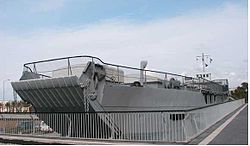
| ||
| INS Gush Etzion (F-39) | July 1948 - 1957 | Originally tank landing craft LCT-256, also known as "Perto". It practiced landings on the shores of the Mediterranean Sea (1949) during training exercises. |

| ||
| 2 German tank landing crafts | Length 36 meters, width 10 meters, thrust 300 tons, 3 propellers, 10 knots. | ||||
| INS Yad Mordechai (P-25) | 1948 - 1957 |

| |||
| INS Beit Arava (P-33) | 1948 - 1957 | ||||
| 2 American amphibious craft | Length 48.5 meters, width 8.5 meters, displacement 387 tons, 2 propellers, 14 knots. | ||||
| INS Ramat Rachel (P-51) | December 30, 1948 - 1960 | Collection of war booty from the Sinai coast and the capture of the MiG-15 from the Lake Bardawil and the Battle of the Chinese Farm. | Hadar Kimchi Yehuda Ben-Zur Meir Lubochinsky |

| |
| INS Nitzanim (P-53) | December 30, 1948 - |

| |||
| 6 American Tank landing craft | Length 15 meters, width 4.3 meters, thrust 60 tons, 2 propellers, 11 knots. They were used to transport AMX-13 tanks. |
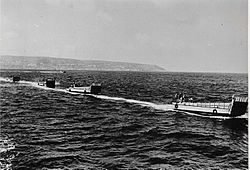 
| |||
| INS Machs (32,38 & 40) | Security patrols and Operation Kinneret |

| |||
| 4 Amphibious Assualt Ships | 1949 to 1967 | Two ships assisted by providing cover from the during the battle of Taba. Four ships assisted the 9th Brigade's advance along the Sinai coast. [198] | Gad Asher |

| |
| 3 36m Landing Crafts | length 36 meters, width 6 meters, displacement 122 tons, 2 propellers, 10 knots and can carry two tanks or five BTR APCs | ||||
| INS Etzion Geber (P-51) | March 1962 - 1982 | Participated in Operation Raviv Was transferred to the Mediterranean Sea during the First Lebanon War, was returned to Eilat for decommissioning, remained in Eilat and was used as a base for fish farming. It was transferred to Letron in October 2016 for conservation. [199] | Rabbi Chaval Yitzchak Aharonovich, Yosef Harari, Ehud Aral, Uri Sela, Israel Petchnik, Yigal Bar Yosef, Yaakov Abarshi, Shoki Bornstein, Mordechai Dekel, Moshe Miller |
 
| |
| INS Caesarea (P-53) | October 15, 1964 – March 1983 | Operation Raviv was transferred to Ashdod by land, returned to Eilat via the Suez Canal and transferred again to the Mediterranean Sea during the First Lebanon War | Yaakov Nitzan, Shmuel Shabach, Yosef Diamant, Shaul Horev, Yossi Levy, Hugo Shimron, Haim Markowitz, Gershon Neve, Yaron Goldstein, |

| |
| INS Shekmona (P-55) | May 13, 1965 – March 1983 | Operation Raviv | David Ezer, Aryeh Harel, Shmuel Sharig , Tsiki Hakhalai, Arie Amitai |

| |
| 3 60m Landing Craft | Length 60 meters, width 10 meters, displacement 730 tons, 3 propellers, 10.5 knots can carry 6 Centaurion tanks or 16 APCs |

| |||
| 'Tamsah (SG 20) | War of Attrition | An open barge consists of 20 floating units and is driven by two external engines. | Combat Engineering Corps (Israel) |

| |
| INS Ashdod (P-61) | March 23, 1967 - | The Six Day War and 1982 Lebanon War, sold for commercial use | Yaakov Nitzan, Yosef Harari, Avi Rothman, Moshe Levy, Nimrod Gilad, Michy Ringert, Danny Carmeli, Rafi Binyamin |

| |
| INS Ashkelon (P-63) | May 19, 1967 - | Six Day War, Shayetet 13 assault on Port Said in Operation Lady, sold to Eritrea | Yaakov Nitzan, David Ezer , Gabi Shilo, Amnon Tadmor, Nati Motoki, Omer Levbi, Udi Yoshua |

| |
| INS Akziv (P-65) | June 1967 - | Operation Birds of Eden, participated in the 1982 Lebanon War, later sold to Eritrea. | Shmuel Shevah, Shamai Bar-On, Reuven Paamoni, Avi Shaf, Omer Levbi, Udi Yoshua, |
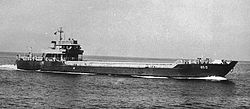
| |
| MS AMALIA | June 1967 | Temporarily leased from a Greek owner during Six Day War | R/H Rami Zolberg |
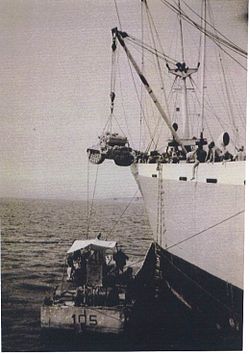
| |
| INS Bat Yam (T-83) | 1968 - | Originally a Dutch merchant ship, displacement 1250 tons, speed 10 knots, shot down an Egyptian plane during the Yom Kippur war. Sailed to South Africa and refueled a pair of Saar 2 ships in Operation Beauty | Rabbi Uzi Tzulof, Rabbi Aharon Marni, Mike Elder, David Atzmon, Moshe ben-Yashi, David ben Bashat, Yehoshua Marom, Raphael Zandberg |
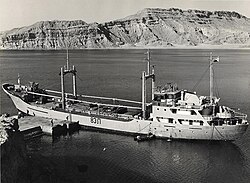
| |
| INS Bat Galim (T-81) | 1968 -1970 | Originally a Dutch merchant ship, length 80 m, width 16 m, displacement 2500 tons, speed 9 knots, crew 35 people, sunk by Egyptian commandos in the port of Eilat | Major Zeev Ariel |

| |
| 3 American LSM tank landing amphibious craft | Length 60 meters, width 10 meters, displacement 1095 tons, 2 propellers, 12.5 knots. Capable of sailing in the open seas that saw use in the World War. The tank deck is above the waterline, a high ratio of engine power to thrust, powerful pumps for transferring water to the bow tanks, a sharp bow front door and a separate long drawbridge. |

| |||
| INS Ofir (F-91) | 1970 - 1976 | Yom Kippur War | Arie Marmari, Yigal Bar Yosef, Zev Goldatsky, Moti Michaeli Raphael Zandberg |

| |
| INS Sheba (P-93) | 1970- 1976 | Uri Sela |

| ||
| INS Tarshish (P-95) | 1970 - 1973 | Later used as a housing unit |

| ||
| INS Bat Sheva (F-57) | June 1969 - 1990 | Length 95 meters, width 11.5 meters, displacement 1892 tons, 4 propellers, 11 Nozaite connection. Carrying capacity of 12 tanks Centaurion tanks in the warehouse deck and 24 APCs M-113 in the upper deck. Transported many forces during the 1982 Lebanon War. After retirement it was sunk in a naval exercise | Zvi Givati, Shaul Horev, Mike Elder, Chaim Geva, Aryeh Marmari, Yossi Levy, Marom Yehoshua, Mordechai Dekel, Danny Carmeli, Gershon Neve, Aharon Shapir, Yitzchak Cremona |

| |
| Gal-Noa A\M Dan | 1970 | Exercises |

| ||
| INS Bat Galim 2 | March 1978 - | Made in Japan, 96 m, width 19 m, 12 knots. Engaged in Operation Moshe and landed an armored combat vehicle in the 1982 Lebanon War | Major Aryeh Gabish, Major Ilan Bokhris, Major Uzi Tishel, Major Rafi Binyamin |
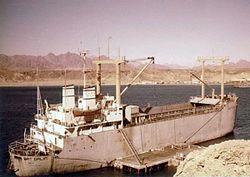
| |
| A/M Yasmin | Participated in 1982 Lebanon war for the landing of an artillery group in the port of Beirut [200] | Lt. Col. Udi Aral, R/H Micha Zand, Eli Yaffe |
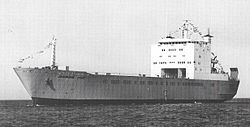
| ||
| INS Nachshon | August 2023 - present [201] | Israel-Hamas war |

| ||
| INS Kommiat | June 2024 - present [202] | ||||
Before the Israeli War of Independence the Palmach submitted a proposal to David Ben-Gurion in which the duties of the Israeli Navy were defined including amphibious assaults, reinforcement of operations, protection of coastal settlements, transportation of landing troops and vehicles, supply of fuel and equipment were included for which a specialised landing unit "Shayetet 11" was established. [203]
During the war, Nahariya was cut off from the rest of Israeli territory so the supply of troops and equipment to the isolated area was carried out by sea. On May 12-13, 1948, the 22nd Battalion of the Carmeli Brigade was transferred from the Port of Haifa to Nahariya. In addition, about 15 tons of supplies were transferred for the Hanita and Mitzva settlements , 3 tons of explosives and ammunition, 1000 gallons of gasoline and medical supplies. On May 14/15, 300 women and children, who were evacuated from the Western Galilee were evacuated to Haifa by the Flotilla. [204]
Operation Ben-Ami began on the night of May 14, 1948 with the occupation of Tel Acre. This occupation allowed the passage of the convoy that left the Ein al-Faretz to the north. The naval force of the Flotilla (transporting 22nd battalion of Carmeli Brigade) landed at 02:30 on the beach of Shebi Zion and began to attack the village of Samaria from the north. In the morning the force arrived at Nahariya. From there the force continued to the village of Aziv which was captured. [205] [206]
This operation was a planned naval landing on the coast of Lebanon. The operation was set to take place on June 9, 1948. On June 10, the troops boarded INS Hana Sanesh and set sail. When they were close to the target location in Lebanon, a cancellation order was received due to a truce about to take effect. [207]
During the Operation Death to the Invader Israel Defense Forces attacked Beit 'Affa by a company of the Flotilla and 54th battalion of the Givati Brigade. The naval unit advanced through a wadi from the north, hoping to surprise the Egyptians, but were in fact spotted while preparing to set up. At midnight, they emerged and attacked in two prongs, and despite heavy fire, managed to capture a frontal position and pushed ahead to the center of the village, setting up there and exchanging fire with the Egyptians. [208]
During Operation Horev a battalion of the Golani Brigade and personnel from Shayetet 11 launched a diversionary attack on positions near the Gaza- Rafah road, however the vessels of Shayetet 11 were not used and instead rubber boats were used due to convert nature of the operation. [209] [210]
During Operation Olive Leaves, Aharon Davidi's 771 Reserve Paratrooper Battalion as well as units from the Nahal Brigade and Givati Brigade commenced their attack. The complex operation involved a two-column attack from the north and south, which included both infantry and armored vehicles, as well as an amphibious assault conducted by troops of the Flotilla who crossed the sea by boat. [211] [212] [213]
During Operation Kadesh, three amphibious vehicles were sent from Eilat to Sharm-e-Sheikh with AMX-13 tanks on them . Additional landings were took place on the Gaza and Sinai coasts for logistical purposes including the seizure of an Egyptian MiG-15 that landed in Lake Bardawil.
During the Battle of the Chinese Farm Matt's brigade began moving to Tasa at 4:30 pm on October 15, before turning eastwards on Akavish. The paratrooper brigade faced problems in acquiring the boats and transports assigned to it. But they ultimately had to use the flotilla boats. [214]
Before the Six Day War, the Flotilla acquired new vessels from the budget allocated by the Finance ministry [215], following vessels were acquired
- INS Etzion Gebr (P-51) on March 2, 1962. First Commander Captain Yitzhak (Ike) Aharonovich .
- INS Caesarea (P-53) on October 15, 1964. First commander Yaakov Nitzan.
- INS Shikmona (P-55) on May 13, 1965.
- INS Ashdod (P-61) on March 23, 1967, its first commander was Major Yosef Harari, who was the commander of naval voyages.
- INS Ashkelon (F-63) on May 19, 1967, its first commander was Ya'akov Nitzan .
- INS Akziv (P-65) on August 1, 1967, its first commander was Major Shmuel Shabach.
Before the Six Day War the AMX-13 tanks were placed on the south coast and moved to the north of the gulf. The Flotilla vessels were also brought ashore and hidden in a wadi behind the base. [216]
During the Six Day War, the Flotilla in the Gulf of Eilat accompanied the Paratroopers Brigade on its way south, provided cover and even landed tanks in the Gulf of Sharm el-Sheikh. [217]
During Operation Raviv "Pinko" Harel's small force of about a hundred men, six Tiran 5s and three BTR-50s, landed on the Egyptian coast at 03:37AM on the morning of September 9. Delivered by three vessels of the Flotilla to a beachhead secured by Shayetet 13, Harel's force landed at El Hafair, 40 kilometres (25 mi) south of Suez and 20 kilometres (12 mi) south of the anchorage at Ras Sadat. [218] Laden with extra fuel and ammunition supplied by the Flotilla, the force headed south, wreaking havoc behind Egyptian lines and attacking installations along the way. The first of these was the Egyptian Army camp and radar site at Abu Darag, which by 07:17 had been secured. [219] [220]
In 1970, Egyptian naval commando carried out a sabotage operation at Eilat Naval Base and damaged a vessel of the Flotilla INS Bat Sheva lander sank the INS Bat Galim.
The Flotilla participated in the Operation Lady. On October 16, 1973, a group of Flotilla vessels led the Shayetet 13 to attack Port Said. The operation was carried out successfully and multiple Egyptian vessels were damaged or destroyed. [221]
The Flotilla participated in the Operation Green Light which was to carry out an amphibious landing on Egyptian Red Sea coast but the operation was aborted mid way. [222]
During the Operation Abirey-Halev, On the night of 15 October, 750 personnel of Colonel Matt's 55th Paratroopers Brigade crossed the canal in rubber dinghies. [223] They were soon joined by tanks and additional infantry transported via the vessels of the Flotilla. The force encountered no resistance initially and fanned out in raiding parties, attacking supply convoys, SAM sites, logistic centers and anything else of military value, with priority given to the SAMs. Attacks on SAM sites punched a hole in the Egyptian anti-aircraft screen and enabled the IAF to strike Egyptian ground targets more aggressively. [224] [225]
Three vessels of the Flotilla were transferred from Ashdod Naval Base to Eilat Naval Base by circumnavigating around Africa, It was codenamed Operation Birds of Eden. The first vessel left on August 20, 1974 and the last arrived on October 30, 1974. [226].
The flotilla vessels participated in the Lebanese Civil War to supply weapons and ammunition to the Christian phalanges forces in Lebanon usually by landing to the port of Junia.
The flotilla took part in 1978 South Lebanon conflict against militants on the northern shores of Lebanon , without landing troops. The vessels were used as carrier platform for helicopters that attacked targets on the Lebanese coast. [227]
The flotilla participated in the 1982 Lebanon War. On 6 June 1982, Israeli forces under direction of Defense Minister Ariel Sharon launched a three-pronged invasion of southern Lebanon in "Operation Peace for Galilee". Roughly 60,000 troops and more than 800 tanks, heavily supported by aircraft, attack helicopters, artillery, and missile boats, crossed the Israel–Lebanon border in three areas. Simultaneously, Israeli armor, paratroopers, and naval commandos set sail in amphibious landing ships from Ashdod Naval Base towards the Lebanese coast north of Sidon. Israel's publicly stated objective was to push PLO forces back 40 kilometers (25 mi) to the north. [228] An Israeli amphibious operation was conducted north of Sidon, beginning with a diversionary bombardment of targets away from the landing zone by missile boats and aircraft. Two groups of commandos from the Shayetet 13 naval commando unit then came ashore to probe enemy defenses and secure the landing site, one of which swam to the mouth of the Awali River and another which came ashore on the landing beach in rubber dinghies. After a brief gunbattle with armed Palestinians, the main landings began, with paratroopers coming ashore in rubber dinghies to establish a beachhead followed by three landing craft that unloaded troops and armor. Over the following days, the three landing ships moved between Israel and Lebanon, shuttling more troops and armor onto the beachhead. [229] [230] [228]
Givati Brigade and a battalion from Golani Brigade were specially trained to act along with flotilla in wartime situations. They were given necessary training to transfer armoured vehicles as well as to assist in transport of tanks.
In August 1993 all of flotilla vessels were taken out of service as they were deemed vulnerable and State-of-the-art fast landing craft were not defined as an operational necessity. So, some were sold to Eritrea while rest were sunk in naval exercises.
In May 2022 it was announced that the Navy decided to re-establish the amphibious fleet, following this the IDF purchased two LSV vessels which will be used by the Israeli Navy to conduct amphibious landings as well as to transport supplies. [231]
The flotilla is operated from Ashdod Naval Base. [231] The first amphibious vehicle, INS Nachshon , was delivered to the Navy in August 2023. [232] The second landing vessel, INS Kommiat , arrived in Israel in June 2024. [233] The squadron became fully operational in 2024 and participated in Israel Hamas war.
It is usually commanded by a single commander but from 1967 to 1978, the command was distributed between two sectors, one housed at Ashdod Naval Base while second at Eilat Naval Base. The dual command was abolished in 1978.
| Name | Service | Note | Photo | ||
| Israel Auerbach | 1948-9 | Establishment | |||
| Yitzhak Gazit | 1953 – 1955 | ||||
| Yehuda ben-Zur | 1955 – 1956 | Suez crisis | |||
| Gap in command | 1957 -1964 | The flotilla was closed | |||
| Baruch Brushi | 1964 – 1967 | Six Day War | |||
| Yosef Harari | 1966 - 1967 | ||||
| Shmuel Shabach | 1967 – 1968 | Command split | |||
| Aryeh Shafer | 1968-1970 | War of Attrition and integration of helicopters | |||
| Musa Levy | 1970-1972 | ||||
| Haim Raz | 1972 – December 1973 | Yom Kippur war | |||
| Mike Elder | December 1973 - August 1974 | Operation Bids of Eden | |||
| Yosef Yohanan | 1974 | ||||
| Micha Zand | September 1974 – May 1975 | ||||
| Yigal Bar-Yosef | June 1975 - 1977 | Aid operations for the Lebanese forces including landings on the beaches of Junia and in towing barges loaded with ammunition. | |||
| Emmanuel Dror | 1977 -1978 | The construction of Bas Dafna | |||
| Haim Lahav | 1978 - 1981 | ||||
| Mike Elder | 1982 – July 1983 | Second term, 1982 Lebanon war | |||
| Jacob Reva | April - July 1983 | ||||
| Dodo Iber | July 1983 - August 1985 | ||||
| Isaiah Patuka | August 1985- September 1987 | Integration of Givati Brigade | |||
| Rafi Binyamin | September 1987 - June 1989 | ||||
| Yigal Bar Yosef | July 1989 – 1992 | ||||
| Emmanuel Avraham | 1992 - August 1993 | Closure | |||
| Name | Service | Note | Photo | ||
| Major Shmuel Shabach | June-August 1967 | Establishment | |||
| Major Yosef Harari | August 1967- | ||||
| Major Miki Ra'anan | April-December 1968 | ||||
| Zev Yehezkali | 1969–1972 | The War of Attrition and Operation Raviv | |||
| Haim Geva | 1972–1973 | ||||
| Yossi Levy | 1973–1974 | Yom Kippur War | |||
| Musa Levy | 1974 | Operation Birds of Eden | |||
| Marom Yehoshua | 1976–1977 | ||||
| Mordechai Dekal | 1977-1978 | Abolishment | |||
- נחתות On the website of the Navy Association (Israel)
- 22nd Battalion Veterans Association, מבצע כתריאל והאניה חנה סנש, on the website of the battalion
- Pinchas Pick, הנחתות בין עזה לאל עריש, "Marine Systems", LA, December 1956, p. 56
- Benjamin Schiff הנחתות ירדו לשארם א שייך, 'Naval Systems' 37-38, The Decade File for the Navy, July 1958, p. 142
- M. Ron, נחתות במערכה "Marine Systems" Booklet No. 85-86, July 1967, pp. 49-50
- Uri Porat, נחתתי באל עריש "Marine Systems" Booklet No. 85-86, July 1967 pp. 51-52
- Yehuda Ben-Zur, פינוי תחמושת שלל מאל - עריש, 'Marine Systems' 62, December 1962, p. 8
- Yehuda Ben-Zur, שייטת הנחיתה במבצע קדש, "Marine Systems" 94, June 1969, pp. 25-22
- אלבום תמונות נחתות 2012
- Dear Jonah, נחתת הטנקים שלנו, 'Marine Systems' 62, December 1962, p. 28
- Shahar Landau, פה הימאים האמיתיים - מפקד נט"ק, "Between Waves" February 1979, p. 5.
- Merv Buschfen, יומם הגדול של הנט"קים - הנחיתה באוואלי, 'Between Waves' Special Issue 1, June 8, 1982, p. 3
- Shlomo Man, סגול כהה - גבעתי בנחיתה, between waves" 169 December 1986, p. 9.
- Yehuda Ben-Zur, פלגת נמ"כים במפרץ אילת מערכת סיני 1956 On the Navy Association (Israel) website, May 2006
- תרגיל נחיתה במפרץ אילת, אוגוסט 1973, Shaul Nagar, website Yad Leshryon, August 22, 2010
- Gideon Raz, האיגוף הימי בקרב היבשה Israeli Institute for National Security Studies Army and Strategy, Volume 3, Issue 1, May 2011
- "'"חיל הים לחטיבה 9', Heads of Chapters for Information to the Commander in the Navy, Chief of Staff Chief Officer Hanoch, Headquarters of the Navy Education, 1966, pp. 22-23.
- Yehuda ben-Zur, כלי הנחיתה במבצע קדש לתמיכה בחטיבה 9, 'Naval Systems' 94, June 1969, p. 23.
- Zvi Singer, "'הנחיתות שהקיפו את אפריקה'", issue 41 6/16/1976
- Eliezer Tal, "פעולות חיל הים במלחמה הקומוניסטית", Systems Publishing 1964. Second and expanded edition, published by the Navy Association 2002, pp. 60 62.
- David Maguri Cohen, on the operation of the amphibious landings in Eilat during the Six Day War. In his book "צעד אחד קדימה!", published by Efi Meltzer, pp. 77 - 80.
- Raphael Eitan and Dov Goldstein, רפול, סיפורו של חייל, Maariv Publishing. 1985, pp. 205 -302.
- Yorem Yair, 'אני מלבנון, חטיבת הצנחנים במלחמת 1933, Systems Publishing, 1992, pp. 21-32.
- Dov Rosenthal, "'Navy Vessel Album,'" Navy Headquarters Publishing House, 1992.
- Mike Elder, צי 13' סיפורו של הקומנדו הימי Maariv 1993 pp. 607-625.
- Mike Elder, 'Sheitat 11 - The Battle of the Shalesh, Maariv Library, 1996
| Mount Carmel Naval Logistics Base | |
|---|---|
| | |
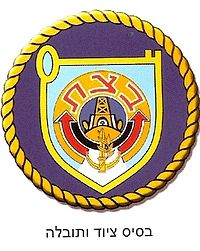 Coat of Arms | |
| Type | Logistics Base |
| Site information | |
| Owner | |
| Operator | |
| Garrison information | |
| Garrison | |
Mount Carmel Naval Base officially known as Betzat (formerly Yaschan) is the main logistical base of the Israeli Navy located near the Mount Carmel. It is responsible for all equipment and transport related activities of Israeli Navy.
The base was located in the Kishon camp from its early years, and on July 6 1999, its gradual transfer began to the "Hahotrim" camp south of Carmel Castle , which also houses the Navy's development center and the Haifa district headquarters of the Home Front Command.
It allows the navy to fight continuously without shutdowns. The base is responsible for the procurement, maintenance and supply of equipment and materials, on an ongoing basis, and for operational functioning. It is also responsible for material arrangements necessary for Shipbuilding. It also serves in weaponry and ammunition accountancy.
- Meir Shapir, יחידת המחסנים, "Marine Systems" 95, August 1969, p. 25.
- Rami Antian, חנוכת בסיס ציוד ותובלה, "Between Waves" September 1976 p. 1
- Ila Dukes, נפתח מועדון חיילים בבצ"ת, 'Between Waves' June, 1978 p. 2.
- Shlomo Man, עצמה בזכות השירות, 'Between Waves' January 1981 p. 14.
- Sharon Harpaz, סדר בבלאגן - בצ"ת, "Between Waves" 169 December 1986, p. 32.
- Father Obel, רובוטריקים עוברים דירה - מחשוב ומישכון בבצ"ת, 'Between Waves' 177 April 1989 p. 31.
- Jordan Gur, פרויקט מעבר בצ"ת מתוכנן ל-11 ביוני 2013, "Between Waves" September 2013, p. 16.
- Sapphire, על אוטומט - מהפיכה טכנולוגיסטית בזרוע הים, "Between Waves", May 2017, p. 51.
| Israeli Naval Shipyards | |
|---|---|
| | |
 Coat of Arms | |
| Type | Shipyard |
| Site information | |
| Owner | |
| Operator | |
| Garrison information | |
| Garrison | |
Israeli Naval Shipyards is the institution within the Israeli Navy concerned with Shipbuilding and repairs. Three shipyards (Haifa, Eilat and Atlit) and several naval workshops are under the command of this institution.
The roles of the shipyards are
- To maintain the vessels in operational conditions. [234]
- The upgrading of the operational capacity of the vessels by integration of more advanced technologies and changing body structure. [235]
- Mid-life overhaul of a submarines. [236]
- Reception of imported vessels. [237]
- Maintainence of the control system and the coast stations. [238]
| Name | Location | Designated occupation |
|---|---|---|
| Haifa Shipyard | West of Haifa naval base | Ship repairs and construction |
| Engine workshop [239] | near the Mount Carmel naval equipment base | Ship repairs |
| BHD 600 workshop | in Bat Galim near the BHD 600 | Electronic equipment |
| Atlit Shipyard | near the Atlit naval base | a workshop for Shayetet 13 vessels |
| Synchrolift workshop | near the Haifa naval base | Lifting of vessels |
| Eilat Shipyard | near the Eilat Naval Base | Ship repairs |
The professional infrastructure in naval engineering in Israel which was used by the navy in its establishment began in the British shipyard in Haifa which operated from the beginning of 1942 and served the British army in handling damaged vessels and adapting them to a military purpose in real time. [240] At the height of its activity, the shipyard employed about 1000 people. Father Khushi expressed its future importance in writing in one of the memos that appear in his archives : "It may be possible after the war to purchase all the equipment and the workshops and it would be appropriate for this factory to be transferred to a trust . "
At that time, World War II was at its peak. Most of the coast of the Mediterranean, except for Turkey and Spain, is under the control of the Axis Powers. The Allies held Egypt, Mandatory Palestine and later Syria and Lebanon. At the end of 1942, within the Haifa Port area, the PWD Public Works Department under the management of the Jewish engineer Peretz Willard Etx [241] erected three or four buildings, some of them made of concrete with tin roofs and some made of wood with tin roofs. The entire complex was surrounded by a high fence and the entrance to it was through a gate for pedestrians and a gate for vehicles identified as gate number 11. The area was highly classified and guarded. The British shipyard in Malta was responsible for the shipyard in Haifa. On December 25, 1942 , the shipyard was registered under the company Shipwrights & Engineers ME LTD. [242] [243] [244] [245] The purpose of this company was to conduct marine engineering business in the repair, construction and maintenance of steamships. The senior workers at the shipyard were brought from Malta and their terms of employment were according to the contract in Malta. In Haifa, technical personnel were recruited through the labor office of the Haifa Workers' Council and the employment office of the Arab sector. [246] The manpower was diverse and included carpenters, plumbers , engravers, solders and welders, metal workers, instrument makers, boiler makers, builders and general workers. In addition, manual workers were recruited for "beard scraping" jobs, etc., and most of them were day laborers . The payment to the simple day laborers was daily.
Inside the buildings that were erected for the shipyard were two halls where the maritime professionals worked and where they repaired parts of ships that were damaged. A floating probe was brought from Malta which was the only one in the port. From time to time, special work tools were brought from there to repair ships. The shipyard worked seven days a week on Saturdays and holidays and fully responded to the needs of the Royal Navy. In one case the shipyard converted a cargo ship into a passenger ship and the ship was the Tripolitania.
The shipyard's offices were located in Haifa at the offices of HAIFA SHIPPING AGENCY LTD on 82 Malkim Street in one of the Aziz Khayat buildings . One of the shipyard's employees was the engineer Levy, whose daughter Hana Levy worked in the shipyard's secretariat. The chief secretary of the shipyard was Rebecca Watson, the wife of Lionel Watson , the engineer of the city of Haifa. The engineer Aryeh Gutesman was the chief foreman. Aryeh Mehulel was the director of the labor department and his title was Chief Time Keeper, Aryeh who was a man of the Echelon was pulled from the shipyard by the CID, arrested at his home on March 2, 1944 and exiled to Eritrea .
On July 30, 1945, a notice was published in the official newspaper of the Palestine government (The Palestine Gazette in the English edition), issue number 1424, regarding the voluntary liquidation of the company and John Cuthbert Kochs was appointed liquidator. The floating test was returned to Malta.
The core of the professional workforce for the construction of the Israeli Navy shipyard infrastructure came from three professional bodies:
- The two workshops of the shipyards in Israel during the days of the mandate: Shipwrights & Engineers and Kirstein & Greenspon, headed by Herzl Greenspon.
- Yishuv volunteers for the British Royal Navy. [247] [248]
- Navy personnel from the American Navy [249] and the Royal Navy. [250]
A company Shipwrights & Engineers operated in Mandatory Palestine to repair ships of the British military fleet and the commercial fleet. The company ceased its activities in Israel at the end of World War II. The company employed professionals from the settlement who in this way acquired their experience working in ship repair and workshop management.
A new company, "Haifa Engineering Factories"- Kirstein & Grinshpon started operating in Israel. [251] Kirstein was a qualified engineer for marine engineering , who became the expert of the British Royal Navy in all naval ship repairs in the Middle East. [252] When the Shipwrights & Engineers left, the Israeli workers,, moved to the Kirstein & Grinshpon company, which developed and took over most of the shipping work in Israel. A large workshop was opened at the intersection of Sderot, Ha-Histadrut and Kfar-Ata. Before that, the name of this intersection was "Pilar Locomotive". After the War of Independence, Kirstein & Grinshpon entered into a partnership with " Soll Bona ", and "Hima" was established. [253] The "Hima" company was the precursor of "Israel Shipyards".
The Kirstein & Greensphon factory worked for the " Haganah", and its main work was in the production of mines , grenades , mortar bombs, mortars and armored vehicles. In addition, the factory built small naval vessels. [254]
During the Israeli war of Independence, the workforce at the Kirstein & Greensphon factory worked under economic lockout orders. During the day they worked in the factory, and during the night the workers went on guard and security duties. At the same time, as part of the effort to occupy the Hebrew labor in the Port of Haifa, the members of the port company arrived with Yohai Ben Nun and a group of professionals was formed in preparation for the process of converting the civilian ships of the Shadow Fleet into the first naval ships. From intelligence reports that reached the " Hagana" , they learned of the intention of the British, who were still in control of the port even though they had evacuated the country, to blow up the ships and close the port. This information reached Israel as early as 1946 but later proved to be false. [255]
Amidst fears that British authorities would sink ships in the port of Haifa, the shipyard workers took them out of the harbor and dismantled everything essential to the operation of the ship. The equipment was hidden somewhere in the port. The 'Wedgwood' and the ' Hagana' were steamships, therefore all the pressure gauges, the rudder, everything that could be disassembled was disassembled from them so that it would be impossible to take the ships out independently, but only to tow them. In this way, the possibility of drowning in the middle of the sea was neutralized. When the British left the port the ships were reassembled and smuggled out of the port, of which three large ships were of Eilat (a -16) class ,named the " State of the Jews ", the " Regius" and the " Hagana ". [256]
In 1957, Colonel Aryeh Kaplan "Kippi" saw that there was one old ship left in the port and it was the "Nevertheless". With the help of the anchor company and the naval shipyard, the ship was cut into 4 parts and was moved to its designated place as a museum. [252]
The initial recruitment for the Israeli Navy was conducted at 29 Jaffa Street by the head of personnel of the naval services, Shlomo Jacobson, [257] from the Yishuv volunteers for the British Royal Navy . Jacobson referred the navy volunteers to the navy, many of the Royal Navy personnel were professionals and with a background of an organized war navy and the initial technical avenue in the navy was formed. [258]
The naval shipyards were established at the initiative of Joe Novek, a Yishuv volunteer for the British Royal Navy. The beginning of the shipyard was at the intersection of Sderot al-Malikim and the German colony where the workshops of the British Public Works Department were situated. The first shipyard workers were Joe Novick and five Yishuv volunteers. The shipyard's initial equipment came from the collection of a variety of equipment from Arab workshops that were abandoned in Haifa during the Israeli War of Independence. The initial camp in the Haifa area was at Hoof Shemen and later he was located at the Haifa naval base in Bat Galim.
With the growth of the shipyard and the workshops, the need arose for a large and orderly building in the port. Warehouse building 4 was bombed by the Egyptians, therefore the Port Authority offered this destroyed building to the Israeli Navy as the shipyard site. The engineering personnel moved to the workshops in the Port of Haifa near the customs house in warehouse 4 near the entrance to the fuel dock. Most of the manpower was from civilian workshops and without an understanding of the professional organizational side of a shipyard as well as an understanding of the structure and requirements of a military shipyard. There was a shortage of manpower and Joe Novick realized that he would not accept soldiers for the shipyard, so he recruited civilians with relevant professions, who became civilian IDF workers at the shipyard.
Beyond that, there was a need to establish professional bodies such as electrical department, electronics department, ship hull workshop, damage control, carpentry, underwater work, instrumentation.
The following five officers [259] from the Yishuv volunteers to the British Royal Navy came to fill these positions :
- Benjamin Castle - mechanical engineer
- Halperin - construction engineer
- Lauterbach and Steuer - electrical engineers.
- Levin - chemical engineer
In addition, following volunteers also came:
- Shmuel Winterfeld - electrical trains for transport
- Izzy Moser - Israeli Navy officer
- Jacob Krauss - Ship Workshop
Dick Rosenberg came to the Electronics Division from the American Navy. He was trained as an artillery officer and was assigned to become a liaison officer [260] later a professor at the Technion in the Faculty of Industry and Management on the subject of behavioral sciences and Rusk who returned to the United States. [261] [262] [263] [264]
The engineering and inspection officer headquarters came from the Yishuv volunteers to the British Royal Navy such as Luther an electrical engineer, Messinger a mechanical engineer, Edmond Wilhelm Brillant a mechanical engineer, Thorpe an electrical engineer.
With the arrival of Paul Shulman, other professionals arrived from the American Navy and received appointments in the Israeli Navy, for example Jonathan Lev [265] an Annapolis graduate was entrusted with the naval gunnery. [266] Philip Strauss with the inspection of the machinery departments of the ships at sea and the engineering division on the shore, Haim Gershoni was appointed supervisor of shipyard operations and the position of corrections officer. [267] During the conversion of the qualifying ships into a makeshift war fleet, friction arose between Gershoni and Joe Novick. One of the cases that caused friction between Gershoni and Novik was the installation of cannons on the ships of the Shadow Fleet. Napoleonics were Italian cannons from 1912, these were the first cannons that were able to be bought in Italy at the end of 1948. [268] and these were the cannons that were assembled. Four such guns arrived, and they had to be mounted on the corvettes, 'Wedgwood' and ' Hagana'. The cannons were assembled from improvised materials found in Israel, and a week later the cannons were assembled. Due to the circumstances Gershoni left and later described this period in his autobiographical book "The Way it Was". [269]
Qualified engineers who were officers of the American Navy came from the American Navy . Among them Robert Allen [270] [271] who was a ship engineer certified by WEBB institute and MIT [272] in New York, decided to stay in Israel. He settled in Haifa with his wife and son and received Israeli citizenship. Alan advanced to the position of head of the naval architecture branch in the Ministry of Defense (Israel) at the rank of lieutenant colonel. In 1956 the family decided to leave Israel.
In 1950, the Navy wanted to invite Prime Minister David Ben-Gurion to the graduation ceremony of the recruits. The Prime Minister expressed his willingness to come but the security, ruled out the Palace Cinema for security reasons emphasizing arrangements in a Naval installation. So the shipyard built a hall measuring one hundred and twenty meters by thirty meters. The hall where the ceremony took place was called "David" barracks after the prime minister in whose honor it was built. [254]
During the Suez Crisis, a major operations of the shipyard was the transfer of torpedo ships on carriers from Haifa to Eilat. Moreover an Egyptian destroyer, Ibrahim Al Awwal was captured and towed to the Port of Haifa and was restored by the navy's shipyard and its name was K-38 AHI Haifa.
On the eve of the Six Day War, the shipyard very quickly finished the renovations of the destroyer Eilat [273] which returned to service after the INS Haifa K-38 had ceased to be active. [274]
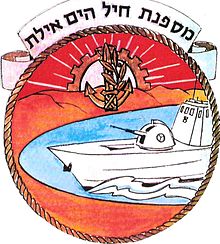
The branch of the shipyard in Eilat was established to serve the vessels in the Eilat Naval Base during the War of Attrition. In order to establish it, Lt. Col. Chaim Shtoyer was sent there.
On January 24, 1970, a disaster hit the Port of Eilat and the navy shipyard known as the ammunition truck disaster after the raid on Shadoan Island. In this disaster, 24 soldiers were killed, including 5 civilian shipyard workers. [275]
Lt. Col. Moshe Omen Oxman was appointed as the first shipyard commander in 1973 and established Mesha Synchrolift. [276]
In 1981, the shipyard repaired the hull of INS Geash, after the unwanted beaching on the Saudi Arabian coast. [277] The activity included salvage and flooding from the Saudi coast, towing to the Eilat Naval Base, shipping and repair to an operational condition. [278]
After the establishment of Shayetet 13, the research and planning division of the Weapons Development Authority , began a project based on sabotage boats that were manufactured in Italy and which were used to sink Emir Farooq. A new model passed the tests in Shipyard until March 1954 and in April of that year it was tested by the Navy and its production began. In 1956 the boats entered operational use in the Navy. [279]
After the integration of Shayetet 13 into the Navy, the Shayetet 13 shipyard was subordinated to the Naval Shipyard. [280] In 1958, bodies of pigs were developed by Lt. Col. Haim Shachel. The design was outsourced to the Orlight plant in Ness Ziona and in 1963 a molded fiberglass model was launched as a unified body and not composed of separate parts. [281]
Covert repairs and operations were also carried out in this shipyard. [282]
| order | Name | Command period | Note | Image |
|---|---|---|---|---|
| 1 | Joe Novick | 1948–1950 | First Commander | |
| 2 | Yaakov Shafi [283] | 1951–1957 | Integration of Worksops (such as Atlit) into the main body. |
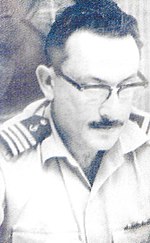
|
| 3 | Yosef ben Shmuel | 1957–1961 | Submarine refurbishments |
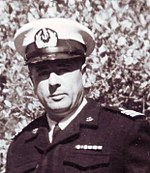
|
| 4 | Joshua Lahav | 1961–1964 |
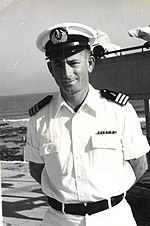
| |
| 5 | Alex Dotan [284] | 1964–1969 |

| |
| 6 | Sholoma Koren | 1969–1971 |

| |
| 7 | Emmanuel Yanai | 1971–1973 | Involved in Cherbourg Project |

|
| 8 | Baruch Vared | 1973–1976 |

| |
| 9 | Hanuch ben Eliyahu | 1976-1979 |

| |
| 10 | Alex Farran | 1979–1982 |
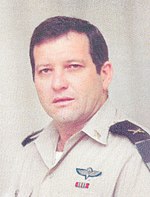
| |
| 11 | Yishi Harmati | 1982–1986 |

| |
| 12 | Gabai David | 1986–1988 |
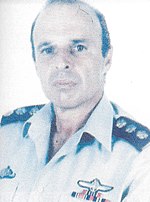
| |
| 13 | Abraham Neve | 1988–1991 |

| |
| 14 | Dani Shaham | 1991–1994 |

| |
| 15 | Adam Eisen | 1994–1997 |

| |
| 16 | Yossi Shemer | 1997-1999 |

| |
| 17 | Omari Degul | 1999–2002 | ||
| 18 | David Arbel | 2002–2005 | ||
| 19 | Danny Fox | 2005–2007 |

| |
| 20 | Eitan Zucker | 2007–2009 | ||
| 21 | Moshe Zena | 2009–2011 |

| |
| 22 | Eli Shokh | 2011-2013 |
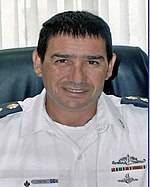
| |
| 23 | Yossi Ashkenazi | 2011–2015 |

| |
| 24 | Dodi Yosef | 2015-2017 | ||
| 25 | Flatty Schurtz | 2017-2019 |

| |
| 26 | Amir Chimani | 2019- August 2023 | ||
| 27 | Unclear | From August 2023 |
- Joshua, דע את המספנה Navy 8th Shebat 579, p. 20.
- להיות או לחדול - דיון על עתיד המספנה, Navy 8th Shebat 579, p. 21.
- Gershoni, המספנה / בשולי הדיון The Navy, 9 Adar 579, p. 37.
- על תרומת מתנדבי מח"ל מארצות הברית לחיל הים מאת דייוויד הנוביץ' מח"ל קצין מכונה מהצי האמריקאי
- God. tour, צי הצללים קם לתחיה, "Naval Systems" 37-38, The Decade File for the Navy, July 1958, p. 51.
- Grape Adam, כך שיפצנו אוניות, "Naval Systems" 37-38, The Decade File for the Navy, July 1958, p. 53.
- Haim Levy, מספנת חיל הים, "Marine Systems" n.d., July 1961, p. 26.
- Orly Azoulai, "מנועים מלא קדימה", 'Marine Systems' 110, November 1972, p. 40.
- Julie Falterer, פרס עובד צהל מצטיין לאיש מספנה, 'Between Waves' March 1976, p. 5.
- A. Lish, חיל הים שיפץ לראשונה צוללת, 'Marine Systems' 61, September 1962 p. 3.
- על חברת אימקו תעשיות בע"מ
- רשימת מקבלי אות יקיר התעשייה ע"ש אריה שנקר
- Avraham Maron, המחוגים חזרו לאחור - מספנת חיל הים, "Marine Systems" Booklet No. 85-86 July 1967, pp. 14 - 19.
- Meir Shapir, במספנה, "Marine Systems" 95, August 1969, p. 18.
- Meir Shapir and Aryeh Doblin מספנת חיל הים 'Marine Systems' 102–103, March 1971, p. 46.
- על מספנות SwiftShip בארצות הברית
- הטיל גבריאל הקדים את תפיסת הסטי"ל סיקור באתר פרש
- Sharon Harpaz, מספנת חיל הים חוגגת 36 שנה להיווסדה, 'Between Waves' 162 July 1984 p. 38.
- Raanan Czerbinski, מספרה לחיילות המספנה וגם אומנות הציור של ינינה פטליצקי, 'Between Waves' 167 April 1986 pp. 17 and 55.
- Raanan Charbinski and Ruthie Rodner, "מהצד של האין מנוע" - הע"צים של מספנת חיל הים, 'Between Waves' 173 March 1988 p. 23.
- Father Obel, חנוכת בנין הידרו מכני וקורס מנהלי מחסנים, 'Between Waves' 177 April 1989 p. 11.
- Hana Yanai, מספנת חיל הים לדורותיה, Navy Publishing House, 1998.
- Aryeh Kiesel, בלעדיהם אף ספינה לא שטה, "Bin Galim" celebratory jubilee issue October 1998, p. 54.
- Father Obel, המספנה, "Between Waves" issue October 1, 2001 p. 20.
- Shimon Alterman, מצטיין ההיי טק ממספנות חיל הים - אעצ בני כהן תכנת בכיר, "Between Waves" issue October 1, 2001 p. 86.
- Yitzhak Aviel and Lior Nagar, סוד הכוח של מספנת חיל הים, "Between Waves", January 2014, p. 58.
- David Bar Yosef, צוות לעניין אנשי המספנה בעת חירום, "Between Waves", October 2014, p. 87.
- Shaked Tobis, תג משקף DNA למספנת חיל הים, The IDF recruits website, December 12, 2021.
| 157th Squadron IAF | |
|---|---|
| טייסת 157 | |
 Logo of the Squadron | |
| Active | 2006 – present |
| Country | |
| Allegiance | |
| Branch | |
| Type | Unmanned Aerial Vehicle Squadron |
| Role | Electronic Warfare |
| Garrison/HQ | Ramat David Airbase |
| Nickname(s) | Within the valley |
| Motto(s) | And today I will fuse the city with a fortress and an iron pillar for copper walls throughout the land |
| Aircraft flown | |
| Unspecified UAVs | |
Squadron 157 , also known as Squadron in the valley [285] [286] [287] [288] is a squadron in the Israeli Air Force at the Ramat David Airbase, specialised in Electronic Warfare.
The unit was established in 2006, at the outbreak of the Second Lebanon War , from the merger of Squadron 153 and Squadron 557. The squadron participated in the Second Lebanon War. [287] [289]

In May 2010, as part of the STS-132 mission of the Space Shuttle Atlantis , the warrior pin of Tal Ramon (son of Col. Ilan Ramon) who served in the unit was flown to the International Space Station and released into space in his name and in memory of his father, who perished as part of Space Shuttle Columbia disaster. [290].The pin was photographed against the background of outer space . A copy of the pin and a certificate of authenticity were given to the commander of the unit, in the commemorative corner of the squadron, at the Ramat David Airbase.
In December 2010, during the 2010 Mount Carmel forest fire, the squadron played a key role in coordinating ground units as well as Aerial firefighting. [291]
As a combat operational unit, the squadron and its soldiers are frequently adopted by various bodies in Israel and around the world, as part of the "Adopt a Battalion" project so it was adopted in 2014 by the CFO Forum , [286] and in 2015 by the Friends of the IDF organization. [285]
The squadron is currently stationed at the Ramat David Airbase [292] [293] [294] [291] and is a specialised squadron for electronic warfare utilising Unmanned Aerial Vehicles [295] [289]
- Lt. Col. Eran Giladi (2006-2009). [289]
- Lt. Col. Assaf (2010-2013). [291]
- Lt. Col. R. (full name redacted) (2013-). [293]
- Rest of the names are redacted due to security concerns
The motto of the squadron is "And today I will fuse the city with a fortress and an iron pillar for copper walls throughout the land", which refers to verse 18 of chapter 1 of the Book of Jeremiah.
- מיקום היחידה, שמה וסמלה - Amir Segev, founder and editor of the airport website
- מרקיע שחקים
- אתר nrg
- The Air Force website, in the "Army and Security" forum on Fresh website.
- "לראשונה: בנות המדרש ישמשו כמפעילות ל.א". Israeli Air Force (in Hebrew). November 30, 2014.
249 Squadron is an Aerial firefighting unit of the Israel Fire and Rescue Services operated by Israeli Police. It was established in 2011 as an Israeli Air Force squadron. It is nicknamed "Elad Squadron" after a late 16 year old firefighter of the Israel Fire and Rescue Services.
| 249th Squadron | |
|---|---|
| טייסת 249 | |
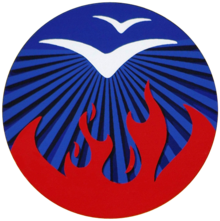 Logo of the Squadron | |
| Active | January 2011 - present |
| Country | |
| Allegiance | |
| Branch | |
| Type | Aerial firefighting squadron |
| Role | Aerial firefighting and reconnaissance |
| Garrison/HQ | Sde Dov Airport |
| Nickname(s) | Elad Squadron |
| Aircraft flown | |
| Helicopter |
Air Tractor AT-802F Airbus H-125 Aquarail Airbus H-145 |
In 2010 Mount Carmel forest fire took place , which was a turning point that led to a change in the face of the firefighting system in Israel. Until this fire, the firefighting system was built in a decentralized manner under local authorities and city associations under the responsibility of the Ministry of the Interior. Despite many complaints about a continuous shortage of equipment and personnel and despite advices that indicated that the firefighting system should be nationalized, the advices were not implemented and the main firefighting and rescue body in Israel continued to become obsolete and accumulate gaps.
In the field of aerial firefighting, the firefighting services until 2000 were based on the Israeli Air Force , which operated Sikorsky CH-53 Sea Stallion Yassor helicopters for firefighting purposes using portable water tanks . After it was found that this form of work causes damage to the rotor and chassis of the helicopter, the Israeli Air Force's activity was stopped and transferred to private companies that provide agricultural spraying services (first the Chem-Nir company and then the Talm company) who provided this service in a contract under the command of the fire services.
After the fire in Carmel, as part of the lessons learned from the disaster, a decision was made to establish a firefighting squadron in the Israeli Air Force.
On December 7, 2010, even before the formation of the squadron, Prime Minister Benjamin Netanyahu announced that the firefighting squadron that the State of Israel will establish will be called the "Elad" squadron, after Elad Rivan, a 16-year-old firefighter from Haifa , who perished in the disaster while together with the fire team he worked. [296]
In early 2011, the Israeli government approved the transfer of the firefighting system from the Ministry of the Interior to the Ministry of Defense and the establishment of an aerial firefighting squadron.
In January 2011, the Government of Israel decided to establish an aerial firefighting squadron for the State of Israel. Since the Israeli Air Force was the only body that had the knowledge and experience to establish a squadron out of nowhere, the task was assigned to it. In a tender published by the Ministry of Defense, Elbit Systems won, so the government purchased firefighting planes and hired the Chem-Nir company to carry out the task.
The Israeli Air Force, which was the guiding professional body, established the 249 Squadron - Firebirds which had a belief in building combat theory for firefighting from the air and directing the firefighting pilots from the ground. The firefighting pilots of the Chem-Nir company carried out the actual firefighting operations, in accordance with the instructions and procedures of the Israeli Air Force.
The base of the firefighting squadron was determined in Sde Dov Airport. Also, two main airstrips were determined from which the firefighting planes took off. The Megiddo runway in the north and the Kedama runway in the south. In just four months, 8 firefighting planes were purchased and the foundation stones for a firefighting squadron in the State of Israel were laid.
On January 5, 2015, Elbit Systems Company, which received from the Ministry of Defense the contract for the purchase of the planes and the operation of the firefighting squadron, announced the signing of a contract that will be spread over eight years and will also include payment for flight hours, infrastructure upgrades, maintenance, operation of runways, treatment of flame retardant materials and other aspects of Activation of the squadron. As part of this contract, Elbit Systems purchased 6 more firefighting planes, thus increasing the total number of the squadron planes to 14. [297]
After the formation of the squadron and the laying of the foundations for its operational work it was decided to transfer it to Israeli Police (to provide services to Israel Fire and Rescue Services) [298]
On November 1, 2016, responsibility for operating the squadron was transferred to the Israeli Police.
The squadron participated in the firefighting operations during the November 2016 Israel fires.
On January 19, 2017, at the end of five and a half years of operational activity in the Air Force, the Air Fire Unit moved to operate under the Israel Police Air Unit officially, in a solemn ceremony held at the Megiddo Airstrip. [299]
During the 2018 Gaza conflict, the squadron was deployed to put up the fires near the perimeter fence around the Gaza Strip as a result of sending incendiary kites. [300]
During 2019, the unit's personnel made 200 sorties and dumped 700,000 liters of water and flame retardants to put out fires. In addition to the extinguishing operations, the members of the unit assisted the ground forces in directing and mapping burn areas.
Firefighting planes from the squadron helped put out fires that broke out in various locations in Israel due to heavy heat in May 2020, carrying out more than a hundred sorties . [301]
Firefighting planes from the Elad squadron assisted in putting out fires in Cyprus in July 2021 [302] and in Greece in August 2021. [303] Firefighting planes and several helicopters were involved in putting out the 2021 Israel wildfires.
The operation of the unit is determined in the following configuration:
- The " Elbit Systems" company, which won the tender with the Ministry of Defense, is responsible for the operation and maintenance of the aerial firefighting planes
- Chem Nir, a subcontractor of Elbit Systems, is responsible for providing pilots, mechanics and civilian ground crews.
- Israeli Police - responsible for air management.
- Israel Fire and Rescue Services - the operational activities are coordinated under the Israel Fire and Rescue Services
The squadron operates:
- 14 Air Tractor AT-802F firefighting planes
- 4 Airbus H-125 Aquarail helicopters
- 2 Airbus H-145 helicopters
- יחידת הכיבוי האווירי, on the website of the Israel Fire and Rescue Services
- "יחידת כיבוי מבצעית". Israel Air Force (in Hebrew). 12 May 2011.
- "מה בוער?". Israel Air Force (in Hebrew). 3 March 2015.
| Red Baron Squadron | |
|---|---|
| טייסת הברון האדום | |
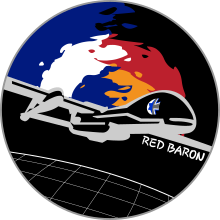 Logo of the Squadron | |
| Active | January 28, 2019 – present |
| Country | |
| Allegiance | |
| Branch | |
| Type | Training Squadron |
| Role | Training German and Israeli operatives |
| Garrison/HQ | Tel Nof Airbase |
| Aircraft flown | |
| Trainer | IAI Eitan |
The Red Baron Squadron is a squadron in the Israeli Air Force , which operates " Eitan " type UAVs from the Tel Nof Airbase . The squadron was established on January 28, 2019 [304] as part of an agreement between the Israeli government, the aerospace industry and the German Army. [305] The squadron's role is to train Israeli and German pilots as operators of the Eitan UAV, until the end of the development of the UAV of the German Air Force (variant of the "Eitan"), and then to train them directly on the German UAV. [306]
The value of the agreement between the countries is estimated at approximately 900 million Euros , under which the German Air Force will lease seven UAVs for a period of nine years [305]. Five of the UAVs will be used for operational purposes and two more for training and training [305] [307] In addition to the lease agreement, a contract in the amount of 170 million euros was decided on for the use of the airport and airspace [305].
The squadron is named after Manfred von Richthofen , a German fighter pilot and fighter pilot during World War I. Manfred, who was identified with a red " Fokker Dr.I " three-wing plane, in addition to being Freiherr (the German equivalent of the title " Baron "), was nicknamed "The Red Baron". The name of the squadron was proposed by the Israeli side of the agreement, marking the legacy of the battle of the Red Baron. [307]
In November 2020 , Germany's military attaché in Israel, Colonel Jürgen Hefner, awarded the Cross of Honor to the first squadron commander, Lt. Col. Y (name kept secret). [308]
he:טייסת 193
193 Squadron (Israel)
| 93rd Squadron IAF | |
|---|---|
| טייסת 193 | |
 Logo of the Squadron | |
| Active | August 12, 1987 – present |
| Country | |
| Allegiance | |
| Branch | |
| Type | Naval Aviation |
| Role | Performing Aviation services for the Israeli Navy |
| Garrison/HQ | Kanaf Ramat Air Base |
| Nickname(s) | Defenders of the West |
| Motto(s) | "In the air, at sea and on land" |
| Aircraft flown | |
| Helicopter | Eurocopter AS565 Panther |
he:טייסת 113
113 Squadron (Israel)
On October 7 2023, hours after the start of the Israel–Hamas war, the United States started sending warships and warplanes into the region, prepared to give Israel whatever it needs. [309] Israel asked the United States for Iron Dome interceptors, and President Joe Biden said Washington would quickly provide additional equipment and resources, including ammunition, which are going to reach Israel within days. US Secretary of State Antony Blinken said Washington would provide its "full support" to Israel, with guided missile launchers and F-35 fighter jets among the equipment being sent. [309] On October 12, Biden administration started preparing an aid package of about $2 billion in additional funding to support Israel. [310] On October 14, the Pentagon had dispatched a small team of Special Operations personnel to Israel for intelligence gathering. [311] On October 15, the White House declared that it would attempt to get congressional approval of a fresh $2 billion weaponry aid package for Israel and Ukraine. [312] By October 17, five shipments of American weapons and equipment had arrived in Israel. [309] On October 20, Biden announced that the additional funds he asked Congress to authorize would come to a total of $14 billion, as part of a $105 billion military aid package that addressed Ukraine, Taiwan and Israel as well as US border security. [313]
In November, a Republican plan was approved by the United States House of Representatives that allocated $14.5 billion in military aid for Israel.
By December US had supplied 15,000 bombs and 57,000 155mm artillery shells, mostly carried on C-17 military cargo planes. U.S. has also sent more than 5,000 unguided Mk82 bombs, more than 5,400 Mk84 bombs, about 1,000 small diameter GBU-39 bombs. [314] On December 8, Biden used emergency authority to skip congressional review to sell ~14,000 tank shells worth $106.5 million for immediate delivery to Israel. [315] On December 29, the United States government again used emergency authority to sell Israel artillery shells and related weapons worth 147.5 million dollars in order to replenish Israeli weapons stockpiles. [316]
In February the Senate passed a $14 billion USD aid package for Israel. [317]
By March US had approved more than 100 arms sales to Israel. [318] On 30 March, the White House authorized $2.5 billion in weapons transfers to Israel. [319]
In April, Biden signed a $95bn security package which included around $17bn in military aid for Israel. [320]
On 16 May, Biden notified Congress about a $1 billion arms sale to Israel. [321] On 21 May, the U.S. House passed legislation that would slash the U.S. military budget unless Biden sent 3,500 heavy-duty bombs to Israel. [322]
In June, the United States officially signed a Letter of Offer and Acceptance, allowing Israel to purchase 25 additional Lockheed Martin F-35 stealth fighter jets for $3 billion dollars. [323] Also in June, Rep. Gregory Meeks and Sen. Ben Cardin signed off to an arms sale to Israel totaling $18 billion, after pressure from the Biden administration. [324]
On 6 September 1965 , at 1 A.M , Major Shafqat Baloch was moving towards the assigned position along with 90 of his troops. The troops were moving carefully amidst reports of Indian incursions . All of a sudden there was a loud burst of a machine gun coming from a military post of the Pakistan Rangers. The Major issued orders to move towards the post and on the way, he met a Rangers troop who broke the news of Indian assault and the death of many from his unit including the Major. The Ranger was going to inform the higher command but their telephone was damaged.
Major order the troops to entrench themselves near the Ichhogil Canal. They heard the noises of Indian infantry and Tank regiments. Through outnumbered, the Pakistanis were determined to put up a resistance.
The Major climbed to a position from where he could observe the Indians, while waiting for the indian troops to come closer, an Indian sniper shot the Major injuring his left arm.
Major requested artillery support but the Battalion headquarters was hesitant over fears of Friendly Fire.
The Major told the coordinates to his CO Lieutenant Colonel Ibrahim and requested artillery fire.
Major directed the artillery precisely at the indian troops inflicting heavy casualties as they had no idea about Pakistani presence. Then the Pakistani Anti tank crews destroyed two indian tanks followed by a rigorous infantry assault. The Indians had no choice but to retreat.
Pakistani troops were able to establish a definite frontline halting the Indian offensive. On September 7, Major and his comrades were ordered to come back and partake in the Battle of Barki while Major Aziz Bhatti was dispatched to the BRB front.
Major was taken to the GOC Major General Sarfraz Khan and asked about the casualties to which he responded with 2 killed and few wounded.
General was surprised and not believing, so he asked the major to rest, to which major responded by politely replying "Sir you can count my men".
Major's actions stalled the front for 17 days till the ceasefire agreement was reached. For his act of valor , he was awarded Sitara-e-Jurat.
| Ashdod Naval Base | |
|---|---|
| | |
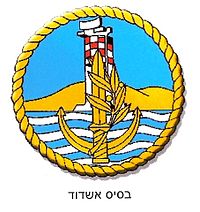 Logo of the base | |
| Type | Naval Base |
| Site information | |
| Owner | |
| Operator | |
| Garrison information | |
| Garrison | |
Ashdod Naval Base also known as Southern Arena of the Israeli Navy is a naval base located in the port city of Ashdod near the Port of Ashdod and plays an important role in the surveillance and blockade of Gaza strip as well as protecting the Port of Ashdod.
The construction of the permanent camp in the south of the port began in 1965. A temporary base was established in the port within a day. Lt. Col. Yekutiel Netz was appointed as the commander of the base. [325] [326]
Amphibious cruiser ships in preparation for the landing operation at El Arish beach were stationed there. During the Six Day War and after it, ships from the 914th Torpedo Squadron were attached to floats and received fuel and supplies from the base. [325] [326]
During the War of Attrition, the Israeli warships engaged with an Egyptian destroyer sinking the destroyer in about 25 minutes, this incident came to be known as Battle of Romani. The Israeli warships were directed from this base. [327]
The inauguration of the permanent camp of the Navy base in Ashdod was held on August 12, 1968. [328] The commander of the navy stated "the new base of the navy in Ashdod is a key to maintaining the ongoing security and sovereignty of Israel along the southern coasts from North Sinai to the entrances of Port Said". [329]
The Battle of Baltim was fought between the Israeli Navy and the Egyptian Navy on 8–9 October, 1973, during the Yom Kippur War between Baltim and Damietta. The Israeli warships that participated in the battle were stationed and co-ordinated from this base. [330]
In the early 1980s, Defense Minister Ariel Sharon wanted to bring the Navy closer to Gaza to save sailing time by moving the base to the city of Ashkelon. [331] The mayor of Ashdod, Zvi Zilkar, strongly opposed this, partly and the plan was ultimately cancelled. [331]
After the First Intifada and the creation of a Palestinian Authority in Gaza strip, five patrols boats were organised for regular patrols which number grew to be seven patrol boats. [332]
During the Israeli disengagement from Gaza, the base served as a major evacuation and transport hub for the evacuation of Israel Defense Forces personnel from Gaza strip. [333] [334]
During the Operation Summer Rains on June 26, the Israeli Navy imposed a naval closure of the Gaza Strip, to prevent Shalit being smuggled out by sea. The navy increased patrols of naval vessels along the Gaza coastline, and prepared for an attempt to smuggle Shalit out by boat, sending instructions to captains. Palestinian fast boats were banned from operating in the area, and only small Palestinian fishing boats were allowed on the sea. [335] These patrols were organised from this base.
The Blockade of the Gaza Strip starting in 2007 was organised from this base.
During the Gaza War (2008–2009) the Israeli Navy attacked Hamas' rocket launchers and outposts, command and control centers, a Hamas patrol boat, and the office of Hamas Prime Minister Ismail Haniyeh, using the Typhoon Weapon System and Surface to surface missiles. [336] [337] The navy coordinated with other Israeli forces and used powerful shipboard sensors to acquire and shell targets on land. [338] [339] Records of the attacks published by the navy indicate that for the first time vessels were equipped with Spike ER electro-optically guided anti-armor missiles. Videos of an attack showed precision hits from a Typhoon stabilizing gun despite a rolling sea. Versions of the Spike were also used by ground units [340] and possibly by helicopters or unmanned aerial vehicles. [341] Shayetet 13 naval commandos were also deployed to attack targets on land, [342] and reportedly attacked an Iranian ship loaded with arms for Hamas, which was docking in Sudan. [343] On 28 December, Naval vessels shelled the Port of Gaza. [344]
On 29 December, the Free Gaza Movement relief boat Dignity carrying volunteer doctors with 3.5 tons of medical supplies, human rights activists (Among them Caoimhe Butterly and former US Representative Cynthia McKinney), and a CNN reporter was involved in an altercation with Israeli patrol boats. The captain of the Free Gaza vessel said that their vessel had been rammed intentionally and that there had been no warning before it had been rammed. [345] An Israeli spokesman disputed this, and said the collision was caused by the Dignity attempting to outmaneuver the patrol boats after disobeying Israeli orders to turn back. [346]
On 4 January the Israeli Navy extended its blockade of the Gaza Strip to 20 nautical miles. [347]
Naval squadrons during the Operation Warm Winter were also coordinated from here. [348]
Throughout the war, the Israeli Navy employed Sa'ar 4.5 class missile boats of the Flotilla in addition to Super Dvora Mk III class patrol boats which were coordinated from this base.
On 31 May 2010, the Israeli Navy seized an aid convoy of six ships known as the "Gaza Freedom Flotilla". [349] aiming to break through the blockade, carrying humanitarian aid and construction materials. The flotilla had declined an Israeli request to change course to the Ashdod base, where the Israeli government had said it would inspect the aid and deliver (or let humanitarian organizations deliver) Israeli-approved items to Gaza. [350]

Israeli Shayetet 13 naval commandos boarded the ships from speedboats and helicopters launched from three missile ships, while the flotilla was still in international waters. [351] On the MV Mavi Marmara, the main ship of the convoy, passengers attacked and managed to capture three soldiers. [352] Israeli soldiers responded with rubber bullets and live ammunition from soldiers in helicopters and on the ship. Several of the activists were shot in the head by Israeli forces, some from behind and at close range. [353] Israel was accused of using disproportionate force. On other ships, soldiers were met with passive resistance which was easily suppressed with non-lethal techniques. Nine passengers were killed and dozens wounded. Nine soldiers were also injured, two of them seriously. All of the ships were seized and towed to Ashdod, while passengers were imprisoned in Israel and then deported to their home countries. [354] [355] [356] [357] [358] [359] The MV Rachel Corrie, a seventh ship that had been delayed, set sail from Malta on the same day of the flotilla's interception. Israeli naval vessels shadowed the Rachel Corrie, and after it ignored three warnings, Israeli commandos boarded the ship from speedboats, arrested the crew, and forced it to sail to Ashdod. [360]
Following the Gaza flotilla raid, a coalition of 22 NGOs assembled in July 2011 a flotilla of 10 vessels and 1,000 activists to breach the blockade.
The vessels docked in Greece in preparation for the journey to Gaza. However, the Greek government announced that it would not allow the vessels to leave for Gaza, [361] and the Hellenic Coast Guard stopped three vessels attempting to evade the travel ban and leave port. On 7 July, most activists left for home, leaving only a few dozen to continue the initiative. [362] On 16 July, the French yacht Dignite Al Karama was allowed to leave port after informing Greek authorities that its destination was Alexandria, Egypt. Instead, the yacht headed directly for Gaza. The Israeli Navy stopped the Dignite Al Karama about 65 kilometers off Gaza. After the boat was warned and refused to turn back, it was surrounded by three Israeli naval vessels and boarded by Shayetet 13 commandos, who took it over. The boat was then taken to Ashdod base. [363] Ultimately, the Freedom Flotilla sailing did not take place.
On 4 November 2011, the Israeli Navy intercepted two vessels heading towards Gaza in a private initiative to break the blockade. Shayetet 13 commandos boarded the vessels from speedboats and took them over with no resistance. The vessels were then taken to Ashdod base. [364]
During the Victoria Affair, the ship Victoria was seized about 200 nautical miles from the Israeli coast, while on its way from Turkey to El-Arish port in Egypt (other sources give the destination as Alexandria, Egypt). [365] According to the IDF, the ship picked up the cargo in the Port of Latakia in Syria and sailed to Mersin, Turkey. [366] The ship was intercepted by Israeli Navy missile ships, which radioed the captain and questioned him about his point of origin and planned destination, then informed him that his ship was suspected of carrying illegal cargo, and requested permission to board for an inspection. The captain agreed, and ordered the vessel stopped. Several minutes later, speedboats carrying commandos from Israel's elite naval unit, Shayetet 13, pulled alongside the ship. A ladder was dropped for them to climb aboard. The commandos boarded with their weapons at the ready out of concern that there could be Iranian or Hamas operatives on board. The commandos ordered the crew to assemble on the bridge, and then began inspecting the cargo. [365] The IDF said the ship's crew was unaware it was carrying concealed weapons. The ship was redirected to the Ashdod base for further inspection. After the contraband was unloaded, Israel announced it would release the Victoria and allowed it to continue its journey to the Egyptian port of Alexandria. [367]
During the 2014 Gaza War, Shayetet 3 off-shore fleet fired 3,494 naval shells, into the Gaza Strip [368] which was coordinated from this base.
During the Israel Hamas war, an estimated 35 fighters of Hamas' Nukhba unit were observed crossing into Israeli waters from the Gaza fishing zone during the Zikim attack. [369] [370] Col. Eitan Paz, commander of the Ashdod naval base, having been forewarned of the invasion by Gaza Division commander Avi Rosenfeld earlier in the morning, immediately ordered the forces under his command to defend the Israeli maritime border and prevent raids on the coast. [370]
Israeli sources stated that three of the boats were destroyed by patrol boats of the Israeli Navy's 916th Patrol Squadron from Ashdod naval base before they reached the shore, and sailors of the Snapir unit, the Israeli Navy's protection and harbor security unit, subsequently moved in on Defender-class boats and killed the survivors as well as Hamas divers they discovered with gunfire and depth charges. However, the remaining boat soon made it to Zikim beach. [370] [371] [372]
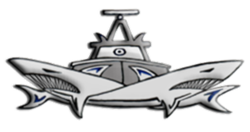
Patrol Squadron 916 is based in Ashdod base and its role is to provide mutual security - to continuously protect the country's maritime borders.Thw squadron operates Super Dvora Mk II-class patrol boats, Shaldag-class patrol boats and Unmanned surface vehicles.
The ships of the voyage are divided between four cruises, the Bezeq cruise , the Kasif cruise , the Trigon cruise , and the Shark cruise . Each cruise is commanded by naval officers with the rank of captain/major, a qualified vessel commander. [373]
It has a subunit called the 'Snapir unit' with the task of ensuring the security of the base. [77]
| Ashdod base commanders | |||||
|---|---|---|---|---|---|
| name | command period | Development and special events | Photo | ||
| Yokutiel Netz | May July 1967 | Establishment |
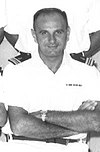
| ||
| Baruch Brushi | August 1967 – September 1969 | War of Attrition |

| ||
| Michael Barkai | September 1969 – August 1971 |
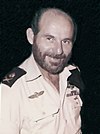
| |||
| Dov Ram | August 1971 – March 1973 |

| |||
| Eitan Lipschitz | March 1973 – March 1974 | Yom Kippur War |

| ||
| Joseph Elder | March 1974 – September 1976 |

| |||
| Mousa Levy | September 1976 – December 1978 |

| |||
| Arya Marmari | December 1978 – July 1979 |
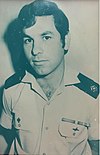
| |||
| Abraham Ashur | July 1979 – July 1982 |

| |||
| Ami Elon | July 1982 – September 1984 |
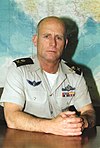
| |||
| Alex Tal | September 1984 – July 1987 |

| |||
| Uzi Livnat | July 1987 – July 1989 |

| |||
| Yossi Levi | July 1989 – May 1990 |
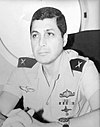
| |||
| Haim Gaesh | May 1990 - July 1992 |

| |||
| Cypress tree | July 1992 – August 1994 |

| |||
| Nir Maor | August 1994 – September 1996 |

| |||
| Zev Yanovsky | September 1996 – November 1998 |

| |||
| Slomo Frommer | November 1998 – March 2001 |
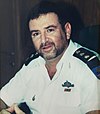
| |||
| Daniel Maoz | March 2001 – February 2003 |
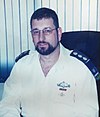
| |||
| Menachem Levi | February 2003 – September 2005 |
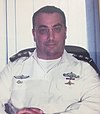
| |||
| Yoram Lex | September 2005 – August 2008 | Operation Summer Rains and Operation Warm Winter |

| ||
| Yaron Levy | August 2008 – February 2010 | Operation Cast Lead |

| ||
| David Sa'ar Selma | February 2010 – August 2011 |

| |||
| Dror Friedman | August 2011 – March 2014 |
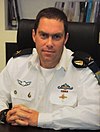
| |||
| Ido Ben-Moshe | March 2014-April 2016 |

| |||
| Guy Goldferb | April 2016 – July 2017 |

| |||
| Yoval Eilon | July 2017 – September 2019 |

| |||
| Amir Gutman | September 2019 – September 2021 |

| |||
| Eli Sohulitsky | September 2021 – August 2023 | ||||
| Eitan Paz | August 2023 – Present | ||||
- Batia Shem-El, בסיס חיל הים באשדוד, 'Between Waves' October 1975, p. 22.
- Shay Bandman, "'Time goes by fast here,'" on the control posts Erez and Tel Ridan, "Between Waves" July 1984, pp. 41-43.
- "'Ashdod 18 years'" - the story of the Ashdod base, between the waves, April 1986.
- Annie El Roei, Raviv Hadar and David Bar- בסיס לנוכח האויב - הקמת בסיס אשדוד, "Marine Systems" 86-85, July 1967, pp. 24-25.
- Uri Porat, בסיס אשדוד, 'Marine Systems' 104, July 1971, pp. 32–33.
- P. courage, על אנשים, ספינות ומלח – בסיס עין גדי, 'Marine Systems' 107–108, March 1972, p. 36.
- Orly Azoulai, חיל הים באגם המר, 'Between Waves' December 1973, p. 8.
- Orly Azoulai, על אנשים ספינות ומלח, 'Between Waves' April 1975, p. 18.
- Shlomo Man, סימן חיים בים המוות - בסיס עין גדי, 'Between Waves' March 159, 1983, p. 22.
- Shay Bandman, הזמן עובר פה מהר - יומיים בתחנות המכם הדרומיות, 'Between Waves' 162 July 1984 p. 41.
- Shlomo Man, מוסף מיוחד - ח"י לאשדוד, 'Between Waves' 167 April 1986 p. 25.
- Ruthie Rodner, נחה עליהם הרוח וגרמה להן להתקשר למצוף באשדוד, ' Galim. 170-171 June 1987, p. 23.
- Ruthie Rodner and Sigal Buchris, מ' על המים - מ' שנים לחיל הים - עצרת יום חיל הים תשמ"ח בקיסריה וגם יום החיל באשדוד, "Between Waves" 176 October 1988 pp. 1 and 4
- Sigal Buchris, ימי קרב בסיס אשדוד, 'Between Waves' 177 April 1989 p. 11.
- Sigal Buchris, בסיס אשדוד, 'Between Waves' 180 April 1990 p. 6.
- Ido Laur, הגבול הכי חם של ישראל, "Between Waves", 10, July 2006, p. 44.
- Nir Kosti, מח"ט הים מפקד בסיס אשדוד ירון בעופרת יצוקה, "Between Waves", May 2009, p. 42
- Tal Hefer and Rose Barel, חדשות חיל ים: מועדון חיילים חדש בבסיס אשדוד, Contributed by the Goldberg family of Toronto "Between Waves", December 2009, p. 12
- Raz Sharga, Ari Shabiv, Nateel Bandel and Rose Barel, "'Quiet takeover of the "provocation flotilla" and also "'Trends of dealing with maritime terrorism' and also "'Talking about the flotilla'", "Bin Galim", October 2010, pp. 36, 37 and 40
- Dario Nitzan יחידת הברטרמים באשדוד ובים המלח July 15, 2015 at the website of the Maritime Heritage Conservancy
- Annie Elroy, מבצע צוק איתן: עזה באחריותנו 24/7, וגם העיניים היפות של הגזרה, "Between Waves", October 2014, p. 33
- Dawn as a window, בסיס חיל הים אירח תלמידי ישיבות ההסדר Article in Ashdodent December 27, 2016
| 7th Flotilla | |
|---|---|
| שייטת הצוללות | |
 Coat of arms of Shayetet 7 | |
| Active | 1959-present |
| Country | |
| Branch | |
| Type | Submarine Flotilla |
| Size | 6 submarines and 300 personnel |
| Part of | |
| Garrison/HQ | Haifa naval base |
| Nickname(s) | 700 Club |
| Engagements |
Six Day War 1982 Lebanon War Sudan strikes Syrian Civil War |
| Commanders | |
| Current commander | Colonel Uri |
| Notable commanders | #Commanders |
| Insignia | |
| Service Pin |
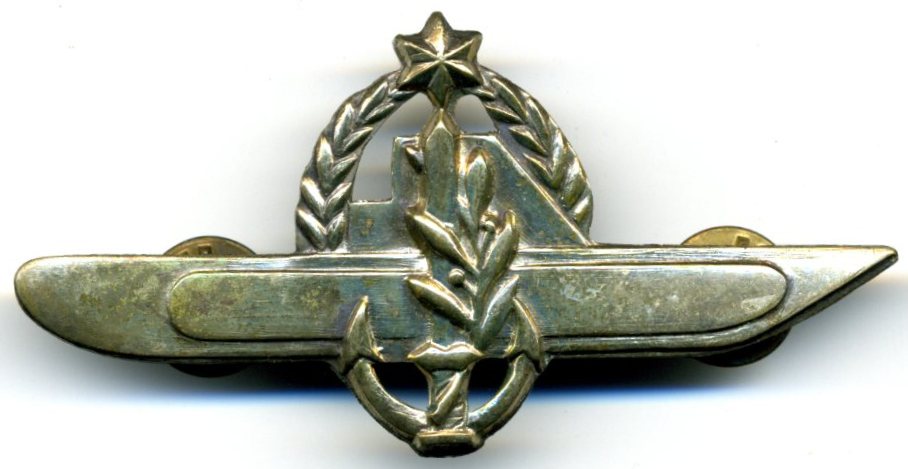 |
Shayetet 7 or Submarine Flotilla is the only submarine flotilla of the Israeli Navy. It is based in Haifa naval base and operates Dolphin-class submarines. It was established in 1959.
The service in the submarine fleet is difficult, challenging and often far from the country's borders, so the submarine crews have to be very cohesive. Another derivative of the great distance from the country's borders is that the submarine crew is operationally competent and ready for war at any time. [374]
Every operational mission of the submarine has a military doctor and a medic on board who have undergone special training to treat the wounded, including dealing with a multi-casualty incidents, deep under the surface of the water. In the absence of an emergency, the doctor who joins any operational mission also carries an intelligence role for everything, in which he is engaged throughout the mission as one of the combatants. [375]
| Class | Photo | Boats | Commission year | Origin | Notes |
|---|---|---|---|---|---|
| Dolphin class |
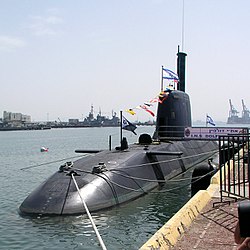
|
INS Dolphin,
[do̞lˈfin] (Dolphin)
INS Livyathan, [livjaˈtan] (Whale) INS Tekumah, [tkuˈma] (Revival) |
1999
1999 2000 |
Expected to be replaced with the Dakar-class submarines starting in the early 2030s | |
| AIP Dolphin 2 class |

|
INS Tanin,
[taˈnin] (Crocodile)
|
2012
2014 2023? |
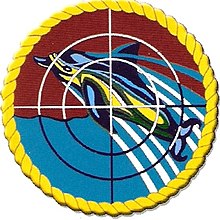
Two used S model submarines were purchased from the Royal Navy . These submarines were built in World War II , and refurbished in England for the Israeli Navy. An Israeli team that went through a training period in France and United kingdom was the crew for the first submarine and went through training under British supervision. The Flotilla was established on December 16, 1959 , when INS Tanin (C-71) entered the port of Haifa. [376] The second submarine, INS Rahav (C-73) , arrived at the shores of Israel in July 1960. [377]
During the Six Day War, the Flotilla participated in the Operation Alexandria in which INS Tanin (C-71) led six fighters from Shayetet 13 into action in the port of Alexandria . While waiting to collect the divers, the submarine was attacked by an Egyptian vessel and damaged. The next day she returned to the meeting place to collect but the divers had already been captured by the Egyptians. [378] [379] Multiple civilian ships were destroyed in this operation.
In 1965, Israel purchased 3 T submarines from the British Navy - Leviathan [380], Decker , and Dolphin [381] . The T submarines were larger and more sophisticated than the S submarines, but they were also outdated submarines from the Second World War period that had undergone a process of Upgrade and renovation. The submarines arrived after the Six Day War.
A submarine of the Flotilla INS Dakkar sunk on January 25, 1968 , on its way from Britain to Israel and all 69 members of its crew perished. The remains of the submarine and the place where it sank were only discovered in 1999. [382] [383]
The Flotilla did not take part in the Yom Kippur War due to maintainence issues.
Gal-class submarine entered the service in the Flotilla in the late 1970s, these small but agile and sophisticated submarines were continuously upgraded with newer systems to maintain their technological edge. They were somewhat unusual in that all boats of the class were at equipped with six-tube retractable Blowpipe surface-to-air missile launchers controlled from inside the boat, though these were later removed. [384]
The Flotilla participated in the 1982 Lebanon War and carried out Operation Dreyfus which was a military operation to locate and identify enemy ships using submarines . In June 1982 , during the operation, a Navy submarine hit a civilian ship carrying refugees , due to the suspicion that they were terrorists. 25 people were killed in the incident. [385]
Starting from 1999, the Dolphin-class submarines have continued to serve the Israeli Navy as a part of the Flotilla and are expected to continue their service till 2030.
In November-December 2011 two Israeli air raids against Gaza-bound weapon smugglers in Sudan were accompanied by Israeli submarine activity off the Sudanese coast. [386] [387]
On July 5 2013, during the Syrian Civil War Israeli missile strike against the Syrian port of Latakia, was made in coordination with the United States, and long range missiles were launched from a Dolphin-class submarine. The attack targeted newly unloaded Russian-made Yakhont long range high performance anti-ship missiles and associated radars. [388] [389] [390]
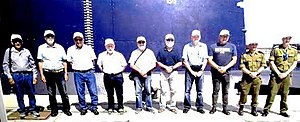
| Name | Period of office | Comments | Photo' [391] | ||
|---|---|---|---|---|---|
| Yosef Dror | April 1959 to April 1963 | First Commander |

| ||
| Hadar Kimchi | April 1963 - May 1968 |
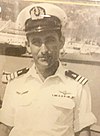
| |||
| Abraham Dror | 1968 - August 1972 | Holder of the Adoration of Courage for the Operation Alexandria |
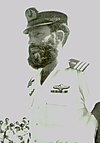
| ||
| Gideon Raz | June 1972 - August 1973 |

| |||
| Leshem Berg | 1973 - 1976 |
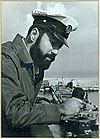
| |||
| Gideon Raz | January - October 1977 | Second term of office |

| ||
| Doron Amir | October 1977 - April 1980 |

| |||
| Shaul Horev | May 1980 - June 1983 |

| |||
| Michael Kisari | June 1983 - July 1987 |

| |||
| Haim Kfir-Kopert | July 1987 - July 1990 |

| |||
| Nir Maor | 1990 - 1992 |

| |||
| David Luria | July 1992 - March 1996 |

| |||
| Uri Distnik | 1996 - 1998 |

| |||
| Yoval Tzur | 1998 - 2001 |
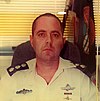
| |||
| Eyal Ben-Zion | 2001 - 2004 |

| |||
| Yonathan Vert | 2004 - 2006 |
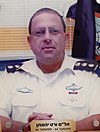
| |||
| Amit Farber | 2006 - 2008 |

| |||
| Oded Gur Lavi | 2008 - 2011 |

| |||
| Gil Aginsky-Peretz | 2011 - 2015 |
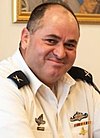
| |||
| Col. Doron | 2015 - 2016 | ||||
| Col. Assaf | 2016 - 2019 | ||||
| Col. Guy | July 2019 - July 2021 | ||||
| Col. Uri | July 25, 2021 - | Current commander of the flotilla | |||
- אתר שייטת הצוללות An unofficial website of the history of submarines in Israel.
- אגף שייטת הצוללות On the unit website - the IDF units website.
- Shamuel Tankos, עם רכישת הצוללות, "Marine Systems" 39-N, March 1959, pp. 4-5.
- Shmuel Tankos, פקודת יום לבוא אחי תנין, תפילת הדרך לצוות הצוללת, מעמקי התנין, "Marine Systems" MD, December 1959 p. 3.
- Zev Schiff, מדוע כדאי לשרת בצוללת, "Marine Systems" NA, January 1961, p. 10.
- Yosef Dror, דבר מפקד שייטת הצוללות, "Marine Systems" n.d., July 1961, p. 3.
- Uri Dan, עם תנין ורהב במצולות, "Marine Systems" n.d., July 1961, p. 4.
- Yohai ben Nun, בהנפת נס שירות פעיל על אח"י תנין, 'Marine Systems' 61, September 1962, p. 2.
- Yosef Dror, מפקד השייטת לאנשיו, 'Marine Systems' 61, September 1962 p. 2.
- Yosef Dror, מפקד צוללת לאנשיו, 'Marine Systems' 63, March 1963 p. 2.
- Eli Shaf הצוללות שבדרך, 'Marine Systems' 76, February 1966, p. 16
- That. Yosef, הצוללות - חלום שנתגשם. 'Marine Systems' 111 March 1973, p. 12.
- Shlomo Man, על ההרגשה האישית והחיים בצוללת המפליגה מתחת לפני המים, 'Between Waves' January 1981 p. 31.
- Remy Antian, בצוללת כאן הטבח הוא המפקד, 'Between Waves' June 1981 p. 10.
- Shlomo Man, הדור אשר לא ידע את דקר, 'Between Waves' March 159, 1983, p. 6.
- Aryeh Kiesel, זה לא לאנשים נורמלים צוללת, 'Between Waves' 162 July 1984 p. 16.
- Naama Toren, רק גמרו את הקורס נקלטים בשייטת הצוללות, 'Between Waves' 166 November 1985, p. 12.
- מנהגים ומסורת בשייטת הצוללות, "Between Waves" 181 August 1990, p. 51.
- Dror Gat, שייטת 7 בעידן החדש, "Between Waves", May 2009, p. 4.
- Raz Sharga, יובל להגעת אח"י תנין לישראל, "Between Waves", December 2009, p. 13
- Jordan Gore, שייטת הצוללות חוגגת 55 שנה ומתכוננת לאח"י תנין, 'Between Waves' May 2014, p. 28.
- Brith Almog, החלפת פיקוד בשייטת הצוללות - מדורון לאסף באוגוסט 2016 וגם נס שירות פעיל לאח"י רהב, "Between Waves", October 2016, p. 14.
- Gadi Yampel and Avital Rahavit, חשיפה תת-מימית - צוללות בחופי לבנון, "Between Waves", October 2016, p. 43.
- Oral Elhadad and Brit Almog טקס פרס הרמטכ"ל לשנת 2016 וגם סונאר חדש בצוללות חיל הים, "Between Waves", May 2017, pp. 9-10.
- Hi. Sutton, היסטוריה של הצוללות הישראליות On the Historian website May 20, 2017.
- שייטת הצוללות Lecture at Alfredo Forum September 2018.
- Adir Yizrif, טקס החלפת פיקוד שייטת הצוללות, the 'Hai Fe' website, July 19, 2019.
- Yitzhak Noy, על שייטת הצוללת בתוכנית שבת עולמית, Broadcast interviews with Hadar Kimchi, Shaul Horev and David Rotenberg, April 17, 2021.
- Amnon Gonen and others, הדבורים של שייטת הצוללות, October 2021
- שייטת 7 - סיפורו של צי הצוללות בחיל הים, in the framework of a global discussion with Yitzhak Noy, Israel Broadcasting Corporation, April 17, 2021
- Dan Arkin, הצוללת אח"י דרקון צולמה במספנה בקיל שבגרמניה, אמורה להגיע לחיל הים עוד השנה, Israel Defense, August 6, 2023.
- Ronit Zilberstein, מים שקטים חודרים עמוק: הצטרפנו למסע המסכם של חניכי שייטת 7, Israel today, August 17, 2023.
- תיעוד בלעדי: לוחמי הצוללות בפעילות מבצעית במרחב הצפון, October 14, 2023.
| 129th special motorized militia battalion (1990-1992)
10th separate battalion of the NGU (1992-1995) 17th separate special motorized battalion (1995-2014) 18th operational regiment of the National Guard of Ukraine (2014-2019) 12th separate operational brigade (2019-2023) | |
|---|---|
 Brigade Insignia | |
| Active | 1990-2023 |
| Disbanded | Late 2023 |
| Country | |
| Allegiance | |
| Branch | |
| Type | Brigade |
| Size | Five Battalions |
| Garrison/HQ | |
| Nickname(s) | Dmytro Vyshnevetsky Brigade |
| Engagements | Russo-Ukrainian War |
| Decorations |
 Courage and Bravery |
| Commanders | |
| Notable commanders | Colonel Denis Oleksiyovych Shlega Colonel Serhii Yevhenovich Sovinskyi Colonel Oleksandr Ivanovych Kryachko |
12th brigade of operational assignment (12 BrOP — military unit 3057) was military formation of the National Guard of Ukraine . It was part of the Eastern operational territorial association . Location — Mariupol , Donetsk Oblast. [392]
On January 18, 1990, the 129th special motorized militia battalion of the Internal Troops of the Ministry of Internal Affairs of the USSR (military unit 5509) was formed in Mariupol. [393]
On January 2, 1992, on the basis of the 129th special motorized police battalion, the 10th separate battalion of the NGU (military unit 1041) was formed, which was part of the 4th Northern Division . In 1995, the battalion was transferred to the Internal Troops of the Ministry of Internal Affairs of Ukraine and renamed the 17th separate special motorized battalion (military unit 3057).
In April 2014, the situation in the city of Mariupol became significantly complicated. Supporters of the self-proclaimed Donetsk People's Republic held systematic unauthorized rallies with attempts to seize state authorities, including the seizure of the Mariupol City Hall building. In the period from April 10 to 14, 2014, supporters of the DPR led by the so-called "people's mayor" Denis Kuzmenko and representatives of the force block of their security service repeatedly arrived at the checkpoint of military unit 3057 in order to persuade the command to submit to the leadership of the DPR and transfer weapons for their use. But after receiving a refusal, saboteurs blocked the checkpoint with wheels, sandbags and other objects. By the next morning, the remains of the barricade were removed with the assistance of the police. On April 16, 2014, servicemen of the 17th separate battalion under the command of Serhiy Sovinskyi [394] repelled an attempt to capture the HQ of the military unit. [140] At 20:00, a group of female protestors started an unauthorized rally at the gate of the unit. In this way, they distracted the attention of military personnel. The attack on the military unit began at 20:30. Protesters started throwing Molotov cocktails and tearing down gates. They demanded that the personnel hand over their weapons. Realizing that this would not bring success, they began to request reinforcements over the radio. The minibuses arrived in twenty minutes. Armed men in uniforms and balaclavas disembarked from them. A total of about 200 people started shooting with firearms in the direction of the unit. The shelling was carried out along the entire perimeter from nearby houses. [395] The servicemen of the 17th battalion opened fire first in the air, and then at the targets. [140] The personnel of the unit held the defense until midnight. At 24:00, all units of the Mariupol police arrived to help, and the cleaning of the adjacent part of the territory began. [395] At least 19 attackers were wounded, 3 of them fatally. [140]
In December 2014, unit 3057 was reformed into the 18th operational regiment of the National Guard of Ukraine , during the next four months, its ranks were replenished with servicemen from the "Azov" and "Donbas" special forces battalions .
Thus, in 2015, the regiment included:
- A patrol battalion [396]
-
 Donbas Battalion
[397]
Donbas Battalion
[397] -
 Azov Battalion
[398]
Azov Battalion
[398] - A Special patrol company [399]
- A Rifle company (reserve) [400]
On September 9, 2016, the "Donbas" battalion was transferred to the 15th regiment , which was stationed in the city of Sloviansk. [138]
In October 2019 , the regiment was reorganised as 12th separate operational brigade. [401]
The brigade took part in the Siege of Mariupol. [402] After the start of the Russian invasion of Ukraine on February 24, the brigade took up the defense in the city of Mariupol. On 16 April 2022, Russian forces captured the base of the unit, in western Mariupol. [403] Together with other units, the brigade defended the city until May 2022, until the final blockade of the Ukrainian troops at the Azovstal plant. On May 3, the brigade commanders reported on the catastrophic situation at the plant and called on the military-political leadership of Ukraine and the International community to evacuate all troops from the territory of "Azovstal". [404]
During the Siege of Mariupol, most of the troops of the Azov Regiment were captured, the remaining troops and the 12th Brigade were then reorganised into the 12th Special Purpose "Azov" Brigade. [405] [406]
On March 24, 2018, by decree of the President of Ukraine, with the 18th operational regiment was awarded the honorary title "name of Dmytro Vyshnevetsky" after Dmytro Vyshnevetsky. [407]
On October 27, 2022, the unit received the honorary award " For Courage and Bravery" by the decree of the President of Ukraine Volodymyr Zelensky. [408]
- Colonel Serhii Yevhenovich Sovinskyi (2014) [409]
- Colonel Oleksandr Ivanovych Kryachko (2014-2021)
- Colonel Denis Oleksiyovych Shlega (2021—2022) [410].
| Eilat Naval Base | |
|---|---|
| | |
 Logo of the base | |
| Type | Naval Base |
| Site information | |
| Owner | |
| Operator | |
| Garrison information | |
| Garrison | |
Eilat Naval Base is a major Israeli naval base situated in the Israeli coastal city of Eilat. It was established in 1949 and serves to be the sole Israeli Navy Base on the coast of Red Sea.
The main task of the base in Eilat is to maintain the security and peace of Eilat. The main activity in the city of Eilat is based on recreation and tourism, which include, among other things, about two hundred vessels moving in a relatively small maritime region. [411]
In the past this area was a meeting area between four conflicting countries: Israel, Egypt , Jordan and Saudi Arabia. However, today all the 4 countries are at peace. [412]
At the base operates the Patrol Squadron 915 , which operates the Dvora-class fast patrol boats and Super Dvora Mk III-class patrol boats.
The base was established in 1949 after the 1948 Arab-Israeli war to serve as a naval base at the point of junction with three hostile states.
During the Six Day War, the base played a vital role in the capture and occupation of Sharm El Sheikh.On 7 June, Israel began its attack on Sharm el-Sheikh. The Israeli Navy started the operation with a probe of Egyptian naval defences. An aerial reconnaissance flight found that the area was less defended than originally thought. At about 4:30 am, three Israeli missile boats opened fire on Egyptian shore batteries, while paratroopers and commandos boarded helicopters and Nord Noratlas transport planes for an assault on Al-Tur, as Chief of Staff Rabin was convinced it was too risky to land them directly in Sharm el-Sheikh. [413] However, the city had been largely abandoned the day before, and reports from air and naval forces finally convinced Rabin to divert the aircraft to Sharm el-Sheikh. There, the Israelis engaged in a pitched battle with the Egyptians and took the city, killing 20 Egyptian soldiers and taking eight more prisoners. At 12:15 pm, Defense Minister Dayan announced that the Straits of Tiran constituted an international waterway open to all ships without restriction. [413]. The entire operation was carried out from this base.
On January 24, 1970 at the Eilat base ,a truck loaded with ammunition exploded . As a result of the explosion, 24 people were killed, 17 of them on the spot, and seven died of their wounds in the days after the explosion, and dozens were injured. [414]
From the late 1990s, discussions began on the evacuation of the naval base in Eilat, in favor of the establishment of tourist projects and the further development of the Eilat beach strip towards the south. However, the realization of the project did not come to fruition for many years. In 1996 , the Ministry of Defense and the Navy Headquarters decided to close the Navy shipyard in Eilat. In the area of the shipyard, planning has begun for the establishment of tourist projects. [415] But in May 1997, the Minister of Defense, Yitzhak Mordechai , decided not to close the base. [416]
At the end of 2002 , a plan was drafted according to which the Ports Authority will manage a project that includes the expansion of the Eilat port and the relocation of the Eilat base into it. [417] In March 2003, the IDF, the Ports Authority and the Eilat Municipality agreed that the Navy base would be moved to Eilat Port and the area would be available for development. [418] But the project did not go ahead, due to a dispute over the financing of the plan. [419]
Operation Full Disclosure was a military operation carried out by the Israel Defense Forces on March 5, 2014, in the Red Sea. [420] After days of surveillance far out to sea, Israeli Navy Shayetet 13 commandos seized the Iranian-owned and Panamanian- registered merchant vessel Klos C that had set sail from Iran, heading for Port Sudan via Iraq. [421] On board, the commandos found long-range missiles suspected to be destined for the Gaza Strip concealed in containers full of Iranian bags marked as Portland cement. [422] The operation was carried out from this base.
The Red Sea crisis began on 17 October 2023. On 27 October 2023 two loitering munitions were fired in a northerly direction from the southern Red Sea. According to Israel Defense Forces (IDF) officials, their target was Israel, but they did not cross the border from Egypt. Of the two drones, one fell short and hit a building adjacent to a hospital in Taba, Egypt, injuring six; the other was shot down near an electricity plant close to the town of Nuweiba, Egypt. [423] [424] [425] A Houthi official later made a one-word post on Twitter after the drone crashed in Taba, mentioning Eilat. [426]
On 31 October an alert was triggered in Eilat, Eilot kibbutz and the Shahorit industrial park area regarding the penetration of hostile aircraft from the Red Sea. The aircraft was successfully intercepted over the Red Sea. The Arrow system intercepted a ballistic missile and the Air Force intercepted several cruise missiles fired from the Red Sea toward Eilat. The Houthis took responsibility for the launches. [427]
On 1 November at 00:45 the IDF intercepted an air threat fired from Yemen and identified south of Eilat. [428]
On 9 November, the Houthis fired a missile toward the city of Eilat. [429]
On 14 November the Houthis fired numerous missiles, one of which was aimed toward the city of Eilat. The missile was intercepted by an Arrow missile according to Israeli officials. [430]
On 22 November, the Houthis fired a cruise missile aimed toward the city of Eilat. Israeli officials said the missile was successfully intercepted. [431]
On 6 December 2023, the Houthi movement launched several ballistic missiles at Israeli military posts in Eilat including this base. [432]
By 21 December 2023, the Port of Eilat, which gives Israel via the Red Sea its only easy shipping access to Asia without the need to transit the Suez Canal, had seen an 85% drop in activity due to the Houthi action. [433]
On 2 February, the Houthis claimed that they had fired a ballistic missile towards Eilat. The IDF also said that the Arrow defense system intercepted a missile over the Red Sea. [434]
On 18 March, Yemeni Houthis launched a cruise missile that successfully struck Israel, reportedly hitting an open area north of Eilat. Israel stated there was no damage or injuries caused. [435]
On 21 March 2024, IDF also announced on the same day that it intercepted a "suspicious aerial target" approaching Israeli territory over the Red Sea. [436]
On 9 April, the IDF used a seaborne missile from the INS Magen to shoot down a UAV for the first time. The UAV, which came from the Red Sea, breached Israeli airspace and crossed into the area of the Gulf of Aqaba, setting off sirens in Eilat. [437] [438]
On 3 June, the IDF's Arrow defense system intercepted a surface-to-air missile aimed at Eilat from the direction of the Red Sea. [439]
On 3 November 2023 Islamic Resistance in Iraq claimed responsibility for a missile attack on Eilat. [440]
On 12 November 2023 Islamic Resistance in Iraq claimed responsibility for a missile attack on Eilat. [441]
On 31 December 2023 Islamic Resistance in Iraq claimed drone attack on Eilat. [140]
On 28 January 2024 Islamic Resistance in Iraq claimed a drone attack on Eilat. [442]
On 1 April 2024, Islamic Resistance in Iraq claimed responsibility for a drone attack on Eilat. The drone struck this base causing damage to a building and no casualties. [443] [444]
Multiple strikes were reported on 9 April 2024 [445],20 April 2024 [446],7 May 2024 [447],20 May 2024 [448] 23 May 2024 [449] and 27 May 2024 [448]
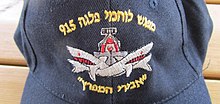
The squadron is divided into two units, the vessel fighters, who make up the bulk of the force, and the fin fighters.
Objectives of vessel fighters are
- Constant patrols in the seas of Israel.
- Identification of watercraft entering Israeli waters.
- Preventing smuggling through the sea
- Protecting national assets, such as drilling rigs.
- Various operations carried out alone, or with other units in and outside of the navy.
The objective of Fin fighters is the security of the base.
| The commanders of the base' [450] | |||
| Name | term of office | Remarks | Image |
|---|---|---|---|
| Abraham Luxemburg | 1949–1950 |
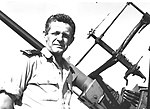
| |
| Unknown | 1950–1952 | ||
| Yosef Almog | 1952–1955 |
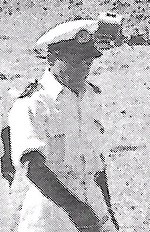
| |
| Unknown | 1955–1957 | ||
| Yehuda Ben-Zur | 1957–1958 | Chinese evaluation |

|
| Jacob Hamel | 1958 | ||
| Arya Barak | 1958–1959 |

| |
| Jacob Etzion | 1959–1960 | ||
| Menachem Cohen | 1960–1962 |

| |
| Yaakov Ritov | December 1962–1964 |

| |
| Lt. Col. Menashe Lifshitz | 1964–1967 | transferred from his command due to a complaint by the people of Eilat about the transfer of the families of the base staff during the war. |

|
| Avraham Butzer | during the period of Six Day War | The liberation of Sharm al-Sheikh |

|
| Yaakov Gilad | August 1967 to August 1968 |

| |
| Ezra Kedem | 1970–1972 |

| |
| Solomon beautiful | 1972–1973 | ||
| Zvi Paz | 1973–1974 |

| |
| Ephraim Sela | from the beginning of 1974 to the end of 1975 | Exchange of boats in barterams with beavers, rescuing a tourist on a boat that drifted to Aqaba carried out by a beaver |

|
| Moshe Oron | September 1981–September 1982 |

| |
| Ami Sarel | September 1982-May 1985 |

| |
| Udi Aral | May 1985–August 1988 |

| |
| Dodu Hayver | August 1988-May 1989 |
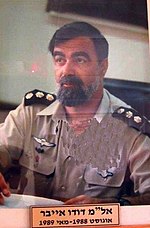
| |
| Yossi Israel | May 1989-July 1991 |
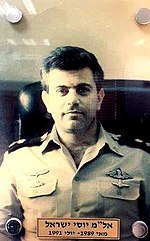
| |
| Aryeh Gabish | July 1991-July 1992 |

| |
| Udi Dvir | July 1992-July 1994 |
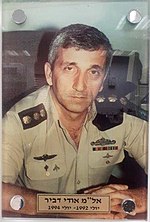
| |
| Shloma Cohen | July 1994–June 1996 |

| |
| Shlomo Frommer | July 1996-June 1998 |
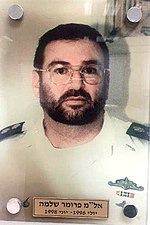
| |
| Ofer Dubnov | June 1998–October 2001 |

| |
| Yehuda Siso | October 2001–September 2002 | Seizure of drug boats |

|
| Yossi Shachaf | September 2002-September 2006 |

| |
| Lieutenant Colonel Oren Guter | September 2006-August 2007 |
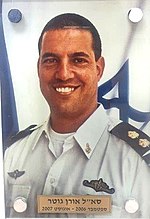
| |
| Chen Tal | August 2007-August 2008 |
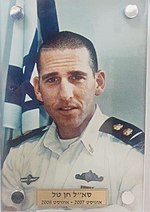
| |
| David Sa'ar Selma | August 2008–February 2010 |
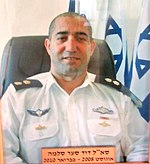
| |
| Lt. Col. Zvi Shahar | February 2010-August 2012 | ||
| Lieutenant Colonel Ilan Mintz | August 2012-2015 | ||
| Oren Nahabs | 2015-2017 | ||
| Ofir David | 2019-2017 | ||
| Tamir Shemesh | 2017- July 2021 | ||
| Lt. Col. Shay Khudara | June 2021– |

| |
- Zeev Fried, חיל הים כובש את מפרץ אילת, "Marine Systems" 11, December 1956, p. 54.
- Orly Azoulai, בסיס אילת פנים רבות לו, 'Marine Systems' 111, March 1973, p. 30.
- Batia Shem-El, מפגש אמנים בבסיס אילת, 'Between Waves', April 1974 p. 32.
- Giorgio concocted, שומרים על השקט בבריכה, 'Between Waves' 164 February 1985, p. 21.
- Aryeh Tal, ביקור ספינות נאטו בסיס אילת, "Between Waves", 8, May 2005 p. 10.
- sapphire paid, זירת ים סוף למען הסביבה, "Between Waves", May 2017, p. 16.
- Oren, Michael B. (2002). Six Days of War: June 1967 and the Making of the Modern Middle East. Oxford University Press. ISBN 978-0-19-515174-9.
- Oren, Michael B. (2002e). Six Days of War: June 1967 and the Making of the Modern Middle East (electronic ed.). New York: RosettaBooks. ISBN 978-0-79-532684-4.
| 3rd Flotilla | |
|---|---|
| שייטת ספינות הטילים | |
 Coat of arms of Shayetet 3 | |
| Active | 1962-present |
| Country | |
| Branch | |
| Type | Corvette and Missile boat Flotilla |
| Size | 15 Ships and about 1,000 soldiers and officers |
| Part of | |
| Garrison/HQ | Haifa naval base |
| Nickname(s) | Missile Ship Flotilla |
| Commanders | |
| Current commander | Colonel Eldad Borochovich |
| Insignia | |
| Badge |
 |
| Warrior pin |
|
The Missile Ship Fleet , or as it's officially called Shayetet 3, is the main surface combat force of the Israeli Navy . The fleet was established in 1967 and includes , 15 missile ships of the Saar 4.5 , Saar 5 and Saar 6 models . In addition, the Ahi Bat Yam auxiliary ship is under its command. It is the only fleet of Israeli Navy operating Surface vessels (as Israeli Navy only uses submarines and missile ships)
The cruise missions of the missile ships are derived from the mission of the Israeli Navy: "to give a safe coast and open navigation to Israel" . In times of war, the Navy's duties are naval warfare against the enemy's fleets, assistance to the ground forces, shelling of installations and traffic routes on the enemy's coast, securing the shipping lanes to Israel and protecting the country's beaches. [451]
Except in times of war, the fleet is assigned various tasks: operations to gather intelligence , regular security patrols against hostile sabotage activity and preventing the supply of weapons to terrorist elements and providing backup to ground forces in operational operations. In the 2nd decade of the 21st century , with the establishment of the drilling arrays and gas production, drilling: Tamar , Leviathan and Tanin in the Mediterranean Sea , the navy's missions were expanded and they also include security of the state's assets at sea.
| Class | Photo | Ships | Commission year | Origin | Notes |
|---|---|---|---|---|---|
| Sa'ar 5 [ˈsa'ar] (Tempest) |
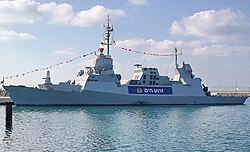
|
INS Eilat,
[ejˈlat] (
Eilat) |
1994 |
- | |
| Sa'ar 6 |

|
INS Magen
[maˈgen] (Shield) |
2020 |
| Class | Photo | Ships | Commission year | Origin | Notes |
|---|---|---|---|---|---|
| Sa'ar 4.5 |
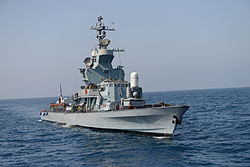
|
INS Romach,
[ˈʁo̞maχ] (Lance)
INS Keshet, [ˈke̞ʃe̞t] (Bow) INS Hetz, [ˈχe̞t͡s] (Arrow) INS Kidon, [kiˈdo̞n] ( Javelin) INS Tarshish, [tarˈʃiʃ] ( Tarshish) INS Herev, [ˈχe̞ʁe̞v] (Sword) |
1981
1982 1991 1995 1995 1998 2002 2003 |
|
The fleet is divided into four combat squadrons.
- Squadron 31 - Squadron of Sa'ar 4.5 : INS Tarshish , INS Herev and INS Sufa , INS Hetz.
- Squadron 32 - Another squadron of Sa'ar 4.5: INS Kidon and INS Yaffo , Achi Keshet , INS Romach and the auxiliary ship INS Bat Yam 2 , which is used for underwater detection.
- Squadron 33 - Corvette squadron of the Sa'ar 5 : INS Lahav , INS Hanit and INS Eilat.
- Squadron 36 - Corvette squadron of the Sa'ar 6 : INS Magen , INS Oz , INS Atzmaut and INS Nitzachon.
- Extra Auxiliary ship - An Auxiliary ship INS Bat Galim 3 , was sold to the government company Israel Seas and Lakes Research in 2015 , but the Navy retains the right to recruit for wartime service. [452]
The organization of the ship is done in four departments. Each department is headed by a naval officer in the rank of captain who reports to the ship's commander. The departments are: [453]
- GNK department - activates the detection and communication devices and creates a situational picture for the commander.
- Weapons department - operates and maintains the missile cannons.
- Electronics department - maintains the detection and communication devices and operates the electronic warfare means .
- Machine department - operates and maintains the engines and the electrical and hydraulic systems.
- Anti-submarine warfare - ships designed for anti-submarine warfare do not have a separate department. The means of detection are operated by the GNAK department and the means of armament are operated and maintained by the weapons department.
On October 1, 1966, the first command structure of the fleet was established: Squadron 311. In the order of establishment, its mission was defined: [454]
- Fighting with missiles and cannons .
- Anti- submarine warfare
The Cherbourg Project (or Boats of Cherbourg) was an Israeli military operation that took place on 24 December 1969 and involved the escape of five remaining armed Sa'ar 3 class boats from the French port of Cherbourg ( Cherbourg-Octeville since 2000, Cherbourg-en-Cotentin since 2016). The boats had been paid for by the Israeli government but had not been delivered due to the French arms embargo in 1969. The whole operation was planned by the Israeli Navy, and was codenamed Operation Noa, after the daughter of Captain Binyamin "Bini" Telem. [455]
The boats taken from Cherbourg were still unarmed platforms on their arrival in Israel. They were brought into the navy and armed with Gabriel missiles and ECM and EW systems produced by MABAT and RAFAEL. [456] Their commissioning into the Israeli Navy was overseen by Commodore Yehoshua Lahav Schneidemesser, a Haganah member who had volunteered with the Royal Navy during the Second World War, and who was at the time the division head of Equipment and Platforms.
The flotilla's working up was overseen by Captain Hadar Kimhi, who was later promoted to commodore commanding the Naval base of Haifa. New concepts of sea missile warfare were developed by the navy and new ECM/EW techniques were developed with the leadership of Captain Herut Zemach [457] who was awarded the Israel Defense Prize for his efforts, creating a new generation of missile boats. Later, new Israeli Sa'ar boats were developed and built in Haifa Shipyards under the leadership of Haim Schachal, the chief engineer of the Israel Shipyards. [458]
Two of the boats were launched a few months before the Yom Kippur War, INS Reshef (Flash) and INS Keshet (Bow), Sa'ar 4 class missile boats. For his leadership, Schachal was awarded the Israel Defense Prize.
The fleet's ships assisted in security missions . In the course of 1970s decade, ships of the Flotilla captured four militant boats en route to Israel. The first capture of a boat happened on July 27, 1970. A "Hatz" Saar 3 model captured a boat with three militants on their way to the Gaza Strip, west of Rosh Carmel. [459]
Palestinian Liberation Organisation militants in Lebanon launched maritime rifs into Israel. On the night of January 14/15, 1971, paratroopers and the 13th Fleet were deployed for the first time by sea in Operation Hood 20 , under the command of Haim Nadal - commander of the invading force, and Hadar Kimchi - commander of the naval force. The targets were found in Sarafand and Bas-Sheikh, south of Sidon on the coast of Lebanon. Six ships of the fleet, one "Hanit" under the command of Ephraim Ashed , four ships under the command of Shabtai. Levi - Achi "Hatz" under the command of Avraham ben Shoshan , Achi "Mishgav" under the command of Gadi ben Ze'ev, Achi "Mazanak" under the command of Avraham Ashur and Achi Haifa (Saar 2) under the command of Eli Rahab carried the force of the paratroopers. After a security guard under the command of Rafi Apel, she carried the 13th Fleet force, which was under the command of Hanina Amishav . The raiding forces were led from the steels to the coast in rubber boats. Two naval sabotage bases and a land training base were attacked and destroyed. [460]
The Battle of Latakia was a small but revolutionary naval action of the Yom Kippur War, fought on 7 October 1973 between Israel and Syria. It was the first naval battle in history to see combat between surface-to-surface missile-equipped missile boats and the use of electronic deception. [461]
The Battle of Baltim was fought between the Israeli Navy and the Egyptian Navy on 8–9 October, 1973, during the Yom Kippur War. It took place off the Nile delta, between Baltim and Damietta. The battle began when six Israeli Sa'ar-class missile boats heading toward Port Said were engaged by four Egyptian Osa-class missile boats coming from Alexandria. It lasted about forty minutes. [330] The Osas fired Styx missiles, missed, and began to withdraw back to Alexandria when the Israelis began to give chase. Two Osas were sunk by Gabriel missiles within a span of ten minutes, and a third was sunk twenty-five minutes later. The fourth made it back to base. [462]
The Second Battle of Latakia was a small naval battle of the Yom Kippur War fought on 11 October 1973 between Israel and Syria. The Israeli Navy force consisted of Sa'ar 2-class, Sa'ar 3-class, and Sa'ar 4-class missile boats armed with Gabriel anti-ship missiles while the Syrian Navy force consisted of Soviet-made Komar- and Osa-class missile boats armed with Soviet-manufactured P-15 Termit ( NATO reporting name SS-N-2 Styx) anti-ship missiles. [463]
INS Yaffo (Saar 4), under the command of Lt. Col. Hanina Amishev , took an active part during the 1978 South Lebanon conflict. In general, the ship fired about 1000 76 mm shells.
The Battle of Rabbit Island was the destruction of a militant base on an island north of Tripoli (Lebanon) . On June 27-28, 1984, a force that included the INS Reshef (under the command of Major Ami Segev), the submarine INS Rahav , (under the command of Haim Kafir), and a pair of swallows (under the command of the Sheitat 13 Commander Yadidia Yaari ) attacked the naval commando base of militants on the island of Al-Nahal and destroyed militant base and vessels. [464]
Operation Derech Netz was carried out by four assault ships of the Flotilla under the command of Col. Shimon Meir , carrying a force of submarine fighters from the 13th flotilla under the command of Yedidia Yaari to attack militant ships in the port of Annaba in Algeria. [465]
On April 20, 1985, a Panamanian-flagged ship Ateviros carrying militants and speedboats from Algeria was discovered heading for an assault on Kirya in Tel Aviv. After the ship refused to stop and an RPG missile was fired from it,It was sunk. INS Muledat (commanded by Dani Halevi) and INS Mevat (commanded by Capt. Yaron Zahar) also participated in the operation. [466]
The seizure of the 'Castlerdy' yach on August 25, 1985 . A small ship with an Australian flag and an American crew that tried to transport a platoon of trained militants from Cyprus to Lebanon. Their mission was to carry out an attack in Kiryat Shmona. A naval force under the command of Lt. Col. Alex Eyal , which included INS Gaula and Unit 881, the 31st squadron and the "Sheaf" naval patrol aircraft, ambushed it on its way. The ship was stopped and the terrorists were transferred for questioning. After an official confiscation process , she was used as a vessel to locate sea mines under the name "Octopus". [467]
Operation Mekset Shifur was the capture of the terrorist ship Angel, the farthest capture from the shores of the country was on the night of August 4, 1988 in the Adriatic Sea . When it became known that the yacht "Angel" carrying a group of Fatah officers was sailing from Yugoslavia to Libya , it was intercepted about 25 miles south of the Gulf of Trento in Italy by four Sa'ar ships - Achi "Jaffa" (Sa'ar 4), Ach "Keshet" (Saar 4.5 Noshav), one "Moldat" (Saar 4), and one "Gaula" (Saar 4.5 Hochit), under the command of the battalion commander Col. Yossi Levy . Four officers from the Fatah naval force were arrested and the yacht was towed to Haifa. [468]
Operation Dust Road In the early 1990s, ships of the navy engaged in patrols to prevent the infiltration of fast armed boats. In the security patrols, the fleet spent over 3000 hours at sea. The activity of the ships and patrol planes over the sea became known to the militants and deterred them from approaching. The attempted attack was carried out on 27–30 May 1990: six armed boats launched at a great distance ran out of fuel before reaching the shore and the attack was averted.
The flottia took part in the Operation Grapes of Wrath in southern Lebanon against Hezbollah by blockading the ports of Beirut, Sidon and Tyre. [469]
The Flotilla participated in the Second Lebanon War and fired a total of 2,500 shells. [470]. INS Hanit which was patrolling in Lebanese waters ten nautical miles off the coast of Beirut. It was damaged on 14 July 2006 on the waterline, under the aft superstructure [471] [472] by a missile (likely a Chinese-designed C-802 [473]) fired by Hezbollah that reportedly set the flight deck on fire and crippled the propulsion systems inside the hull. [474] However, INS Hanit stayed afloat, withdrew and made the rest of the journey back to Ashdod port for repairs under its own power. [475] Four crew members were killed during the attack: Staff Sergeant Tal Amgar, Corporal Shai Atas, Sergeant Yaniv Hershkovitz, and First Sergeant Dov Steinshuss. [476]
During the Gaza War (2008–2009) the Israeli Navy attacked Hamas' rocket launchers and outposts, command and control centers, a Hamas patrol boat, and the office of Hamas Prime Minister Ismail Haniyeh, using the Typhoon Weapon System and Surface to surface missiles. [477] [478] The navy coordinated with other Israeli forces and used powerful shipboard sensors to acquire and shell targets on land. [338] [339] Records of the attacks published by the navy indicate that for the first time vessels were equipped with Spike ER electro-optically guided anti-armor missiles. Videos of an attack showed precision hits from a Typhoon stabilizing gun despite a rolling sea. Versions of the Spike were also used by ground units [340] and possibly by helicopters or unmanned aerial vehicles. [479] Shayetet 13 naval commandos were also deployed to attack targets on land, [342] and reportedly attacked an Iranian ship loaded with arms for Hamas, which was docking in Sudan. [480] On 28 December, Naval vessels shelled the Port of Gaza. [344]
On 29 December, the Free Gaza Movement relief boat Dignity carrying volunteer doctors with 3.5 tons of medical supplies, human rights activists (Among them Caoimhe Butterly and former US Representative Cynthia McKinney), and a CNN reporter was involved in an altercation with Israeli patrol boats. The captain of the Free Gaza vessel said that their vessel had been rammed intentionally and that there had been no warning before it had been rammed. [481] An Israeli spokesman disputed this, and said the collision was caused by the Dignity attempting to outmaneuver the patrol boats after disobeying Israeli orders to turn back. [482]
On 4 January the Israeli Navy extended its blockade of the Gaza Strip to 20 nautical miles. [483]
Throughout the war, the Israeli Navy employed Sa'ar 4.5 class missile boats of the Flotilla in addition to Super Dvora Mk III class patrol boats .
Francop Affair, On November 4, 2009, the ship MV Francop was radioed by an Israeli Navy missile boat of the Flotilla, which ordered it to halt and prepare for inspection. Shayetet 13 naval commandos then boarded the ship without resistance. The navy said that the crew was not aware of the purported smuggling and cooperated with the commandos. [484] The commandos broke open the shipping containers and discovered crates of weapons and munitions hidden between sacks of polyethylene stacked along the openings and sides. [485]
The Flotilla participated in the Victoria Affair which was a military operation conducted by the Israel Defense Forces (IDF) in March 2011 in which the Israeli Navy intercepted the vessel Victoria on the international waters in the Mediterranean, and discovered concealed weapons which, according to the IDF, were destined for Palestinian militant organizations in the Gaza Strip. [486] The vessel was found to be carrying approximately 50 tons of weapons, including C-704 anti-ship missiles, rocket launchers, radar systems, mortar shells and rifle ammunition
The Flotilla participated in the 2012 Gaza War, carrying out bombardments of the Gaza strip.
Operation Full Disclosure was an Israeli seizure of an Iranian vessel heading towards Port Sudan via Iraq. The operation was led by Major General Ram Rothberg, commander-in-chief of the Israel Navy, on board Sa'ar 5-class corvette INS Hanit. INS Hetz, a Sa'ar 4.5-class missile boat of the folitta also participated in the Operation. [487]
During the 2014 Gaza War, the Flotilla off-shore fleet fired 3,494 naval shells, into the Gaza Strip. [488]
During the Israel Hamas war during the 7 October attacks, the Navy stopped militants who tried to enter Israel by sea during the Zikim attack. The Sa'ar 6 ships of the Flotilla INS Oz and INS Magen, carried out, for the first time, as part of the fighting, sea surface attacks towards the Gaza Strip. [489] As part of these attacks, they destroyed a facility for the production of weapons, an outpost and an observation post of Hamas. [490]
| Fleet commanders | |||||
| {{}} | commander | Beginning of term | end of term | Notes | |
|---|---|---|---|---|---|
| 1 |
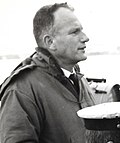
|
Benjamin Talm | 1967 | 1968 | The first commander at the time of the reception of the ships in Shrevor. |
| 2 |

|
Hadar Kimchi | 1968 | 1971 | Conversion from vessels to combat units, author of "Battle Theory for Assault Ships", escape commander Cherbourg Ships, beginning of operations against terrorist targets - Operation Hood 20, assimilation of combat theory. |
| 3 |

|
Shabtai Levi | 1971 | 1973 | Institutionalization of naval procedures for missile combat, transport and security of raiding forces against terrorist targets - Operation Hood 54-55 and Operation Aviv Neorim. Preparation of combat plans for the attack on the Syrian coast and the ambush on the Sinai coast carried out in the Yom Kippur War |
| 4 |
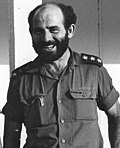
|
Michael Barkai | July 1973 | June 1974 | In the Yom Kippur War he was mentioned in the Masterpiece Decoration, improving the issue of controlling the forces. |
| 5 |

|
Eli Rahav | June 1974 | March 1976 | Institutionalizing the ship's competency indicators and tests, implementing a "robust code" for instructions and reports by wireless, determining the centralized ship leave. |
| 6 |
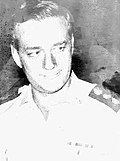
|
Micah Lazeros | April 1976 | August 1978 | Operation Liberty Bell, Operation Litany, sailing to Portugal |
| 7 |

|
Haim Shaked | August 1978 | 1979 | |
| 8 |

|
Zeev Yehezkali | August 1978 | July 1979 | Commander of Sheitat 5 at the same time. |
| 9 |

|
Abraham Ben-Shoshan | 1979 | 1981 | First Visit of the Navy ships in the port of Alexandria in Egypt. |
| 10 |

|
Aryeh Runa | 1981 | 1983 | Improving the level of execution of the "combined battle" and raising the level of artillery during the First Lebanon War. |
| 11 |

|
Shimon Meir | July 1983 | 1985 | The flotilla reached 26 combat units. |
| 12 |

|
Shaul Chorev | 1985 | 1987 | Evolution of the naval helicopter, cooperation with the Sixth Fleet, combined operations with the Sheitat 13 in Lebanon, the beginning of the reduction in SDF. |
| 13 |
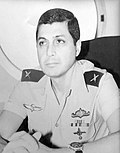
|
Yossi Levy | August 1987 | August 1989 | Operational improvements |
| 14 |
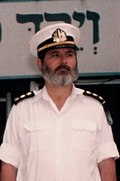 ] ]
|
August 1989 | August 1991 | Integration of "Dolphin" naval helicopters in full operation | |
| 15 |
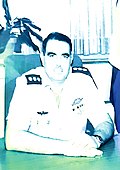
|
David ben Bashot | August 1991 | May 1993 | The long voyages, absorption of the naval helicopter and its integration into the naval combat system |
| 16 |

|
Yaakov Gaz | 1993 | 1995 | |
| 17 |
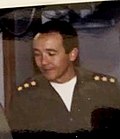
|
Ali Marom | 1995 | 1997 | |
| 18 |

|
Hazi Mishita | September 1997 | August 1999 | Renewal of battle theory for assault ships |
| 19 |

|
Noam Feig | 1999 | 2001 | |
| 20 |

|
Ran Ben Yehuda | August 2001 | July 2003 | Computerization of reports |
| 21 |

|
Abby Arzoni | July 2003 | September 2005 | The author of the book "Sheit 3 - the missile ships in the Navy" |
| 22 |

|
Danny Maoz | September 2005 | August 2007 | The Second Lebanon War |
| 23 |
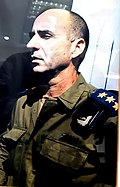
|
Ilan Sheriki | August 2007 | August 2009 | Operation Cast Lead |
| 24 |
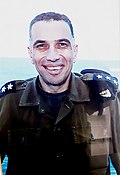
|
Eli Wand | 2009 | 2011 | Operation Iron Law ,Capture of the ship Victoria |
| 25 |
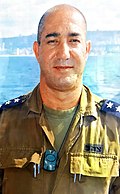
|
David Salma | 2011 | September 2013 | Operation Pillar of Cloud |
| 26 |

|
Eyal Harel | September 2013 | June 2015 | The capture of the weapons ship "Closs Sea" in the Red Sea, Operation Tzuk Eitan |
| 27 |

|
Ziv Rom | June 2015 | August 2017 [491] | |
| 28 |

|
Guy Goldfarb | August 2017 | August 2019 | The flotilla was awarded a letter of appreciation from the Chief of Staff Aviv Kochavi and a certificate of appreciation from the commander of the sea arm Eli Sharvit for a series of operations. |
| 29 |
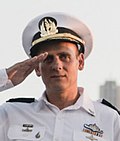 |
Meir Azuri | August 2019 [492] | September 2021 | |
| 30 |
 |
Erez ben Zion | September 2021 | July 2023 | |
| 31 | No Picture | Eldad Borochovich | July 2023 [493] | July 30, 2023 | Present |
- Shmuel Yaniv, יום שייטת הסטילים, Between Waves, April 1975, p. 2.
- Remy Antian, פיליטון - יום בחייו של סטילן, Bin Galim, October 1975 (second booklet), p. 17
- Slomo Aral, "'Before the Sea'", the story of a sailor, commander and fighter, Ministry of Defense Publishing House, 1998
- Mike Elder, "'The Enemy and the Sea'", Chapters from the Operations Manual, pp. 170-181, 199-191, 246-235, Ministry of Defense - Publishing House, 1991
- Avraham Rabinowitz, "'Sherburg Ships'", (translation from English: Aryeh Marmari, editing: Efi Meltzer), Efi Meltzer Publishing Ltd., 2001
- Yehuda Schiff (editor in charge), Ilan Kafir, Yaakov Erez; The editors of the volume: Hirsh Goodman, Slomo Man, "'The IDF in Hilo, an encyclopedia for the military and security'", the Navy volume, Reviviv Publishing House
- Slomo Man, "'Target Kiryat Shmona, an exhibition attack was prevented thanks to the Navy,'" Bin Galim, October 1998
- Col. Ido Shabach, "'Achi Lahav's voyage from the United States to Israel'", pp. 48-51, "Bin Galim" magazine Navy Association, May 2005. ^
- Moshe Imber and Gad Ariel, "Sheit 3 - the missile ships in the Navy", Ministry of Defense Publishing House, 2005
- Digital addition to the book "Sheit 3 - The Missile Ships in the Navy", Sheit 3, 2014
- Pesach Malovni, "'Evil will arise from the conscience'", The Syrian Army - Its Plots and Wars - A View from Damascus, pp. 465-473, 847-846, Israel Institute for the Study of Wars, 2014
- General Chaim Nedel, "'The Daring Wins,'" IDF special and combined operations in flight and deception between the two wars (1967-1973), Moden Publishing House - IDF Systems Publishing, 2015
- Dr. Aviad Rubin and Dr. Ehud Eran, with Dr. Tamir Magal "'Ashore the Seas Tishkhun'", Maritime Strategic Assessment for Israel 2015, Haifa Center for Maritime Strategy Studies, University of Haifa, 2015
- Liat Katzir "'The future is already here'", assessment of the operational situation of the naval arm, interview with the head of Maspan Haim Brigadier General Dror Friedman, "Bin Galim" magazine of the Navy association, September 2015
- Amnon Shafi, 12 פרויקטים לקליטת 12 הסטי"לים, Center for Maritime Policy and Strategy Research, Haifa University, 2023
- Lior Margolin, אימונים ראשונים on YouTube, 1970
- Yaakov Nitzan, אימונים ראשונים on YouTube, 1971
- אימוני היבנות - שייטת 3, בתחילת דרכה on YouTube
- מצגת טנק ואימונים ראשונים on YouTube
- אימונים ראשונים on YouTube
- שייטת 3, 25 שנים למדינה on YouTube, the means of warfare in the exhibition at the Museum of Enlistment and the Navy
- השקת אח"י רשף במספנות ישראל on YouTube, February 19, 1973
- שייטת ספינות הטילים בסיור מול חוף לבנון on YouTube, July 15, 1976
| BHD 600 | |
|---|---|
| | |
 Symbol of the base | |
| Type | Naval Training Base |
| Site information | |
| Owner | |
| Operator | |
| Garrison information | |
| Garrison | |
BHD 600 or Haifa naval training base is the sole naval training base of the Israeli Navy. It is located in the port city of Haifa and is responsible for the training of most of Israeli Navy personnel.
The base is responsible for the training of all Israeli Navy personnel except Shayetet 13 and YILTAM fighters. All Shayetet 3, Shayetet 7 and regular personnel are trained here in addition to supplementary training for commanders. UAV and UUV operators are also trained here. In addition to training, regular military exercises are also held here.
- Training group - trains the instructors, the course commanders in building courses and improving them.
- Simulator Fleet - unites under it the simulator training course and the regular training in the various simulators in the fields of Shayetet 7 and Shayetet 3 and Naval intelligence
- Tash Kashrut squadron - training for recruiters, command and controls.
- Stil Kashrut squadron - For specialisation in secondary services.
- Coastal Technical Training Squadron - Training in small arms and electronic equipments.
- School for officers - a school for conscripts and military officer training.
- Submarine training squadron - Training for Shayetet 7 personnel.
- The Naval Command School - training for ship commanders.
- Tzur-Yam - a high school specializing in technological expertise.
The base was established in 1965 and training missions were initiated in 1967 after the arrival of new ships from Cherbourg after the Cherbourg Project. These vessels were initially used for training purpose.
In the 1960s, limited facilities at the training base prompted Israeli Navy to hold drills in Malta as Naval Combat exercises couldn't be held at the training base. With the passage of time, the facilities were gradually improved and helped to strengthen up the Israeli Navy before the Yom Kippur War.
At the end of the 1990s, the Haifa Administration wanted to promote a plan for the construction of a marina in Bat Galim . Environmental activists opposed the plan, which included drying up an extensive sea area, for the purpose of construction that would finance the construction of the marina. The Society for the Protection of Nature proposed an alternative plan that included the evacuation of the base and the construction of a marina in the area opposite to it, which was not accessible to the public. [494] In January 2003, the Israel Land Administration also presented a plan for the development of Bat Galim that included the evacuation of the base. [495] In May 2008 , local authorities approved the construction of a neighborhood of 1,000 housing units in the base area. [496] However, the plan did not go into effect, as the Ministry of Defense refused to sign an agreement to evacuate the base. In 2015, the plan was transferred to the National Committee for the Planning and Construction of Preferred Housing Complexes , with the hope that its rapid advancement would serve as leverage to renew negotiations with the Ministry of Defense, but it did not advance the plan. [497]
At the end of 2017, it was agreed that the base would vacate only a strip of beach along the seashore, so that for the first time so that a sequence of promenades would be created, in front of the sea from the Mediterranean coast, through the beach of the base, Bat Galim beach to the southern beaches of the Haifa. [498] The construction of the boardwalk began in 2018, most of it was completed, and in August 2020 it was decided to name it after Hulda Gurvitz. [499] however the Navy withdrew from the agreement and refused to allow the construction to be completed. [500]
| Base commanders | |||
| # | Rank and name | Command period | Image |
|---|---|---|---|
| 1 | Abraham Ofer | 1949 – 1950 |

|
| 2 | Yehiel Zaltz | 1950 – 1951 |

|
| 3 | Shlomo Arel | 1952 |
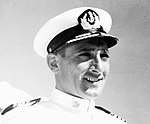
|
| 4 | Aryeh Friedman | 1953 – 1954 |

|
| 5 | Yitzhak Gazit | 1954 – 1956 |
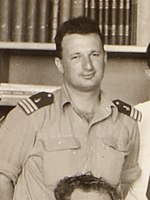
|
| 6 | Yehuda Igra | February 1957 – February 1962 | |
| 7 | Yehuda Ben-Zur | June 1962 – May 1965 |

|
| 8 | Lt. Col. Yekutiel Netz | May 1965 – March 1968 |
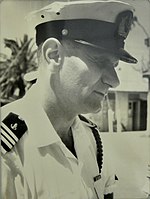
|
| 9 | Yitzhak Shoshan | March 1968 – July 1968 |
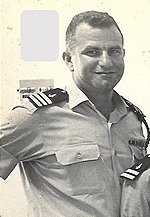
|
| 10 | Aryeh Barak | July 1968 – March 1971 |

|
| 11 | Eli Levy | April 1971 - June 1971 |

|
| 12 | Pinchas Pinhasi | June 1971 – June 1974 |

|
| 13 | Shabtai Levy | July 1974 – June 13, 1975 |

|
| 14 | Shaul Sela | June 13, 1975 – July 1977 |

|
| 15 | Abraham Ben Shushan | August 1977 – June 1978 |

|
| 16 | Yitzhak Koral Almog | July 1978 – August 1981 |

|
| 17 | Alex Tal | August 1981 – August 1983 |

|
| 18 | Doron Amir | August 1983 – July 1986 |

|
| 19 | Danny Melamed | July 1986 – July 1989 |

|
| 20 | Bani Arieli | August 1989 – July 1991 |

|
| 21 | Dror Aloni | August 1991 – January 1993 |

|
| 22 | Dodo Iver | June 1993 – April 1995 | |
| 23 | Bnei Hod | April 1995 – October 1997 |
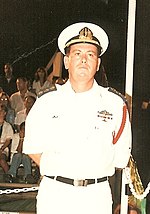
|
| 24 | Shloma Cohen | October 1997 – September 1999 |

|
| 25 | Eli Gambash | September 1999 – April 2002 | |
| 26 | Benny Shefnier | April 2002 – October 2004 | |
| 27 | Ilan Shariki | October 2004 – August 2007 |

|
| 28 | Ronan Niemani | August 2007 – July 2011 |

|
| 29 | Tzachi Appelman | July 2011 – August 2013 |

|
| 30 | Sami Tzemach | August 2013 – 2015 |

|
| 31 | Yuval Ilon | 2015 – July 2017 |

|
| 32 | Nadav Turgeman | July 2017 – August 2019 |

|
| 33 | Boris Shuster | August 2019 – July 2021 |
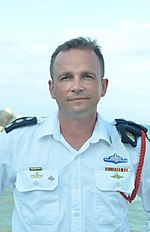
|
| 34 | Tamir Shemesh | July 2021 - incumbent [501] |
- Moshe Oron, מתקן תרגול טאקטי, 'Marine Systems' 104, July 1971, p. 16.
- Yosef Yerblum and Aryeh Doblin, הפנימיה לאלקטרוניקה, 'Marine Systems' 105, October 1971, p. 28
- Major Eli, בסיס הדרכה של חיל הים, 'Marine Systems' 107–108, March 1972, p. 56.
- Rafiki, בה"ד - קמפוס במדי צבא, 'Between Waves' June 1974, p. 2.
- Batia Shem-El, מדסית בפעולה, 'Between Waves' April 1975, p. 20.
- Amnon Shafi. "'12 projects to absorb the 12 steels'" ,The Center for Maritime Policy and Strategy Research, Haifa University, October 2023, p. 58.
- מחנה בת גלים, "Navy" booklet September 3, 1948, p. 31.
- M. sailor, בסיס הדרכה של חיל הים, "Sea Systems" 29, June 1956, pp. 20-27.
- Meir Shapir, בבסיס ההדרכה, "Marine Systems" 95, August 1969, p. 19.
- Lt. Col. Sh. דמיינים מאמ"נים בשירות הצי, 'Between Waves' 162 July 1984 p. 32.
- Aryeh Kiesel, סוף סוף מנערים אבק - בבה"ד משנים תוכניות לימוד, 'Between Waves' 165 June 1985 p. 12.
- Ruthie Rodner, יום המדריך עוד שלב בפרויקט ההדרכה בבהד, 'Between Waves' 172 October 1987, p. 20.
- Raanan Cherbinski, על ראש התורן ואדמה סביב - המרכז החדש לתרגול טקטי בבה"ד, 'Between Waves' 174 June 1988 p. 8.
- Sigal Bochris and Avi Oval, מתקני האימון הסימולטורים בבה"ד וגם סיום קורס נגדי משמעת, 'Between Waves' 177 April 1989 pp. 22 and 27.
- Sigal Bochris and Avi Oval, חנוכת המת"ט החדש, 'Between Waves' 178 August 1989 p. 14.
- Sigal Buchris, הדרכה מסוג אחר, 'Between Waves' 179 November 1989 p. 14.
- Sigal Bochris and Avi Oval, בקרית אש במאמ"ן וגם טל קאופמן מדריכת פי"ם במילואים, 'Between Waves' 180 April 1990 pp. 44 and 58.
- Aryeh Kiesel and Shani Fais, ימאות מבראשית במעגן הסירות בבה"ד, וגם עלה ים" איך מסיימים קורסים בחיל הים וגם אולפן וידאו בבה"ד, "Between Waves" 181 August 1990, pp. 53, 54 and 68.
- Ilanit Fener, ילדי הים בהד חיל הים מסייע לילדים חולי סרטן ברמב"ם, "Between Waves" issue October 1, 2001 p. 68.
- Rose Barel, ילדי הים - בית ספר "צור ים", "Between Waves", December 2009, p. 8.
- Rose Barel and Raz Sharga, כמו בצוללת - הסימולטור, "Between Waves", October 2010, p. 42.
- Ado Neuhaus, יומן מסע - מלח ים והרבה פאסון קורס דבורנים, "Between Waves", October 2010, p. 58.
- Annie Elroy, הבה"ד השער הראשי של חיל הים, 'Between Waves' May 2014, p. 59.
- Annie Elroy, המצטינות לסימולטור -מערך הסימולטורים בבה"ד חיל הים, "Between Waves", October 2014, p. 52.
- Annie Elroy, בדרכי נועם - סמי צמח מפקד בה"ד, "Between Waves", September 2015, p. 44.
- Oral Elhadad and Brit Almog, מהפכת הסימולטורים של זרוע הים וגם צור ים - כשחזון הופך למציאות, "Between Waves", May 2017, p. 14 and 47.
- ^ a b c At least 25 killed in airstrikes in Tirah valley – Pakistan – DAWN.COM Archived 10 June 2014 at the Wayback Machine
- ^ a b Aerial bombing in Tirah valley kills 25 militants – The Express Tribune
- ^ a b Shah, Saeed. "Pakistan Weighs Strike Against Taliban Over Airport Attack". Wall Street Journal.
- ^ "Pakistani airstrike after airport attack".
- ^ Army resolves to intensify air strikes against militants – Pakistan – DAWN.COM
- ^ a b c "ISPR press release".
- ^ Successive drone strikes leave at least 16 dead in N Waziristan – Pakistan – DAWN.COM
- ^ Drone targeted Haqqani network commander, Afghan Taliban: sources – Pakistan – DAWN.COM Archived 14 July 2014 at the Wayback Machine
- ^ Mujtaba, Haji (15 June 2014). "Pakistan army launches big operation after airport attack". Reuters. Retrieved 3 August 2014.
- ^ a b "Mostly Uzbeks killed in overnight N Waziristan bombing: army – Pakistan". Dawn.Com. 15 June 2014. Retrieved 3 August 2014.
- ^ "Karachi airport attack mastermind killed in N Waziristan: Sources – Pakistan". Dawn.Com. 15 June 2014. Retrieved 3 August 2014.
- ^ Jones, Sam (31 December 2023). "US Navy downs missiles in Red Sea after ship attacked by Houthi rebels". The Guardian.
- ^ Baldor, Lolita; Copp, Tara (11 January 2024). "US, British militaries launch massive retaliatory strike against Iranian-backed Houthis in Yemen". Associated Press. Archived from the original on 12 January 2024.
- ^ "U.S. Forces Strike and Destroy Houthi Surface-to-Air Missile". CENTCOM. 31 January 2024. Retrieved 31 January 2024.
- ^ Graef, Aileen (19 February 2024). "US conducts strikes against Houthi underwater vessel for the first time since Red Sea attacks began". CNN.
- ^ "Japan condemns Yemen's Houthi rebels hijack of cargo ship in Red Sea". BBC News. 20 November 2023. Archived from the original on 24 November 2023. Retrieved 24 November 2023.
- ^ Baldor, Lolita (29 November 2023). "US Navy warship shoots down a drone launched by Houthis from Yemen". Associated Press. Archived from the original on 29 November 2023. Retrieved 29 November 2023.
- ^ a b "Iranian warship Alborz enters Red Sea amid tensions: State media". Al Arabiya English. 1 January 2024. Archived from the original on 2 January 2024. Retrieved 3 January 2024.
- ^ "Iran Update, December 22, 2023". Institute for the Study of War. Archived from the original on 23 December 2023. Retrieved 23 December 2023.
-
^ Cite error: The named reference
semaforwas invoked but never defined (see the help page). -
^ Cite error: The named reference
hezwas invoked but never defined (see the help page). - ^ "Within 10 days.. 75 Houthis were killed in Western strikes" (in Arabic). Sky News Arabia. 21 January 2024. Archived from the original on 21 January 2024. Retrieved 21 January 2024.
- ^ "New Israeli warship deployed to Red Sea". Sky News. 12 December 2023. Archived from the original on 19 March 2024. Retrieved 20 March 2024.
- ^ "In first, Arrow downs Eilat-bound missile from 'Red Sea area'; Houthis claim attack". The Times of Israel. 31 October 2023. Archived from the original on 31 October 2023. Retrieved 20 March 2024.
- ^ "Israel shoots down Houthi cruise missiles using F-35i Adir fighter jets". Defence Blog. 2 November 2023. Archived from the original on 2 November 2023. Retrieved 20 March 2024.
- ^ "Explosions in Egyptian red sea town near Israel".
- ^ LaGrone, Sam (31 December 2023). "U.S. Navy Helo Crews Kill Houthi Assault Boat Teams After Red Sea Attack". USNI News. Retrieved 17 January 2024.
- ^ "Attacks on ships and US drones show Yemen's Houthis can still fight despite US-led airstrikes". ABC News. Archived from the original on 20 February 2024. Retrieved 20 February 2024.
- ^ "Statement on Air Strikes against Houthi military targets in Yemen: 24 February 2024". GOV.UK. Archived from the original on 9 March 2024. Retrieved 9 March 2024.
- ^ "SLNS Gajabahu returns from Red Sea". Ceylon Today. 28 February 2024. Retrieved 5 March 2024.
- ^ "Red Sea crisis: SLN prepped to continue patrols". The Morning. 3 March 2024. Retrieved 5 March 2024.
- ^ "Une frégate de défense aérienne française intègre l'opération européenne Aspides | Mer et Marine". www.meretmarine.com (in French). 2024-06-04. Retrieved 2024-06-04.
- ^ "Interception par l'hélicoptère de la frégate française d'un drone aérien en provenance du Yémen menaçant le trafic maritime civil en mer Rouge". Armée française – Opérations militaires (in French). 20 March 2024. Archived from the original on 27 March 2024. Retrieved 27 March 2024.
- ^ "French helicopter destroys Houthi drone". The Jerusalem Post. 20 March 2024. Archived from the original on 20 March 2024. Retrieved 20 March 2024.
- ^ "Interceptions de drones aériens en provenance du Yémen". Armée française – Opérations militaires (in French). 9 March 2024. Archived from the original on 17 March 2024. Retrieved 27 March 2024.
- ^ "Marineschip naar Rode Zee voor bevoorrading en medische zorg". Defensie.nl (in Dutch). Ministerie van Defensie. 5 April 2024. Archived from the original on 5 April 2024. Retrieved 7 April 2024.
- ^ Karreman, Jaime (5 April 2024). "Kabinet: ook Zr.Ms. Karel Doorman naar Rode Zee". Marineschepen.nl (in Dutch). Archived from the original on 7 April 2024. Retrieved 7 April 2024.
- ^ "CHINA'S CALCULATED INACTION IN THE RED SEA CRISIS". 6 March 2024.
- ^ "Saudi Air Defense shoots down 6 Houthi missiles in 48 seconds".
- ^ "Egyptian forces down Houthi drones targeting Eilat".
- ^ "Dhaab drone strike".
-
^ Frantzman, Seth J. (2023-10-17).
"Overwhelmed: The IDF's first hours fighting the terror waves on Oct 7".
The Jerusalem Post.
Archived from the original on 24 December 2023. Retrieved 2023-12-26.
Golani soldiers from the 51st and 13th battalions fought along 30km of the border at numerous points and took heavy casualties between October 7 and 9.
- ^ a b "As combat in north Gaza slows, Gallant rejects any prospect war nearing end". The Times of Israel. 2 January 2024. Retrieved 27 May 2024.
- ^ "Israeli soldier killed in northern Israel". Al Jazeera. 6 June 2024.
- ^ "Cleared for publication: Deputy IDF Commander killed on Lebanon border". Israel National News. 9 October 2023. Archived from the original on 13 October 2023. Retrieved 10 October 2023.
- ^ Tom O'Connor (2024-03-19). "Hezbollah "ready to resist" new Israeli unit sent to Lebanon, Syria borders". Newsweek. Retrieved 2024-03-20.
- ^ "IRAN UPDATE, April 4, 2024". Institute for the Study of War. Retrieved 8 April 2024.
- ^ Ashkenazi, Avi (6 June 2024). "Gazan terrorists attempt to infiltrate Israel, evading IDF security buffer before being spotted". The Jerusalem Post. Retrieved 9 June 2024.
- ^ Fabian, Emanuel (9 June 2024). "IDF soldier killed by terrorists trying to infiltrate Israel from south Gaza". www.timesofisrael.com. The Times of Israel. Retrieved 6 June 2024.
- ^ "Commander of IDF's Nahal Brigade killed in clashes with Hamas on Gaza border". The Times of Israel. 7 October 2023. Archived from the original on 7 October 2023. Retrieved 7 October 2023.
- ^ "IDF kills terrorists in Rafah, finds numerous weapons". The Jerusalem Post. 21 May 2024. Retrieved 21 May 2024.
- ^ a b ben Kimon, Elisha (2023-10-13). "המשחררים של נחל עוז: קציני סיירת גבעתי מדברים על התופת והגבורה בקרב". Ynet (in Hebrew). Retrieved 6 January 2024.
- ^ "Israeli army tweets video that appears to show soldiers shooting Palestinians who surrendered". France 24. 13 October 2023.
- ^ "Squad of female IDF combat troops eliminated nearly 100 Hamas terrorists". October 23, 2023.
- ^ "IRAN UPDATE, April 4, 2024". Institute for the Study of War. Retrieved 8 April 2024.
- ^
a
b Cite error: The named reference
ToIwas invoked but never defined (see the help page). - ^ "252nd Division conquers Beit Hanoun in Gaza". Israel National News. 2023-12-18. Retrieved 2023-12-27.
- ^ Fabian, Emanuel (2023-11-08). "IDF says its entire 252nd Reserve Division is operating inside Gaza". The Times of Israel. Retrieved 2023-12-27.
- ^ "IDF Deploys Fifth Brigade to Rafah as operation expands in southern city". i24news.tv. I24. Retrieved 23 May 2024.
- ^ Fabian, Emanuel (8 October 2023). "IDF says commander of elite 'Ghost' unit among those killed in battles". The Times of Israel. Archived from the original on 9 October 2023. Retrieved 8 October 2023.
- ^ "IDF's haredi battalions fight inside Gaza for the first time". The Jerusalem Post | JPost.com. 2024-01-08. Retrieved 2024-03-17.
- ^ https://aje.io/hg54p3?update=2922096
- ^ "Seven soldiers die as IDF breaks more Khan Yunis defense lines". The Jerusalem Post. 18 December 2023. Archived from the original on 19 December 2023. Retrieved 19 December 2023.
- ^ https://maglan.org/
- ^ "Institute for the Study of War".
- ^ Glazer, Hilo (20 October 2023). "A Handful of Israeli Officers Saved 90 New Recruits From Hamas Terrorists. They Paid With Their Lives". Haaretz. Archived from the original on 20 October 2023. Retrieved 29 October 2023.
- ^ "Soldier killed in accident on Gaza border as Gallant sends more troops to Rafah". The Times of Israel. 1 March 2024.
- ^ Fabian, Emanuel. "IDF announces deaths of three soldiers killed fighting in northern Gaza earlier today". timesofisrael.com. Retrieved 22 May 2024.
- ^ Lecker, Maya. "On October 7, Sexism in Israel's Military Turned Lethal". Haaretz. Archived from the original on 2023-11-28. Retrieved 29 November 2023.
- ^ https://aje.io/8mqpai?update=2888920
- ^ "Institute for the Study of War".
- ^ "Institute for the Study of War".
- ^ "Lebanon drone kills IDF soldier; Hezbollah, IDF continue tensions". The Jerusalem Post. 2023-12-16. Retrieved 2023-12-16.
- ^ https://www.ynet.co.il/news/article/s1ce00xbw6
- ^ https://www.timesofisrael.com/testimonies-from-beeri-massacre-expose-deep-trauma-predating-israels-creation/ . Retrieved 10 October 2023.
- ^ "Upon receiving the report of wounded following the infiltration of terrorists in Zikim, the soldiers of Unit 669 were rushed to the field. The forces worked to rescue the wounded under fire and mortar fire. Since the beginning of the fighting, Unit 669 rescued about 200 wounded in about 45 rescues". twitter.com. Retrieved 2023-10-14.
- ^ a b c "New footage shows harbor security unit foiling Hamas naval infiltration on October 7". The Times of Israel. 14 October 2023. Archived from the original on 14 October 2023. Retrieved 20 October 2023.
- ^ "New Israeli warship deployed to Red Sea". Sky News. 12 December 2023. Archived from the original on 19 March 2024. Retrieved 20 March 2024.
- ^ a b Fabian, Emanuel. "Authorities name 307 soldiers, 58 police officers killed in 2023 terror clashes". The Times of Israel. Archived from the original on 17 October 2023. Retrieved 21 October 2023.
- ^ Tibon, Amir (2023-11-04). "As We Hid in Our Safe Room, These Heroes Went Out to Save Our Kibbutz – and Never Returned". Haaretz. Archived from the original on 2023-11-09. Retrieved 2023-11-21.
- ^ "קצין בכיר: לוחמי הימ"מ חיסלו 200 מחבלים; תשעה לוחמים נהרגו ו-35 נפצעו | ישראל היום". October 14, 2023.
- ^ "356 מחבלים חוסלו בידי שוטרי ולוחמי המשטרה".
- ^ Duro, Israel. "Heroes of Israel: Armed members of several kibbutzim managed to fight off terrorists". VOZ. Archived from the original on 13 October 2023. Retrieved 11 October 2023.
- ^ Ghert-Zand, Enee. "Young dad of 6 absorbed blast to protect family in attack on Kerem Shalom". The Times of Israel. Archived from the original on 18 October 2023. Retrieved 18 October 2023.
-
^
"UNRWA Situation Report #1 on the Situation in the Gaza Strip (Situation Report)".
United Nations Relief and Works Agency for Palestine Refugees in the Near East.
United Nations. 7 October 2023.
Archived from the original on 16 October 2023. Retrieved 16 October 2023.
At 06:30 on the morning of 7 October 2023, Hamas launched more than 5,000 rockets reportedly fired towards Israel from multiple locations in Gaza, as well as ground operation into Israel.
- ^ "THE ORDER OF BATTLE OF HAMAS' IZZ AL DIN AL QASSEM BRIGADES". Institute for the Study of War.
- ^ "Iran Update, December 14, 2023". Institute for the Study of War.
- ^ "Institute for the Study of War".
- ^ "Al-Aqsa Flood Vanguards unit: 'Hamasland' in south Lebanon? - l'Orient Today". Archived from the original on 7 December 2023. Retrieved 7 December 2023.
- ^ Fabian, Emanuel (9 October 2023). "Officer, 2 soldiers killed in clash with terrorists on Lebanon border; mortars fired". The Times of Israel. Archived from the original on 9 October 2023. Retrieved 11 October 2023.
- ^ a b "Iran Update, December 23, 2023". Institute for the Study of War.
- ^ "Iran Update, December 15, 2023". Institute for the Study of War.
- ^ "Institute for the Study of War".
- ^ a b c "Institute for the Study of War". Institute for the Study of War. Archived from the original on 25 March 2022. Retrieved 14 February 2024.
- ^ "خلال بيان لها قبل قليل.. كتائب المقاومة الوطنية (قوات الشهيد عمر القاسم) الجناح العسكري للجبهة الديمقراطية". Alhourriah. 8 October 2023. Archived from the original on 8 October 2023. Retrieved 11 October 2023.
- ^ الانترنت, الحرية-مجلة التقدميين العرب على. "khilal bayan laha qabl qalilin.. katayib almuqawamat alwatania (quaat alshahid eumar alqasuma) aljanah aleaskarii liljabhat aldiymuqratia" خلال بيان لها قبل قليل.. كتائب المقاومة الوطنية (قوات الشهيد عمر القاسم) الجناح العسكري للجبهة الديمقراطية [During a statement a short while ago...the National Resistance Brigades (Forces of the Martyr Omar Al-Qasim), the military wing of the Democratic Front] (in Arabic). مجلة التقدميين العرب على الانترنت. Archived from the original on 8 October 2023. Retrieved 26 November 2023.
- ^ a b "Iran Update, December 20, 2023". Institute for the Study of War.
- ^ Jhaveri, Ashka; Parry, Andie; Ganzeveld, Annika; Braverman, Alexandra; Soltani, Amin; Mills, Peter; Moore, Johanna; Carter, Brian (3 January 2024). "Iran Update, January 3, 2024". Iran Update. Institute for the Study of War. Retrieved 8 January 2024.
- ^ "Iran Update, December 27, 2023". Institute for the Study of War.
- ^ "Institute for the Study of War".
- ^ Parry, Andie; Soltani, Amin; Carter, Brian; Braverman, Alexandra (29 December 2023). "Iran Update, December 29, 2023". Iran Update. Institute for the Study of War. Retrieved 8 January 2024.
- ^ "Institute for the Study of War".
- ^ a b c d موسى, رائد. "برا وبحرا وجوا.. المقاومة تنفذ أكبر مناورة عسكرية في غزة". الجزيرة نت (in Arabic). Retrieved 2023-10-31. Cite error: The named reference ":1" was defined multiple times with different content (see the help page).
- ^ "الجبهة الشعبية: قرار الإدارة الأمريكية بتوفير الدعم للكيان هدفه تطويق النتائج الاستراتيجية لمعركة طوفان الأقصى" [Popular Front: The US Administration's Decision to Provide Support to the Entity [Israel] Aims to Contain the Strategic Outcomes of the Battle of the Al-Aqsa Flood]. alahednews.com.lb (in Arabic). Archived from the original on 9 October 2023. Retrieved 8 October 2023.
- ^ a b c Guy Van Vlierden (14 October 2023). "HLN ONDERZOEK. Van jihadisten tot communisten: zeker 10 groeperingen deden mee met actie Palestijnse terroristen (HLN RESEARCH. From jihadists to communists: at least 10 groups participated in Palestinian terrorist action)". Het Laatste Nieuws. Archived from the original on 14 October 2023.
- ^ "أبرزها القسام وشهداء الأقصى وسرايا القدس، معلومات عن فصائل المقاومة الفلسطينية". Veto (in Arabic). October 22, 2023. Retrieved 2023-12-08.
- ^ Burke, Jason (26 November 2023). "Disappointed, disenchanted, defiant: inside the world of the West Bank's angry armed youths". The Observer. Retrieved 22 December 2023.
- ^ Jhaveri, Ashka; Carter, Brian; Ganzeveld, Annika; Soltani, Amin; Braverman, Alexandra; Mills, Peter; Carl, Nicholas (2 January 2024). "Institute for the Study of War". Iran Update. Institute for the Study of War. Retrieved 8 January 2024.
- ^ "Iran Update, December 4, 2023". Critical Threats.
- ^ https://www.timesofisrael.com/palestinian-group-attempts-to-fire-rockets-from-jenin-area-at-nearby-settlement/#:~:text=A%20group%20calling%20itself%20the,projectile%20mounted%20on%20a%20launcher.
- ^ "Two Resistance Brigades members killed by Israeli shelling". Naharnet. Archived from the original on 13 November 2023. Retrieved 7 November 2023.
- ^ ANTONIOS, Zeina (November 2023). Here's what we know about Hezbollah's elite al-Radwan unit Archived 20 November 2023 at the Wayback Machine today.lorientlejour.com
- ^ https://www.timesofisrael.com/liveblog_entry/idf-confirms-attack-on-hezbollah-linked-iranian-militia-members-in-lebanon/
- ^ "Institute for the Study of War". Archived from the original on 15 January 2024. Retrieved 15 January 2024.
- ^ חדשות (2023-11-16). "צה"ל תוקף בלבנון אחרי שפצמ"רים שוגרו לעבר מוצב בגליל העליון". Ynet (in Hebrew). Retrieved 2023-11-17.
- ^ Nada Homsi (2023-10-31). "'We're with the resistance': Hezbollah allies the Fajr Forces join Lebanon-Israel front". The National. Archived from the original on 12 November 2023. Retrieved 2023-11-12.
- ^ "الوكالة الوطنية للإعلام - القومي أعلن استشهاد أحد مقاتليه وسام محمد سليم". الوكالة الوطنية للإعلام (in Arabic). Archived from the original on 15 December 2023. Retrieved 2023-12-16.
- ^ ""أمل" تنعى أحد عناصرها... قضى بقصف إسرائيليّ على بلدة رب ثلاثين". An-Nahar. 2023-11-11. Retrieved 2023-11-12.
- ^ "Institute for the Study of War". Archived from the original on 1 January 2024. Retrieved 1 January 2024.
- ^ Comms, I. S. W. "Iran Update, January 9, 2024". Retrieved 2024-01-10.
- ^ "Institute for the Study of War". Institute for the Study of War. Retrieved 2024-04-21.
- ^ Seizure of Pure Car and Truck Carrier Chartered by NYK, Press Release, November 19, 2023, retrieved November 21, 2023
- ^ "Institute for the Study of War". Archived from the original on 12 December 2023. Retrieved 12 December 2023.
- ^ "Syrian air defences shoot down Israeli projectiles in the vicinity of Damascus".
- ^ "Iran fires air defense batteries in provinces as explosions heard near Isfahan". Associated Press. 19 April 2024. Archived from the original on 19 April 2024. Retrieved 19 April 2024.
- ^ "Israel launches missile attack on Isfahan in response to Iran assault". Al Jazeera. 19 April 2024. Archived from the original on 19 April 2024. Retrieved 21 April 2024.
- ^ Chao-Fong, Léonie (1 April 2024). "Middle East crisis live: Iran says it holds Israel responsible for Damascus consulate attack and will 'reciprocate when we want'". The Guardian. Archived from the original on 1 April 2024. Retrieved 1 April 2024.
- ^ "Iran Update, December 22, 2023". Institute for the Study of War. Archived from the original on 23 December 2023. Retrieved 23 December 2023.
- ^ Logan, William (2010). Malabar Manual (Volume-I). New Delhi: Asian Educational Services. ISBN 978-8-120-60447-6.
- ^ Logan, William (1887). Malabar Manual. New Delhi: Asian Education Services. p. 2. ISBN 978-81-206-0446-9. Archived from the original on 12 January 2016. Retrieved 15 November 2015.
- ^ a b c d e "How Pakistan lost an Island paradise".
- ^ a b c "How Sardar Patel kept Pakistan from grabbing Lakshadweep Islands".
- ^ a b c "The story of Lakshadweep".
- ^ "Sardar Patel Managed to retain Lakshadweep".
- ^ " Parliament of India". Constitution of India (PDF). Government of India. 1950. Retrieved 31 December 2023.
- ^ 1951 Census Handbook- South Canara District (PDF). Madras Government Press. 1953. Archived (PDF) from the original on 14 June 2021. Retrieved 8 June 2021.
- ^ States Reorganisation Act, 1956 (PDF) (Report). Government of India. Retrieved 16 September 2023.
- ^ a b c "Mai 1967 à Pointe-à-Pitre : « Un massacre d'Etat »" (in French). L'Humanité. 2017-05-25. Cite error: The named reference ":0" was defined multiple times with different content (see the help page).
- ^ "Guadeloupe, mai 1967 : un massacre aux zones encore troubles". Outre-mer la 1ère (in French).
- ^
a
b
c
d
e
f Francis, Gladys M. (2018).
"Dialogisme, exotisme et chaos en milieu antillais: André Breton et Gerty Dambury" (in French). Cambridge Scholars Publishing.
La France dépêche des gendarmes mobiles sur l'île peu après l'ordonnance du préfet Pierre Bolotte qui autorise des CRS, tous blancs, à tirer sur les manifestants qui incluent des lycéens de Baimbridge protestant contre les tueries de badauds de la veille. Ces émeutes causent la mort de 80 à 200 ouvriers et passants guadeloupéens, contre 30 gendarmes blessés. Des syndicalistes et passants sont arrêtés, maltraités en prison et acquittés sous de faux chefs d'accusation. Au dossier de ces émeutes promptement scellé sous statut "secret défense" (jusqu'en 2017) se joint la destruction d'archives municipales et hospitalières qui accentuent le flou du compte des victimes.
Cite error: The named reference ":2" was defined multiple times with different content (see the help page). - ^ Rauzduel, Rosan (15 November 1998). Publications de la Sorbonne (ed.). "Ethnie, Classes et Contradictions Culturelles en Guadeloupe". Socio-anthropologie. ISSN 1276-8707.
- ^ https://www.cairn.info/revue-le-mouvement-social-2010-1-page-79.htm
- ^ "« Guadeloupe, mai 67 », autopsie d'un « massacre » d'Etat" (in French). Le Monde.fr. 2023-06-30.
- ^ https://www.cairn.info/revue-politique-etrangere-2013-4-page-65.htm&wt.src=pdf)
- ^ Elsa Dorlin (2023). Libertalia (ed.). Guadeloupe, mai 67 - Massacrer et laisser mourir (in French). p. 65. ISBN 978-2377292691.
- ^ "1967-1974 : les cadences troubles des Antilles françaises". Radio France (in French). 2019-03-02.
- ^
a
b
Michelle Zancarini-Fournel (2016).
Éditions La Découverte (ed.). Les luttes et les rêves (in French). Paris. p. 785.
ISBN
978-2-35522-088-3.
{{ cite book}}: CS1 maint: location missing publisher ( link) - ^ Félix-Hilaire Fortuné. L'Harmattan (ed.). La France et l'Outre-Mer antillais. p. 303.
- ^ "Les émeutes de mai 1967: 7 ou 87 morts ?". Voges matin.
- ^ "En Guadeloupe, la tragédie de "Mé 67" refoulée" (in French). Le Monde. 2009-05-26.
- ^ a b Gama 2011.
- ^ "Quand, pour la dernière fois, les forces de l'ordre ont-elles tiré sur une foule en France ?". www.liberation.fr. 7 December 2018.
- ^ François-Xavier Gomez, « « Mé 67 », la mémoire d'un massacre en Guadeloupe », Libération, 7 May 2015.
-
^ dailymotion.com
https://www.dailymotion.com/video/x8fqmk_parlons-net-recoit-christiane-taubi_news.
{{ cite web}}: Missing or empty|title=( help) - ^ Un royaume antillais page 201
- ^ "[UGTG.org] Les massacres des 26 & 27 mai 1967 à Pointe à Pitre". ugtg.org.
- ^ "Hommage aux victimes de mai 1967 - Pointe-à-Pitre". fr.guadeloupe-tourisme.com (in French).
-
^ Cite error: The named reference
tahitiwas invoked but never defined (see the help page). - ^ "Mai 1967 : émeutes et massacre à Pointe-à-Pitre du 07 mars 2009 - France Inter". www.franceinter.fr (in French).
- ^ "« Lorsque les nègres auront faim, ils reprendront le travail » Guadeloupe, Mai 67, la répression sanglante du 28 avril 2016 - France Inter". www.franceinter.fr (in French).
- ^ Anselme, Jean-Pierre. "Guadeloupe, mai 1967, la répression sanglante". Club de Mediapart (in French).
- ^ Diable Positif. "Le massacre de mai 1967".
- ^ Amétis, Emeline (2017-03-29). "Il y a 50 ans, les manifestations guadeloupéennes s'étaient terminées en massacre". Slate.fr (in French).
- ^ Rigouste, Mathieu. "Des massacres oubliés de mai 1967 en Guadeloupe aux prémices de l'ordre sécuritaire moderne dans les quartiers". Basta ! (in French).
- ^ תקיפת פורט סעיד - מבצע ליידי On the website of Navy Association (Israel)
- ^ Mike Elder. שייטת 11. p. 355.
- ^ "Rabat Rafi Malka, late". Yazkor.
- ^ Article in Davar (newspaper)
-
^ Moshe Oron,.
"לכידת סירת מחבלים מהירה". Maritime Heritage Conservancy (Israel).
{{ cite web}}: CS1 maint: extra punctuation ( link) - ' ^ Joseph Walter (September 24, 1984). The terrorists in the hijacked rubber boat intended to carry out a bargain robbery,. Maariv.
- ^ Yedioth Ahronoth (July 11, 1986). "חוליית מחבלים שחוסלה תכננה לבצע פיגוע המוני בנהריה".
- ^ "סרט לזכרו של עמית סלע ז"ל". Association of Magdalor Graduates of the Hauvil Course.
- ^ Emmanuel Rosen and Yehuda Goren (June 24, 1990). ""The terrorist ship was destroyed a few minutes before Rosh Hankara"". Maariv.
-
^ Boris Wesler, (2020). """חיסול צמד מחבלים במים""- עם דבורה 813 ב-10 ביולי 1994,". "אגדות אחי פלברה שבאמת קרו". Beit Haval. p. 393.
{{ cite book}}: CS1 maint: extra punctuation ( link) - ^ "Israel Bombs Beirut in Night Attacks". KLTV. June 15, 2006. Archived from the original on March 4, 2016. Retrieved June 17, 2006.
- ^ "Missing sailor's body recovered". ynet. June 15, 2006. Retrieved June 17, 2006.
- ^ "Hezbollah rockets kill 8 in Haifa". CNN. June 16, 2006. Archived from the original on July 17, 2006.
- ^ "החלפת פיקוד ראשונה בכנף כוחות האוויר המיוחדים: "צבא מוסרי, ממושמע, צבא מנצח"". INN (in Hebrew).
- ^ a b ברוכים הבאים לכנף 7 - הבית החדש של חילות האוויר המיוחדים, on the IDF website, July 12, 2020, compiled in the Internet Archive
- ^ "נלחמנו עם חצי כוח עד שנגמרו הכדורים": הקרבות ההירואיים של יחידת שלדג". Ynet. Retrieved 24 July 2024.
- ^ "Testimonies from Be'eri massacre expose deep trauma predating Israel's creation". Retrieved 10 October 2023.
- ^ Yael Kochergin (1 April 2024). ""חרבות ברזל": כיצד מתבצעים חילוץ יחידה 669 מלב רצועת עזה?". Israeli Air Force website.
- ^ Lilach Shuvel (31 January 2024). "חילוץ באש: כך כוחות משולבים של 669 ויחידת הניידות מפנים פצועים מעומק רצועת עזה". Israel Hayom.
- ^ Eti Ilanai (25 April 2024). ""לא טריוויאלי ששתי יחידות עובדות יחד כמונו": מפקדי 669 ויחידת הניידות בראיון משותף נדיר". Israel Hayom.
- ^ "כאן הסתתרו בכירי החמאס? התגלית של יחידת שלדג מתחת לבית החולים שיפא - וואלה חדשות". וואלה (in Hebrew). 2023-11-27. Retrieved 2024-06-25.
- ^ זיתון, יואב; עזה (2023-12-20). "פיר לבונקר של סינוואר, מעלית ללשכת דף: תיעוד מ"הבור" של חמאס בעזה, 60 מטר מתחת לאדמה". Ynet (in Hebrew). Retrieved 2024-06-25.
- ^ Moshi Herman (12 February 2024). "ושבו בנים - "קפצנו מאושרים": כך קיבלו בני המשפחה את הבשורה על שחרור החטופים". Ha-Mahvaner.
- ^ "במבצע נועז ברפיח, צה"ל חילץ בחיים את החטופים פרננדו סימון מרמן ולואיס הר מהשבי". Walla (in Hebrew).
- ^ "מנחית סער קדמי". Mitgaisim (in Hebrew). Retrieved 23 July 2024.
- ^ https://www.iaf.org.il/9549-55734-he/IAF.aspx
- ^ מלחמת יום כיפור וחיל האוויר (PDF).
- ^ מבצע ליטני (PDF).
- ^ https://www.iaf.org.il/9484-54000-he/IAF.aspx
- ^ "לראשונה: שלוש לוחמות מצטרפות ליחידת הנחיתה הקדמית של חיל האוויר, ישראל דיפנס". www.israeldefense.co.il (in Hebrew). Retrieved 2024-06-24.
- ^ Shani Perlberg (20 June 2024). "הלוחמות הראשונות באגף 7 אומרות: "חובת ההוכחה עלינו"". IAF website (in Hebrew).
- ^ "בפרק מורשת - הנחיתות". Navy Association(Israel).
- ^ "נחתת וספינת רקטות INS Af Al Pi Chen]". HSNA.
- ^ "סיוע לחטיבה 9". Israeli Navy.
- ^ "אחרי 54 שנה: הנחתת הראשונה עגנה בלטרון". Ynet (in Hebrew).
- ^ Amir Rappaport (2012). "האגדה שהגיעה מהים". Timid Gunner. 51: 64–69.
- ^ "התקיים טקס מסירת הנחתת הראשונה - אח"י נחשון". Israel Defense Forces (in Hebrew).
- ^ "x.com". X (formerly Twitter). Retrieved 2024-06-16.
-
^ Eliezer Tal. "Navy Operations in the War of Independence" (in Hebrew). p. 51.
landings from them to the rear of the Arab force, the perception of the Harbia area as the exit of the Negev to the sea, the perception of the Strait of Aqaba and its port. In the neighboring countries, damage to transportation arteries along the coast, damage to supply bases for equipment and fuel, as well as protection of the coastal settlements in need (translated from Hebrew)
- ^ Hillel Yarkoni (2005). "'Qualifying Ships from A to Z'" (in Hebrew). Govinim Publishing House. p. 114.
- ^ Zadok Eshel (28 April 1963). "the operation that returned the Western Galilee to Israel" (in Hebrew). NLI.
- ^ "Acre was conquered" (in Hebrew). NLI. 14 May 1948.
- ^ ""מבצע כתריאל והניה חנה סנש". 22nd Battalion website (in Hebrew).
- ^ Yitzhaki, Aryeh (1988). A Guide to War Monuments and Sites in Israel (in Hebrew). Vol. 2 (south). Barr Publishers. p. 46.
- ^ Kimche, Jon; Kimche, David (1960). A Clash of Destinies. The Arab-Jewish War and the Founding of the State of Israel. Frederick A. Praeger. p. 260. LCCN 60-6996. OCLC 1348948.
- ^ Hertzog, p. 100. Maps pp. 99, 101.
- ^ Almog, Orna: Britain, Israel and the United States, 1955-1958: Beyond Suez
- ^ P. R. Kumaraswamy, The A to Z of the Arab-Israeli conflict, Scarcrow Press, Inc. (2006) p. 146
- ^ Tyler, Patrick: Fortress Israel: The Inside Story of the Military Elite Who Run the Country--and Why They Can't Make Peace
- ^ Hammad (2002), pp.301–302
- ^ Mike Elder. Shayetet 11. pp. 114–116.
- ^ David Maguri pp.77-80
- ^ Oren, Michael B. (2002). Six Days of War: June 1967 and the Making of the Modern Middle East. Oxford University Press. ISBN 978-0-19-515174-9.
- ^ Aloni 2001, pp. 63–64.
- ^ "The War And The Woman". Time Magazine. September 19, 1969. Archived from the original on May 6, 2008. Retrieved 16 June 2010.
- ^ Gawrych 2000, p. 111.
- ^ "Attack on Port Said - Operation Lady". Navy Association (Israel) (in Hebrew).
- ^ "מבצע "ירוק-בהיר" - שלבי נוהל הקרב ודיוני הצוות" (PDF). IDF archive file (in Hebrew). archive number: 1041/1984/540
- ^ Rabinovich, pp. 374–375.
- ^ Rabinovich, pp. 389–391.
- ' ^ Eitan Haber; Zev Schiff; Danny Asher. The War,. Yedioth Ahronoth Publishing House. p. 39.
- ^ "Operation 'Bird of Eden' - circumnavigation of Africa". Navy Association (Israel) (in Hebrew). August 20, 1974.
- ^ Fisk, Robert (2002). Pity the Nation: The Abduction of Lebanon. Nation Books. ISBN 978-1-56025-442-3.
- ^ a b Davis; H. Thomas. 40 Km into Lebanon: Israel's 1982 Invasion.
- ^ Mommsen, Klaus: 60 YEARS ISRAEL NAVY: Chel Ha'Yam Ha'Yisraeli
- ^ Morris; Benny. Righteous Victims: A History of the Zionist-Arab Conflict, 1881–1998.
- ^ a b Lilach Shovel (23 May 2022). "חיזוק דרמטי ליכולת הצבאית מהים: ישראל רכשה שתי ספינות תקיפה אמפיביות מארה"ב". Israel Hayom (in Hebrew).
- ^ "התקיים טקס מסירת הנחתת הראשונה - אח"י נחשון". Israel Defense Forces (in Hebrew).
- ^ "x.com". X (formerly Twitter). Retrieved 2024-06-16.
- ^ "סקירה על המספנה ותפקידה השונים". Israel Defense Monthly.
- ^ "יותר-ספינות-חיל-הים-עוברות-שדרוג". 2013.
- ^ "360 אלף שעות שיפוץ: צוללת פורקה והורכבה מחדש". Ynet. 5 November 2014. Retrieved 16 July 2024.
- ^ "קומנדו ימי: כך בונים ספינת מלחמה כחול-לבן". 25 May 2014. Retrieved 16 July 2024.
- ^ Yuval Dan Gor. "master's thesis operating the shipyard in the format of a closed economy, developing an integrative model of management indicators" (PDF). Retrieved 6 September 2021.
- ^ "המנוע מאחורי כל לוחם שייטת סקירה על שיפוץ מנועים". Israel Defense.
- ^ An article in the Haifa Heritage newspaper, the British shipyard in the port of Haifa, Aryeh Mehulel and attorney Eli Roman
- ^ "Subscription of Peretz Willard Etx as a district engineer of PWD p.724" (PDF). Nevo Database. Retrieved 11 July 2024.
- ^ "הקמת חברת Shipwrights & Engineers M.E LTD ורישומה" (PDF). Nevo legal database. p. 78.
- ^ "תקנות חירום של מנדט שלטון בנוסח עברי על פורמטים ומהנדסים" (PDF). Nevo Legal Database.
- ^ "תקנות חירום של מנדט שילטון בגרסה באנגלית על ספינות ומהנדסים" (PDF). Nevo Legal Database.
- ^ "אודות חברת Shipwrights & Engineers רישום חברות במנדט" (PDF). Nevo legal database.
-
^ Jane Power Simon Fraser (1996).
על ארגון העובדים הערבים בספינות ומהנדסים בתקופת המנדט (PDF). Canada.
{{ cite book}}: CS1 maint: location missing publisher ( link) - ^ Dr. Anat Kidron (October 2000). הקמת השירות הימי והצי: ותיקי הצבא הבריטי (in Hebrew). Palyam.org. p. 56 & 72.
- ^ Shlomo Bona. "In the Paths of Stormy Days",. Ministry of Defense (Israel) Publishing.
- ^ "על בן הלפרין ומתנדבי חיל הים" (PDF). 1997. p. 28.
- ^ Lt. Col. Yitzhak Shoshan (1993). "4: "דור המדבר", ספרית מעריב". הקרב האחרון של המשחתת אילת'.
- ^ "הודעה על שינויים בשותפות שם המפעל החדש מפעלי הנדסה חיפה ח.ב.מ. קירשטיין וגרינספן סדנאות ויציקה" (PDF). Nevo Legal Database. p. 1141.
- ^ a b Ran-Kaplan. תיעוד פרויקט של הקמת חיל הים ראיון עם אל"מ (מיל') אריה קפלן "כיפי" מראיין את ד"ר דניאלה רן, מכון הרצל. University of Haifa.
- ^ "Hima מספנות ישראל ומפעלי הנדסה בערבות מוגבלת" (PDF). Nevo legal database. p. 998.
- ^ a b Ran-Shefi. פרויקט תיעוד הקמת חיל הים ראיון עם אל"מ (מיל') יעקב שפי מראיין את ד"ר דניאלה רן, מכון הרצל,. University of Haifa.
- ^ Klaus Momsen (2011). A year for the Israeli Navy. Germany: Bernard Grafe Bonn. p. 28.
- ^ Ken Macpherson and Marc Milner. Corvettes of The Royal Canadian Navy-1939-1945. Vanwell Publishing LTD 1993. p. 138.
- ^ Shlomo Jacobson. "חברים שאינם". the Navy Association.
- ^ "המלחמה נגמרה המלחמות שלנו המשך". 25 שנה לגיוס מתנדבים יהודים לצי המלכותי הבריטי, חוברת יובל וזיכרון 1968. Haganah Archives Brilant. p. 37-40.
- ^ "היישוב מתנדב לצי המלכותי הבריטי" (PDF). the Jewish Warrior Museum in Latrun.
- ^ Documentation Project on the Establishment of the Navy Interview with Lt. Col. (Res.) Yehuda Igra interviewing Dr. Daniela Ran,. Herzl Institute, University of Haifa.
- ^ "About Prof. Dick Rosenberg from the Technion". The maker.
- ^ "Interview with Prof. Dick Rosenberg". The Jerusalem Post.
- ^ "About Prof. Dick Rosenberg of the United States Navy". Zionism-Israel.
- ^ "About Prof. Dick Rosenberg of the United States Navy". MFA.com.
- ^ Jonathan Love. "Lib of Congress Veterans History Project".
- ^ "Focus on Israel: MACHAL-Overseas Volunteers". Volunteers for the Navy at the Israeli Ministry of Foreign Affairs, Information Division.
-
^
אתר מיליארד קברים "Haim Gershoni of the Naval Institute". Kibbutz Givat Hasholsha.
{{ cite web}}: Check|url=value ( help) - ^ In practice the nickname Napoleonic was given to the field artillery of mountain units because of their old appearance as trailers on a cart with horse carriage wheels. The model that was used in the IDF in the beginning was a French cannon model Canon de Montagne de 65mm Schn
- ^ Haim Gershoni. The way it was.
- ^ "About Robert Allen and the story of Crostella a patrol ship 1949-1959". Naval Heritage Conservancy, Navy Association.(Israel).
- ^ "Commemoration of Robert Allen".
- ^ "The WEBB Institute of Marine Engineering and Architecture in the United States". Webb Institute.
-
^ Lt. Col. Yitzhak Shoshan: The Last Battle of the Destroyer Eilat, 1993. ""The Six Day War"". Sefrit Ma'ariv. p. 192-193.
{{ cite book}}: Missing or empty|title=( help)CS1 maint: numeric names: authors list ( link) - ' ^ Mike Elder (1993). "Berla returns to command and receives improvised "warships"". 13th Fleet. Sefrit Ma'ariv. p. 274.
-
^
"אסון אסון משאית התחמושת חמישים שנה אחרי: נחנכה אנדרטה לזכר 24 הנופלים ב'אסון המשאית' באילת" (in Hebrew).
{{ cite web}}: line feed character in|title=at position 6 ( help) - ^ "סא"ל משה אומן אוקסמן דף זיכרון".
- ^ "סא"ל גבי שילה, קצין כיבוי בחוף הסעודי". the Maritime Heritage Guard Navy Association.
- ^ "סא"ל חיים הימן - מחזיר את אחי געש לפעילות משמר מורשת חיל הים". the Navy Association.
- ^ Yosef Evron. "The Historical Development. Subchapter: "C-11 Remotely Guided Bombing Boat"". The Defense Industry in Israel, 1980. Ministry of Defense (Israel). p. 324-325.
- ^ Zev Almog. ""Infrastructure Works"". Zev Almost. p. 1020-1021.
- ^ Salmon Wolf. "Lone wolf in a thick forest". p. 277.
- ^ Zev Almog. ""Technological Head"". Zev Almog. p. 438-441.
- ^ "יעקב שפי-שיף, חברים שאינם". Navy Association(Israel).
- ^ Sarah Dotan. "על אלכס דותן שכט".
- ^ a b "Adopt a Battalion Donors Recognition, Valley Squadron 157, Maritime Helicopters Squadron 193, Flying Dragon Squadron 115". Friends of the IDF. Retrieved 11 July 2024.
- ^ a b "פורום CFO מתגייס לסייע לכוחות הלוחמים". CFO forum (in Hebrew). Retrieved 11 July 2024.
- ^ a b "יחידה- 157 - היחידה שבעמק". Israel Insignia (in Hebrew). Retrieved 11 July 2024.
- ^ "יחידה- 157 - היחידה שבעמק". All Badges (in Hebrew). Retrieved 11 July 2024.
- ^ a b c " להוביל - סיפורים ותובנות מעשיות על ערכי מנהיגות ופיקוד מפי מפקדים בחיל האוויר " (in Hebrew). School of Command and Leadership of the Israeli Air Force. June 2021. p. 135-145.
- ^ "Ilan Ramon's son sent a memento to space , on the Israeli Air Force website , July 14, 2011".
- ^ a b c "באוויר ובקרקע". Israeli Air Force. December 5, 2010. Retrieved 11 July 2024.
- ^ "פינת הנצחה לחללי שייטת 157, בסיס רמת דוד". Yazkor (in Hebrew). Ministry of Defense (Israel). Retrieved 11 July 2024.
- ^ a b "עמק יזרעאל: טייסת 157 מאמצת את ניצולי השואה". Ycom (in Hebrew). Retrieved 11 July 2024.
- ^ "16Squadron/Unit 157 sergeant on a Meister plane at the entrance to the Ramat David base". Flickr. May 9, 2019. Retrieved 11 July 2024.
- ^ Israeli Air Force Association, January 20, 2016, p. 4, published by the Air Force Association
- ^ "בלי מטוס כיבוי אחד: נתניהו מצא שם לטייסת". Ynet (in Hebrew). Retrieved 9 July 2024.
- ^ "משרד הביטחון מרחיב את טייסת כיבוי האש: רוכש עוד 6 מטוסים". Calcalist (in Hebrew). Retrieved 10 July 2024.
- ^ "אתר חיל-האוויר : יחידת הכיבוי האווירי עוברת למשטרה, באתר". Israeli Air Force.
- ^ "נחנכה טייסת הכיבוי החדשה של המשטרה". kikar (in Hebrew). Retrieved 10 July 2024.
- ^ "טרור הבלונים: שעות של אש ביער גברעם". Ynet (in Hebrew). Retrieved 10 July 2024.
- ^ "מטוסי כיבוי ביצעו יותר מ-100 גיחות". News.Israel (in Hebrew). Retrieved 10 July 2024.
- ^ "משלחת המריאה לקפריסין כדי לסייע במאמצי כיבוי שריפות היער". Israel Defense Forces (in Hebrew). Retrieved 10 July 2024.
- ^ "ישראל משגרת טייסת כיבוי לסייע בשריפות ביוון" (in Hebrew). Retrieved 10 July 2024.
- ^ "German military drone program in Israel operating as "Red Baron". 31 January 2019. Retrieved 8 July 2024.
- ^ a b c d Assaf Oni (1 February 2019). "מדוע נקראת טייסת המל"טים בתל נוף על שם גיבור מלחמה גרמני?". Globes website (in Hebrew).
- ^ https://www.iaf.org.il/9279-52193-he/IAF.aspx
- ^
a
b Shay Levy, (February 5, 2019).
"משתפי פעולה: חיל האוויר החל להכשיר טייסים גרמנים בתל נוף,". Mako (in Hebrew).
{{ cite web}}: CS1 maint: extra punctuation ( link) - ^ https://x.com/IAFsite/status/1329349628458897408
- ^ a b c Copp, Tara (17 October 2023). "Ships, Planes, Weapons, Troops: Here's All the Military Support the U.S. Is Readying for Israel". Time. Archived from the original on 10 November 2023.
- ^ Cortellessa, Eric (11 October 2023). "Biden and Congress Craft $2 Billion Aid Package as Israel Vows to 'Crush' Hamas". Time.
- ^ Schmitt, Eric (15 October 2023). "U.S. Expanding Military Presence Near Israel". The New York Times. The New York Times.
- ^ "Biden to Push for Ukraine, Israel Military Aid". VOA News. 15 October 2023.
- ^ Beale, Jonathan (October 2023). "How far would the US go to defend Israel?". BBC News.
- ^ "US sends 'bunker buster' bombs to Israel for war on Gaza, report says". Al-Jazeera. 2 Dec 2023.
- ^ Pamuk, Humeyra; Stone, Mike; Pamuk, Humeyra (2023-12-09). "US skips congressional review to approve emergency sale of tank shells to Israel". Reuters. Archived from the original on 2023-12-09. Retrieved 2023-12-09.
- ^ "US govt. Again skips Congress for emergency weapons sale to Israel | NHK WORLD-JAPAN News".
- ^ "US Muslim group says 'shame on Senate' for passing Israel aid bill". Al Jazeera. Retrieved 14 February 2024.
- ^ Hudson, John. "U.S. floods arms into Israel despite mounting alarm over war's conduct". The Washington Post. Retrieved 9 March 2024.
- ^ "US approves bombs, jets for Israel amid threat of offensive in Gaza's Rafah". Al Jazeera. Retrieved 6 April 2024.
- ^ "Biden signs aid package with $17B for Israel, $1B extra humanitarian aid for Gazans". The Times of Israel. 24 April 2024.
- ^ Jimison, Robert (15 May 2024). "Biden Administration Advances $1 Billion Arms Sale to Israel". The New York Times. Retrieved 16 May 2024.
- ^ "US House passes symbolic bill forcing Biden to send arms to Israel". Al Jazeera. Retrieved 21 May 2024.
- ^ Fabian, Emanuel. "Israel inks deal to buy 25 more F-35 fighter jets for $3 billion". The Times of Israel. Retrieved 13 June 2024.
- ^ Hudson, John. "Key Democrats approve major arms sale to Israel, including F-15s". The Washington Post. Retrieved 27 June 2024.
- ^ a b Shlomo Nekedimon. A base in the presence of an enemy'.
- ^
a
b Uri Porat, (July 1967). A base within a day - in "Naval systems", "Navy statement on alertness and war",. p. 24–25.
{{ cite book}}: CS1 maint: extra punctuation ( link) - ^ "זיכרונות סא"ל משיח נסים קצין הגנ"ק של אח"י אילת מקרב רומני". moreshetyamit (in Hebrew). 25 July 2017. Retrieved 5 July 2024.
- ^ "דבר, 12 אוגוסט 1968 — חגיגות ותצוגה בפתיחת בסיס חיל־הים באשדוד [כתבה]" (in Hebrew). 12 August 1968. Retrieved 5 July 2024.
-
^ Eli Shaf, (September 1968). "Naval Systems", Navy Bulletin,. p. 11-13.
{{ cite book}}: CS1 maint: extra punctuation ( link) - ^ a b Herzog and Gazit (2005), p. 312
- ^ a b Moshe Dror, Ariela Barmacher (2022). the third term, Zilkar - Ashdod Shahab , Ashdod: Avi Elad,. p. 137.
- ^ Liat Lerer (2005). Summary of the Navy's activities in 2004. p. 36.
- ^ Harel, Amos (September 7, 2005). "Israel to seal Rafah crossing on Thursday as part of Gaza pullout". Haaretz. Haaretz.com. Archived from the original on July 31, 2012. Retrieved October 15, 2018.
- ^ Sara M. Roy (2016). The Gaza Strip. Institute for Palestine Studies USA, Incorporated. pp. xxiii. ISBN 978-0-88728-321-5.
- ^ Greenberg, Hanan (June 20, 1995). "Naval closure placed on Gaza". Ynetnews. Ynetnews.com. Retrieved March 1, 2012.
- ^ Dover.idf.il Archived 22 May 2009 at the Wayback Machine
- ^ Amos Harel (2008-12-29). "מבצע "עופרת יצוקה": תקיפת חיל הים ברצועת עזה: כך זה נראה" [Operation 'Cast Lead': Israeli Navy attacks on the Gaza Strip: So it seems]. Haaretz (in Hebrew). Retrieved 2010-03-24.
- ^
a
b Cite error: The named reference
In Gaza, Both Sides Reveal New Gearwas invoked but never defined (see the help page). - ^
a
b Cite error: The named reference
DefenseNews 2009-05-11was invoked but never defined (see the help page). - ^
a
b Cite error: The named reference
Aviation Week 2009-05-11was invoked but never defined (see the help page). - ^ "Human Rights Watch accuses Israel over Gaza drones", Reuters, 30 June 2009
- ^ a b Yagna, Yanir; Ashkenazi, Eli; Pfeffer, Anshel (15 January 2009). "Hamas launches first phosphorus rocket at Negev; no injuries reported". Haaretz. Retrieved 5 May 2010.
- ^ "Report: Naval commando forces involved in Sudan strike". Ynetnews. 2009-04-08. Retrieved 2014-08-17.
- ^
a
b Cite error: The named reference
Timelinewas invoked but never defined (see the help page). - ^ "Gaza aid boat 'rammed by Israel'". BBC News. 2008-12-30. Retrieved 2010-03-24.
- ^ "Gaza relief boat damaged in encounter with Israeli vessel". CNN. 2008-12-30. Retrieved 2010-03-24.
- ^ "Israeli ground troops enter Gaza". Al Jazeera. 2009-01-04. Retrieved 2010-03-24.
- ^ "לחימה בעזה: לפחות 60 פלסטינים נהרגו". nrg. March 1, 2008.
- ^ Black, Ian; Siddique, Haroon (31 May 2010). "Q&A: The Gaza Freedom flotilla". The Guardian. London. Archived from the original on 3 June 2010. Retrieved 2 June 2010.
- ^ Ravid, Barak; Azoulay, Yuval (27 May 2010). "Israel: Gaza aid convoy can unload cargo in Ashdod for inspection". Haaretz. Archived from the original on 16 May 2012. Retrieved 2 June 2010.
- ^ Booth, Robert (31 May 2010). "Israeli attack on Gaza flotilla sparks international outrage". The Guardian. Archived from the original on 3 June 2010. Retrieved 17 July 2012.
-
^ Reynolds, Paul (2 June 2010).
"Israeli convoy raid: What went wrong?".
BBC News.
Archived from the original on 3 June 2010. Retrieved 2 June 2010.
The passengers... pulled out bats, clubs and slingshots with glass marbles, assaulting each soldier as he disembarked.
- ^ “Gaza Flotilla Activists Were Shot in Head at Close Range,” Guardian (4 June 2010)
- ^ Harel, Amos; Issacharoff, Avi; Pfeffer, Anshel (31 May 2010). "Israel Navy commandos: Gaza flotilla activists tried to lynch us". Haaretz.
- ^ Slackman, Michael (3 June 2010). "In Bid to Quell Anger Over Raid, Israel Frees Detainees". The New York Times. Archived from the original on 4 June 2010. Retrieved 3 June 2010.
- ^ "Turkey holds activists' funerals". Al Jazeera English. 3 June 2010. Archived from the original on 3 June 2010. Retrieved 3 June 2010.
- ^ Sanders, Edmund (1 June 2010). "Israel criticized over raid on Gaza flotilla". Los Angeles Times. Archived from the original on 31 May 2010. Retrieved 2 June 2010.
- ^ "Israel attacks Gaza aid fleet". Al-Jazeera. 31 May 2010. Archived from the original on 13 March 2011. Retrieved 2 June 2010.
- ^ "Israeli assault on Gaza-bound flotilla leaves at least 9 dead". CNN. 31 May 2010. Archived from the original on 3 June 2010. Retrieved 2 June 2010.
- ^ Gabbatt, Adam; Sherwood, Harriet; Fallon, Amy (5 June 2010). "Israeli forces board the Rachel Corrie". The Guardian. London. Archived from the original on 3 January 2017. Retrieved 14 December 2016.
- ^ "Israel's new friend: Why Greece is thwarting Gaza flotilla". The Christian Science Monitor. 2011-07-05. Archived from the original on 9 November 2011. Retrieved 2014-08-10.
- ^ Katz, Yaakov. "Flotilla to Gaza founders as Greece stays the course | JPost | Israel News". The Jerusalem Post. Archived from the original on 8 September 2011. Retrieved 2014-08-10.
- ^ "Israel deporting 15 following the Gaza flotilla raid, Israel and Egypt faced mounting international calls to ease or lift their blockade.oreigners aboard Gaza-bound boat". CNN. 20 July 2011.[ dead link]
- ^ Pfeffer, Anshel (2011-11-04). "Israel Navy intercepts Gaza-bound aid vessels; no injuries reported Israel News". Haaretz. Archived from the original on 5 November 2011. Retrieved 2014-08-10.
- ^
a
b Cite error: The named reference
jpostwas invoked but never defined (see the help page). - ^ Frilling, Yonat (15 March 2011). "Israeli Navy Seizes Suspected Arms Vessel". Fox News. Archived from the original on 18 March 2011. Retrieved 22 March 2011.
- ^ Pfeffer, Anshell; Ravid, Barak (17 March 2011). "Israel to include weapons ship in UN panel on Iran arms smuggling". Haaretz. Retrieved 22 March 2011.
- ^ Humanitarian Bulletin Monthly Report, June–August 2014, Archived 21 October 2014 at the Wayback Machine OCHA 30 September 2014.
- ^ Amir Bohbot (2023-10-10). ""ב-06:30 הגיעו ארבע סירות. זה היה חלק מההונאה": תחילת הלחימה בזירה הימית". Walla! News. Retrieved 2023-12-26.
- ^ a b c Amir Bohbot (2023-11-27). "המודיעין החסר, הפשיטה על חוף זיקים והחילוץ שהתעכב: כך נכשל חיל הים ב-7 באוקטובר" (in Hebrew). Walla! News. Retrieved 2023-12-26.
- ^ Gianluca Mezzofiore; Paul P. Murphy; Allegra Goodwin (9 October 2023). "Videos show new details on how Hamas launched surprise assault on Israel". CNN. Archived from the original on 10 October 2023. Retrieved 11 October 2023.
- ^ Fabian, Emanuel (2023-10-14). "New footage shows harbor security unit foiling Hamas naval infiltration on October 7". The Times of Israel.
- ^ Annie ElRoei (October 2014). Practicing in the wet , "Bin Galim" magazine of the Navy association. p. 60-64.
- ^ "שייטת 7 |אתר". navy.idf.il. Retrieved 2023-09-21.
- ^ "כשלוחם נפגע בצוללת: לחלץ או להמשיך במשימה?". Ynet (in Hebrew). Retrieved 4 July 2024.
- ^ "חרות, 17 דצמבר 1959 — החללה תניד 1_הל31לה בחיפה _דחקח [כתבה]" (in Hebrew). 17 December 1959. Retrieved 4 July 2024.
- ^ "דבר, 16 יוני 1960 — "רהב הגיעה לחיפה [כתבה]" (in Hebrew). 16 July 1960. Retrieved 4 July 2024.
- ^ "אל"מ פסח מלובני – היבט מצרי על פעולת אלכסנדריה במלחמת ששת הימים". moreshetyamit (in Hebrew). Retrieved 4 July 2024.
- ^ Slomo Arel. Before the sea. p. 269.
- ^ https://yehida.co.il/?option=com_content&view=article&id=29&Itemid=14%2F
- ^ "מתגייסים ליחידה" (in Hebrew). Retrieved 4 July 2024.
- ^ "Report of the Tal committee on the sinking of the Dakar Report of an investigative committee headed by Major General Israel Tal and its members Col. Moshe Gedron and Lt. Col. Alexander Shor. The report was delivered to the Chief of the General Staff, Major General Yitzhak Rabin ," (PDF). March 1968. Retrieved 4 July 2024.
-
^
". The report on the loss of Achi Dekar issued by the commander of the navy, Colonel Shlomo Aral, to the Chief of the General Staff" (PDF). March 1, 1968. Retrieved 4 July 2024.
{{ cite web}}: line feed character in|title=at position 2 ( help) - ^ "WaffenHQ: Blowpipe". www.whq-forum.de. Archived from the original on 23 July 2022. Retrieved 2016-07-16.
- ^ "הדבר הנכון בנוגע ל"מבצע דרייפוס" הוא להודות באחריות ולשלם פיצויים". Maariv. Retrieved 4 July 2024.
- ^ Issacharoff, Avi; Harel, Amos (25 December 2011). "Reports in Sudan: Israel struck two weapons convoys in past month". Haaretz. Retrieved 25 December 2014.
- ^ Paraszczuk, Joanna; Katz, Yaakov (25 December 2011). "Sudanese media report on Israeli air strikes". The Jerusalem Post. Retrieved 25 December 2014.
- ^ "US to media: Israel struck Latakia arsenal last week. Will Putin and Assad make good on threats of reprisal?". Archived from the original on 2013-07-16. Retrieved 2013-07-14.
- ^ Benari, Elad (14 July 2013). "Report: Israel Struck in Syria from the Sea". Israelnationalnews.com. Retrieved 25 December 2014.
- ^ "Report: Israeli submarine strike hit Syrian arms depot". The Jerusalem Post. 17 April 2013. Retrieved 25 December 2014.
- ^ ^
- ^ "В/ч 3057 (17-й отдельный батальон) Национальной гвардии Украины (Мариуполь)". Archived from the original on 12 May 2016. Retrieved 8 May 2016.
- ^ "День рождения ВЧ 3057". Archived from the original on 9 November 2016. Retrieved 8 June 2016.
- ^ "Первая победа на востоке Украины. Опыт героической обороны мариупольской в/ч 3057". Archived from the original on 31 May 2016. Retrieved 8 June 2016.
- ^ a b "Складний день з історії Маріупольського полку". Archived from the original on 9 August 2016. Retrieved 8 June 2016.
- ^ "Маріупольські гвардійці пильнують порядок у місті". Archived from the original on 10 August 2016. Retrieved 9 June 2016.
- ^ "Друга річниця заснування батальйону спецпризначення «Донбас» Батальйону «Донбас» виповнилось два роки". Archived from the original on 10 August 2016. Retrieved 9 June 2016.
- ^ "До уваги представників ЗМІ: Підрозділ Нацгвардії «АЗОВ» участі у марші та мітингу під ВР не брав". Archived from the original on 23 May 2016. Retrieved 9 June 2016.
- ^ "Біла книга-2015: Національна гвардія України". issuu.com. Національна гвардія України. Archived from the original on 23 November 2016. Retrieved 10 July 2017.
- ^ "Біла книга-2016: Національна гвардія України". issuu.com. Національна гвардія України. 2017-06-26. Archived from the original on 24 January 2022. Retrieved 10 July 2017.
- ^ Військова частина 3057 Національна Гвардія України
- ^ Zelenskyy, Volodymyr (19 March 2022). "Meaningful talks on peace and security for Ukraine are the only chance for Russia to reduce the damage from its own mistakes". President of Ukraine. Retrieved 2 April 2022.
- ^ Kagan, Frederick; Stepanenko, Kateryna; Hird, Karolina (16 April 2022). "Russian Offensive Campaign Assessment, April 16". Institute for the Study of War. Retrieved 18 April 2022.
- ^ "Гвардійці 12 бригади оперативного призначення 68 днів боронять Маріуполь". www.facebook.com (in Ukrainian). Національна гвардія України. Retrieved 2022-12-06.
- ^ Військовослужбовці 12 бригади спеціального призначення «Азов»
- ^ ""Азов" розширився до бригади у складі Нацгвардії". Українська правда (in Ukrainian). Retrieved 2023-04-17.
- ^ "Указ Президента України «Про присвоєння імені Дмитра Вишневецького 18-му полку оперативного призначення Національної гвардії України» від 24.03.2018 No. 83/2018". Archived from the original on 27 March 2018. Retrieved 26 March 2018.
- ^ Decree of the President of Ukraine from 27 жовтня 2022 year № 739/2022 «Про відзначення почесною відзнакою «За мужність та відвагу»» (in Ukrainian)
- ^ "Історія відбиття штурму військової частини в Маріуполі: перша перемога Нацгвардії". Рубрика. 2019-04-16.
- ^ "У Маріупольській бригаді Нацгвардії представили нового командира. 12.05.2021, 11:19". Archived from the original on 12 May 2021. Retrieved 12 May 2021.
- ^ Maltz, Judy (January 12, 1989). "Eilat turns to industry to complement tourism trade". The Jerusalem Post. p. 9. Archived from the original on September 28, 2008. Retrieved October 30, 2007.
- ^ Totten, Michael James (2016). "The New Arab–Israeli Alliance". World Affairs. 179 (2): 28–36. doi: 10.1177/0043820016673779. JSTOR 26369507. S2CID 151328992.
- ^ a b Oren (2002), p. 248. sfnp error: multiple targets (2×): CITEREFOren2002 ( help)
-
^
"אסון אסון משאית התחמושת חמישים שנה אחרי: נחנכה אנדרטה לזכר 24 הנופלים ב'אסון המשאית' באילת" (in Hebrew).
{{ cite web}}: line feed character in|title=at position 6 ( help) - ^ https://www.globes.co.il/news/article.aspx?did=145995
- ^ https://www.globes.co.il/news/article.aspx?did=149259
- ^ "רשות הנמלים: נממן העתקת בסיס חיל הים באילת". harretz (in Hebrew). Retrieved 3 July 2024.
- ^ https://www.globes.co.il/news/article.aspx?did=674353
- ^ https://www.globes.co.il/news/article.aspx?did=1000083106
- ^ Operation Full Disclosure - Israel Defense Forces
- ^ Lappin, Yaakov (2014-03-08). "Iranian arms vessel captured by IDF docks in Eilat". The Jerusalem Post - JPost.com. Retrieved 19 December 2014.
- ^ Zitun, Yoav (2014-03-06). "Iran weapons ship: Behind the scenes of IDF 'Operation Full Disclosure'". ynet. Retrieved 19 December 2014.
- ^ Hassan, Ahmed Mohamed and Williams, Dan (27 October 2023). "Drone blasts hit two Egyptian Red Sea towns, Israel points to Houthi". Reuters. Archived from the original on 27 October 2023. Retrieved 28 October 2023.
- ^ "Blasts hit two Egyptian Red Sea towns near Israel border, six injured". Al Jazeera English. Archived from the original on 7 November 2023. Retrieved 28 October 2023.
- ^ Fabian, Emanuel (27 October 2023). "Missile that hit Egypt likely came from Yemen, IDF indicates; 2nd Sinai impact reported". The Times of Israel. Archived from the original on 31 October 2023. Retrieved 2 November 2023.
- ^ "Yemen's Houthi rebels appear to threaten Israel: 'Eilat'". The Times of Israel. 28 October 2023. Archived from the original on 30 October 2023. Retrieved 2 November 2023.
- ^ Nereim, Vivian; Al-Batati, Saeed (31 October 2023). "Yemen's Houthi militia claims to have launched an attack on Israel". The New York Times. ISSN 0362-4331. Archived from the original on 1 November 2023. Retrieved 2 November 2023.
- ^ "Houthis Claim Responsibility for Attack on Israel". Asharq Al-Awsat. 1 November 2023. Archived from the original on 23 December 2023. Retrieved 2 November 2023.
- ^ "Israel strikes Syria after drone hits southern Eilat city – Israeli military". Reuters. 9 November 2023. Archived from the original on 10 November 2023. Retrieved 11 November 2023.
- ^ "Yemen's Houthis say they fired ballistic missiles towards Israel". Al Jazeera English. 14 November 2023. Archived from the original on 14 November 2023. Retrieved 15 November 2023.
- ^ Fabian, Emanuel (22 November 2023). "IDF says it shot down cruise missile — apparently fired by Houthis — over Red Sea". The Times of Israel. Archived from the original on 23 November 2023. Retrieved 22 November 2023.
- ^ "Yemen's Houthis say they launched ballistic missiles at Israel". Reuters. 6 December 2023. Archived from the original on 6 December 2023. Retrieved 6 December 2023.
- ^ Rabinovitch, Ari (21 December 2023). "Israel's Eilat Port sees 85% drop in activity amid Red Sea Houthi attacks". Reuters. Retrieved 25 January 2024.
- ^ "Yemen's Houthis targeted Israel's Eilat with ballistic missiles". The Jerusalem Post. 2 February 2024. Archived from the original on 3 February 2024. Retrieved 3 February 2024.
- ^ Fabian, Emanuel (19 March 2024). "In first, IDF confirms Houthi cruise missile hit open area near Eilat on Monday". timesofisrael.com. Archived from the original on 20 March 2024. Retrieved 20 March 2024.
- ^ "Successful interception of 'suspicious target' over the Red Sea". The Jerusalem Post. 21 March 2024. Archived from the original on 21 March 2024. Retrieved 21 March 2024.
- ^ "Middle East crisis live: pressure grows on Israel as France suggests sanctions and Turkey restricts exports". The Guardian. Retrieved 2024-04-09.
- ^ "Israeli FM says Israel will retaliate economically following Erdogan's export embargo on Israel". Haaretz. 2024-04-09. Retrieved 2024-04-09.
- ^ "IDF says Arrow system intercepted apparent Houthi ballistic missile fired at Eilat". The Times of Israel. 3 June 2024. Retrieved 3 June 2024.
- ^ Muwaffaq, Dastan (3 November 2023). "Iraqi militant group claims responsibility for missile attack on Israel". Kurdistan24. Retrieved 5 November 2023.
- ^ "Iraq's Islamic Resistance attacks Eilat with "appropriate weapons"". Shafaq News. Retrieved 21 December 2023.
- ^ "Islamic Resistance in Iraq: We struck Israel's Eilat with drones". www.middleeastmonitor.com. 2024-02-06. Retrieved 2024-02-17.
- ^ Zitun, Yoav (2024-04-01). "UAV launched from Iraq hits Gulf of Eilat Israeli naval base, IDF confirms". Ynetnews. Retrieved 2024-04-01.
- ^ "Eilat building damaged after hostile aircraft infiltrates Israel from Jordan". The Jerusalem Post | JPost.com. 2024-04-01. Retrieved 2024-04-01.
- ^ Fabian, Emanuel (April 9, 2024). "In first, IDF says ship-mounted Iron Dome downs 'suspicious' target over Eilat". The Times of Israel.
- ^ "Institute for the Study of War". Institute for the Study of War. Retrieved 2024-04-21.
- ^ "Iraqi Shiite militia claims drone attack on Israel-Xinhua". english.news.cn. Retrieved 2024-05-08.
- ^ a b Fabian, Emanuel (28 May 2024). "IDF downs 2 drones targeting Eilat in attack claimed by Iran-backed Iraqi militia". timesofisrael. Retrieved 28 May 2024.
- ^ Fabian, Emanuel (24 May 2024). "Iran-backed militia in Iraq claims credit for launching drone shot down by IDF". timesofisrael. Retrieved 24 May 2024.
- ^ list of commanders prepared by Kochavi Azran at the Museum of Enlistment and the Navy
- ^ http://heb.inss.org.il/uploadimages/Import/(FILE)1286797400.pdf
- ^ SHARON UDASIN. "Energy Ministry to buy $20m. vessel for sea research". Jerusalem Post.
- ^ Moshe Imber and Gad Ariel, "'Sheitat 3 - The Missile Ships in the Navy'" pp. 85-106, Ministry of Defense Publishing House, 2005.
- ^ Moshe Imber and Gad Ariel, "'Sheitat 3 - The Missile Ships in the Navy,'" p. 16, Ministry of Defense Publishing House, 2005.
- ^ Rabinovich, Abraham. "Israel Military Intelligence: The Boats of Cherbourg". Jewish Virtual Library. Retrieved 16 September 2014.
- ^ http://www.rafael.co.il/marketing/Templates/Homepage/Homepage.aspx?FolderID=203
- ^ Shalom Eitan (1998). Lisrod U-lesaper לשרוד ולספר [To Survive and Tell] (in Hebrew). Translated by Lance Ackerfeld.
- ^ "Our experience - Your benefit".
- ^ Moshe Imber and Gad Ariel, "Sheitat 3 - the missile ships in the Navy", p. 71, Ministry of Defense Publishing House, 2005.
- ^ "'20 מבצע 'ברדס".
- ^ Lerner, Adi (7 October 2011). "The Untold Story of Naval Heroism in the Yom Kippur War". Maariv (in Hebrew). Retrieved 7 October 2011.
- ^ Dupuy (2002), p. 563
- ^ "The Boats of Cherbourg" by Abraham Rabinovich, Chapter 24: Skirmish
- ^ Mike Elder , "'Sheita 13"', p. 632 - 635.
- ^ "אודיסיאה באלג'יריה" (in Hebrew).
- ^ "סיכל חיל הים פיגוע גדול בלב הקריה" (in Hebrew). Retrieved 2 July 2024.
- ^ Shlomo Man , "'...an exhibition attack was avoided thanks to the Navy", article in "Bin Galim" October 1998.
- ^ http://moreshetyamit.net/?p=4261
- ^ "Lebanon flies the flags of mourning". The Independent. 2015-09-21. Archived from the original on 24 May 2022. Retrieved 2021-04-17.
- ^ "The war in numbers". Jane's Defence Weekly. 23 August 2006.
- ^ "Hezbollah missile hits Navy ship off Beirut coast". Haaretz. 14 July 2006. Archived from the original on 18 July 2006.
- ^ "Missile, Not Drone, Hit Israeli Warship". The Guardian. London. 15 July 2006. Archived from the original on 16 July 2006.
- ^ Mazzetti, Mark (31 December 2008). "Striking Deep Into Israel, Hamas Employs an Upgraded Arsenal". The New York Times. Retrieved 17 July 2015.
- ^ "INS Hanit Suffers Iranian Missile Attack". Defense Update. 17 July 2006. Archived from the original on 22 July 2015. Retrieved 17 July 2015.
- ^ "Strike on Israeli Navy Ship". NAVSEA. 19 July 2006. Archived from the original on 11 February 2007.
- ^ "Middle East Crisis: Hezbollah-Israel conflict wrap". Spero News. 15 July 2006. Archived from the original on 4 October 2007.
- ^ Dover.idf.il Archived 22 May 2009 at the Wayback Machine
- ^ Amos Harel (2008-12-29). "מבצע "עופרת יצוקה": תקיפת חיל הים ברצועת עזה: כך זה נראה" [Operation 'Cast Lead': Israeli Navy attacks on the Gaza Strip: So it seems]. Haaretz (in Hebrew). Retrieved 2010-03-24.
- ^ "Human Rights Watch accuses Israel over Gaza drones", Reuters, 30 June 2009
- ^ "Report: Naval commando forces involved in Sudan strike". Ynetnews. 2009-04-08. Retrieved 2014-08-17.
- ^ "Gaza aid boat 'rammed by Israel'". BBC News. 2008-12-30. Retrieved 2010-03-24.
- ^ "Gaza relief boat damaged in encounter with Israeli vessel". CNN. 2008-12-30. Retrieved 2010-03-24.
- ^ "Israeli ground troops enter Gaza". Al Jazeera. 2009-01-04. Retrieved 2010-03-24.
- ^ Pfeffer, Anshel (2009-11-04). "Israel seizes ship in Mediterranean carrying more than 3,000 rockets". Haaretz. Retrieved 2009-11-04.
- ^ "IDF Navy commandoes board the Francop". YouTube. Archived from the original on 2021-12-20. Retrieved 19 December 2014.
- ^ Weiss, Mark (16 March 2011). "Israel intercepts ship with 'Gaza-bound weapons'". The Irish Times. Retrieved 22 March 2011.
- ^ Yehoshua, Yossi (March 6, 2014). בראש הכוח עמדה אח"י חנית שנפגעה בלבנון. Ynet (in Hebrew). Retrieved September 27, 2014.
- ^ Humanitarian Bulletin Monthly Report, June–August 2014, Archived 21 October 2014 at the Wayback Machine OCHA 30 September 2014.
- ^ "ספינות הטילים מדגם ׳סער 6׳ בתקיפה מבצעית" (in Hebrew).
- ^ "דובר צה"ל: מחבלים חוסלו הלילה ליד נחל עוז, הסטי"לים החדשים תקפו בעזה" (in Hebrew).
- ^ אל"ם זיו רום מסיים את תפקידו כמפקד שייטת ספינות הטילים
- ^ {{cite web|url= https://www.idf.il/אתרים/שייטת-3/2019/אלם-מני-עוזרי-מונה-למפקד-שייטת-ספינות-הטילים/%7Ctitle=אל"ם מאיר עזורי מונה למפקד שייטת ספינות הטילים|
- ^ טקס חילופי מפקדי שייטת 3 נערך בבסיס זרוע הים בחיפה
- ^ "העירייה מתעקשת: נקים המרינה הגדולה בישראל". Harretz (in Hebrew). 28 May 2002. Retrieved 7 July 2024.
- ^ "המינהל מציע: מתחם תעסוקה ליד בת גלים בחיפה". Harretz (in Hebrew). 26 January 2003. Retrieved 7 July 2024.
- ^ "בה"ד חיל הים בחיפה יהפוך לשכונה". Ynet (in Hebrew). Retrieved 7 July 2024.
- ^ https://www.globes.co.il/news/article.aspx?did=1001248745
- ^ https://www.globes.co.il/news/article.aspx?did=1001248745
- ^ "חנוכת טיילת חולדה גורביץ' בבת גלים הכי קרוב למקום שאוהבת ובילתה את מרבית חייה • "המלאך בלבן"" (in Hebrew). 3 August 2020. Retrieved 7 July 2024.
- ^ "שאילתה: מתי תיפתח טיילת בת גלים החדשה?". Colbo. Retrieved 7 July 2024.
- ^ "זירת ים סוף נכנס לתפקידו מערכת אתר צה"ל".
- Сахарова, С.М. (2019). Отв. ред. Герасимов В.И. (ed.).
"Современные аспекты экологического менеджмента в России" (PDF). Inion (Ежегодник). Москва: ИНИОН РАН. pp. 472–474.
ISBN
978-5-248-00938-1. Archived from
the original (PDF) on 4 January 2020.
{{ cite web}}: CS1 maint: ref duplicates default ( link) - Очкина Анна (2 October 2019). "Как протестуют россияне. Результаты мониторинга протестной активности во втором квартале 2019 года" (PDF). Центр социально-трудовых прав (сайт). Archived from the original (PDF) on 4 January 2020.
- Гребень Оксана; Агапеева Ксения (26 August 2019). "Отчет: "Отношение жителей Архангельской области к проекту строительства Экотехнопарка Шиес"". Левада-Центр (сайт). Archived from the original (PDF) on 29 December 2019.
- "European Parliament resolution of 18 July 2019 on Russia, notably the situation of environmental activists and Ukrainian political prisoners (2019/2734(RSP))". European Parliament (сайт). 18 July 2019. Archived from the original on 18 December 2019.
- Путин В.В. (20 July 2019). "Перечень поручений по итогам пленарного заседания VI медиафорума независимых региональных и местных средств массовой информации «Правда и справедливость». Поручение Пр-1418,п.10". Kremlin (сайт). Archived from the original on 2019-12-29.
- Никитина Б.А. (2019). Гл. ред. Горшков М.К. (ed.). "«Зимняя вишня» и полигон «Ядрово» как две стороны одной медали: сложности осмысления очевидного" (PDF) (научный журнал). г. Москва: Институт социологии Российской академии наук. pp. 29–57. Archived from the original (PDF) on 31 August 2019.
- Совет при Президенте Российской Федерации по развитию гражданского общества и правам человека (6 April 2019). "Управление Росводресурсов: Строительство экотехнопарка вблизи пос. Шиес приведет к загрязнению рек и нарушит санитарные нормы". СПЧ (сайт). Archived from the original on 19 December 2019.
- Брицкая Татьяна (2 September 2019). "Шиес в горле". Новая Газета (сайт). Archived from the original on 28 December 2019.
- Брицкая Татьяна (23 September 2019). "Север. Далее везде". Новая Газета (сайт). Archived from the original on 8 November 2019.
- Соловьева Елена (2019-07-31). ""Шелупонь" на полтора миллиона. Год борьбы в Шиесе". Радио Свобода (сайт). Archived from the original on 30 December 2019.
- Подобедова Людмила; Линделл Дада (16 December 2019). "Москва нашла куда валить". РБК (сайт). Archived from the original on 17 December 2019.
- Neil MacFarquhar (19 February 2019). "Russians, Feeling Poor and Protesting Garbage, Suffer Winter Blues". The New York Times (сайт). Archived from the original on 23 June 2019.
- Matthew Luxmoore (6 June 2019). "State of decay: Moscow's rubbish prompts protests in Russia". Al Jazeera (сайт). Archived from the original on 13 July 2019.
- Charles Maynes (18 September 2019). "Locals Protest Construction of Russia's Massive Landfill". Voice Of America (сайт). Archived from the original on 1 December 2019.
- Илья Варламов Шиес. Как люди защищают свою землю https://www.youtube.com/watch?v=Ws2Px9LviA4&t=5s декабрь 2019
- Ирина Андрианова Шиес: осуществление невозможного https://bellona.ru/2020/01/17/shies-osushhestvlenie-nevozmozhnogo/ 17.01.2020
- Дмитрий Степановский. Шиес через год после начала протестов: 10 главных вопросов о строительстве в Архангельской области полигона для московского мусора. 20 ноября 2019
- Татьяна Брицкая. «Ленинград» взяли «помойщики». Лагерь активистов в Шиесе сравняли с землей // Новая газета. 6 февраля 2021.
My sandbox
On 10 June, Pakistani security forces carried out aerial strikes in Tirah Valley of Khyber Agency in the northwestern tribal areas next to the Afghan border, during which nine militant hideouts were destroyed and at least 25 militants were killed [1] [2] [3] [4]. The aerial strikes were conducted in the wake of the attack, and were an extension of a campaign of military operations against militants being conducted since the past few months. [2] [1] The area was believed to be used as a shelter for several anti-state militant factions and foreign fighters from Central Asia. [1] [3]
On 11 June, the Army decided to intensify air strikes on militant hideouts following a conference between top military commanders at the General Headquarters, Rawalpindi. [5] [6]
On the early hours of Thursday 12 June, the U.S. conducted two successive drone strikes near Miramshah in North Waziristan, after a nearly six-month break in US drone campaigns in the tribal areas of northwest Pakistan. The drone strikes killed 16 suspected militants. According to a Pakistani intelligence sources, the militants killed included four Uzbeks, a few key Afghan Taliban commanders and members, and two members of TTP Punjab. [7] [8]
On 15 June, Pakistan Air Force fighter jets bombed eight militant hideouts in North Waziristan, during which at least 105 militants [9] [6] (or up to 150 according to other official sources) [10] were killed according to security officials. Most of those killed during the strikes were Uzbek fighters, as the targets were predominantly Uzbek hideouts, and the dead included insurgents linked to the airport attack. [10] Military and intelligence sources confirmed the presence of foreign and local militants in the hideouts before the military operation. Abu Abdur Rehman Almani, a key Uzbek militant commander and a mastermind of the attack, was also reported killed. Some foreign militants from the East Turkestan Islamic Movement, a Uyghur separatist group from western China, were also among the dead. [11] [6]
-
 Supreme Political Council
Supreme Political Council
 Yemeni Armed Forces (
SPC)
Yemeni Armed Forces (
SPC)
-
Yemen Army(
SPC)
- Coastal Missile batteries [12]
- Air Defence systems [13]
- SAM batteries [14]
 Yemeni Navy(
SPC)
Yemeni Navy(
SPC)
 Yemeni Air Force(
SPC)
Yemeni Air Force(
SPC)
- Mil Mi-17 helicopters [16]
- Shahed drones
- KAS 04 drones [17]
-
Yemen Army(
SPC)
 Houthi militia
Houthi militia
 Iran
Iran
 Artesh
Artesh
 NEDAJA
NEDAJA
- IRIS Albortz [18] (Frigate)
 IRGC
IRGC
 NEDSA
NEDSA
- MV Behshad [19] (Intel ship)
 Quds Force
[20]
Quds Force
[20]
Hezbollah [21]
 Islamic Resistance in Iraq
[22]
Islamic Resistance in Iraq
[22]
 Israel
Israel
 Israeli Navy
Israeli Navy
 Israeli Ground Forces
Israeli Ground Forces
 Israeli Air Force
Israeli Air Force
- F-35 Adir fighter jets [25]
- Combat helicopters [26]
 United States
United States
 United States Navy
United States Navy
-
 USS Dwight D. Eisenhower (
Aircraft carrier)
USS Dwight D. Eisenhower (
Aircraft carrier) -
 USS Philippine Sea (
Cruiser)
USS Philippine Sea (
Cruiser) -
 USS Carney (
Destroyer)
USS Carney (
Destroyer) -
 USS Gravely (Destroyer)
USS Gravely (Destroyer) -
 USS Laboon (Destroyer)
USS Laboon (Destroyer) -
 USS Mason (Destroyer)
USS Mason (Destroyer) -
 USS Thomas Hudner (Destroyer)
USS Thomas Hudner (Destroyer) -
 USS Florida (
Submarine)
USS Florida (
Submarine) -
 United States Naval Air Forces
United States Naval Air Forces
- 21 F/A-18 Super Hornets
- One E-2C Hawkeye
- SeaHawk helicopters [27]
-
 United States Air Force
United States Air Force
-
 CENTCOM
[28]
CENTCOM
[28]
 United Kingdom
United Kingdom
 Royal Navy
Royal Navy
- HMS Diamond (Destroyer)
- HMS Richmond (Frigate)
- HMS Lancaster (Frigate)
 Royal Air Force
Royal Air Force
- Four RAF Typhoon fighters
- Two Voyager KC2s [29]
 Sri Lanka
Sri Lanka
 Sri Lanka Navy
Sri Lanka Navy
- SLNS Gajabahu [30] [31] (Armed patrol vessel)
 Canada
Canada
 Royal Canadian Navy (personnel only)
Royal Canadian Navy (personnel only)
 Australia
Australia
 Royal Australian Navy (personnel only)
Royal Australian Navy (personnel only)
 New Zealand
New Zealand
 Royal New Zealand Navy (personnel only)
Royal New Zealand Navy (personnel only)
 Singapore
Singapore
 Republic of Singapore Navy (personnel only)
Republic of Singapore Navy (personnel only)
 Bahrain
Bahrain
 Royal Bahrain Naval Force (personnel only)
Royal Bahrain Naval Force (personnel only)
 Seychelles
Seychelles
 Seychelles Coast Guard (intelligence support)
Seychelles Coast Guard (intelligence support)
 France
France
-
 French Navy
French Navy
- Languedoc ( Frigate)
- Alsace (Frigate)
- Forbin (Frigate) [32]
-
 French Naval Aviation
French Naval Aviation
- Eurocopter AS565 Panther helicopters [33] [34]
-
 French Air and Space Force
French Air and Space Force
-
 Italy
Italy
 Italian Navy
Italian Navy
- Caio Duilio (Destroyer)
- Virginio Fasan (Frigate)
- Federico Martinengo (Frigate)
 Germany
Germany
 German Navy
German Navy
- Hessen (Frigate)
-
 Marineflieger
Marineflieger
- One Westland Lynx
 Belgium
Belgium
 Belgian Navy
Belgian Navy
- Louise-Marie (Frigate)
 Belgian Air Component
Belgian Air Component
-
40th Squadron
- One NH90
-
40th Squadron
 Estonia
Estonia
 Estonian Navy (personnel only)
Estonian Navy (personnel only)
 Greece
Greece
 Hellenic Navy
Hellenic Navy
- Hydra (Frigate)
 Denmark
Denmark
 Royal Danish Navy
Royal Danish Navy
-
 HDMS Iver Huitfeldt (Frigate)
HDMS Iver Huitfeldt (Frigate)
-
 Netherlands
Netherlands
 Royal Netherlands Navy
Royal Netherlands Navy
-
 HNLMS Tromp (Frigate)
HNLMS Tromp (Frigate) - HLMS Karel Doorman (Joint support ship) [36] [37]
-
 Netherlands Naval Aviation Service
Netherlands Naval Aviation Service
- One NH90
- One Eurocopter AS532 Cougar
-
 Sweden
Sweden
 Swedish Navy (personnel only)
Swedish Navy (personnel only)
 Finland
Finland
 Finnish Navy (personnel only)
Finnish Navy (personnel only)
 India
India
 Indian Navy
Indian Navy
-
 INS Kolkata (Destroyer)
INS Kolkata (Destroyer) - INS Kochi (Destroyer)
- INS Chennai (Destroyer)
-
 INS Visakhapatnam (Destroyer)
INS Visakhapatnam (Destroyer) - INS Mormugao (Destroyer)
-
INS Tarkash (Frigate)
- INS Talwar (Frigate)
-
 Indian Naval Air Arm
Indian Naval Air Arm
- HAL Dhruv helicopters
-
 Pakistan
Pakistan
 Pakistan Navy
Pakistan Navy
- PNS Tughril (Frigate)
- PNS Taimur (Frigate)
- PNS Shamsheer (Frigate)
- PNS Aslat (Frigate)
- PNS Moawin ( Replenishment oiler)
- PNS Madadgar (Coastal tanker)
- PMSS Zhob ( Maritime Patrol Vessel)
-
 Pakistan Naval Air Arm
Pakistan Naval Air Arm
- WS-61 Sea King helicopters
 China
China
 People's Liberation Army Navy
People's Liberation Army Navy
- Jiaozuo (Destroyer)
- Xuchang (Frigate)
- Honghu (Replenishment oiler)
-
 People's Liberation Army Naval Air Force
People's Liberation Army Naval Air Force
- Two Harbin Z-9 helicopters [38]
 Saudi Arabia
Saudi Arabia
 Royal Saudi Air Defense Forces
Royal Saudi Air Defense Forces
- 290th Patriot unit [39]
 Egypt
Egypt
 Israel Defense Forces
Israel Defense Forces
 Israeli Ground Forces
Israeli Ground Forces
-
 Northern Command
Northern Command
-
 Ga'ash division
Ga'ash division
-
 Golani Brigade
[42]
Golani Brigade
[42]
-
 Saar me-Golan Brigade
Saar me-Golan Brigade -
Barak Brigade [43]
-
 Carmeli Brigade
[43]
Carmeli Brigade
[43]
-
-
 Ha Mapatz Division
Ha Mapatz Division
-
 Kiryati Brigade
Kiryati Brigade -
 Alon Brigade
Alon Brigade
- Battalion 5030 [44]
-
-
 Galilee Division
Galilee Division
-
 Ba'ram Brigade
[45]
Ba'ram Brigade
[45]
-
-
 Bashan division
[46]
Bashan division
[46]
-
-
 Southern Command
Southern Command
-
 Gaza Division
Gaza Division
-
 Gefen Brigade
[47]
Gefen Brigade
[47]
-
 Katif Brigade
Katif Brigade
-
-
 Ha-Plada Division
Ha-Plada Division
-
 Edom Division
Edom Division
-
 Sinai Division
[56]
[57]
[58]
Sinai Division
[56]
[57]
[58]
-
 Harel Brigade
[56]
Harel Brigade
[56] -
 Negev Brigade
[59]
Negev Brigade
[59] -
 Jerusalem Brigade
Jerusalem Brigade
-
-
-
 Central Command
Central Command
-
 Ha'Bazak Division
Ha'Bazak Division
-
 Multidimensional Unit
[60]
Multidimensional Unit
[60] -
 Kfir Brigade
Kfir Brigade
-
 Sharon Brigade
Sharon Brigade -
 Schualey Marom Brigade
Schualey Marom Brigade -
 Yiftach Brigade
Yiftach Brigade
-
-
 Ha'Esh Division
[62]
Ha'Esh Division
[62]
-
 35 Paratroopers Brigade
35 Paratroopers Brigade -
 Tip of Spear Brigade
Tip of Spear Brigade -
 Oz Brigade
Oz Brigade
-
 Hetzei HaEsch Brigade
Hetzei HaEsch Brigade
-
-
-
 Home Front Command
[66]
Home Front Command
[66] -
 Infantry Corps
Infantry Corps
-
 Bislamach Brigade
[67]
Bislamach Brigade
[67] -
 261st Infantry Brigade
261st Infantry Brigade -
 Hamarom Brigade
Hamarom Brigade
-
-
 Combat Engineering Corps
Combat Engineering Corps
-
 Combat Intel Collection Corps
[69]
Combat Intel Collection Corps
[69]
-
 Nesher Battalion
Nesher Battalion -
 Shahaf Battalion
[70]
Shahaf Battalion
[70]
-
-
 Artillery Corps
Artillery Corps
-
 Amud ha-Esh Brigade
[71]
Amud ha-Esh Brigade
[71]
-
-
 Armoured Corps
Armoured Corps
-
 Ram Brigade
[72]
Ram Brigade
[72] -
 Hativa Shimoneh Brigade
[73]
Hativa Shimoneh Brigade
[73] -
 Bison Brigade
Bison Brigade
-
-
 Israeli Air Force
Israeli Air Force
 Israeli Navy
Israeli Navy
 Israel Police.
[79]
Israel Police.
[79]
-
 Shin Bet
[79]
Shin Bet
[79] -
 Israeli armed citizens
[83]
[84]
Israeli armed citizens
[83]
[84]
-
 Joint Operations Room
Joint Operations Room
 Hamas
[85]
Hamas
[85]
-
 Al-Qassam Brigades
[86]
Al-Qassam Brigades
[86]
- Al-Nukhba Commando Force
- North Brigade
- Beit Lahia Battalion
- Beit Hanoun Battalion
- Al Khalifa al Rashidun Battalion
- Martyr Suhail Ziadeh Battalion
- Jabalia al Balad Battalion
- Imad Aql Battalion
- Elite Battalion
- Gaza Brigade
- Sabra-Tal al Islam Battalion
- Daraj wal Tuffah Battalion
- Radwan Battalion
- Shujaiya Battalion
- Zaytoun Battalion
- Shati Battalion
- Possible Elite Battalion
- Central Brigade
- Deir al Balah Battalion
- Al Bureij Battalion
- Al Maghazi Battalion
- Nusairat Battalion
- Possible Elite Battalion
- Khan Younis Brigade
- Camp Battalion
- North Khan Younis Battalion
- South Khan Younis Battalion
- Eastern Khan Younis Battalion
- Qarara Battalion
- Elite Battalion
- Rafah Brigade
- Eastern Battalion
- Khalid bin al Walid Battalion
- Shaboura Battalion
- Unknown Fourth Battalion
- Elite Battalion
- West Bank Brigade
-
Hamas-Lebanon
- Al-Aqsa Flood Vanguards [89]
-
 Palestinian Islamic Jihad
[90]
Palestinian Islamic Jihad
[90]
 Al-Quds Brigades
Al-Quds Brigades
- Tulkarm Battalion [91]
- Jenin Battalion [92]
- Nablus Battalion [93]
- Tubas Battalion [94]
 Democratic Front for the Liberation of Palestine
[95]
[96]
Democratic Front for the Liberation of Palestine
[95]
[96]
 Ex-
Fatah Groups
Ex-
Fatah Groups
![]() al-Aqsa Martyrs' Brigades
[94]
al-Aqsa Martyrs' Brigades
[94]
 Popular Front for the Liberation of Palestine
[104]
Popular Front for the Liberation of Palestine
[104]
 Abu Ali Mustafa Brigades
Abu Ali Mustafa Brigades
- Dheisheh camp guards
 Popular Resistance Committees
[105]
Popular Resistance Committees
[105]
 Palestinian Freedom Movement
[105]
Palestinian Freedom Movement
[105]
 Al-Ansar Brigades
Al-Ansar Brigades
 Palestinian Mujahideen Movement
[105]
Palestinian Mujahideen Movement
[105]
 Mujahideen Brigades
Mujahideen Brigades
 Popular Front for the Liberation of Palestine – General Command
[106]
Popular Front for the Liberation of Palestine – General Command
[106]
- Lions' Den [107]
- Jenin Brigades [108]
- Biddya Brigades [109]
- Al-Ayyash Battalion [110]
- Lone wolf insurgents
-
Axis of Resistance
Hezbollah
-
Hezbollah Military Wing
- Lebanese Resistance Brigades [111]
- Redwan Force [112]
- Imam Hussein Brigades [113]
- Islamic Azz Brigades [114]
- Syrian Hezbollah [115]
-
 Islamic Group
[116]
Islamic Group
[116]
 SSNP-L
[117]
SSNP-L
[117]
 Amal Movement
[118]
Amal Movement
[118] Islamic Resistance in Iraq
[119]
Islamic Resistance in Iraq
[119]
-
 Supreme Political Council
[122]
Supreme Political Council
[122]
 Syria
Syria
 Iran
Iran
| Lacccadives Scramble | |||||||||
|---|---|---|---|---|---|---|---|---|---|
| |||||||||
| Belligerents | |||||||||
|
|
| ||||||||
| Commanders and leaders | |||||||||
|
|
| ||||||||
| Units involved | |||||||||
|
Travancore Police |
| ||||||||
The Scramble of Lacccadives was a military race between Pakistan Navy and Indian authorities in Travancore to reach the islands of Lakshadweep and annex the territory which took place in late August 1947. Both countries deployed naval vessels but the indian authorities were able to reach first annexing the islands.
The Aminidivi islands under the rule of Tipu Sultan of Mysore Kingdom in 1787 were annexed to the British Raj in 1799 after the Fourth Anglo-Mysore War. The rest of the islands remained under the suzerainty of the Arakkal family in return for a payment of annual tribute. [129] The British took over the administration of those islands in 1908 for nonpayment of arrears and attached it to the Madras Presidency. [130] As Lacccadives were not a separate entity so they weren't considered during the Partition of India and thus their status was unclear so Pakistan attempted to take hold of these islands. [131]
At the end of August, 1947, Liaquat Ali Khan, came to realisation that Lacccadives, a region with Muslim majority didn't become a part of Pakistan and could be taken control of with ease. The Deputy Prime Minister of India, Vallabhbhai Patel, also started to think about Lacccadives. [131] [132] [133]
So , the Royal Pakistan Navy sent a naval vessel towards Lacccadives from Karachi. In India Vallabhbhai Patel was informed about the plannings in Karachi. He immediately sent collector of Travancore to Lacccadives. [131] [132] [133] He also sent a message to Mudaliar brothers to convey the collector of Travancore to order the police officials to go to Lacccadives with available weaponry. Vallabhbhai Patel stated “If the police forces no firearms with them, they can take lathis with them but somehow take possession of the area.” [134] and the Flag of India was raised. [131]
A few hours later,
Pakistani warship reached and had to return on seeing the
Indian flag flying.
[131]
[132]
[133]
The islands were annexed into the Dominion of India and became part of the Madras State under the Constitution of India in 1950. [135] In 1956, the islands which were had been divided between the South Canara and Malabar districts of Madras state, was organized into a separate union territory administered by the Government of India, following the States Reorganisation Act. [136] [137] The territory which was known as Laccadive, Minicoy, and Amindivi Islands became Lakshadweep islands on 1 November 1973.
fr:Émeutes de mai 1967 en Guadeloupe
| 1967 Guadeloupe riots | |||
|---|---|---|---|
 A mural painted in the remembrance of the victims in
Point-à-Pitre | |||
| Location | |||
| Caused by | Racism, Socio-economic inequalities and Low Wages | ||
| Goals | Increase of Wages, Separatism | ||
| Methods | Riots, Traffic Obstruction and Civil disobedience | ||
| Parties | |||
| |||
| Lead figures | |||
| Casualties and losses | |||
| |||
The riots of May 1967 in Guadeloupe were clashes which occurred between gendarmes and demonstrators on the island during strikes following a racially motivated attack. The riots resulted in the deaths of 87 people (1985 estimate, 1967 estimate reported 7 deaths). [138] [139] Other sources estimate the number to be between 80 and 200. [140]
Guadeloupe, an island with a number of socio-economic inequalities between the peoples of European and African ancestry [141] [142] significantly increased by the social transformation policies relaunched by the French government to compensate for the damage caused by Hurricane Inez . [143]
Moreover due to the Decolonisation movements taking place in other parts of the world, similar separatist movements also began to take form in Guadeloupe, such as GONG but the Gaullist movement in France was not willing to negotiate because of the strategic location of the island. [144] So these movements came into direct conflict with the French authorities, police and paramilitaries. [145]
On March 20, 1967, Vladimir Snarsky, white owner of a large shoe store in Basse-Terre , unleashes his German shepherd to chase away Raphaël Balzinc, an old black and disabled shoemaker who set up his stall in front of the store. [146] [147] The white owner, was the local leader of the Gaullist UNR party , ironically asked his dog “Say hello to the nigger!” ". This racist incident sparked riots and strikes in Basse-Terre and Pointe-à-Pitre. Two squadrons of National Gendarmerie were deployed in Guadeloupe. [148]
On May 24, 1967, construction workers in Guadeloupe went on strike to obtain a 2.5% salary increase and parity in social rights. [149]
On May 26, at noon, a crowd gathered in front of the Pointe-à-Pitre Chamber of Commerce and waited while negotiations took place between union organizations and the employer representatives. Around 12:45 p.m., they learned from a representative that the negotiations had broken down and rumors began to spread. [150]
The employers' representative, Georges Brizzard , reportedly said: " When the Negroes are hungry, they will go back to work!". The Demonstrators started chanting “ Djibouti , Djibouti” to recall the violence which had taken place there , with the French Army shooting separatist demonstrators on sight. [138].
The clashes began with tear gas grenades fired by the gendarmes against demonstrators who threw Lambi conch shells , stones and glass bottles. On the morning of May 26, Mobile Gendarmerie opened fire during violent demonstrations by strikers, causing several injuries. [151] When a gendarme took off his helmet to wipe his forehead , he received a violent blow to his head severely injuring him, the Mobile Gendarmerie open fire in retaliation, causing the death of Jacques Nestor, a prominent activist of the Guadeloupe National Organization Group. . According to the authorities, the firefight was initiated by demonstrators who opened fire first. [151]
The French authorities initially believed the insurrection to be fomented by the GONG but investigations revealed the riots to be spontaneous. [147]
Some sources state that the opening of fire on demonstrators was knowingly approved by the French government. [152]
The official toll from the authorities at the time of the massacre was 7 to 8 dead. In 1985, the Secretary of State for the French Overseas Territories, Georges Lemoine, confirmed the death toll of atleast 87 victims, cross-checked from several administrative sources, including the General Intelligence. [153] Most estimates put the death toll between 80 to 200, exact death toll was difficult to determine due to the destruction of archives. [140] MP Christiane Taubira put the death toll around one hundred. [154]
More than 30 Gendarmes (some red kepis ' Mobile Gendarmerie" [155]) and members of the Republican Security Companies were reportedly injured by the demonstrators [156]
A mural was painted in remembrance of the victims on May 26, 2007 in Pointe-à-Pitre. [157]
Commemorations of the victims were held in 2017 , demanding the opening of classified archives. [158]
- Biloute , a song by Mé swasannsèt , album Rékòlt, 2010
- Jacques Le Cornec, A West Indian kingdom: of stories and dreams and mixed peoples , L'Harmattan, 2005
- Raymond Gama and Jean Pierre Sainton, Mé 67 , Guadeloupean publishing and distribution company, 1985
- Jean Plumasseau, In the name of the fatherland , Éditions Nestor, 2012
- Raymond Gama (2011). Éd. Lespwisavann (ed.).
Mé 67:mémoire d'un événement (in French). Port-Louis.
ISBN
978-2-9527540-4-0.
OCLC
779736808.
{{ cite book}}: CS1 maint: location missing publisher ( link) [103]
- “May 1967 in Guadeloupe, investigation into a forgotten massacre” on January 15, 2014 in 50 years of news stories on 13th street and on Planète+ Justice .
- “May 1967, Police repression in Guadeloupe” broadcast by Fabrice Desplan, France Ô .
- “May 67 – Don’t shoot the children of the republic” by Mike Horn, 2017, France Ô .
- “The debate: May 67, the legacy of a revolt". Historical magazine presented by Fabrice d'Almeida in Histoire d'Outre-Mer, France Ô (broadcast on 01/31/2018)
- Rendez with avec X, par Patrick Pesnot on France Inter, 7 March 2009: « May 1967 : The massacre at Pointe-à-Pitre. [159]
- Sensitive affairs, by Fabrice Drouelle on France Inter , broadcast on Thursday April 28, 2016: “When the blacks are hungry, they will return to work” Guadeloupe, May 67, a bloody repression. [160] [161]
- “Diable Positif: The massacre of May 67”, posted online on May 10, 2020 [162].
- "Racisme d'Etat : "Le déni est bien construit" - Par La rédaction | Arrêt sur images". www.arretsurimages.net.
- “50 years ago, the Guadeloupean demonstrations ended in massacre”, on Slate. [163]
- “From the forgotten massacres of May 1967 in Guadeloupe to the beginnings of the modern security order in the neighborhoods”, on Bastamag. [164]
- May 67 , by Thomas Cantaloube (Gallimard, the Black Series, 2023) (in French)
- Where dogs bark by their tails, by Estelle-Sarah Bulle (Liana Levi, 2018) (in French)
June 1972 near the Lebanon Coast Shayetet 13 Dvor 883 under the command of Dan Rabin and senior commander in the sea Eli Levi and INS Sa'ar under the command of Zvi Yanai carried out an ambush for a militant boa that was destroyed.
On October 16, 1973 two Dvor ships were used for rescue and transport for the force of Shayetet 13 participating in Operation Lady. [165] From October 17-20 off the coast of Beirut, the Unit 707 vessels of Shayetet 7 along with two bees sabotaged maritime communication lines disrupting the communication lines. [166]
On June 7, 1978 in the Haifa naval base an explosion in the wheelhouse of Dvor 862 as a result of hydraulic oil vapors from the steering system or fuel leakage from the rubber boat tanks killed Corporal Rafi Malka [167]
On August 9, 1974 in southern Lebanon in front of the Port of Tzur a Dvor boat of the squadron destroyed a militant boat. [168] On June 3-4, 1979, near Rosh HaNkira, a militant boat targeting the coastal radar was captured by a bee. On August 17-18, 1979 in the sector of Ras al-Bayada a militant boat was captured. On November 18, 1979 three bees under the control of Col. Moshe Oron chased and 853 bees under the command of Eran Osherov destroyed a militant boat. [169] On June 16, 1980 near Rosh HaNkira a fast terrorist boat trying to penetrate from Lebanon was discovered by the control control and intercepted by Dvor 894 under the command of Dan Rabin. A militant fired a missile that hit the Dvor. Two wounded, one moderately injured were evacuated by helicopter. The three militants were neutralized. On September 23, 1984 in front of the Sidon beach Dvor team 853, under the command of Lieutenant Yehiel Klusky, noticed at 5:30 that some militants were trying to penetrate. In an exchange of fire with IDF soldiers on the beach, 3 militants were killed and several were captured. [170] On October 19, 1984 near the Coast of South Lebanon Dvor blocked a militant boat killing two militants in exchange of fire. On August 26, 1985 about 14 miles west of Sidon, a militant yacht was captured. On July 10, 1986 on the coast of Rosh HaNkira a rubber boat with militants from the Popular Front for the Liberation of Palestine was discovered by Devor 852 under the command of Idan in an exchange of fire, two IDF soldiers were killed and eleven were wounded meanwhile the four militants were killed and their boat was destroyed. [171] On September 10, 1986 about five kilometers north of Tzur INS Moladat (commanded by Noam Feig), with Dvora 881 (commanded by Micah Shitkin) with the help of combat helicopters, discovered a rubber boat 600 meters from the beach of Mint Abu Zeid and fired at it. Some of the militants were injured and the rest managed to escape with the boat to the shore. On December 10, 1987 in the area of the Litani estuary the Dvora 894 ship under the command of Eran Shor destroyed a militant ship during the encounter, Sergeant Major Amit Sela was killed [172] On December 4, 1988 between Cyprus and Lebanon a Dvora boat stopped the ship 'Hassan' which was involved in the transfer of militants from Cyprus to Lebanon. On April 8, 1989 off the coast of Southern Lebanon a militant boat was destroyed by Dvora 810 under the command of Ido Ram. On October 30, 1989 near the coast of South Lebanon the ship Dvora 811 under the command of Lieutenant Danny Naor, encountered a militant boat that was on its way to an attack in Israel and destroyed it. On November 13, 1989 in the waters of Southern Lebanon an attempted attack on the ship Dvora 811 under the command of Dani Naor, by a Lebanese fishing boat, was thwarted. On June 23, 1990 southwest of Tyre a militant boat that was on its way to the attack was destroyed by Deborah 811 under the command of Dani Naor. [173] On July 31 1990 in front of Rashidiya Dvora 811 under the command of Dani Naor discovered a fast boat with armed militants on it. On 5 September 1990 near Sidon INS Reshef (Saar 4) under the command of Aryeh Nagler, and Dvora 816 under the command of Dani Amir captured a militant from a ferry. On July 10, 1994 near Ras al Bayda Dvora 813 under the command of Boris Vossler killed two militants of the Hezbollah who were on their way to carry out an attack. [174]
On July 14, 2006 INS Hanit was damaged by a Hezbollah rocket and a Davor boat of the squadron destroyed a gas station. [175] [176] [177]
| Air Wing 7 | |
|---|---|
| כנף 7 | |
 Logo of the Wing | |
| Active | 2022 – present |
| Country | |
| Allegiance | |
| Branch | |
| Type | Special Forces Wing |
| Garrison/HQ | Palmachim Airbase |
| Nickname(s) | Special Forces Wing |
| Commanders | |
| Current commander | Lt. Col J [178] |
| Notable commanders | Omri Gonen |
Wing 7 is the special air forces wing of the Israeli Air Force. It is composed of three combat units Unit 669, Shaldag Unit and Unit 5700. The wing's permanent base is at the Palmachim Airbase.

The wing was established out of an operational need to deal with the Air Force's core challenge of having a special operative force for designated operationz. The wing is a complementary component to the Air Force's activities through special operations in routine and emergency. The wing's main missions include: [179]
- Special reconnaissance
- Tactical air control
- Airfield Assault Zone establishment
- Combat search and rescue
- Operation of forward airstrips and airfields
The wing currently has 3 operational units.
- Unit 669 - Special Tactics and Rescue Unit
- Shaldag Unit - Air Commando Unit
- Unit 5700 - Forward Base Operatives
Until the establishment of the Wing, the wing's units were subordinated to the various air force bases and the professional direction was the responsibility of the Special Air Forces Command. With the establishment of the wing in July 2020, the command of the Special Air Forces that operated at the Air Force Headquarters was abolished, and a SAF branch in the attack department and a SAF training section in an integrated training branch was established at the corps headquarters. [179]

Following the surprise attack on Israel on October 7, 2023, the Shaldag Unit was deployed to fight Hamas militants in the communities they had infiltrated. The unit's fighters were flown by helicopters to the rear of the terrorist units and fought in the Battle of Re'im Camp, the Battle of Kibbutz Be'eri, the Battle of Kibbutz Alumim, the Battle of Holit, and the Battle of Kfar Aza. During the battles, five of the Shaldag Unit fighters were killed. [180] [181] Similarly, the Unit 669 was the first to reach certain combat centers, the unit evacuated hundreds of wounded in operational cooperation with the circle of elite units in the IDF , especially the mobility unit. [182] [183] [184]
The Shaldag Unit participated in the raid on Shifa Hospital and the exposure of Hamas's tunnel network beneath it, together with Yahalom fighters from the Combat Engineering Corps and Oketz Unit. [185]
On December 20, Shaldag Unit along with Sayeret Matkal, Shayetet 13, the 401st Brigade, and Oketz fighters, completed the takeover of the "Senior Officials' Quarter" of Hamas in Palestine Square in the Rimal neighborhood in central Gaza City. The quarter served as the main governmental and security hub of Hamas. The complex includes an extensive tunnel network connecting the offices of senior officials, safe houses, offices, and residences of the military wing and the military leadership of Hamas in the Gaza Strip. [186] On February , together with other special forces, the Unit 669 took a major part in Operation Golden Hand to free two hostages, Fernando Simon Merman and Luis Har, who were held in Rafah . [187] The force and the abductees from the scene of the operation were taken by Unit 669 to the evacuation helicopter , which evacuated the abductees to the Sheba Medical Center. [188]
- "A video on the YouTube channel of the Israeli Air Force".
- "סערה על הקרקע". Israeli Air Force website.
| Unit 5700 | |
|---|---|
| יחידת ההנחתה הקדמית | |
 Unit logo | |
| Active | December 10, 1973 – present |
| Country | |
| Branch | |
| Type | Special Operations Force |
| Role | Airfield Assault Zone establishment, special reconnaissance, Air traffic control, fire support |
| Part of | |
| Garrison/HQ | Nevatim Airbase |
| Nickname(s) | YHK |
| Engagements |
Yom Kippur War Operation Litani 1982 Lebanon War Operation Moshe Israel-Hamas war |
| Insignia | |
| Former Insignia |
 |
The mission of the unit is to locate and operate forward airfields and airstrips usable for aircraft , which are not permanent airfields of the Israeli Air Force.
The role is carried out by a "frontal assault lander and includes paratroopers, examining the suitability of the region for the task, marking them and establishing temporary airstrip. [189] The inspection of the intended runways is carried out by a "soil examiner" who is also the professional authority that approves the landing on the spot.The work is carried out with the transport planes and various aircraft and it requires knowledge of communication and flight control and infantry , navigation and mobility skills. [190]

It also plays to role in the security of Airforce installations. The role of the unit is similar to that of United States Air Force Combat Control Team.
The unit was established on December 10, 1973 at the Lod Airbase . Avraham Shavit was the first to establish the unit then called as the "route branch" [191]. In the Yom Kippur War, the unit participated under the command of Amos Jordan. In 1978 she participated in Operation Litani [192]. In the 1982 Lebanon War, the unit was deployed at the Beirut International Airport for Air Force operations, and at Anzer, Marj and Damour. In Operation Moshe, the unit's soldiers helped in the evacuation of Ethiopian Jews. The unit also transported humanitarian aid to Rwanda and took part in military exercises in Mexico. In 2008, the unit was deployed at the Nevatim Airbase. [193] In 2009, the unit joined the Special Forces wing of Israeli Air Force. The unit also participated in the Israel-Hamas war. [194] In 2024, female personnel were integrated into the unit for the first time. [195]
- Prerequisites : medical profile 82 or higher, KBA 53 or higher, DPR 50 or higher. The screening includes computerized tests, medical examinations, a security investigation and an interview.
- Military training - Same training as that given to Unit 669 and Shaldag Unit special operatives.
- Recruitment - a limited, one-year recruitment cycle, held at the end of November.
- Eran Belcher. "נחיתה רכה". Israeli Air Force website.
- "YHK (יחידת נחיתה קדימה)". Israeli Air Force website.
- "בעיר חיל האוויר, על קרקע בטוחה". Israeli Air Force website.
- "At every point on the globe: the air fighters who extend the Israeli arm". Walla (in Hebrew). November 30, 2017.
- Maya Polak (December 3, 2019). "היחיד שבנה רצועת נחיתה באיראן לפני תקיפה ישראלית". Makor Rishon (in Hebrew).
- Hanan Greenwood (October 29, 2018). "מסווג: היחידה שמנחת מטוסים בשטח האויב". Israel Hayom.
- Zohar Neiger (December 1, 2021). "שדה תעופה נייד,". Israeli Air Force website.
- "היחידה שמנחיתה לוחמים בלב הקרב". IDF website. December 18, 2023.
- Love Turgeman (April 11, 2023). "איך נוחתים בעפר". Israeli Air Force website.
| 11th Flotilla | |
|---|---|
| שייטת הנחתות | |
 Coat of arms of Shayetet 3
11 | |
| Active | 1948-1957, 1964-1993, 2022-present |
| Country | |
| Branch | |
| Type | Amphibious warfare flotilla |
| Size | 2 Ships (Currently with plans for more) |
| Part of | |
| Garrison/HQ | Ashdod Naval Base |
| Nickname(s) | Amphibious Flotilla |
| Commanders | |
| Notable commanders | #Commanders |
| Insignia | |
| Warrior pin |
 |
The Landing flotilla officially known as the Shayetet 11 is the Amphibious warfare fleet of the Israeli Navy. It is tasked with amphibious landings and logistics. The unit established during Israeli War of Independence was abolished in 1993 and was re-established in 2022.
The function of the unit is amphibious landings and naval encirclement. In preparation for the Israeli War of Independence, it's role was defined as the creation of coastal bridgeheads and transport of supplies to isolated settlements. From then till 1993, the flotilla took part in many wars and many operations when it was abolished. It was re-established in 2022 and became operational in 2024 amidst the backdrop of Israel Hamas war.
The table below includes the vessels that were used by the flotilla. [196]
| Name | Service | Notes | Commanders | Photo | |
|---|---|---|---|---|---|
| INS Hanna Senesh (Sh-29) | 1948 - 1951 | In Operation Ben Ami, a force from the Carmeli Brigade landed in the captivity of Zion and evacuated the families of kibbutzim the Western Galilee to the Port of Haifa. Brought a force from the 22nd Battalion of the Carmeli Brigade to raid the Litani bridges - "Operation Kathriel" which was canceled due to the entry of the first ceasefire (June 11, 1948) | Israel Averbuch Shaul Avni |

| |
| 2 British tank landing crafts | Length 48 meters, width 9 meters, thrust 300 tons, 3 propellers, 10.5 knots. Charger: up to 5 tanks weighing 30 tons; or 3 tanks weighing 50 tons; or 9 trucks; or 250 tons. |

| |||
| INS Nevertheless | July 1948 - 1958 | Originally a missile boat LCT(r)-147 landing Battalion training, during Suez crisis. It was planned to land a force in the Gaza Strip. [197] The landing craft is on display at the Israeli Navy Museum |

| ||
| INS Gush Etzion (F-39) | July 1948 - 1957 | Originally tank landing craft LCT-256, also known as "Perto". It practiced landings on the shores of the Mediterranean Sea (1949) during training exercises. |

| ||
| 2 German tank landing crafts | Length 36 meters, width 10 meters, thrust 300 tons, 3 propellers, 10 knots. | ||||
| INS Yad Mordechai (P-25) | 1948 - 1957 |

| |||
| INS Beit Arava (P-33) | 1948 - 1957 | ||||
| 2 American amphibious craft | Length 48.5 meters, width 8.5 meters, displacement 387 tons, 2 propellers, 14 knots. | ||||
| INS Ramat Rachel (P-51) | December 30, 1948 - 1960 | Collection of war booty from the Sinai coast and the capture of the MiG-15 from the Lake Bardawil and the Battle of the Chinese Farm. | Hadar Kimchi Yehuda Ben-Zur Meir Lubochinsky |

| |
| INS Nitzanim (P-53) | December 30, 1948 - |

| |||
| 6 American Tank landing craft | Length 15 meters, width 4.3 meters, thrust 60 tons, 2 propellers, 11 knots. They were used to transport AMX-13 tanks. |
 
| |||
| INS Machs (32,38 & 40) | Security patrols and Operation Kinneret |

| |||
| 4 Amphibious Assualt Ships | 1949 to 1967 | Two ships assisted by providing cover from the during the battle of Taba. Four ships assisted the 9th Brigade's advance along the Sinai coast. [198] | Gad Asher |

| |
| 3 36m Landing Crafts | length 36 meters, width 6 meters, displacement 122 tons, 2 propellers, 10 knots and can carry two tanks or five BTR APCs | ||||
| INS Etzion Geber (P-51) | March 1962 - 1982 | Participated in Operation Raviv Was transferred to the Mediterranean Sea during the First Lebanon War, was returned to Eilat for decommissioning, remained in Eilat and was used as a base for fish farming. It was transferred to Letron in October 2016 for conservation. [199] | Rabbi Chaval Yitzchak Aharonovich, Yosef Harari, Ehud Aral, Uri Sela, Israel Petchnik, Yigal Bar Yosef, Yaakov Abarshi, Shoki Bornstein, Mordechai Dekel, Moshe Miller |
 
| |
| INS Caesarea (P-53) | October 15, 1964 – March 1983 | Operation Raviv was transferred to Ashdod by land, returned to Eilat via the Suez Canal and transferred again to the Mediterranean Sea during the First Lebanon War | Yaakov Nitzan, Shmuel Shabach, Yosef Diamant, Shaul Horev, Yossi Levy, Hugo Shimron, Haim Markowitz, Gershon Neve, Yaron Goldstein, |

| |
| INS Shekmona (P-55) | May 13, 1965 – March 1983 | Operation Raviv | David Ezer, Aryeh Harel, Shmuel Sharig , Tsiki Hakhalai, Arie Amitai |

| |
| 3 60m Landing Craft | Length 60 meters, width 10 meters, displacement 730 tons, 3 propellers, 10.5 knots can carry 6 Centaurion tanks or 16 APCs |

| |||
| 'Tamsah (SG 20) | War of Attrition | An open barge consists of 20 floating units and is driven by two external engines. | Combat Engineering Corps (Israel) |

| |
| INS Ashdod (P-61) | March 23, 1967 - | The Six Day War and 1982 Lebanon War, sold for commercial use | Yaakov Nitzan, Yosef Harari, Avi Rothman, Moshe Levy, Nimrod Gilad, Michy Ringert, Danny Carmeli, Rafi Binyamin |

| |
| INS Ashkelon (P-63) | May 19, 1967 - | Six Day War, Shayetet 13 assault on Port Said in Operation Lady, sold to Eritrea | Yaakov Nitzan, David Ezer , Gabi Shilo, Amnon Tadmor, Nati Motoki, Omer Levbi, Udi Yoshua |

| |
| INS Akziv (P-65) | June 1967 - | Operation Birds of Eden, participated in the 1982 Lebanon War, later sold to Eritrea. | Shmuel Shevah, Shamai Bar-On, Reuven Paamoni, Avi Shaf, Omer Levbi, Udi Yoshua, |

| |
| MS AMALIA | June 1967 | Temporarily leased from a Greek owner during Six Day War | R/H Rami Zolberg |

| |
| INS Bat Yam (T-83) | 1968 - | Originally a Dutch merchant ship, displacement 1250 tons, speed 10 knots, shot down an Egyptian plane during the Yom Kippur war. Sailed to South Africa and refueled a pair of Saar 2 ships in Operation Beauty | Rabbi Uzi Tzulof, Rabbi Aharon Marni, Mike Elder, David Atzmon, Moshe ben-Yashi, David ben Bashat, Yehoshua Marom, Raphael Zandberg |

| |
| INS Bat Galim (T-81) | 1968 -1970 | Originally a Dutch merchant ship, length 80 m, width 16 m, displacement 2500 tons, speed 9 knots, crew 35 people, sunk by Egyptian commandos in the port of Eilat | Major Zeev Ariel |

| |
| 3 American LSM tank landing amphibious craft | Length 60 meters, width 10 meters, displacement 1095 tons, 2 propellers, 12.5 knots. Capable of sailing in the open seas that saw use in the World War. The tank deck is above the waterline, a high ratio of engine power to thrust, powerful pumps for transferring water to the bow tanks, a sharp bow front door and a separate long drawbridge. |

| |||
| INS Ofir (F-91) | 1970 - 1976 | Yom Kippur War | Arie Marmari, Yigal Bar Yosef, Zev Goldatsky, Moti Michaeli Raphael Zandberg |

| |
| INS Sheba (P-93) | 1970- 1976 | Uri Sela |

| ||
| INS Tarshish (P-95) | 1970 - 1973 | Later used as a housing unit |

| ||
| INS Bat Sheva (F-57) | June 1969 - 1990 | Length 95 meters, width 11.5 meters, displacement 1892 tons, 4 propellers, 11 Nozaite connection. Carrying capacity of 12 tanks Centaurion tanks in the warehouse deck and 24 APCs M-113 in the upper deck. Transported many forces during the 1982 Lebanon War. After retirement it was sunk in a naval exercise | Zvi Givati, Shaul Horev, Mike Elder, Chaim Geva, Aryeh Marmari, Yossi Levy, Marom Yehoshua, Mordechai Dekel, Danny Carmeli, Gershon Neve, Aharon Shapir, Yitzchak Cremona |

| |
| Gal-Noa A\M Dan | 1970 | Exercises |

| ||
| INS Bat Galim 2 | March 1978 - | Made in Japan, 96 m, width 19 m, 12 knots. Engaged in Operation Moshe and landed an armored combat vehicle in the 1982 Lebanon War | Major Aryeh Gabish, Major Ilan Bokhris, Major Uzi Tishel, Major Rafi Binyamin |

| |
| A/M Yasmin | Participated in 1982 Lebanon war for the landing of an artillery group in the port of Beirut [200] | Lt. Col. Udi Aral, R/H Micha Zand, Eli Yaffe |

| ||
| INS Nachshon | August 2023 - present [201] | Israel-Hamas war |

| ||
| INS Kommiat | June 2024 - present [202] | ||||
Before the Israeli War of Independence the Palmach submitted a proposal to David Ben-Gurion in which the duties of the Israeli Navy were defined including amphibious assaults, reinforcement of operations, protection of coastal settlements, transportation of landing troops and vehicles, supply of fuel and equipment were included for which a specialised landing unit "Shayetet 11" was established. [203]
During the war, Nahariya was cut off from the rest of Israeli territory so the supply of troops and equipment to the isolated area was carried out by sea. On May 12-13, 1948, the 22nd Battalion of the Carmeli Brigade was transferred from the Port of Haifa to Nahariya. In addition, about 15 tons of supplies were transferred for the Hanita and Mitzva settlements , 3 tons of explosives and ammunition, 1000 gallons of gasoline and medical supplies. On May 14/15, 300 women and children, who were evacuated from the Western Galilee were evacuated to Haifa by the Flotilla. [204]
Operation Ben-Ami began on the night of May 14, 1948 with the occupation of Tel Acre. This occupation allowed the passage of the convoy that left the Ein al-Faretz to the north. The naval force of the Flotilla (transporting 22nd battalion of Carmeli Brigade) landed at 02:30 on the beach of Shebi Zion and began to attack the village of Samaria from the north. In the morning the force arrived at Nahariya. From there the force continued to the village of Aziv which was captured. [205] [206]
This operation was a planned naval landing on the coast of Lebanon. The operation was set to take place on June 9, 1948. On June 10, the troops boarded INS Hana Sanesh and set sail. When they were close to the target location in Lebanon, a cancellation order was received due to a truce about to take effect. [207]
During the Operation Death to the Invader Israel Defense Forces attacked Beit 'Affa by a company of the Flotilla and 54th battalion of the Givati Brigade. The naval unit advanced through a wadi from the north, hoping to surprise the Egyptians, but were in fact spotted while preparing to set up. At midnight, they emerged and attacked in two prongs, and despite heavy fire, managed to capture a frontal position and pushed ahead to the center of the village, setting up there and exchanging fire with the Egyptians. [208]
During Operation Horev a battalion of the Golani Brigade and personnel from Shayetet 11 launched a diversionary attack on positions near the Gaza- Rafah road, however the vessels of Shayetet 11 were not used and instead rubber boats were used due to convert nature of the operation. [209] [210]
During Operation Olive Leaves, Aharon Davidi's 771 Reserve Paratrooper Battalion as well as units from the Nahal Brigade and Givati Brigade commenced their attack. The complex operation involved a two-column attack from the north and south, which included both infantry and armored vehicles, as well as an amphibious assault conducted by troops of the Flotilla who crossed the sea by boat. [211] [212] [213]
During Operation Kadesh, three amphibious vehicles were sent from Eilat to Sharm-e-Sheikh with AMX-13 tanks on them . Additional landings were took place on the Gaza and Sinai coasts for logistical purposes including the seizure of an Egyptian MiG-15 that landed in Lake Bardawil.
During the Battle of the Chinese Farm Matt's brigade began moving to Tasa at 4:30 pm on October 15, before turning eastwards on Akavish. The paratrooper brigade faced problems in acquiring the boats and transports assigned to it. But they ultimately had to use the flotilla boats. [214]
Before the Six Day War, the Flotilla acquired new vessels from the budget allocated by the Finance ministry [215], following vessels were acquired
- INS Etzion Gebr (P-51) on March 2, 1962. First Commander Captain Yitzhak (Ike) Aharonovich .
- INS Caesarea (P-53) on October 15, 1964. First commander Yaakov Nitzan.
- INS Shikmona (P-55) on May 13, 1965.
- INS Ashdod (P-61) on March 23, 1967, its first commander was Major Yosef Harari, who was the commander of naval voyages.
- INS Ashkelon (F-63) on May 19, 1967, its first commander was Ya'akov Nitzan .
- INS Akziv (P-65) on August 1, 1967, its first commander was Major Shmuel Shabach.
Before the Six Day War the AMX-13 tanks were placed on the south coast and moved to the north of the gulf. The Flotilla vessels were also brought ashore and hidden in a wadi behind the base. [216]
During the Six Day War, the Flotilla in the Gulf of Eilat accompanied the Paratroopers Brigade on its way south, provided cover and even landed tanks in the Gulf of Sharm el-Sheikh. [217]
During Operation Raviv "Pinko" Harel's small force of about a hundred men, six Tiran 5s and three BTR-50s, landed on the Egyptian coast at 03:37AM on the morning of September 9. Delivered by three vessels of the Flotilla to a beachhead secured by Shayetet 13, Harel's force landed at El Hafair, 40 kilometres (25 mi) south of Suez and 20 kilometres (12 mi) south of the anchorage at Ras Sadat. [218] Laden with extra fuel and ammunition supplied by the Flotilla, the force headed south, wreaking havoc behind Egyptian lines and attacking installations along the way. The first of these was the Egyptian Army camp and radar site at Abu Darag, which by 07:17 had been secured. [219] [220]
In 1970, Egyptian naval commando carried out a sabotage operation at Eilat Naval Base and damaged a vessel of the Flotilla INS Bat Sheva lander sank the INS Bat Galim.
The Flotilla participated in the Operation Lady. On October 16, 1973, a group of Flotilla vessels led the Shayetet 13 to attack Port Said. The operation was carried out successfully and multiple Egyptian vessels were damaged or destroyed. [221]
The Flotilla participated in the Operation Green Light which was to carry out an amphibious landing on Egyptian Red Sea coast but the operation was aborted mid way. [222]
During the Operation Abirey-Halev, On the night of 15 October, 750 personnel of Colonel Matt's 55th Paratroopers Brigade crossed the canal in rubber dinghies. [223] They were soon joined by tanks and additional infantry transported via the vessels of the Flotilla. The force encountered no resistance initially and fanned out in raiding parties, attacking supply convoys, SAM sites, logistic centers and anything else of military value, with priority given to the SAMs. Attacks on SAM sites punched a hole in the Egyptian anti-aircraft screen and enabled the IAF to strike Egyptian ground targets more aggressively. [224] [225]
Three vessels of the Flotilla were transferred from Ashdod Naval Base to Eilat Naval Base by circumnavigating around Africa, It was codenamed Operation Birds of Eden. The first vessel left on August 20, 1974 and the last arrived on October 30, 1974. [226].
The flotilla vessels participated in the Lebanese Civil War to supply weapons and ammunition to the Christian phalanges forces in Lebanon usually by landing to the port of Junia.
The flotilla took part in 1978 South Lebanon conflict against militants on the northern shores of Lebanon , without landing troops. The vessels were used as carrier platform for helicopters that attacked targets on the Lebanese coast. [227]
The flotilla participated in the 1982 Lebanon War. On 6 June 1982, Israeli forces under direction of Defense Minister Ariel Sharon launched a three-pronged invasion of southern Lebanon in "Operation Peace for Galilee". Roughly 60,000 troops and more than 800 tanks, heavily supported by aircraft, attack helicopters, artillery, and missile boats, crossed the Israel–Lebanon border in three areas. Simultaneously, Israeli armor, paratroopers, and naval commandos set sail in amphibious landing ships from Ashdod Naval Base towards the Lebanese coast north of Sidon. Israel's publicly stated objective was to push PLO forces back 40 kilometers (25 mi) to the north. [228] An Israeli amphibious operation was conducted north of Sidon, beginning with a diversionary bombardment of targets away from the landing zone by missile boats and aircraft. Two groups of commandos from the Shayetet 13 naval commando unit then came ashore to probe enemy defenses and secure the landing site, one of which swam to the mouth of the Awali River and another which came ashore on the landing beach in rubber dinghies. After a brief gunbattle with armed Palestinians, the main landings began, with paratroopers coming ashore in rubber dinghies to establish a beachhead followed by three landing craft that unloaded troops and armor. Over the following days, the three landing ships moved between Israel and Lebanon, shuttling more troops and armor onto the beachhead. [229] [230] [228]
Givati Brigade and a battalion from Golani Brigade were specially trained to act along with flotilla in wartime situations. They were given necessary training to transfer armoured vehicles as well as to assist in transport of tanks.
In August 1993 all of flotilla vessels were taken out of service as they were deemed vulnerable and State-of-the-art fast landing craft were not defined as an operational necessity. So, some were sold to Eritrea while rest were sunk in naval exercises.
In May 2022 it was announced that the Navy decided to re-establish the amphibious fleet, following this the IDF purchased two LSV vessels which will be used by the Israeli Navy to conduct amphibious landings as well as to transport supplies. [231]
The flotilla is operated from Ashdod Naval Base. [231] The first amphibious vehicle, INS Nachshon , was delivered to the Navy in August 2023. [232] The second landing vessel, INS Kommiat , arrived in Israel in June 2024. [233] The squadron became fully operational in 2024 and participated in Israel Hamas war.
It is usually commanded by a single commander but from 1967 to 1978, the command was distributed between two sectors, one housed at Ashdod Naval Base while second at Eilat Naval Base. The dual command was abolished in 1978.
| Name | Service | Note | Photo | ||
| Israel Auerbach | 1948-9 | Establishment | |||
| Yitzhak Gazit | 1953 – 1955 | ||||
| Yehuda ben-Zur | 1955 – 1956 | Suez crisis | |||
| Gap in command | 1957 -1964 | The flotilla was closed | |||
| Baruch Brushi | 1964 – 1967 | Six Day War | |||
| Yosef Harari | 1966 - 1967 | ||||
| Shmuel Shabach | 1967 – 1968 | Command split | |||
| Aryeh Shafer | 1968-1970 | War of Attrition and integration of helicopters | |||
| Musa Levy | 1970-1972 | ||||
| Haim Raz | 1972 – December 1973 | Yom Kippur war | |||
| Mike Elder | December 1973 - August 1974 | Operation Bids of Eden | |||
| Yosef Yohanan | 1974 | ||||
| Micha Zand | September 1974 – May 1975 | ||||
| Yigal Bar-Yosef | June 1975 - 1977 | Aid operations for the Lebanese forces including landings on the beaches of Junia and in towing barges loaded with ammunition. | |||
| Emmanuel Dror | 1977 -1978 | The construction of Bas Dafna | |||
| Haim Lahav | 1978 - 1981 | ||||
| Mike Elder | 1982 – July 1983 | Second term, 1982 Lebanon war | |||
| Jacob Reva | April - July 1983 | ||||
| Dodo Iber | July 1983 - August 1985 | ||||
| Isaiah Patuka | August 1985- September 1987 | Integration of Givati Brigade | |||
| Rafi Binyamin | September 1987 - June 1989 | ||||
| Yigal Bar Yosef | July 1989 – 1992 | ||||
| Emmanuel Avraham | 1992 - August 1993 | Closure | |||
| Name | Service | Note | Photo | ||
| Major Shmuel Shabach | June-August 1967 | Establishment | |||
| Major Yosef Harari | August 1967- | ||||
| Major Miki Ra'anan | April-December 1968 | ||||
| Zev Yehezkali | 1969–1972 | The War of Attrition and Operation Raviv | |||
| Haim Geva | 1972–1973 | ||||
| Yossi Levy | 1973–1974 | Yom Kippur War | |||
| Musa Levy | 1974 | Operation Birds of Eden | |||
| Marom Yehoshua | 1976–1977 | ||||
| Mordechai Dekal | 1977-1978 | Abolishment | |||
- נחתות On the website of the Navy Association (Israel)
- 22nd Battalion Veterans Association, מבצע כתריאל והאניה חנה סנש, on the website of the battalion
- Pinchas Pick, הנחתות בין עזה לאל עריש, "Marine Systems", LA, December 1956, p. 56
- Benjamin Schiff הנחתות ירדו לשארם א שייך, 'Naval Systems' 37-38, The Decade File for the Navy, July 1958, p. 142
- M. Ron, נחתות במערכה "Marine Systems" Booklet No. 85-86, July 1967, pp. 49-50
- Uri Porat, נחתתי באל עריש "Marine Systems" Booklet No. 85-86, July 1967 pp. 51-52
- Yehuda Ben-Zur, פינוי תחמושת שלל מאל - עריש, 'Marine Systems' 62, December 1962, p. 8
- Yehuda Ben-Zur, שייטת הנחיתה במבצע קדש, "Marine Systems" 94, June 1969, pp. 25-22
- אלבום תמונות נחתות 2012
- Dear Jonah, נחתת הטנקים שלנו, 'Marine Systems' 62, December 1962, p. 28
- Shahar Landau, פה הימאים האמיתיים - מפקד נט"ק, "Between Waves" February 1979, p. 5.
- Merv Buschfen, יומם הגדול של הנט"קים - הנחיתה באוואלי, 'Between Waves' Special Issue 1, June 8, 1982, p. 3
- Shlomo Man, סגול כהה - גבעתי בנחיתה, between waves" 169 December 1986, p. 9.
- Yehuda Ben-Zur, פלגת נמ"כים במפרץ אילת מערכת סיני 1956 On the Navy Association (Israel) website, May 2006
- תרגיל נחיתה במפרץ אילת, אוגוסט 1973, Shaul Nagar, website Yad Leshryon, August 22, 2010
- Gideon Raz, האיגוף הימי בקרב היבשה Israeli Institute for National Security Studies Army and Strategy, Volume 3, Issue 1, May 2011
- "'"חיל הים לחטיבה 9', Heads of Chapters for Information to the Commander in the Navy, Chief of Staff Chief Officer Hanoch, Headquarters of the Navy Education, 1966, pp. 22-23.
- Yehuda ben-Zur, כלי הנחיתה במבצע קדש לתמיכה בחטיבה 9, 'Naval Systems' 94, June 1969, p. 23.
- Zvi Singer, "'הנחיתות שהקיפו את אפריקה'", issue 41 6/16/1976
- Eliezer Tal, "פעולות חיל הים במלחמה הקומוניסטית", Systems Publishing 1964. Second and expanded edition, published by the Navy Association 2002, pp. 60 62.
- David Maguri Cohen, on the operation of the amphibious landings in Eilat during the Six Day War. In his book "צעד אחד קדימה!", published by Efi Meltzer, pp. 77 - 80.
- Raphael Eitan and Dov Goldstein, רפול, סיפורו של חייל, Maariv Publishing. 1985, pp. 205 -302.
- Yorem Yair, 'אני מלבנון, חטיבת הצנחנים במלחמת 1933, Systems Publishing, 1992, pp. 21-32.
- Dov Rosenthal, "'Navy Vessel Album,'" Navy Headquarters Publishing House, 1992.
- Mike Elder, צי 13' סיפורו של הקומנדו הימי Maariv 1993 pp. 607-625.
- Mike Elder, 'Sheitat 11 - The Battle of the Shalesh, Maariv Library, 1996
| Mount Carmel Naval Logistics Base | |
|---|---|
| | |
 Coat of Arms | |
| Type | Logistics Base |
| Site information | |
| Owner | |
| Operator | |
| Garrison information | |
| Garrison | |
Mount Carmel Naval Base officially known as Betzat (formerly Yaschan) is the main logistical base of the Israeli Navy located near the Mount Carmel. It is responsible for all equipment and transport related activities of Israeli Navy.
The base was located in the Kishon camp from its early years, and on July 6 1999, its gradual transfer began to the "Hahotrim" camp south of Carmel Castle , which also houses the Navy's development center and the Haifa district headquarters of the Home Front Command.
It allows the navy to fight continuously without shutdowns. The base is responsible for the procurement, maintenance and supply of equipment and materials, on an ongoing basis, and for operational functioning. It is also responsible for material arrangements necessary for Shipbuilding. It also serves in weaponry and ammunition accountancy.
- Meir Shapir, יחידת המחסנים, "Marine Systems" 95, August 1969, p. 25.
- Rami Antian, חנוכת בסיס ציוד ותובלה, "Between Waves" September 1976 p. 1
- Ila Dukes, נפתח מועדון חיילים בבצ"ת, 'Between Waves' June, 1978 p. 2.
- Shlomo Man, עצמה בזכות השירות, 'Between Waves' January 1981 p. 14.
- Sharon Harpaz, סדר בבלאגן - בצ"ת, "Between Waves" 169 December 1986, p. 32.
- Father Obel, רובוטריקים עוברים דירה - מחשוב ומישכון בבצ"ת, 'Between Waves' 177 April 1989 p. 31.
- Jordan Gur, פרויקט מעבר בצ"ת מתוכנן ל-11 ביוני 2013, "Between Waves" September 2013, p. 16.
- Sapphire, על אוטומט - מהפיכה טכנולוגיסטית בזרוע הים, "Between Waves", May 2017, p. 51.
| Israeli Naval Shipyards | |
|---|---|
| | |
 Coat of Arms | |
| Type | Shipyard |
| Site information | |
| Owner | |
| Operator | |
| Garrison information | |
| Garrison | |
Israeli Naval Shipyards is the institution within the Israeli Navy concerned with Shipbuilding and repairs. Three shipyards (Haifa, Eilat and Atlit) and several naval workshops are under the command of this institution.
The roles of the shipyards are
- To maintain the vessels in operational conditions. [234]
- The upgrading of the operational capacity of the vessels by integration of more advanced technologies and changing body structure. [235]
- Mid-life overhaul of a submarines. [236]
- Reception of imported vessels. [237]
- Maintainence of the control system and the coast stations. [238]
| Name | Location | Designated occupation |
|---|---|---|
| Haifa Shipyard | West of Haifa naval base | Ship repairs and construction |
| Engine workshop [239] | near the Mount Carmel naval equipment base | Ship repairs |
| BHD 600 workshop | in Bat Galim near the BHD 600 | Electronic equipment |
| Atlit Shipyard | near the Atlit naval base | a workshop for Shayetet 13 vessels |
| Synchrolift workshop | near the Haifa naval base | Lifting of vessels |
| Eilat Shipyard | near the Eilat Naval Base | Ship repairs |
The professional infrastructure in naval engineering in Israel which was used by the navy in its establishment began in the British shipyard in Haifa which operated from the beginning of 1942 and served the British army in handling damaged vessels and adapting them to a military purpose in real time. [240] At the height of its activity, the shipyard employed about 1000 people. Father Khushi expressed its future importance in writing in one of the memos that appear in his archives : "It may be possible after the war to purchase all the equipment and the workshops and it would be appropriate for this factory to be transferred to a trust . "
At that time, World War II was at its peak. Most of the coast of the Mediterranean, except for Turkey and Spain, is under the control of the Axis Powers. The Allies held Egypt, Mandatory Palestine and later Syria and Lebanon. At the end of 1942, within the Haifa Port area, the PWD Public Works Department under the management of the Jewish engineer Peretz Willard Etx [241] erected three or four buildings, some of them made of concrete with tin roofs and some made of wood with tin roofs. The entire complex was surrounded by a high fence and the entrance to it was through a gate for pedestrians and a gate for vehicles identified as gate number 11. The area was highly classified and guarded. The British shipyard in Malta was responsible for the shipyard in Haifa. On December 25, 1942 , the shipyard was registered under the company Shipwrights & Engineers ME LTD. [242] [243] [244] [245] The purpose of this company was to conduct marine engineering business in the repair, construction and maintenance of steamships. The senior workers at the shipyard were brought from Malta and their terms of employment were according to the contract in Malta. In Haifa, technical personnel were recruited through the labor office of the Haifa Workers' Council and the employment office of the Arab sector. [246] The manpower was diverse and included carpenters, plumbers , engravers, solders and welders, metal workers, instrument makers, boiler makers, builders and general workers. In addition, manual workers were recruited for "beard scraping" jobs, etc., and most of them were day laborers . The payment to the simple day laborers was daily.
Inside the buildings that were erected for the shipyard were two halls where the maritime professionals worked and where they repaired parts of ships that were damaged. A floating probe was brought from Malta which was the only one in the port. From time to time, special work tools were brought from there to repair ships. The shipyard worked seven days a week on Saturdays and holidays and fully responded to the needs of the Royal Navy. In one case the shipyard converted a cargo ship into a passenger ship and the ship was the Tripolitania.
The shipyard's offices were located in Haifa at the offices of HAIFA SHIPPING AGENCY LTD on 82 Malkim Street in one of the Aziz Khayat buildings . One of the shipyard's employees was the engineer Levy, whose daughter Hana Levy worked in the shipyard's secretariat. The chief secretary of the shipyard was Rebecca Watson, the wife of Lionel Watson , the engineer of the city of Haifa. The engineer Aryeh Gutesman was the chief foreman. Aryeh Mehulel was the director of the labor department and his title was Chief Time Keeper, Aryeh who was a man of the Echelon was pulled from the shipyard by the CID, arrested at his home on March 2, 1944 and exiled to Eritrea .
On July 30, 1945, a notice was published in the official newspaper of the Palestine government (The Palestine Gazette in the English edition), issue number 1424, regarding the voluntary liquidation of the company and John Cuthbert Kochs was appointed liquidator. The floating test was returned to Malta.
The core of the professional workforce for the construction of the Israeli Navy shipyard infrastructure came from three professional bodies:
- The two workshops of the shipyards in Israel during the days of the mandate: Shipwrights & Engineers and Kirstein & Greenspon, headed by Herzl Greenspon.
- Yishuv volunteers for the British Royal Navy. [247] [248]
- Navy personnel from the American Navy [249] and the Royal Navy. [250]
A company Shipwrights & Engineers operated in Mandatory Palestine to repair ships of the British military fleet and the commercial fleet. The company ceased its activities in Israel at the end of World War II. The company employed professionals from the settlement who in this way acquired their experience working in ship repair and workshop management.
A new company, "Haifa Engineering Factories"- Kirstein & Grinshpon started operating in Israel. [251] Kirstein was a qualified engineer for marine engineering , who became the expert of the British Royal Navy in all naval ship repairs in the Middle East. [252] When the Shipwrights & Engineers left, the Israeli workers,, moved to the Kirstein & Grinshpon company, which developed and took over most of the shipping work in Israel. A large workshop was opened at the intersection of Sderot, Ha-Histadrut and Kfar-Ata. Before that, the name of this intersection was "Pilar Locomotive". After the War of Independence, Kirstein & Grinshpon entered into a partnership with " Soll Bona ", and "Hima" was established. [253] The "Hima" company was the precursor of "Israel Shipyards".
The Kirstein & Greensphon factory worked for the " Haganah", and its main work was in the production of mines , grenades , mortar bombs, mortars and armored vehicles. In addition, the factory built small naval vessels. [254]
During the Israeli war of Independence, the workforce at the Kirstein & Greensphon factory worked under economic lockout orders. During the day they worked in the factory, and during the night the workers went on guard and security duties. At the same time, as part of the effort to occupy the Hebrew labor in the Port of Haifa, the members of the port company arrived with Yohai Ben Nun and a group of professionals was formed in preparation for the process of converting the civilian ships of the Shadow Fleet into the first naval ships. From intelligence reports that reached the " Hagana" , they learned of the intention of the British, who were still in control of the port even though they had evacuated the country, to blow up the ships and close the port. This information reached Israel as early as 1946 but later proved to be false. [255]
Amidst fears that British authorities would sink ships in the port of Haifa, the shipyard workers took them out of the harbor and dismantled everything essential to the operation of the ship. The equipment was hidden somewhere in the port. The 'Wedgwood' and the ' Hagana' were steamships, therefore all the pressure gauges, the rudder, everything that could be disassembled was disassembled from them so that it would be impossible to take the ships out independently, but only to tow them. In this way, the possibility of drowning in the middle of the sea was neutralized. When the British left the port the ships were reassembled and smuggled out of the port, of which three large ships were of Eilat (a -16) class ,named the " State of the Jews ", the " Regius" and the " Hagana ". [256]
In 1957, Colonel Aryeh Kaplan "Kippi" saw that there was one old ship left in the port and it was the "Nevertheless". With the help of the anchor company and the naval shipyard, the ship was cut into 4 parts and was moved to its designated place as a museum. [252]
The initial recruitment for the Israeli Navy was conducted at 29 Jaffa Street by the head of personnel of the naval services, Shlomo Jacobson, [257] from the Yishuv volunteers for the British Royal Navy . Jacobson referred the navy volunteers to the navy, many of the Royal Navy personnel were professionals and with a background of an organized war navy and the initial technical avenue in the navy was formed. [258]
The naval shipyards were established at the initiative of Joe Novek, a Yishuv volunteer for the British Royal Navy. The beginning of the shipyard was at the intersection of Sderot al-Malikim and the German colony where the workshops of the British Public Works Department were situated. The first shipyard workers were Joe Novick and five Yishuv volunteers. The shipyard's initial equipment came from the collection of a variety of equipment from Arab workshops that were abandoned in Haifa during the Israeli War of Independence. The initial camp in the Haifa area was at Hoof Shemen and later he was located at the Haifa naval base in Bat Galim.
With the growth of the shipyard and the workshops, the need arose for a large and orderly building in the port. Warehouse building 4 was bombed by the Egyptians, therefore the Port Authority offered this destroyed building to the Israeli Navy as the shipyard site. The engineering personnel moved to the workshops in the Port of Haifa near the customs house in warehouse 4 near the entrance to the fuel dock. Most of the manpower was from civilian workshops and without an understanding of the professional organizational side of a shipyard as well as an understanding of the structure and requirements of a military shipyard. There was a shortage of manpower and Joe Novick realized that he would not accept soldiers for the shipyard, so he recruited civilians with relevant professions, who became civilian IDF workers at the shipyard.
Beyond that, there was a need to establish professional bodies such as electrical department, electronics department, ship hull workshop, damage control, carpentry, underwater work, instrumentation.
The following five officers [259] from the Yishuv volunteers to the British Royal Navy came to fill these positions :
- Benjamin Castle - mechanical engineer
- Halperin - construction engineer
- Lauterbach and Steuer - electrical engineers.
- Levin - chemical engineer
In addition, following volunteers also came:
- Shmuel Winterfeld - electrical trains for transport
- Izzy Moser - Israeli Navy officer
- Jacob Krauss - Ship Workshop
Dick Rosenberg came to the Electronics Division from the American Navy. He was trained as an artillery officer and was assigned to become a liaison officer [260] later a professor at the Technion in the Faculty of Industry and Management on the subject of behavioral sciences and Rusk who returned to the United States. [261] [262] [263] [264]
The engineering and inspection officer headquarters came from the Yishuv volunteers to the British Royal Navy such as Luther an electrical engineer, Messinger a mechanical engineer, Edmond Wilhelm Brillant a mechanical engineer, Thorpe an electrical engineer.
With the arrival of Paul Shulman, other professionals arrived from the American Navy and received appointments in the Israeli Navy, for example Jonathan Lev [265] an Annapolis graduate was entrusted with the naval gunnery. [266] Philip Strauss with the inspection of the machinery departments of the ships at sea and the engineering division on the shore, Haim Gershoni was appointed supervisor of shipyard operations and the position of corrections officer. [267] During the conversion of the qualifying ships into a makeshift war fleet, friction arose between Gershoni and Joe Novick. One of the cases that caused friction between Gershoni and Novik was the installation of cannons on the ships of the Shadow Fleet. Napoleonics were Italian cannons from 1912, these were the first cannons that were able to be bought in Italy at the end of 1948. [268] and these were the cannons that were assembled. Four such guns arrived, and they had to be mounted on the corvettes, 'Wedgwood' and ' Hagana'. The cannons were assembled from improvised materials found in Israel, and a week later the cannons were assembled. Due to the circumstances Gershoni left and later described this period in his autobiographical book "The Way it Was". [269]
Qualified engineers who were officers of the American Navy came from the American Navy . Among them Robert Allen [270] [271] who was a ship engineer certified by WEBB institute and MIT [272] in New York, decided to stay in Israel. He settled in Haifa with his wife and son and received Israeli citizenship. Alan advanced to the position of head of the naval architecture branch in the Ministry of Defense (Israel) at the rank of lieutenant colonel. In 1956 the family decided to leave Israel.
In 1950, the Navy wanted to invite Prime Minister David Ben-Gurion to the graduation ceremony of the recruits. The Prime Minister expressed his willingness to come but the security, ruled out the Palace Cinema for security reasons emphasizing arrangements in a Naval installation. So the shipyard built a hall measuring one hundred and twenty meters by thirty meters. The hall where the ceremony took place was called "David" barracks after the prime minister in whose honor it was built. [254]
During the Suez Crisis, a major operations of the shipyard was the transfer of torpedo ships on carriers from Haifa to Eilat. Moreover an Egyptian destroyer, Ibrahim Al Awwal was captured and towed to the Port of Haifa and was restored by the navy's shipyard and its name was K-38 AHI Haifa.
On the eve of the Six Day War, the shipyard very quickly finished the renovations of the destroyer Eilat [273] which returned to service after the INS Haifa K-38 had ceased to be active. [274]

The branch of the shipyard in Eilat was established to serve the vessels in the Eilat Naval Base during the War of Attrition. In order to establish it, Lt. Col. Chaim Shtoyer was sent there.
On January 24, 1970, a disaster hit the Port of Eilat and the navy shipyard known as the ammunition truck disaster after the raid on Shadoan Island. In this disaster, 24 soldiers were killed, including 5 civilian shipyard workers. [275]
Lt. Col. Moshe Omen Oxman was appointed as the first shipyard commander in 1973 and established Mesha Synchrolift. [276]
In 1981, the shipyard repaired the hull of INS Geash, after the unwanted beaching on the Saudi Arabian coast. [277] The activity included salvage and flooding from the Saudi coast, towing to the Eilat Naval Base, shipping and repair to an operational condition. [278]
After the establishment of Shayetet 13, the research and planning division of the Weapons Development Authority , began a project based on sabotage boats that were manufactured in Italy and which were used to sink Emir Farooq. A new model passed the tests in Shipyard until March 1954 and in April of that year it was tested by the Navy and its production began. In 1956 the boats entered operational use in the Navy. [279]
After the integration of Shayetet 13 into the Navy, the Shayetet 13 shipyard was subordinated to the Naval Shipyard. [280] In 1958, bodies of pigs were developed by Lt. Col. Haim Shachel. The design was outsourced to the Orlight plant in Ness Ziona and in 1963 a molded fiberglass model was launched as a unified body and not composed of separate parts. [281]
Covert repairs and operations were also carried out in this shipyard. [282]
| order | Name | Command period | Note | Image |
|---|---|---|---|---|
| 1 | Joe Novick | 1948–1950 | First Commander | |
| 2 | Yaakov Shafi [283] | 1951–1957 | Integration of Worksops (such as Atlit) into the main body. |

|
| 3 | Yosef ben Shmuel | 1957–1961 | Submarine refurbishments |

|
| 4 | Joshua Lahav | 1961–1964 |

| |
| 5 | Alex Dotan [284] | 1964–1969 |

| |
| 6 | Sholoma Koren | 1969–1971 |

| |
| 7 | Emmanuel Yanai | 1971–1973 | Involved in Cherbourg Project |

|
| 8 | Baruch Vared | 1973–1976 |

| |
| 9 | Hanuch ben Eliyahu | 1976-1979 |

| |
| 10 | Alex Farran | 1979–1982 |

| |
| 11 | Yishi Harmati | 1982–1986 |

| |
| 12 | Gabai David | 1986–1988 |

| |
| 13 | Abraham Neve | 1988–1991 |

| |
| 14 | Dani Shaham | 1991–1994 |

| |
| 15 | Adam Eisen | 1994–1997 |

| |
| 16 | Yossi Shemer | 1997-1999 |

| |
| 17 | Omari Degul | 1999–2002 | ||
| 18 | David Arbel | 2002–2005 | ||
| 19 | Danny Fox | 2005–2007 |

| |
| 20 | Eitan Zucker | 2007–2009 | ||
| 21 | Moshe Zena | 2009–2011 |

| |
| 22 | Eli Shokh | 2011-2013 |

| |
| 23 | Yossi Ashkenazi | 2011–2015 |

| |
| 24 | Dodi Yosef | 2015-2017 | ||
| 25 | Flatty Schurtz | 2017-2019 |

| |
| 26 | Amir Chimani | 2019- August 2023 | ||
| 27 | Unclear | From August 2023 |
- Joshua, דע את המספנה Navy 8th Shebat 579, p. 20.
- להיות או לחדול - דיון על עתיד המספנה, Navy 8th Shebat 579, p. 21.
- Gershoni, המספנה / בשולי הדיון The Navy, 9 Adar 579, p. 37.
- על תרומת מתנדבי מח"ל מארצות הברית לחיל הים מאת דייוויד הנוביץ' מח"ל קצין מכונה מהצי האמריקאי
- God. tour, צי הצללים קם לתחיה, "Naval Systems" 37-38, The Decade File for the Navy, July 1958, p. 51.
- Grape Adam, כך שיפצנו אוניות, "Naval Systems" 37-38, The Decade File for the Navy, July 1958, p. 53.
- Haim Levy, מספנת חיל הים, "Marine Systems" n.d., July 1961, p. 26.
- Orly Azoulai, "מנועים מלא קדימה", 'Marine Systems' 110, November 1972, p. 40.
- Julie Falterer, פרס עובד צהל מצטיין לאיש מספנה, 'Between Waves' March 1976, p. 5.
- A. Lish, חיל הים שיפץ לראשונה צוללת, 'Marine Systems' 61, September 1962 p. 3.
- על חברת אימקו תעשיות בע"מ
- רשימת מקבלי אות יקיר התעשייה ע"ש אריה שנקר
- Avraham Maron, המחוגים חזרו לאחור - מספנת חיל הים, "Marine Systems" Booklet No. 85-86 July 1967, pp. 14 - 19.
- Meir Shapir, במספנה, "Marine Systems" 95, August 1969, p. 18.
- Meir Shapir and Aryeh Doblin מספנת חיל הים 'Marine Systems' 102–103, March 1971, p. 46.
- על מספנות SwiftShip בארצות הברית
- הטיל גבריאל הקדים את תפיסת הסטי"ל סיקור באתר פרש
- Sharon Harpaz, מספנת חיל הים חוגגת 36 שנה להיווסדה, 'Between Waves' 162 July 1984 p. 38.
- Raanan Czerbinski, מספרה לחיילות המספנה וגם אומנות הציור של ינינה פטליצקי, 'Between Waves' 167 April 1986 pp. 17 and 55.
- Raanan Charbinski and Ruthie Rodner, "מהצד של האין מנוע" - הע"צים של מספנת חיל הים, 'Between Waves' 173 March 1988 p. 23.
- Father Obel, חנוכת בנין הידרו מכני וקורס מנהלי מחסנים, 'Between Waves' 177 April 1989 p. 11.
- Hana Yanai, מספנת חיל הים לדורותיה, Navy Publishing House, 1998.
- Aryeh Kiesel, בלעדיהם אף ספינה לא שטה, "Bin Galim" celebratory jubilee issue October 1998, p. 54.
- Father Obel, המספנה, "Between Waves" issue October 1, 2001 p. 20.
- Shimon Alterman, מצטיין ההיי טק ממספנות חיל הים - אעצ בני כהן תכנת בכיר, "Between Waves" issue October 1, 2001 p. 86.
- Yitzhak Aviel and Lior Nagar, סוד הכוח של מספנת חיל הים, "Between Waves", January 2014, p. 58.
- David Bar Yosef, צוות לעניין אנשי המספנה בעת חירום, "Between Waves", October 2014, p. 87.
- Shaked Tobis, תג משקף DNA למספנת חיל הים, The IDF recruits website, December 12, 2021.
| 157th Squadron IAF | |
|---|---|
| טייסת 157 | |
 Logo of the Squadron | |
| Active | 2006 – present |
| Country | |
| Allegiance | |
| Branch | |
| Type | Unmanned Aerial Vehicle Squadron |
| Role | Electronic Warfare |
| Garrison/HQ | Ramat David Airbase |
| Nickname(s) | Within the valley |
| Motto(s) | And today I will fuse the city with a fortress and an iron pillar for copper walls throughout the land |
| Aircraft flown | |
| Unspecified UAVs | |
Squadron 157 , also known as Squadron in the valley [285] [286] [287] [288] is a squadron in the Israeli Air Force at the Ramat David Airbase, specialised in Electronic Warfare.
The unit was established in 2006, at the outbreak of the Second Lebanon War , from the merger of Squadron 153 and Squadron 557. The squadron participated in the Second Lebanon War. [287] [289]

In May 2010, as part of the STS-132 mission of the Space Shuttle Atlantis , the warrior pin of Tal Ramon (son of Col. Ilan Ramon) who served in the unit was flown to the International Space Station and released into space in his name and in memory of his father, who perished as part of Space Shuttle Columbia disaster. [290].The pin was photographed against the background of outer space . A copy of the pin and a certificate of authenticity were given to the commander of the unit, in the commemorative corner of the squadron, at the Ramat David Airbase.
In December 2010, during the 2010 Mount Carmel forest fire, the squadron played a key role in coordinating ground units as well as Aerial firefighting. [291]
As a combat operational unit, the squadron and its soldiers are frequently adopted by various bodies in Israel and around the world, as part of the "Adopt a Battalion" project so it was adopted in 2014 by the CFO Forum , [286] and in 2015 by the Friends of the IDF organization. [285]
The squadron is currently stationed at the Ramat David Airbase [292] [293] [294] [291] and is a specialised squadron for electronic warfare utilising Unmanned Aerial Vehicles [295] [289]
- Lt. Col. Eran Giladi (2006-2009). [289]
- Lt. Col. Assaf (2010-2013). [291]
- Lt. Col. R. (full name redacted) (2013-). [293]
- Rest of the names are redacted due to security concerns
The motto of the squadron is "And today I will fuse the city with a fortress and an iron pillar for copper walls throughout the land", which refers to verse 18 of chapter 1 of the Book of Jeremiah.
- מיקום היחידה, שמה וסמלה - Amir Segev, founder and editor of the airport website
- מרקיע שחקים
- אתר nrg
- The Air Force website, in the "Army and Security" forum on Fresh website.
- "לראשונה: בנות המדרש ישמשו כמפעילות ל.א". Israeli Air Force (in Hebrew). November 30, 2014.
249 Squadron is an Aerial firefighting unit of the Israel Fire and Rescue Services operated by Israeli Police. It was established in 2011 as an Israeli Air Force squadron. It is nicknamed "Elad Squadron" after a late 16 year old firefighter of the Israel Fire and Rescue Services.
| 249th Squadron | |
|---|---|
| טייסת 249 | |
 Logo of the Squadron | |
| Active | January 2011 - present |
| Country | |
| Allegiance | |
| Branch | |
| Type | Aerial firefighting squadron |
| Role | Aerial firefighting and reconnaissance |
| Garrison/HQ | Sde Dov Airport |
| Nickname(s) | Elad Squadron |
| Aircraft flown | |
| Helicopter |
Air Tractor AT-802F Airbus H-125 Aquarail Airbus H-145 |
In 2010 Mount Carmel forest fire took place , which was a turning point that led to a change in the face of the firefighting system in Israel. Until this fire, the firefighting system was built in a decentralized manner under local authorities and city associations under the responsibility of the Ministry of the Interior. Despite many complaints about a continuous shortage of equipment and personnel and despite advices that indicated that the firefighting system should be nationalized, the advices were not implemented and the main firefighting and rescue body in Israel continued to become obsolete and accumulate gaps.
In the field of aerial firefighting, the firefighting services until 2000 were based on the Israeli Air Force , which operated Sikorsky CH-53 Sea Stallion Yassor helicopters for firefighting purposes using portable water tanks . After it was found that this form of work causes damage to the rotor and chassis of the helicopter, the Israeli Air Force's activity was stopped and transferred to private companies that provide agricultural spraying services (first the Chem-Nir company and then the Talm company) who provided this service in a contract under the command of the fire services.
After the fire in Carmel, as part of the lessons learned from the disaster, a decision was made to establish a firefighting squadron in the Israeli Air Force.
On December 7, 2010, even before the formation of the squadron, Prime Minister Benjamin Netanyahu announced that the firefighting squadron that the State of Israel will establish will be called the "Elad" squadron, after Elad Rivan, a 16-year-old firefighter from Haifa , who perished in the disaster while together with the fire team he worked. [296]
In early 2011, the Israeli government approved the transfer of the firefighting system from the Ministry of the Interior to the Ministry of Defense and the establishment of an aerial firefighting squadron.
In January 2011, the Government of Israel decided to establish an aerial firefighting squadron for the State of Israel. Since the Israeli Air Force was the only body that had the knowledge and experience to establish a squadron out of nowhere, the task was assigned to it. In a tender published by the Ministry of Defense, Elbit Systems won, so the government purchased firefighting planes and hired the Chem-Nir company to carry out the task.
The Israeli Air Force, which was the guiding professional body, established the 249 Squadron - Firebirds which had a belief in building combat theory for firefighting from the air and directing the firefighting pilots from the ground. The firefighting pilots of the Chem-Nir company carried out the actual firefighting operations, in accordance with the instructions and procedures of the Israeli Air Force.
The base of the firefighting squadron was determined in Sde Dov Airport. Also, two main airstrips were determined from which the firefighting planes took off. The Megiddo runway in the north and the Kedama runway in the south. In just four months, 8 firefighting planes were purchased and the foundation stones for a firefighting squadron in the State of Israel were laid.
On January 5, 2015, Elbit Systems Company, which received from the Ministry of Defense the contract for the purchase of the planes and the operation of the firefighting squadron, announced the signing of a contract that will be spread over eight years and will also include payment for flight hours, infrastructure upgrades, maintenance, operation of runways, treatment of flame retardant materials and other aspects of Activation of the squadron. As part of this contract, Elbit Systems purchased 6 more firefighting planes, thus increasing the total number of the squadron planes to 14. [297]
After the formation of the squadron and the laying of the foundations for its operational work it was decided to transfer it to Israeli Police (to provide services to Israel Fire and Rescue Services) [298]
On November 1, 2016, responsibility for operating the squadron was transferred to the Israeli Police.
The squadron participated in the firefighting operations during the November 2016 Israel fires.
On January 19, 2017, at the end of five and a half years of operational activity in the Air Force, the Air Fire Unit moved to operate under the Israel Police Air Unit officially, in a solemn ceremony held at the Megiddo Airstrip. [299]
During the 2018 Gaza conflict, the squadron was deployed to put up the fires near the perimeter fence around the Gaza Strip as a result of sending incendiary kites. [300]
During 2019, the unit's personnel made 200 sorties and dumped 700,000 liters of water and flame retardants to put out fires. In addition to the extinguishing operations, the members of the unit assisted the ground forces in directing and mapping burn areas.
Firefighting planes from the squadron helped put out fires that broke out in various locations in Israel due to heavy heat in May 2020, carrying out more than a hundred sorties . [301]
Firefighting planes from the Elad squadron assisted in putting out fires in Cyprus in July 2021 [302] and in Greece in August 2021. [303] Firefighting planes and several helicopters were involved in putting out the 2021 Israel wildfires.
The operation of the unit is determined in the following configuration:
- The " Elbit Systems" company, which won the tender with the Ministry of Defense, is responsible for the operation and maintenance of the aerial firefighting planes
- Chem Nir, a subcontractor of Elbit Systems, is responsible for providing pilots, mechanics and civilian ground crews.
- Israeli Police - responsible for air management.
- Israel Fire and Rescue Services - the operational activities are coordinated under the Israel Fire and Rescue Services
The squadron operates:
- 14 Air Tractor AT-802F firefighting planes
- 4 Airbus H-125 Aquarail helicopters
- 2 Airbus H-145 helicopters
- יחידת הכיבוי האווירי, on the website of the Israel Fire and Rescue Services
- "יחידת כיבוי מבצעית". Israel Air Force (in Hebrew). 12 May 2011.
- "מה בוער?". Israel Air Force (in Hebrew). 3 March 2015.
| Red Baron Squadron | |
|---|---|
| טייסת הברון האדום | |
 Logo of the Squadron | |
| Active | January 28, 2019 – present |
| Country | |
| Allegiance | |
| Branch | |
| Type | Training Squadron |
| Role | Training German and Israeli operatives |
| Garrison/HQ | Tel Nof Airbase |
| Aircraft flown | |
| Trainer | IAI Eitan |
The Red Baron Squadron is a squadron in the Israeli Air Force , which operates " Eitan " type UAVs from the Tel Nof Airbase . The squadron was established on January 28, 2019 [304] as part of an agreement between the Israeli government, the aerospace industry and the German Army. [305] The squadron's role is to train Israeli and German pilots as operators of the Eitan UAV, until the end of the development of the UAV of the German Air Force (variant of the "Eitan"), and then to train them directly on the German UAV. [306]
The value of the agreement between the countries is estimated at approximately 900 million Euros , under which the German Air Force will lease seven UAVs for a period of nine years [305]. Five of the UAVs will be used for operational purposes and two more for training and training [305] [307] In addition to the lease agreement, a contract in the amount of 170 million euros was decided on for the use of the airport and airspace [305].
The squadron is named after Manfred von Richthofen , a German fighter pilot and fighter pilot during World War I. Manfred, who was identified with a red " Fokker Dr.I " three-wing plane, in addition to being Freiherr (the German equivalent of the title " Baron "), was nicknamed "The Red Baron". The name of the squadron was proposed by the Israeli side of the agreement, marking the legacy of the battle of the Red Baron. [307]
In November 2020 , Germany's military attaché in Israel, Colonel Jürgen Hefner, awarded the Cross of Honor to the first squadron commander, Lt. Col. Y (name kept secret). [308]
he:טייסת 193
193 Squadron (Israel)
| 93rd Squadron IAF | |
|---|---|
| טייסת 193 | |
 Logo of the Squadron | |
| Active | August 12, 1987 – present |
| Country | |
| Allegiance | |
| Branch | |
| Type | Naval Aviation |
| Role | Performing Aviation services for the Israeli Navy |
| Garrison/HQ | Kanaf Ramat Air Base |
| Nickname(s) | Defenders of the West |
| Motto(s) | "In the air, at sea and on land" |
| Aircraft flown | |
| Helicopter | Eurocopter AS565 Panther |
he:טייסת 113
113 Squadron (Israel)
On October 7 2023, hours after the start of the Israel–Hamas war, the United States started sending warships and warplanes into the region, prepared to give Israel whatever it needs. [309] Israel asked the United States for Iron Dome interceptors, and President Joe Biden said Washington would quickly provide additional equipment and resources, including ammunition, which are going to reach Israel within days. US Secretary of State Antony Blinken said Washington would provide its "full support" to Israel, with guided missile launchers and F-35 fighter jets among the equipment being sent. [309] On October 12, Biden administration started preparing an aid package of about $2 billion in additional funding to support Israel. [310] On October 14, the Pentagon had dispatched a small team of Special Operations personnel to Israel for intelligence gathering. [311] On October 15, the White House declared that it would attempt to get congressional approval of a fresh $2 billion weaponry aid package for Israel and Ukraine. [312] By October 17, five shipments of American weapons and equipment had arrived in Israel. [309] On October 20, Biden announced that the additional funds he asked Congress to authorize would come to a total of $14 billion, as part of a $105 billion military aid package that addressed Ukraine, Taiwan and Israel as well as US border security. [313]
In November, a Republican plan was approved by the United States House of Representatives that allocated $14.5 billion in military aid for Israel.
By December US had supplied 15,000 bombs and 57,000 155mm artillery shells, mostly carried on C-17 military cargo planes. U.S. has also sent more than 5,000 unguided Mk82 bombs, more than 5,400 Mk84 bombs, about 1,000 small diameter GBU-39 bombs. [314] On December 8, Biden used emergency authority to skip congressional review to sell ~14,000 tank shells worth $106.5 million for immediate delivery to Israel. [315] On December 29, the United States government again used emergency authority to sell Israel artillery shells and related weapons worth 147.5 million dollars in order to replenish Israeli weapons stockpiles. [316]
In February the Senate passed a $14 billion USD aid package for Israel. [317]
By March US had approved more than 100 arms sales to Israel. [318] On 30 March, the White House authorized $2.5 billion in weapons transfers to Israel. [319]
In April, Biden signed a $95bn security package which included around $17bn in military aid for Israel. [320]
On 16 May, Biden notified Congress about a $1 billion arms sale to Israel. [321] On 21 May, the U.S. House passed legislation that would slash the U.S. military budget unless Biden sent 3,500 heavy-duty bombs to Israel. [322]
In June, the United States officially signed a Letter of Offer and Acceptance, allowing Israel to purchase 25 additional Lockheed Martin F-35 stealth fighter jets for $3 billion dollars. [323] Also in June, Rep. Gregory Meeks and Sen. Ben Cardin signed off to an arms sale to Israel totaling $18 billion, after pressure from the Biden administration. [324]
On 6 September 1965 , at 1 A.M , Major Shafqat Baloch was moving towards the assigned position along with 90 of his troops. The troops were moving carefully amidst reports of Indian incursions . All of a sudden there was a loud burst of a machine gun coming from a military post of the Pakistan Rangers. The Major issued orders to move towards the post and on the way, he met a Rangers troop who broke the news of Indian assault and the death of many from his unit including the Major. The Ranger was going to inform the higher command but their telephone was damaged.
Major order the troops to entrench themselves near the Ichhogil Canal. They heard the noises of Indian infantry and Tank regiments. Through outnumbered, the Pakistanis were determined to put up a resistance.
The Major climbed to a position from where he could observe the Indians, while waiting for the indian troops to come closer, an Indian sniper shot the Major injuring his left arm.
Major requested artillery support but the Battalion headquarters was hesitant over fears of Friendly Fire.
The Major told the coordinates to his CO Lieutenant Colonel Ibrahim and requested artillery fire.
Major directed the artillery precisely at the indian troops inflicting heavy casualties as they had no idea about Pakistani presence. Then the Pakistani Anti tank crews destroyed two indian tanks followed by a rigorous infantry assault. The Indians had no choice but to retreat.
Pakistani troops were able to establish a definite frontline halting the Indian offensive. On September 7, Major and his comrades were ordered to come back and partake in the Battle of Barki while Major Aziz Bhatti was dispatched to the BRB front.
Major was taken to the GOC Major General Sarfraz Khan and asked about the casualties to which he responded with 2 killed and few wounded.
General was surprised and not believing, so he asked the major to rest, to which major responded by politely replying "Sir you can count my men".
Major's actions stalled the front for 17 days till the ceasefire agreement was reached. For his act of valor , he was awarded Sitara-e-Jurat.
| Ashdod Naval Base | |
|---|---|
| | |
 Logo of the base | |
| Type | Naval Base |
| Site information | |
| Owner | |
| Operator | |
| Garrison information | |
| Garrison | |
Ashdod Naval Base also known as Southern Arena of the Israeli Navy is a naval base located in the port city of Ashdod near the Port of Ashdod and plays an important role in the surveillance and blockade of Gaza strip as well as protecting the Port of Ashdod.
The construction of the permanent camp in the south of the port began in 1965. A temporary base was established in the port within a day. Lt. Col. Yekutiel Netz was appointed as the commander of the base. [325] [326]
Amphibious cruiser ships in preparation for the landing operation at El Arish beach were stationed there. During the Six Day War and after it, ships from the 914th Torpedo Squadron were attached to floats and received fuel and supplies from the base. [325] [326]
During the War of Attrition, the Israeli warships engaged with an Egyptian destroyer sinking the destroyer in about 25 minutes, this incident came to be known as Battle of Romani. The Israeli warships were directed from this base. [327]
The inauguration of the permanent camp of the Navy base in Ashdod was held on August 12, 1968. [328] The commander of the navy stated "the new base of the navy in Ashdod is a key to maintaining the ongoing security and sovereignty of Israel along the southern coasts from North Sinai to the entrances of Port Said". [329]
The Battle of Baltim was fought between the Israeli Navy and the Egyptian Navy on 8–9 October, 1973, during the Yom Kippur War between Baltim and Damietta. The Israeli warships that participated in the battle were stationed and co-ordinated from this base. [330]
In the early 1980s, Defense Minister Ariel Sharon wanted to bring the Navy closer to Gaza to save sailing time by moving the base to the city of Ashkelon. [331] The mayor of Ashdod, Zvi Zilkar, strongly opposed this, partly and the plan was ultimately cancelled. [331]
After the First Intifada and the creation of a Palestinian Authority in Gaza strip, five patrols boats were organised for regular patrols which number grew to be seven patrol boats. [332]
During the Israeli disengagement from Gaza, the base served as a major evacuation and transport hub for the evacuation of Israel Defense Forces personnel from Gaza strip. [333] [334]
During the Operation Summer Rains on June 26, the Israeli Navy imposed a naval closure of the Gaza Strip, to prevent Shalit being smuggled out by sea. The navy increased patrols of naval vessels along the Gaza coastline, and prepared for an attempt to smuggle Shalit out by boat, sending instructions to captains. Palestinian fast boats were banned from operating in the area, and only small Palestinian fishing boats were allowed on the sea. [335] These patrols were organised from this base.
The Blockade of the Gaza Strip starting in 2007 was organised from this base.
During the Gaza War (2008–2009) the Israeli Navy attacked Hamas' rocket launchers and outposts, command and control centers, a Hamas patrol boat, and the office of Hamas Prime Minister Ismail Haniyeh, using the Typhoon Weapon System and Surface to surface missiles. [336] [337] The navy coordinated with other Israeli forces and used powerful shipboard sensors to acquire and shell targets on land. [338] [339] Records of the attacks published by the navy indicate that for the first time vessels were equipped with Spike ER electro-optically guided anti-armor missiles. Videos of an attack showed precision hits from a Typhoon stabilizing gun despite a rolling sea. Versions of the Spike were also used by ground units [340] and possibly by helicopters or unmanned aerial vehicles. [341] Shayetet 13 naval commandos were also deployed to attack targets on land, [342] and reportedly attacked an Iranian ship loaded with arms for Hamas, which was docking in Sudan. [343] On 28 December, Naval vessels shelled the Port of Gaza. [344]
On 29 December, the Free Gaza Movement relief boat Dignity carrying volunteer doctors with 3.5 tons of medical supplies, human rights activists (Among them Caoimhe Butterly and former US Representative Cynthia McKinney), and a CNN reporter was involved in an altercation with Israeli patrol boats. The captain of the Free Gaza vessel said that their vessel had been rammed intentionally and that there had been no warning before it had been rammed. [345] An Israeli spokesman disputed this, and said the collision was caused by the Dignity attempting to outmaneuver the patrol boats after disobeying Israeli orders to turn back. [346]
On 4 January the Israeli Navy extended its blockade of the Gaza Strip to 20 nautical miles. [347]
Naval squadrons during the Operation Warm Winter were also coordinated from here. [348]
Throughout the war, the Israeli Navy employed Sa'ar 4.5 class missile boats of the Flotilla in addition to Super Dvora Mk III class patrol boats which were coordinated from this base.
On 31 May 2010, the Israeli Navy seized an aid convoy of six ships known as the "Gaza Freedom Flotilla". [349] aiming to break through the blockade, carrying humanitarian aid and construction materials. The flotilla had declined an Israeli request to change course to the Ashdod base, where the Israeli government had said it would inspect the aid and deliver (or let humanitarian organizations deliver) Israeli-approved items to Gaza. [350]

Israeli Shayetet 13 naval commandos boarded the ships from speedboats and helicopters launched from three missile ships, while the flotilla was still in international waters. [351] On the MV Mavi Marmara, the main ship of the convoy, passengers attacked and managed to capture three soldiers. [352] Israeli soldiers responded with rubber bullets and live ammunition from soldiers in helicopters and on the ship. Several of the activists were shot in the head by Israeli forces, some from behind and at close range. [353] Israel was accused of using disproportionate force. On other ships, soldiers were met with passive resistance which was easily suppressed with non-lethal techniques. Nine passengers were killed and dozens wounded. Nine soldiers were also injured, two of them seriously. All of the ships were seized and towed to Ashdod, while passengers were imprisoned in Israel and then deported to their home countries. [354] [355] [356] [357] [358] [359] The MV Rachel Corrie, a seventh ship that had been delayed, set sail from Malta on the same day of the flotilla's interception. Israeli naval vessels shadowed the Rachel Corrie, and after it ignored three warnings, Israeli commandos boarded the ship from speedboats, arrested the crew, and forced it to sail to Ashdod. [360]
Following the Gaza flotilla raid, a coalition of 22 NGOs assembled in July 2011 a flotilla of 10 vessels and 1,000 activists to breach the blockade.
The vessels docked in Greece in preparation for the journey to Gaza. However, the Greek government announced that it would not allow the vessels to leave for Gaza, [361] and the Hellenic Coast Guard stopped three vessels attempting to evade the travel ban and leave port. On 7 July, most activists left for home, leaving only a few dozen to continue the initiative. [362] On 16 July, the French yacht Dignite Al Karama was allowed to leave port after informing Greek authorities that its destination was Alexandria, Egypt. Instead, the yacht headed directly for Gaza. The Israeli Navy stopped the Dignite Al Karama about 65 kilometers off Gaza. After the boat was warned and refused to turn back, it was surrounded by three Israeli naval vessels and boarded by Shayetet 13 commandos, who took it over. The boat was then taken to Ashdod base. [363] Ultimately, the Freedom Flotilla sailing did not take place.
On 4 November 2011, the Israeli Navy intercepted two vessels heading towards Gaza in a private initiative to break the blockade. Shayetet 13 commandos boarded the vessels from speedboats and took them over with no resistance. The vessels were then taken to Ashdod base. [364]
During the Victoria Affair, the ship Victoria was seized about 200 nautical miles from the Israeli coast, while on its way from Turkey to El-Arish port in Egypt (other sources give the destination as Alexandria, Egypt). [365] According to the IDF, the ship picked up the cargo in the Port of Latakia in Syria and sailed to Mersin, Turkey. [366] The ship was intercepted by Israeli Navy missile ships, which radioed the captain and questioned him about his point of origin and planned destination, then informed him that his ship was suspected of carrying illegal cargo, and requested permission to board for an inspection. The captain agreed, and ordered the vessel stopped. Several minutes later, speedboats carrying commandos from Israel's elite naval unit, Shayetet 13, pulled alongside the ship. A ladder was dropped for them to climb aboard. The commandos boarded with their weapons at the ready out of concern that there could be Iranian or Hamas operatives on board. The commandos ordered the crew to assemble on the bridge, and then began inspecting the cargo. [365] The IDF said the ship's crew was unaware it was carrying concealed weapons. The ship was redirected to the Ashdod base for further inspection. After the contraband was unloaded, Israel announced it would release the Victoria and allowed it to continue its journey to the Egyptian port of Alexandria. [367]
During the 2014 Gaza War, Shayetet 3 off-shore fleet fired 3,494 naval shells, into the Gaza Strip [368] which was coordinated from this base.
During the Israel Hamas war, an estimated 35 fighters of Hamas' Nukhba unit were observed crossing into Israeli waters from the Gaza fishing zone during the Zikim attack. [369] [370] Col. Eitan Paz, commander of the Ashdod naval base, having been forewarned of the invasion by Gaza Division commander Avi Rosenfeld earlier in the morning, immediately ordered the forces under his command to defend the Israeli maritime border and prevent raids on the coast. [370]
Israeli sources stated that three of the boats were destroyed by patrol boats of the Israeli Navy's 916th Patrol Squadron from Ashdod naval base before they reached the shore, and sailors of the Snapir unit, the Israeli Navy's protection and harbor security unit, subsequently moved in on Defender-class boats and killed the survivors as well as Hamas divers they discovered with gunfire and depth charges. However, the remaining boat soon made it to Zikim beach. [370] [371] [372]

Patrol Squadron 916 is based in Ashdod base and its role is to provide mutual security - to continuously protect the country's maritime borders.Thw squadron operates Super Dvora Mk II-class patrol boats, Shaldag-class patrol boats and Unmanned surface vehicles.
The ships of the voyage are divided between four cruises, the Bezeq cruise , the Kasif cruise , the Trigon cruise , and the Shark cruise . Each cruise is commanded by naval officers with the rank of captain/major, a qualified vessel commander. [373]
It has a subunit called the 'Snapir unit' with the task of ensuring the security of the base. [77]
| Ashdod base commanders | |||||
|---|---|---|---|---|---|
| name | command period | Development and special events | Photo | ||
| Yokutiel Netz | May July 1967 | Establishment |

| ||
| Baruch Brushi | August 1967 – September 1969 | War of Attrition |

| ||
| Michael Barkai | September 1969 – August 1971 |

| |||
| Dov Ram | August 1971 – March 1973 |

| |||
| Eitan Lipschitz | March 1973 – March 1974 | Yom Kippur War |

| ||
| Joseph Elder | March 1974 – September 1976 |

| |||
| Mousa Levy | September 1976 – December 1978 |

| |||
| Arya Marmari | December 1978 – July 1979 |

| |||
| Abraham Ashur | July 1979 – July 1982 |

| |||
| Ami Elon | July 1982 – September 1984 |

| |||
| Alex Tal | September 1984 – July 1987 |

| |||
| Uzi Livnat | July 1987 – July 1989 |

| |||
| Yossi Levi | July 1989 – May 1990 |

| |||
| Haim Gaesh | May 1990 - July 1992 |

| |||
| Cypress tree | July 1992 – August 1994 |

| |||
| Nir Maor | August 1994 – September 1996 |

| |||
| Zev Yanovsky | September 1996 – November 1998 |

| |||
| Slomo Frommer | November 1998 – March 2001 |

| |||
| Daniel Maoz | March 2001 – February 2003 |

| |||
| Menachem Levi | February 2003 – September 2005 |

| |||
| Yoram Lex | September 2005 – August 2008 | Operation Summer Rains and Operation Warm Winter |

| ||
| Yaron Levy | August 2008 – February 2010 | Operation Cast Lead |

| ||
| David Sa'ar Selma | February 2010 – August 2011 |

| |||
| Dror Friedman | August 2011 – March 2014 |

| |||
| Ido Ben-Moshe | March 2014-April 2016 |

| |||
| Guy Goldferb | April 2016 – July 2017 |

| |||
| Yoval Eilon | July 2017 – September 2019 |

| |||
| Amir Gutman | September 2019 – September 2021 |

| |||
| Eli Sohulitsky | September 2021 – August 2023 | ||||
| Eitan Paz | August 2023 – Present | ||||
- Batia Shem-El, בסיס חיל הים באשדוד, 'Between Waves' October 1975, p. 22.
- Shay Bandman, "'Time goes by fast here,'" on the control posts Erez and Tel Ridan, "Between Waves" July 1984, pp. 41-43.
- "'Ashdod 18 years'" - the story of the Ashdod base, between the waves, April 1986.
- Annie El Roei, Raviv Hadar and David Bar- בסיס לנוכח האויב - הקמת בסיס אשדוד, "Marine Systems" 86-85, July 1967, pp. 24-25.
- Uri Porat, בסיס אשדוד, 'Marine Systems' 104, July 1971, pp. 32–33.
- P. courage, על אנשים, ספינות ומלח – בסיס עין גדי, 'Marine Systems' 107–108, March 1972, p. 36.
- Orly Azoulai, חיל הים באגם המר, 'Between Waves' December 1973, p. 8.
- Orly Azoulai, על אנשים ספינות ומלח, 'Between Waves' April 1975, p. 18.
- Shlomo Man, סימן חיים בים המוות - בסיס עין גדי, 'Between Waves' March 159, 1983, p. 22.
- Shay Bandman, הזמן עובר פה מהר - יומיים בתחנות המכם הדרומיות, 'Between Waves' 162 July 1984 p. 41.
- Shlomo Man, מוסף מיוחד - ח"י לאשדוד, 'Between Waves' 167 April 1986 p. 25.
- Ruthie Rodner, נחה עליהם הרוח וגרמה להן להתקשר למצוף באשדוד, ' Galim. 170-171 June 1987, p. 23.
- Ruthie Rodner and Sigal Buchris, מ' על המים - מ' שנים לחיל הים - עצרת יום חיל הים תשמ"ח בקיסריה וגם יום החיל באשדוד, "Between Waves" 176 October 1988 pp. 1 and 4
- Sigal Buchris, ימי קרב בסיס אשדוד, 'Between Waves' 177 April 1989 p. 11.
- Sigal Buchris, בסיס אשדוד, 'Between Waves' 180 April 1990 p. 6.
- Ido Laur, הגבול הכי חם של ישראל, "Between Waves", 10, July 2006, p. 44.
- Nir Kosti, מח"ט הים מפקד בסיס אשדוד ירון בעופרת יצוקה, "Between Waves", May 2009, p. 42
- Tal Hefer and Rose Barel, חדשות חיל ים: מועדון חיילים חדש בבסיס אשדוד, Contributed by the Goldberg family of Toronto "Between Waves", December 2009, p. 12
- Raz Sharga, Ari Shabiv, Nateel Bandel and Rose Barel, "'Quiet takeover of the "provocation flotilla" and also "'Trends of dealing with maritime terrorism' and also "'Talking about the flotilla'", "Bin Galim", October 2010, pp. 36, 37 and 40
- Dario Nitzan יחידת הברטרמים באשדוד ובים המלח July 15, 2015 at the website of the Maritime Heritage Conservancy
- Annie Elroy, מבצע צוק איתן: עזה באחריותנו 24/7, וגם העיניים היפות של הגזרה, "Between Waves", October 2014, p. 33
- Dawn as a window, בסיס חיל הים אירח תלמידי ישיבות ההסדר Article in Ashdodent December 27, 2016
| 7th Flotilla | |
|---|---|
| שייטת הצוללות | |
 Coat of arms of Shayetet 7 | |
| Active | 1959-present |
| Country | |
| Branch | |
| Type | Submarine Flotilla |
| Size | 6 submarines and 300 personnel |
| Part of | |
| Garrison/HQ | Haifa naval base |
| Nickname(s) | 700 Club |
| Engagements |
Six Day War 1982 Lebanon War Sudan strikes Syrian Civil War |
| Commanders | |
| Current commander | Colonel Uri |
| Notable commanders | #Commanders |
| Insignia | |
| Service Pin |
 |
Shayetet 7 or Submarine Flotilla is the only submarine flotilla of the Israeli Navy. It is based in Haifa naval base and operates Dolphin-class submarines. It was established in 1959.
The service in the submarine fleet is difficult, challenging and often far from the country's borders, so the submarine crews have to be very cohesive. Another derivative of the great distance from the country's borders is that the submarine crew is operationally competent and ready for war at any time. [374]
Every operational mission of the submarine has a military doctor and a medic on board who have undergone special training to treat the wounded, including dealing with a multi-casualty incidents, deep under the surface of the water. In the absence of an emergency, the doctor who joins any operational mission also carries an intelligence role for everything, in which he is engaged throughout the mission as one of the combatants. [375]
| Class | Photo | Boats | Commission year | Origin | Notes |
|---|---|---|---|---|---|
| Dolphin class |

|
INS Dolphin,
[do̞lˈfin] (Dolphin)
INS Livyathan, [livjaˈtan] (Whale) INS Tekumah, [tkuˈma] (Revival) |
1999
1999 2000 |
Expected to be replaced with the Dakar-class submarines starting in the early 2030s | |
| AIP Dolphin 2 class |

|
INS Tanin,
[taˈnin] (Crocodile)
|
2012
2014 2023? |

Two used S model submarines were purchased from the Royal Navy . These submarines were built in World War II , and refurbished in England for the Israeli Navy. An Israeli team that went through a training period in France and United kingdom was the crew for the first submarine and went through training under British supervision. The Flotilla was established on December 16, 1959 , when INS Tanin (C-71) entered the port of Haifa. [376] The second submarine, INS Rahav (C-73) , arrived at the shores of Israel in July 1960. [377]
During the Six Day War, the Flotilla participated in the Operation Alexandria in which INS Tanin (C-71) led six fighters from Shayetet 13 into action in the port of Alexandria . While waiting to collect the divers, the submarine was attacked by an Egyptian vessel and damaged. The next day she returned to the meeting place to collect but the divers had already been captured by the Egyptians. [378] [379] Multiple civilian ships were destroyed in this operation.
In 1965, Israel purchased 3 T submarines from the British Navy - Leviathan [380], Decker , and Dolphin [381] . The T submarines were larger and more sophisticated than the S submarines, but they were also outdated submarines from the Second World War period that had undergone a process of Upgrade and renovation. The submarines arrived after the Six Day War.
A submarine of the Flotilla INS Dakkar sunk on January 25, 1968 , on its way from Britain to Israel and all 69 members of its crew perished. The remains of the submarine and the place where it sank were only discovered in 1999. [382] [383]
The Flotilla did not take part in the Yom Kippur War due to maintainence issues.
Gal-class submarine entered the service in the Flotilla in the late 1970s, these small but agile and sophisticated submarines were continuously upgraded with newer systems to maintain their technological edge. They were somewhat unusual in that all boats of the class were at equipped with six-tube retractable Blowpipe surface-to-air missile launchers controlled from inside the boat, though these were later removed. [384]
The Flotilla participated in the 1982 Lebanon War and carried out Operation Dreyfus which was a military operation to locate and identify enemy ships using submarines . In June 1982 , during the operation, a Navy submarine hit a civilian ship carrying refugees , due to the suspicion that they were terrorists. 25 people were killed in the incident. [385]
Starting from 1999, the Dolphin-class submarines have continued to serve the Israeli Navy as a part of the Flotilla and are expected to continue their service till 2030.
In November-December 2011 two Israeli air raids against Gaza-bound weapon smugglers in Sudan were accompanied by Israeli submarine activity off the Sudanese coast. [386] [387]
On July 5 2013, during the Syrian Civil War Israeli missile strike against the Syrian port of Latakia, was made in coordination with the United States, and long range missiles were launched from a Dolphin-class submarine. The attack targeted newly unloaded Russian-made Yakhont long range high performance anti-ship missiles and associated radars. [388] [389] [390]

| Name | Period of office | Comments | Photo' [391] | ||
|---|---|---|---|---|---|
| Yosef Dror | April 1959 to April 1963 | First Commander |

| ||
| Hadar Kimchi | April 1963 - May 1968 |

| |||
| Abraham Dror | 1968 - August 1972 | Holder of the Adoration of Courage for the Operation Alexandria |

| ||
| Gideon Raz | June 1972 - August 1973 |

| |||
| Leshem Berg | 1973 - 1976 |

| |||
| Gideon Raz | January - October 1977 | Second term of office |

| ||
| Doron Amir | October 1977 - April 1980 |

| |||
| Shaul Horev | May 1980 - June 1983 |

| |||
| Michael Kisari | June 1983 - July 1987 |

| |||
| Haim Kfir-Kopert | July 1987 - July 1990 |

| |||
| Nir Maor | 1990 - 1992 |

| |||
| David Luria | July 1992 - March 1996 |

| |||
| Uri Distnik | 1996 - 1998 |

| |||
| Yoval Tzur | 1998 - 2001 |

| |||
| Eyal Ben-Zion | 2001 - 2004 |

| |||
| Yonathan Vert | 2004 - 2006 |

| |||
| Amit Farber | 2006 - 2008 |

| |||
| Oded Gur Lavi | 2008 - 2011 |

| |||
| Gil Aginsky-Peretz | 2011 - 2015 |

| |||
| Col. Doron | 2015 - 2016 | ||||
| Col. Assaf | 2016 - 2019 | ||||
| Col. Guy | July 2019 - July 2021 | ||||
| Col. Uri | July 25, 2021 - | Current commander of the flotilla | |||
- אתר שייטת הצוללות An unofficial website of the history of submarines in Israel.
- אגף שייטת הצוללות On the unit website - the IDF units website.
- Shamuel Tankos, עם רכישת הצוללות, "Marine Systems" 39-N, March 1959, pp. 4-5.
- Shmuel Tankos, פקודת יום לבוא אחי תנין, תפילת הדרך לצוות הצוללת, מעמקי התנין, "Marine Systems" MD, December 1959 p. 3.
- Zev Schiff, מדוע כדאי לשרת בצוללת, "Marine Systems" NA, January 1961, p. 10.
- Yosef Dror, דבר מפקד שייטת הצוללות, "Marine Systems" n.d., July 1961, p. 3.
- Uri Dan, עם תנין ורהב במצולות, "Marine Systems" n.d., July 1961, p. 4.
- Yohai ben Nun, בהנפת נס שירות פעיל על אח"י תנין, 'Marine Systems' 61, September 1962, p. 2.
- Yosef Dror, מפקד השייטת לאנשיו, 'Marine Systems' 61, September 1962 p. 2.
- Yosef Dror, מפקד צוללת לאנשיו, 'Marine Systems' 63, March 1963 p. 2.
- Eli Shaf הצוללות שבדרך, 'Marine Systems' 76, February 1966, p. 16
- That. Yosef, הצוללות - חלום שנתגשם. 'Marine Systems' 111 March 1973, p. 12.
- Shlomo Man, על ההרגשה האישית והחיים בצוללת המפליגה מתחת לפני המים, 'Between Waves' January 1981 p. 31.
- Remy Antian, בצוללת כאן הטבח הוא המפקד, 'Between Waves' June 1981 p. 10.
- Shlomo Man, הדור אשר לא ידע את דקר, 'Between Waves' March 159, 1983, p. 6.
- Aryeh Kiesel, זה לא לאנשים נורמלים צוללת, 'Between Waves' 162 July 1984 p. 16.
- Naama Toren, רק גמרו את הקורס נקלטים בשייטת הצוללות, 'Between Waves' 166 November 1985, p. 12.
- מנהגים ומסורת בשייטת הצוללות, "Between Waves" 181 August 1990, p. 51.
- Dror Gat, שייטת 7 בעידן החדש, "Between Waves", May 2009, p. 4.
- Raz Sharga, יובל להגעת אח"י תנין לישראל, "Between Waves", December 2009, p. 13
- Jordan Gore, שייטת הצוללות חוגגת 55 שנה ומתכוננת לאח"י תנין, 'Between Waves' May 2014, p. 28.
- Brith Almog, החלפת פיקוד בשייטת הצוללות - מדורון לאסף באוגוסט 2016 וגם נס שירות פעיל לאח"י רהב, "Between Waves", October 2016, p. 14.
- Gadi Yampel and Avital Rahavit, חשיפה תת-מימית - צוללות בחופי לבנון, "Between Waves", October 2016, p. 43.
- Oral Elhadad and Brit Almog טקס פרס הרמטכ"ל לשנת 2016 וגם סונאר חדש בצוללות חיל הים, "Between Waves", May 2017, pp. 9-10.
- Hi. Sutton, היסטוריה של הצוללות הישראליות On the Historian website May 20, 2017.
- שייטת הצוללות Lecture at Alfredo Forum September 2018.
- Adir Yizrif, טקס החלפת פיקוד שייטת הצוללות, the 'Hai Fe' website, July 19, 2019.
- Yitzhak Noy, על שייטת הצוללת בתוכנית שבת עולמית, Broadcast interviews with Hadar Kimchi, Shaul Horev and David Rotenberg, April 17, 2021.
- Amnon Gonen and others, הדבורים של שייטת הצוללות, October 2021
- שייטת 7 - סיפורו של צי הצוללות בחיל הים, in the framework of a global discussion with Yitzhak Noy, Israel Broadcasting Corporation, April 17, 2021
- Dan Arkin, הצוללת אח"י דרקון צולמה במספנה בקיל שבגרמניה, אמורה להגיע לחיל הים עוד השנה, Israel Defense, August 6, 2023.
- Ronit Zilberstein, מים שקטים חודרים עמוק: הצטרפנו למסע המסכם של חניכי שייטת 7, Israel today, August 17, 2023.
- תיעוד בלעדי: לוחמי הצוללות בפעילות מבצעית במרחב הצפון, October 14, 2023.
| 129th special motorized militia battalion (1990-1992)
10th separate battalion of the NGU (1992-1995) 17th separate special motorized battalion (1995-2014) 18th operational regiment of the National Guard of Ukraine (2014-2019) 12th separate operational brigade (2019-2023) | |
|---|---|
 Brigade Insignia | |
| Active | 1990-2023 |
| Disbanded | Late 2023 |
| Country | |
| Allegiance | |
| Branch | |
| Type | Brigade |
| Size | Five Battalions |
| Garrison/HQ | |
| Nickname(s) | Dmytro Vyshnevetsky Brigade |
| Engagements | Russo-Ukrainian War |
| Decorations |
 Courage and Bravery |
| Commanders | |
| Notable commanders | Colonel Denis Oleksiyovych Shlega Colonel Serhii Yevhenovich Sovinskyi Colonel Oleksandr Ivanovych Kryachko |
12th brigade of operational assignment (12 BrOP — military unit 3057) was military formation of the National Guard of Ukraine . It was part of the Eastern operational territorial association . Location — Mariupol , Donetsk Oblast. [392]
On January 18, 1990, the 129th special motorized militia battalion of the Internal Troops of the Ministry of Internal Affairs of the USSR (military unit 5509) was formed in Mariupol. [393]
On January 2, 1992, on the basis of the 129th special motorized police battalion, the 10th separate battalion of the NGU (military unit 1041) was formed, which was part of the 4th Northern Division . In 1995, the battalion was transferred to the Internal Troops of the Ministry of Internal Affairs of Ukraine and renamed the 17th separate special motorized battalion (military unit 3057).
In April 2014, the situation in the city of Mariupol became significantly complicated. Supporters of the self-proclaimed Donetsk People's Republic held systematic unauthorized rallies with attempts to seize state authorities, including the seizure of the Mariupol City Hall building. In the period from April 10 to 14, 2014, supporters of the DPR led by the so-called "people's mayor" Denis Kuzmenko and representatives of the force block of their security service repeatedly arrived at the checkpoint of military unit 3057 in order to persuade the command to submit to the leadership of the DPR and transfer weapons for their use. But after receiving a refusal, saboteurs blocked the checkpoint with wheels, sandbags and other objects. By the next morning, the remains of the barricade were removed with the assistance of the police. On April 16, 2014, servicemen of the 17th separate battalion under the command of Serhiy Sovinskyi [394] repelled an attempt to capture the HQ of the military unit. [140] At 20:00, a group of female protestors started an unauthorized rally at the gate of the unit. In this way, they distracted the attention of military personnel. The attack on the military unit began at 20:30. Protesters started throwing Molotov cocktails and tearing down gates. They demanded that the personnel hand over their weapons. Realizing that this would not bring success, they began to request reinforcements over the radio. The minibuses arrived in twenty minutes. Armed men in uniforms and balaclavas disembarked from them. A total of about 200 people started shooting with firearms in the direction of the unit. The shelling was carried out along the entire perimeter from nearby houses. [395] The servicemen of the 17th battalion opened fire first in the air, and then at the targets. [140] The personnel of the unit held the defense until midnight. At 24:00, all units of the Mariupol police arrived to help, and the cleaning of the adjacent part of the territory began. [395] At least 19 attackers were wounded, 3 of them fatally. [140]
In December 2014, unit 3057 was reformed into the 18th operational regiment of the National Guard of Ukraine , during the next four months, its ranks were replenished with servicemen from the "Azov" and "Donbas" special forces battalions .
Thus, in 2015, the regiment included:
- A patrol battalion [396]
-
 Donbas Battalion
[397]
Donbas Battalion
[397] -
 Azov Battalion
[398]
Azov Battalion
[398] - A Special patrol company [399]
- A Rifle company (reserve) [400]
On September 9, 2016, the "Donbas" battalion was transferred to the 15th regiment , which was stationed in the city of Sloviansk. [138]
In October 2019 , the regiment was reorganised as 12th separate operational brigade. [401]
The brigade took part in the Siege of Mariupol. [402] After the start of the Russian invasion of Ukraine on February 24, the brigade took up the defense in the city of Mariupol. On 16 April 2022, Russian forces captured the base of the unit, in western Mariupol. [403] Together with other units, the brigade defended the city until May 2022, until the final blockade of the Ukrainian troops at the Azovstal plant. On May 3, the brigade commanders reported on the catastrophic situation at the plant and called on the military-political leadership of Ukraine and the International community to evacuate all troops from the territory of "Azovstal". [404]
During the Siege of Mariupol, most of the troops of the Azov Regiment were captured, the remaining troops and the 12th Brigade were then reorganised into the 12th Special Purpose "Azov" Brigade. [405] [406]
On March 24, 2018, by decree of the President of Ukraine, with the 18th operational regiment was awarded the honorary title "name of Dmytro Vyshnevetsky" after Dmytro Vyshnevetsky. [407]
On October 27, 2022, the unit received the honorary award " For Courage and Bravery" by the decree of the President of Ukraine Volodymyr Zelensky. [408]
- Colonel Serhii Yevhenovich Sovinskyi (2014) [409]
- Colonel Oleksandr Ivanovych Kryachko (2014-2021)
- Colonel Denis Oleksiyovych Shlega (2021—2022) [410].
| Eilat Naval Base | |
|---|---|
| | |
 Logo of the base | |
| Type | Naval Base |
| Site information | |
| Owner | |
| Operator | |
| Garrison information | |
| Garrison | |
Eilat Naval Base is a major Israeli naval base situated in the Israeli coastal city of Eilat. It was established in 1949 and serves to be the sole Israeli Navy Base on the coast of Red Sea.
The main task of the base in Eilat is to maintain the security and peace of Eilat. The main activity in the city of Eilat is based on recreation and tourism, which include, among other things, about two hundred vessels moving in a relatively small maritime region. [411]
In the past this area was a meeting area between four conflicting countries: Israel, Egypt , Jordan and Saudi Arabia. However, today all the 4 countries are at peace. [412]
At the base operates the Patrol Squadron 915 , which operates the Dvora-class fast patrol boats and Super Dvora Mk III-class patrol boats.
The base was established in 1949 after the 1948 Arab-Israeli war to serve as a naval base at the point of junction with three hostile states.
During the Six Day War, the base played a vital role in the capture and occupation of Sharm El Sheikh.On 7 June, Israel began its attack on Sharm el-Sheikh. The Israeli Navy started the operation with a probe of Egyptian naval defences. An aerial reconnaissance flight found that the area was less defended than originally thought. At about 4:30 am, three Israeli missile boats opened fire on Egyptian shore batteries, while paratroopers and commandos boarded helicopters and Nord Noratlas transport planes for an assault on Al-Tur, as Chief of Staff Rabin was convinced it was too risky to land them directly in Sharm el-Sheikh. [413] However, the city had been largely abandoned the day before, and reports from air and naval forces finally convinced Rabin to divert the aircraft to Sharm el-Sheikh. There, the Israelis engaged in a pitched battle with the Egyptians and took the city, killing 20 Egyptian soldiers and taking eight more prisoners. At 12:15 pm, Defense Minister Dayan announced that the Straits of Tiran constituted an international waterway open to all ships without restriction. [413]. The entire operation was carried out from this base.
On January 24, 1970 at the Eilat base ,a truck loaded with ammunition exploded . As a result of the explosion, 24 people were killed, 17 of them on the spot, and seven died of their wounds in the days after the explosion, and dozens were injured. [414]
From the late 1990s, discussions began on the evacuation of the naval base in Eilat, in favor of the establishment of tourist projects and the further development of the Eilat beach strip towards the south. However, the realization of the project did not come to fruition for many years. In 1996 , the Ministry of Defense and the Navy Headquarters decided to close the Navy shipyard in Eilat. In the area of the shipyard, planning has begun for the establishment of tourist projects. [415] But in May 1997, the Minister of Defense, Yitzhak Mordechai , decided not to close the base. [416]
At the end of 2002 , a plan was drafted according to which the Ports Authority will manage a project that includes the expansion of the Eilat port and the relocation of the Eilat base into it. [417] In March 2003, the IDF, the Ports Authority and the Eilat Municipality agreed that the Navy base would be moved to Eilat Port and the area would be available for development. [418] But the project did not go ahead, due to a dispute over the financing of the plan. [419]
Operation Full Disclosure was a military operation carried out by the Israel Defense Forces on March 5, 2014, in the Red Sea. [420] After days of surveillance far out to sea, Israeli Navy Shayetet 13 commandos seized the Iranian-owned and Panamanian- registered merchant vessel Klos C that had set sail from Iran, heading for Port Sudan via Iraq. [421] On board, the commandos found long-range missiles suspected to be destined for the Gaza Strip concealed in containers full of Iranian bags marked as Portland cement. [422] The operation was carried out from this base.
The Red Sea crisis began on 17 October 2023. On 27 October 2023 two loitering munitions were fired in a northerly direction from the southern Red Sea. According to Israel Defense Forces (IDF) officials, their target was Israel, but they did not cross the border from Egypt. Of the two drones, one fell short and hit a building adjacent to a hospital in Taba, Egypt, injuring six; the other was shot down near an electricity plant close to the town of Nuweiba, Egypt. [423] [424] [425] A Houthi official later made a one-word post on Twitter after the drone crashed in Taba, mentioning Eilat. [426]
On 31 October an alert was triggered in Eilat, Eilot kibbutz and the Shahorit industrial park area regarding the penetration of hostile aircraft from the Red Sea. The aircraft was successfully intercepted over the Red Sea. The Arrow system intercepted a ballistic missile and the Air Force intercepted several cruise missiles fired from the Red Sea toward Eilat. The Houthis took responsibility for the launches. [427]
On 1 November at 00:45 the IDF intercepted an air threat fired from Yemen and identified south of Eilat. [428]
On 9 November, the Houthis fired a missile toward the city of Eilat. [429]
On 14 November the Houthis fired numerous missiles, one of which was aimed toward the city of Eilat. The missile was intercepted by an Arrow missile according to Israeli officials. [430]
On 22 November, the Houthis fired a cruise missile aimed toward the city of Eilat. Israeli officials said the missile was successfully intercepted. [431]
On 6 December 2023, the Houthi movement launched several ballistic missiles at Israeli military posts in Eilat including this base. [432]
By 21 December 2023, the Port of Eilat, which gives Israel via the Red Sea its only easy shipping access to Asia without the need to transit the Suez Canal, had seen an 85% drop in activity due to the Houthi action. [433]
On 2 February, the Houthis claimed that they had fired a ballistic missile towards Eilat. The IDF also said that the Arrow defense system intercepted a missile over the Red Sea. [434]
On 18 March, Yemeni Houthis launched a cruise missile that successfully struck Israel, reportedly hitting an open area north of Eilat. Israel stated there was no damage or injuries caused. [435]
On 21 March 2024, IDF also announced on the same day that it intercepted a "suspicious aerial target" approaching Israeli territory over the Red Sea. [436]
On 9 April, the IDF used a seaborne missile from the INS Magen to shoot down a UAV for the first time. The UAV, which came from the Red Sea, breached Israeli airspace and crossed into the area of the Gulf of Aqaba, setting off sirens in Eilat. [437] [438]
On 3 June, the IDF's Arrow defense system intercepted a surface-to-air missile aimed at Eilat from the direction of the Red Sea. [439]
On 3 November 2023 Islamic Resistance in Iraq claimed responsibility for a missile attack on Eilat. [440]
On 12 November 2023 Islamic Resistance in Iraq claimed responsibility for a missile attack on Eilat. [441]
On 31 December 2023 Islamic Resistance in Iraq claimed drone attack on Eilat. [140]
On 28 January 2024 Islamic Resistance in Iraq claimed a drone attack on Eilat. [442]
On 1 April 2024, Islamic Resistance in Iraq claimed responsibility for a drone attack on Eilat. The drone struck this base causing damage to a building and no casualties. [443] [444]
Multiple strikes were reported on 9 April 2024 [445],20 April 2024 [446],7 May 2024 [447],20 May 2024 [448] 23 May 2024 [449] and 27 May 2024 [448]

The squadron is divided into two units, the vessel fighters, who make up the bulk of the force, and the fin fighters.
Objectives of vessel fighters are
- Constant patrols in the seas of Israel.
- Identification of watercraft entering Israeli waters.
- Preventing smuggling through the sea
- Protecting national assets, such as drilling rigs.
- Various operations carried out alone, or with other units in and outside of the navy.
The objective of Fin fighters is the security of the base.
| The commanders of the base' [450] | |||
| Name | term of office | Remarks | Image |
|---|---|---|---|
| Abraham Luxemburg | 1949–1950 |

| |
| Unknown | 1950–1952 | ||
| Yosef Almog | 1952–1955 |

| |
| Unknown | 1955–1957 | ||
| Yehuda Ben-Zur | 1957–1958 | Chinese evaluation |

|
| Jacob Hamel | 1958 | ||
| Arya Barak | 1958–1959 |

| |
| Jacob Etzion | 1959–1960 | ||
| Menachem Cohen | 1960–1962 |

| |
| Yaakov Ritov | December 1962–1964 |

| |
| Lt. Col. Menashe Lifshitz | 1964–1967 | transferred from his command due to a complaint by the people of Eilat about the transfer of the families of the base staff during the war. |

|
| Avraham Butzer | during the period of Six Day War | The liberation of Sharm al-Sheikh |

|
| Yaakov Gilad | August 1967 to August 1968 |

| |
| Ezra Kedem | 1970–1972 |

| |
| Solomon beautiful | 1972–1973 | ||
| Zvi Paz | 1973–1974 |

| |
| Ephraim Sela | from the beginning of 1974 to the end of 1975 | Exchange of boats in barterams with beavers, rescuing a tourist on a boat that drifted to Aqaba carried out by a beaver |

|
| Moshe Oron | September 1981–September 1982 |

| |
| Ami Sarel | September 1982-May 1985 |

| |
| Udi Aral | May 1985–August 1988 |

| |
| Dodu Hayver | August 1988-May 1989 |

| |
| Yossi Israel | May 1989-July 1991 |

| |
| Aryeh Gabish | July 1991-July 1992 |

| |
| Udi Dvir | July 1992-July 1994 |

| |
| Shloma Cohen | July 1994–June 1996 |

| |
| Shlomo Frommer | July 1996-June 1998 |

| |
| Ofer Dubnov | June 1998–October 2001 |

| |
| Yehuda Siso | October 2001–September 2002 | Seizure of drug boats |

|
| Yossi Shachaf | September 2002-September 2006 |

| |
| Lieutenant Colonel Oren Guter | September 2006-August 2007 |

| |
| Chen Tal | August 2007-August 2008 |

| |
| David Sa'ar Selma | August 2008–February 2010 |

| |
| Lt. Col. Zvi Shahar | February 2010-August 2012 | ||
| Lieutenant Colonel Ilan Mintz | August 2012-2015 | ||
| Oren Nahabs | 2015-2017 | ||
| Ofir David | 2019-2017 | ||
| Tamir Shemesh | 2017- July 2021 | ||
| Lt. Col. Shay Khudara | June 2021– |

| |
- Zeev Fried, חיל הים כובש את מפרץ אילת, "Marine Systems" 11, December 1956, p. 54.
- Orly Azoulai, בסיס אילת פנים רבות לו, 'Marine Systems' 111, March 1973, p. 30.
- Batia Shem-El, מפגש אמנים בבסיס אילת, 'Between Waves', April 1974 p. 32.
- Giorgio concocted, שומרים על השקט בבריכה, 'Between Waves' 164 February 1985, p. 21.
- Aryeh Tal, ביקור ספינות נאטו בסיס אילת, "Between Waves", 8, May 2005 p. 10.
- sapphire paid, זירת ים סוף למען הסביבה, "Between Waves", May 2017, p. 16.
- Oren, Michael B. (2002). Six Days of War: June 1967 and the Making of the Modern Middle East. Oxford University Press. ISBN 978-0-19-515174-9.
- Oren, Michael B. (2002e). Six Days of War: June 1967 and the Making of the Modern Middle East (electronic ed.). New York: RosettaBooks. ISBN 978-0-79-532684-4.
| 3rd Flotilla | |
|---|---|
| שייטת ספינות הטילים | |
 Coat of arms of Shayetet 3 | |
| Active | 1962-present |
| Country | |
| Branch | |
| Type | Corvette and Missile boat Flotilla |
| Size | 15 Ships and about 1,000 soldiers and officers |
| Part of | |
| Garrison/HQ | Haifa naval base |
| Nickname(s) | Missile Ship Flotilla |
| Commanders | |
| Current commander | Colonel Eldad Borochovich |
| Insignia | |
| Badge |
 |
| Warrior pin |
|
The Missile Ship Fleet , or as it's officially called Shayetet 3, is the main surface combat force of the Israeli Navy . The fleet was established in 1967 and includes , 15 missile ships of the Saar 4.5 , Saar 5 and Saar 6 models . In addition, the Ahi Bat Yam auxiliary ship is under its command. It is the only fleet of Israeli Navy operating Surface vessels (as Israeli Navy only uses submarines and missile ships)
The cruise missions of the missile ships are derived from the mission of the Israeli Navy: "to give a safe coast and open navigation to Israel" . In times of war, the Navy's duties are naval warfare against the enemy's fleets, assistance to the ground forces, shelling of installations and traffic routes on the enemy's coast, securing the shipping lanes to Israel and protecting the country's beaches. [451]
Except in times of war, the fleet is assigned various tasks: operations to gather intelligence , regular security patrols against hostile sabotage activity and preventing the supply of weapons to terrorist elements and providing backup to ground forces in operational operations. In the 2nd decade of the 21st century , with the establishment of the drilling arrays and gas production, drilling: Tamar , Leviathan and Tanin in the Mediterranean Sea , the navy's missions were expanded and they also include security of the state's assets at sea.
| Class | Photo | Ships | Commission year | Origin | Notes |
|---|---|---|---|---|---|
| Sa'ar 5 [ˈsa'ar] (Tempest) |

|
INS Eilat,
[ejˈlat] (
Eilat) |
1994 |
- | |
| Sa'ar 6 |

|
INS Magen
[maˈgen] (Shield) |
2020 |
| Class | Photo | Ships | Commission year | Origin | Notes |
|---|---|---|---|---|---|
| Sa'ar 4.5 |

|
INS Romach,
[ˈʁo̞maχ] (Lance)
INS Keshet, [ˈke̞ʃe̞t] (Bow) INS Hetz, [ˈχe̞t͡s] (Arrow) INS Kidon, [kiˈdo̞n] ( Javelin) INS Tarshish, [tarˈʃiʃ] ( Tarshish) INS Herev, [ˈχe̞ʁe̞v] (Sword) |
1981
1982 1991 1995 1995 1998 2002 2003 |
|
The fleet is divided into four combat squadrons.
- Squadron 31 - Squadron of Sa'ar 4.5 : INS Tarshish , INS Herev and INS Sufa , INS Hetz.
- Squadron 32 - Another squadron of Sa'ar 4.5: INS Kidon and INS Yaffo , Achi Keshet , INS Romach and the auxiliary ship INS Bat Yam 2 , which is used for underwater detection.
- Squadron 33 - Corvette squadron of the Sa'ar 5 : INS Lahav , INS Hanit and INS Eilat.
- Squadron 36 - Corvette squadron of the Sa'ar 6 : INS Magen , INS Oz , INS Atzmaut and INS Nitzachon.
- Extra Auxiliary ship - An Auxiliary ship INS Bat Galim 3 , was sold to the government company Israel Seas and Lakes Research in 2015 , but the Navy retains the right to recruit for wartime service. [452]
The organization of the ship is done in four departments. Each department is headed by a naval officer in the rank of captain who reports to the ship's commander. The departments are: [453]
- GNK department - activates the detection and communication devices and creates a situational picture for the commander.
- Weapons department - operates and maintains the missile cannons.
- Electronics department - maintains the detection and communication devices and operates the electronic warfare means .
- Machine department - operates and maintains the engines and the electrical and hydraulic systems.
- Anti-submarine warfare - ships designed for anti-submarine warfare do not have a separate department. The means of detection are operated by the GNAK department and the means of armament are operated and maintained by the weapons department.
On October 1, 1966, the first command structure of the fleet was established: Squadron 311. In the order of establishment, its mission was defined: [454]
- Fighting with missiles and cannons .
- Anti- submarine warfare
The Cherbourg Project (or Boats of Cherbourg) was an Israeli military operation that took place on 24 December 1969 and involved the escape of five remaining armed Sa'ar 3 class boats from the French port of Cherbourg ( Cherbourg-Octeville since 2000, Cherbourg-en-Cotentin since 2016). The boats had been paid for by the Israeli government but had not been delivered due to the French arms embargo in 1969. The whole operation was planned by the Israeli Navy, and was codenamed Operation Noa, after the daughter of Captain Binyamin "Bini" Telem. [455]
The boats taken from Cherbourg were still unarmed platforms on their arrival in Israel. They were brought into the navy and armed with Gabriel missiles and ECM and EW systems produced by MABAT and RAFAEL. [456] Their commissioning into the Israeli Navy was overseen by Commodore Yehoshua Lahav Schneidemesser, a Haganah member who had volunteered with the Royal Navy during the Second World War, and who was at the time the division head of Equipment and Platforms.
The flotilla's working up was overseen by Captain Hadar Kimhi, who was later promoted to commodore commanding the Naval base of Haifa. New concepts of sea missile warfare were developed by the navy and new ECM/EW techniques were developed with the leadership of Captain Herut Zemach [457] who was awarded the Israel Defense Prize for his efforts, creating a new generation of missile boats. Later, new Israeli Sa'ar boats were developed and built in Haifa Shipyards under the leadership of Haim Schachal, the chief engineer of the Israel Shipyards. [458]
Two of the boats were launched a few months before the Yom Kippur War, INS Reshef (Flash) and INS Keshet (Bow), Sa'ar 4 class missile boats. For his leadership, Schachal was awarded the Israel Defense Prize.
The fleet's ships assisted in security missions . In the course of 1970s decade, ships of the Flotilla captured four militant boats en route to Israel. The first capture of a boat happened on July 27, 1970. A "Hatz" Saar 3 model captured a boat with three militants on their way to the Gaza Strip, west of Rosh Carmel. [459]
Palestinian Liberation Organisation militants in Lebanon launched maritime rifs into Israel. On the night of January 14/15, 1971, paratroopers and the 13th Fleet were deployed for the first time by sea in Operation Hood 20 , under the command of Haim Nadal - commander of the invading force, and Hadar Kimchi - commander of the naval force. The targets were found in Sarafand and Bas-Sheikh, south of Sidon on the coast of Lebanon. Six ships of the fleet, one "Hanit" under the command of Ephraim Ashed , four ships under the command of Shabtai. Levi - Achi "Hatz" under the command of Avraham ben Shoshan , Achi "Mishgav" under the command of Gadi ben Ze'ev, Achi "Mazanak" under the command of Avraham Ashur and Achi Haifa (Saar 2) under the command of Eli Rahab carried the force of the paratroopers. After a security guard under the command of Rafi Apel, she carried the 13th Fleet force, which was under the command of Hanina Amishav . The raiding forces were led from the steels to the coast in rubber boats. Two naval sabotage bases and a land training base were attacked and destroyed. [460]
The Battle of Latakia was a small but revolutionary naval action of the Yom Kippur War, fought on 7 October 1973 between Israel and Syria. It was the first naval battle in history to see combat between surface-to-surface missile-equipped missile boats and the use of electronic deception. [461]
The Battle of Baltim was fought between the Israeli Navy and the Egyptian Navy on 8–9 October, 1973, during the Yom Kippur War. It took place off the Nile delta, between Baltim and Damietta. The battle began when six Israeli Sa'ar-class missile boats heading toward Port Said were engaged by four Egyptian Osa-class missile boats coming from Alexandria. It lasted about forty minutes. [330] The Osas fired Styx missiles, missed, and began to withdraw back to Alexandria when the Israelis began to give chase. Two Osas were sunk by Gabriel missiles within a span of ten minutes, and a third was sunk twenty-five minutes later. The fourth made it back to base. [462]
The Second Battle of Latakia was a small naval battle of the Yom Kippur War fought on 11 October 1973 between Israel and Syria. The Israeli Navy force consisted of Sa'ar 2-class, Sa'ar 3-class, and Sa'ar 4-class missile boats armed with Gabriel anti-ship missiles while the Syrian Navy force consisted of Soviet-made Komar- and Osa-class missile boats armed with Soviet-manufactured P-15 Termit ( NATO reporting name SS-N-2 Styx) anti-ship missiles. [463]
INS Yaffo (Saar 4), under the command of Lt. Col. Hanina Amishev , took an active part during the 1978 South Lebanon conflict. In general, the ship fired about 1000 76 mm shells.
The Battle of Rabbit Island was the destruction of a militant base on an island north of Tripoli (Lebanon) . On June 27-28, 1984, a force that included the INS Reshef (under the command of Major Ami Segev), the submarine INS Rahav , (under the command of Haim Kafir), and a pair of swallows (under the command of the Sheitat 13 Commander Yadidia Yaari ) attacked the naval commando base of militants on the island of Al-Nahal and destroyed militant base and vessels. [464]
Operation Derech Netz was carried out by four assault ships of the Flotilla under the command of Col. Shimon Meir , carrying a force of submarine fighters from the 13th flotilla under the command of Yedidia Yaari to attack militant ships in the port of Annaba in Algeria. [465]
On April 20, 1985, a Panamanian-flagged ship Ateviros carrying militants and speedboats from Algeria was discovered heading for an assault on Kirya in Tel Aviv. After the ship refused to stop and an RPG missile was fired from it,It was sunk. INS Muledat (commanded by Dani Halevi) and INS Mevat (commanded by Capt. Yaron Zahar) also participated in the operation. [466]
The seizure of the 'Castlerdy' yach on August 25, 1985 . A small ship with an Australian flag and an American crew that tried to transport a platoon of trained militants from Cyprus to Lebanon. Their mission was to carry out an attack in Kiryat Shmona. A naval force under the command of Lt. Col. Alex Eyal , which included INS Gaula and Unit 881, the 31st squadron and the "Sheaf" naval patrol aircraft, ambushed it on its way. The ship was stopped and the terrorists were transferred for questioning. After an official confiscation process , she was used as a vessel to locate sea mines under the name "Octopus". [467]
Operation Mekset Shifur was the capture of the terrorist ship Angel, the farthest capture from the shores of the country was on the night of August 4, 1988 in the Adriatic Sea . When it became known that the yacht "Angel" carrying a group of Fatah officers was sailing from Yugoslavia to Libya , it was intercepted about 25 miles south of the Gulf of Trento in Italy by four Sa'ar ships - Achi "Jaffa" (Sa'ar 4), Ach "Keshet" (Saar 4.5 Noshav), one "Moldat" (Saar 4), and one "Gaula" (Saar 4.5 Hochit), under the command of the battalion commander Col. Yossi Levy . Four officers from the Fatah naval force were arrested and the yacht was towed to Haifa. [468]
Operation Dust Road In the early 1990s, ships of the navy engaged in patrols to prevent the infiltration of fast armed boats. In the security patrols, the fleet spent over 3000 hours at sea. The activity of the ships and patrol planes over the sea became known to the militants and deterred them from approaching. The attempted attack was carried out on 27–30 May 1990: six armed boats launched at a great distance ran out of fuel before reaching the shore and the attack was averted.
The flottia took part in the Operation Grapes of Wrath in southern Lebanon against Hezbollah by blockading the ports of Beirut, Sidon and Tyre. [469]
The Flotilla participated in the Second Lebanon War and fired a total of 2,500 shells. [470]. INS Hanit which was patrolling in Lebanese waters ten nautical miles off the coast of Beirut. It was damaged on 14 July 2006 on the waterline, under the aft superstructure [471] [472] by a missile (likely a Chinese-designed C-802 [473]) fired by Hezbollah that reportedly set the flight deck on fire and crippled the propulsion systems inside the hull. [474] However, INS Hanit stayed afloat, withdrew and made the rest of the journey back to Ashdod port for repairs under its own power. [475] Four crew members were killed during the attack: Staff Sergeant Tal Amgar, Corporal Shai Atas, Sergeant Yaniv Hershkovitz, and First Sergeant Dov Steinshuss. [476]
During the Gaza War (2008–2009) the Israeli Navy attacked Hamas' rocket launchers and outposts, command and control centers, a Hamas patrol boat, and the office of Hamas Prime Minister Ismail Haniyeh, using the Typhoon Weapon System and Surface to surface missiles. [477] [478] The navy coordinated with other Israeli forces and used powerful shipboard sensors to acquire and shell targets on land. [338] [339] Records of the attacks published by the navy indicate that for the first time vessels were equipped with Spike ER electro-optically guided anti-armor missiles. Videos of an attack showed precision hits from a Typhoon stabilizing gun despite a rolling sea. Versions of the Spike were also used by ground units [340] and possibly by helicopters or unmanned aerial vehicles. [479] Shayetet 13 naval commandos were also deployed to attack targets on land, [342] and reportedly attacked an Iranian ship loaded with arms for Hamas, which was docking in Sudan. [480] On 28 December, Naval vessels shelled the Port of Gaza. [344]
On 29 December, the Free Gaza Movement relief boat Dignity carrying volunteer doctors with 3.5 tons of medical supplies, human rights activists (Among them Caoimhe Butterly and former US Representative Cynthia McKinney), and a CNN reporter was involved in an altercation with Israeli patrol boats. The captain of the Free Gaza vessel said that their vessel had been rammed intentionally and that there had been no warning before it had been rammed. [481] An Israeli spokesman disputed this, and said the collision was caused by the Dignity attempting to outmaneuver the patrol boats after disobeying Israeli orders to turn back. [482]
On 4 January the Israeli Navy extended its blockade of the Gaza Strip to 20 nautical miles. [483]
Throughout the war, the Israeli Navy employed Sa'ar 4.5 class missile boats of the Flotilla in addition to Super Dvora Mk III class patrol boats .
Francop Affair, On November 4, 2009, the ship MV Francop was radioed by an Israeli Navy missile boat of the Flotilla, which ordered it to halt and prepare for inspection. Shayetet 13 naval commandos then boarded the ship without resistance. The navy said that the crew was not aware of the purported smuggling and cooperated with the commandos. [484] The commandos broke open the shipping containers and discovered crates of weapons and munitions hidden between sacks of polyethylene stacked along the openings and sides. [485]
The Flotilla participated in the Victoria Affair which was a military operation conducted by the Israel Defense Forces (IDF) in March 2011 in which the Israeli Navy intercepted the vessel Victoria on the international waters in the Mediterranean, and discovered concealed weapons which, according to the IDF, were destined for Palestinian militant organizations in the Gaza Strip. [486] The vessel was found to be carrying approximately 50 tons of weapons, including C-704 anti-ship missiles, rocket launchers, radar systems, mortar shells and rifle ammunition
The Flotilla participated in the 2012 Gaza War, carrying out bombardments of the Gaza strip.
Operation Full Disclosure was an Israeli seizure of an Iranian vessel heading towards Port Sudan via Iraq. The operation was led by Major General Ram Rothberg, commander-in-chief of the Israel Navy, on board Sa'ar 5-class corvette INS Hanit. INS Hetz, a Sa'ar 4.5-class missile boat of the folitta also participated in the Operation. [487]
During the 2014 Gaza War, the Flotilla off-shore fleet fired 3,494 naval shells, into the Gaza Strip. [488]
During the Israel Hamas war during the 7 October attacks, the Navy stopped militants who tried to enter Israel by sea during the Zikim attack. The Sa'ar 6 ships of the Flotilla INS Oz and INS Magen, carried out, for the first time, as part of the fighting, sea surface attacks towards the Gaza Strip. [489] As part of these attacks, they destroyed a facility for the production of weapons, an outpost and an observation post of Hamas. [490]
| Fleet commanders | |||||
| {{}} | commander | Beginning of term | end of term | Notes | |
|---|---|---|---|---|---|
| 1 |

|
Benjamin Talm | 1967 | 1968 | The first commander at the time of the reception of the ships in Shrevor. |
| 2 |

|
Hadar Kimchi | 1968 | 1971 | Conversion from vessels to combat units, author of "Battle Theory for Assault Ships", escape commander Cherbourg Ships, beginning of operations against terrorist targets - Operation Hood 20, assimilation of combat theory. |
| 3 |

|
Shabtai Levi | 1971 | 1973 | Institutionalization of naval procedures for missile combat, transport and security of raiding forces against terrorist targets - Operation Hood 54-55 and Operation Aviv Neorim. Preparation of combat plans for the attack on the Syrian coast and the ambush on the Sinai coast carried out in the Yom Kippur War |
| 4 |

|
Michael Barkai | July 1973 | June 1974 | In the Yom Kippur War he was mentioned in the Masterpiece Decoration, improving the issue of controlling the forces. |
| 5 |

|
Eli Rahav | June 1974 | March 1976 | Institutionalizing the ship's competency indicators and tests, implementing a "robust code" for instructions and reports by wireless, determining the centralized ship leave. |
| 6 |

|
Micah Lazeros | April 1976 | August 1978 | Operation Liberty Bell, Operation Litany, sailing to Portugal |
| 7 |

|
Haim Shaked | August 1978 | 1979 | |
| 8 |

|
Zeev Yehezkali | August 1978 | July 1979 | Commander of Sheitat 5 at the same time. |
| 9 |

|
Abraham Ben-Shoshan | 1979 | 1981 | First Visit of the Navy ships in the port of Alexandria in Egypt. |
| 10 |

|
Aryeh Runa | 1981 | 1983 | Improving the level of execution of the "combined battle" and raising the level of artillery during the First Lebanon War. |
| 11 |

|
Shimon Meir | July 1983 | 1985 | The flotilla reached 26 combat units. |
| 12 |

|
Shaul Chorev | 1985 | 1987 | Evolution of the naval helicopter, cooperation with the Sixth Fleet, combined operations with the Sheitat 13 in Lebanon, the beginning of the reduction in SDF. |
| 13 |

|
Yossi Levy | August 1987 | August 1989 | Operational improvements |
| 14 |
 ] ]
|
August 1989 | August 1991 | Integration of "Dolphin" naval helicopters in full operation | |
| 15 |

|
David ben Bashot | August 1991 | May 1993 | The long voyages, absorption of the naval helicopter and its integration into the naval combat system |
| 16 |

|
Yaakov Gaz | 1993 | 1995 | |
| 17 |

|
Ali Marom | 1995 | 1997 | |
| 18 |

|
Hazi Mishita | September 1997 | August 1999 | Renewal of battle theory for assault ships |
| 19 |

|
Noam Feig | 1999 | 2001 | |
| 20 |

|
Ran Ben Yehuda | August 2001 | July 2003 | Computerization of reports |
| 21 |

|
Abby Arzoni | July 2003 | September 2005 | The author of the book "Sheit 3 - the missile ships in the Navy" |
| 22 |

|
Danny Maoz | September 2005 | August 2007 | The Second Lebanon War |
| 23 |

|
Ilan Sheriki | August 2007 | August 2009 | Operation Cast Lead |
| 24 |

|
Eli Wand | 2009 | 2011 | Operation Iron Law ,Capture of the ship Victoria |
| 25 |

|
David Salma | 2011 | September 2013 | Operation Pillar of Cloud |
| 26 |

|
Eyal Harel | September 2013 | June 2015 | The capture of the weapons ship "Closs Sea" in the Red Sea, Operation Tzuk Eitan |
| 27 |

|
Ziv Rom | June 2015 | August 2017 [491] | |
| 28 |

|
Guy Goldfarb | August 2017 | August 2019 | The flotilla was awarded a letter of appreciation from the Chief of Staff Aviv Kochavi and a certificate of appreciation from the commander of the sea arm Eli Sharvit for a series of operations. |
| 29 |
 |
Meir Azuri | August 2019 [492] | September 2021 | |
| 30 |
 |
Erez ben Zion | September 2021 | July 2023 | |
| 31 | No Picture | Eldad Borochovich | July 2023 [493] | July 30, 2023 | Present |
- Shmuel Yaniv, יום שייטת הסטילים, Between Waves, April 1975, p. 2.
- Remy Antian, פיליטון - יום בחייו של סטילן, Bin Galim, October 1975 (second booklet), p. 17
- Slomo Aral, "'Before the Sea'", the story of a sailor, commander and fighter, Ministry of Defense Publishing House, 1998
- Mike Elder, "'The Enemy and the Sea'", Chapters from the Operations Manual, pp. 170-181, 199-191, 246-235, Ministry of Defense - Publishing House, 1991
- Avraham Rabinowitz, "'Sherburg Ships'", (translation from English: Aryeh Marmari, editing: Efi Meltzer), Efi Meltzer Publishing Ltd., 2001
- Yehuda Schiff (editor in charge), Ilan Kafir, Yaakov Erez; The editors of the volume: Hirsh Goodman, Slomo Man, "'The IDF in Hilo, an encyclopedia for the military and security'", the Navy volume, Reviviv Publishing House
- Slomo Man, "'Target Kiryat Shmona, an exhibition attack was prevented thanks to the Navy,'" Bin Galim, October 1998
- Col. Ido Shabach, "'Achi Lahav's voyage from the United States to Israel'", pp. 48-51, "Bin Galim" magazine Navy Association, May 2005. ^
- Moshe Imber and Gad Ariel, "Sheit 3 - the missile ships in the Navy", Ministry of Defense Publishing House, 2005
- Digital addition to the book "Sheit 3 - The Missile Ships in the Navy", Sheit 3, 2014
- Pesach Malovni, "'Evil will arise from the conscience'", The Syrian Army - Its Plots and Wars - A View from Damascus, pp. 465-473, 847-846, Israel Institute for the Study of Wars, 2014
- General Chaim Nedel, "'The Daring Wins,'" IDF special and combined operations in flight and deception between the two wars (1967-1973), Moden Publishing House - IDF Systems Publishing, 2015
- Dr. Aviad Rubin and Dr. Ehud Eran, with Dr. Tamir Magal "'Ashore the Seas Tishkhun'", Maritime Strategic Assessment for Israel 2015, Haifa Center for Maritime Strategy Studies, University of Haifa, 2015
- Liat Katzir "'The future is already here'", assessment of the operational situation of the naval arm, interview with the head of Maspan Haim Brigadier General Dror Friedman, "Bin Galim" magazine of the Navy association, September 2015
- Amnon Shafi, 12 פרויקטים לקליטת 12 הסטי"לים, Center for Maritime Policy and Strategy Research, Haifa University, 2023
- Lior Margolin, אימונים ראשונים on YouTube, 1970
- Yaakov Nitzan, אימונים ראשונים on YouTube, 1971
- אימוני היבנות - שייטת 3, בתחילת דרכה on YouTube
- מצגת טנק ואימונים ראשונים on YouTube
- אימונים ראשונים on YouTube
- שייטת 3, 25 שנים למדינה on YouTube, the means of warfare in the exhibition at the Museum of Enlistment and the Navy
- השקת אח"י רשף במספנות ישראל on YouTube, February 19, 1973
- שייטת ספינות הטילים בסיור מול חוף לבנון on YouTube, July 15, 1976
| BHD 600 | |
|---|---|
| | |
 Symbol of the base | |
| Type | Naval Training Base |
| Site information | |
| Owner | |
| Operator | |
| Garrison information | |
| Garrison | |
BHD 600 or Haifa naval training base is the sole naval training base of the Israeli Navy. It is located in the port city of Haifa and is responsible for the training of most of Israeli Navy personnel.
The base is responsible for the training of all Israeli Navy personnel except Shayetet 13 and YILTAM fighters. All Shayetet 3, Shayetet 7 and regular personnel are trained here in addition to supplementary training for commanders. UAV and UUV operators are also trained here. In addition to training, regular military exercises are also held here.
- Training group - trains the instructors, the course commanders in building courses and improving them.
- Simulator Fleet - unites under it the simulator training course and the regular training in the various simulators in the fields of Shayetet 7 and Shayetet 3 and Naval intelligence
- Tash Kashrut squadron - training for recruiters, command and controls.
- Stil Kashrut squadron - For specialisation in secondary services.
- Coastal Technical Training Squadron - Training in small arms and electronic equipments.
- School for officers - a school for conscripts and military officer training.
- Submarine training squadron - Training for Shayetet 7 personnel.
- The Naval Command School - training for ship commanders.
- Tzur-Yam - a high school specializing in technological expertise.
The base was established in 1965 and training missions were initiated in 1967 after the arrival of new ships from Cherbourg after the Cherbourg Project. These vessels were initially used for training purpose.
In the 1960s, limited facilities at the training base prompted Israeli Navy to hold drills in Malta as Naval Combat exercises couldn't be held at the training base. With the passage of time, the facilities were gradually improved and helped to strengthen up the Israeli Navy before the Yom Kippur War.
At the end of the 1990s, the Haifa Administration wanted to promote a plan for the construction of a marina in Bat Galim . Environmental activists opposed the plan, which included drying up an extensive sea area, for the purpose of construction that would finance the construction of the marina. The Society for the Protection of Nature proposed an alternative plan that included the evacuation of the base and the construction of a marina in the area opposite to it, which was not accessible to the public. [494] In January 2003, the Israel Land Administration also presented a plan for the development of Bat Galim that included the evacuation of the base. [495] In May 2008 , local authorities approved the construction of a neighborhood of 1,000 housing units in the base area. [496] However, the plan did not go into effect, as the Ministry of Defense refused to sign an agreement to evacuate the base. In 2015, the plan was transferred to the National Committee for the Planning and Construction of Preferred Housing Complexes , with the hope that its rapid advancement would serve as leverage to renew negotiations with the Ministry of Defense, but it did not advance the plan. [497]
At the end of 2017, it was agreed that the base would vacate only a strip of beach along the seashore, so that for the first time so that a sequence of promenades would be created, in front of the sea from the Mediterranean coast, through the beach of the base, Bat Galim beach to the southern beaches of the Haifa. [498] The construction of the boardwalk began in 2018, most of it was completed, and in August 2020 it was decided to name it after Hulda Gurvitz. [499] however the Navy withdrew from the agreement and refused to allow the construction to be completed. [500]
| Base commanders | |||
| # | Rank and name | Command period | Image |
|---|---|---|---|
| 1 | Abraham Ofer | 1949 – 1950 |

|
| 2 | Yehiel Zaltz | 1950 – 1951 |

|
| 3 | Shlomo Arel | 1952 |

|
| 4 | Aryeh Friedman | 1953 – 1954 |

|
| 5 | Yitzhak Gazit | 1954 – 1956 |

|
| 6 | Yehuda Igra | February 1957 – February 1962 | |
| 7 | Yehuda Ben-Zur | June 1962 – May 1965 |

|
| 8 | Lt. Col. Yekutiel Netz | May 1965 – March 1968 |

|
| 9 | Yitzhak Shoshan | March 1968 – July 1968 |

|
| 10 | Aryeh Barak | July 1968 – March 1971 |

|
| 11 | Eli Levy | April 1971 - June 1971 |

|
| 12 | Pinchas Pinhasi | June 1971 – June 1974 |

|
| 13 | Shabtai Levy | July 1974 – June 13, 1975 |

|
| 14 | Shaul Sela | June 13, 1975 – July 1977 |

|
| 15 | Abraham Ben Shushan | August 1977 – June 1978 |

|
| 16 | Yitzhak Koral Almog | July 1978 – August 1981 |

|
| 17 | Alex Tal | August 1981 – August 1983 |

|
| 18 | Doron Amir | August 1983 – July 1986 |

|
| 19 | Danny Melamed | July 1986 – July 1989 |

|
| 20 | Bani Arieli | August 1989 – July 1991 |

|
| 21 | Dror Aloni | August 1991 – January 1993 |

|
| 22 | Dodo Iver | June 1993 – April 1995 | |
| 23 | Bnei Hod | April 1995 – October 1997 |

|
| 24 | Shloma Cohen | October 1997 – September 1999 |

|
| 25 | Eli Gambash | September 1999 – April 2002 | |
| 26 | Benny Shefnier | April 2002 – October 2004 | |
| 27 | Ilan Shariki | October 2004 – August 2007 |

|
| 28 | Ronan Niemani | August 2007 – July 2011 |

|
| 29 | Tzachi Appelman | July 2011 – August 2013 |

|
| 30 | Sami Tzemach | August 2013 – 2015 |

|
| 31 | Yuval Ilon | 2015 – July 2017 |

|
| 32 | Nadav Turgeman | July 2017 – August 2019 |

|
| 33 | Boris Shuster | August 2019 – July 2021 |

|
| 34 | Tamir Shemesh | July 2021 - incumbent [501] |
- Moshe Oron, מתקן תרגול טאקטי, 'Marine Systems' 104, July 1971, p. 16.
- Yosef Yerblum and Aryeh Doblin, הפנימיה לאלקטרוניקה, 'Marine Systems' 105, October 1971, p. 28
- Major Eli, בסיס הדרכה של חיל הים, 'Marine Systems' 107–108, March 1972, p. 56.
- Rafiki, בה"ד - קמפוס במדי צבא, 'Between Waves' June 1974, p. 2.
- Batia Shem-El, מדסית בפעולה, 'Between Waves' April 1975, p. 20.
- Amnon Shafi. "'12 projects to absorb the 12 steels'" ,The Center for Maritime Policy and Strategy Research, Haifa University, October 2023, p. 58.
- מחנה בת גלים, "Navy" booklet September 3, 1948, p. 31.
- M. sailor, בסיס הדרכה של חיל הים, "Sea Systems" 29, June 1956, pp. 20-27.
- Meir Shapir, בבסיס ההדרכה, "Marine Systems" 95, August 1969, p. 19.
- Lt. Col. Sh. דמיינים מאמ"נים בשירות הצי, 'Between Waves' 162 July 1984 p. 32.
- Aryeh Kiesel, סוף סוף מנערים אבק - בבה"ד משנים תוכניות לימוד, 'Between Waves' 165 June 1985 p. 12.
- Ruthie Rodner, יום המדריך עוד שלב בפרויקט ההדרכה בבהד, 'Between Waves' 172 October 1987, p. 20.
- Raanan Cherbinski, על ראש התורן ואדמה סביב - המרכז החדש לתרגול טקטי בבה"ד, 'Between Waves' 174 June 1988 p. 8.
- Sigal Bochris and Avi Oval, מתקני האימון הסימולטורים בבה"ד וגם סיום קורס נגדי משמעת, 'Between Waves' 177 April 1989 pp. 22 and 27.
- Sigal Bochris and Avi Oval, חנוכת המת"ט החדש, 'Between Waves' 178 August 1989 p. 14.
- Sigal Buchris, הדרכה מסוג אחר, 'Between Waves' 179 November 1989 p. 14.
- Sigal Bochris and Avi Oval, בקרית אש במאמ"ן וגם טל קאופמן מדריכת פי"ם במילואים, 'Between Waves' 180 April 1990 pp. 44 and 58.
- Aryeh Kiesel and Shani Fais, ימאות מבראשית במעגן הסירות בבה"ד, וגם עלה ים" איך מסיימים קורסים בחיל הים וגם אולפן וידאו בבה"ד, "Between Waves" 181 August 1990, pp. 53, 54 and 68.
- Ilanit Fener, ילדי הים בהד חיל הים מסייע לילדים חולי סרטן ברמב"ם, "Between Waves" issue October 1, 2001 p. 68.
- Rose Barel, ילדי הים - בית ספר "צור ים", "Between Waves", December 2009, p. 8.
- Rose Barel and Raz Sharga, כמו בצוללת - הסימולטור, "Between Waves", October 2010, p. 42.
- Ado Neuhaus, יומן מסע - מלח ים והרבה פאסון קורס דבורנים, "Between Waves", October 2010, p. 58.
- Annie Elroy, הבה"ד השער הראשי של חיל הים, 'Between Waves' May 2014, p. 59.
- Annie Elroy, המצטינות לסימולטור -מערך הסימולטורים בבה"ד חיל הים, "Between Waves", October 2014, p. 52.
- Annie Elroy, בדרכי נועם - סמי צמח מפקד בה"ד, "Between Waves", September 2015, p. 44.
- Oral Elhadad and Brit Almog, מהפכת הסימולטורים של זרוע הים וגם צור ים - כשחזון הופך למציאות, "Between Waves", May 2017, p. 14 and 47.
- ^ a b c At least 25 killed in airstrikes in Tirah valley – Pakistan – DAWN.COM Archived 10 June 2014 at the Wayback Machine
- ^ a b Aerial bombing in Tirah valley kills 25 militants – The Express Tribune
- ^ a b Shah, Saeed. "Pakistan Weighs Strike Against Taliban Over Airport Attack". Wall Street Journal.
- ^ "Pakistani airstrike after airport attack".
- ^ Army resolves to intensify air strikes against militants – Pakistan – DAWN.COM
- ^ a b c "ISPR press release".
- ^ Successive drone strikes leave at least 16 dead in N Waziristan – Pakistan – DAWN.COM
- ^ Drone targeted Haqqani network commander, Afghan Taliban: sources – Pakistan – DAWN.COM Archived 14 July 2014 at the Wayback Machine
- ^ Mujtaba, Haji (15 June 2014). "Pakistan army launches big operation after airport attack". Reuters. Retrieved 3 August 2014.
- ^ a b "Mostly Uzbeks killed in overnight N Waziristan bombing: army – Pakistan". Dawn.Com. 15 June 2014. Retrieved 3 August 2014.
- ^ "Karachi airport attack mastermind killed in N Waziristan: Sources – Pakistan". Dawn.Com. 15 June 2014. Retrieved 3 August 2014.
- ^ Jones, Sam (31 December 2023). "US Navy downs missiles in Red Sea after ship attacked by Houthi rebels". The Guardian.
- ^ Baldor, Lolita; Copp, Tara (11 January 2024). "US, British militaries launch massive retaliatory strike against Iranian-backed Houthis in Yemen". Associated Press. Archived from the original on 12 January 2024.
- ^ "U.S. Forces Strike and Destroy Houthi Surface-to-Air Missile". CENTCOM. 31 January 2024. Retrieved 31 January 2024.
- ^ Graef, Aileen (19 February 2024). "US conducts strikes against Houthi underwater vessel for the first time since Red Sea attacks began". CNN.
- ^ "Japan condemns Yemen's Houthi rebels hijack of cargo ship in Red Sea". BBC News. 20 November 2023. Archived from the original on 24 November 2023. Retrieved 24 November 2023.
- ^ Baldor, Lolita (29 November 2023). "US Navy warship shoots down a drone launched by Houthis from Yemen". Associated Press. Archived from the original on 29 November 2023. Retrieved 29 November 2023.
- ^ a b "Iranian warship Alborz enters Red Sea amid tensions: State media". Al Arabiya English. 1 January 2024. Archived from the original on 2 January 2024. Retrieved 3 January 2024.
- ^ "Iran Update, December 22, 2023". Institute for the Study of War. Archived from the original on 23 December 2023. Retrieved 23 December 2023.
-
^ Cite error: The named reference
semaforwas invoked but never defined (see the help page). -
^ Cite error: The named reference
hezwas invoked but never defined (see the help page). - ^ "Within 10 days.. 75 Houthis were killed in Western strikes" (in Arabic). Sky News Arabia. 21 January 2024. Archived from the original on 21 January 2024. Retrieved 21 January 2024.
- ^ "New Israeli warship deployed to Red Sea". Sky News. 12 December 2023. Archived from the original on 19 March 2024. Retrieved 20 March 2024.
- ^ "In first, Arrow downs Eilat-bound missile from 'Red Sea area'; Houthis claim attack". The Times of Israel. 31 October 2023. Archived from the original on 31 October 2023. Retrieved 20 March 2024.
- ^ "Israel shoots down Houthi cruise missiles using F-35i Adir fighter jets". Defence Blog. 2 November 2023. Archived from the original on 2 November 2023. Retrieved 20 March 2024.
- ^ "Explosions in Egyptian red sea town near Israel".
- ^ LaGrone, Sam (31 December 2023). "U.S. Navy Helo Crews Kill Houthi Assault Boat Teams After Red Sea Attack". USNI News. Retrieved 17 January 2024.
- ^ "Attacks on ships and US drones show Yemen's Houthis can still fight despite US-led airstrikes". ABC News. Archived from the original on 20 February 2024. Retrieved 20 February 2024.
- ^ "Statement on Air Strikes against Houthi military targets in Yemen: 24 February 2024". GOV.UK. Archived from the original on 9 March 2024. Retrieved 9 March 2024.
- ^ "SLNS Gajabahu returns from Red Sea". Ceylon Today. 28 February 2024. Retrieved 5 March 2024.
- ^ "Red Sea crisis: SLN prepped to continue patrols". The Morning. 3 March 2024. Retrieved 5 March 2024.
- ^ "Une frégate de défense aérienne française intègre l'opération européenne Aspides | Mer et Marine". www.meretmarine.com (in French). 2024-06-04. Retrieved 2024-06-04.
- ^ "Interception par l'hélicoptère de la frégate française d'un drone aérien en provenance du Yémen menaçant le trafic maritime civil en mer Rouge". Armée française – Opérations militaires (in French). 20 March 2024. Archived from the original on 27 March 2024. Retrieved 27 March 2024.
- ^ "French helicopter destroys Houthi drone". The Jerusalem Post. 20 March 2024. Archived from the original on 20 March 2024. Retrieved 20 March 2024.
- ^ "Interceptions de drones aériens en provenance du Yémen". Armée française – Opérations militaires (in French). 9 March 2024. Archived from the original on 17 March 2024. Retrieved 27 March 2024.
- ^ "Marineschip naar Rode Zee voor bevoorrading en medische zorg". Defensie.nl (in Dutch). Ministerie van Defensie. 5 April 2024. Archived from the original on 5 April 2024. Retrieved 7 April 2024.
- ^ Karreman, Jaime (5 April 2024). "Kabinet: ook Zr.Ms. Karel Doorman naar Rode Zee". Marineschepen.nl (in Dutch). Archived from the original on 7 April 2024. Retrieved 7 April 2024.
- ^ "CHINA'S CALCULATED INACTION IN THE RED SEA CRISIS". 6 March 2024.
- ^ "Saudi Air Defense shoots down 6 Houthi missiles in 48 seconds".
- ^ "Egyptian forces down Houthi drones targeting Eilat".
- ^ "Dhaab drone strike".
-
^ Frantzman, Seth J. (2023-10-17).
"Overwhelmed: The IDF's first hours fighting the terror waves on Oct 7".
The Jerusalem Post.
Archived from the original on 24 December 2023. Retrieved 2023-12-26.
Golani soldiers from the 51st and 13th battalions fought along 30km of the border at numerous points and took heavy casualties between October 7 and 9.
- ^ a b "As combat in north Gaza slows, Gallant rejects any prospect war nearing end". The Times of Israel. 2 January 2024. Retrieved 27 May 2024.
- ^ "Israeli soldier killed in northern Israel". Al Jazeera. 6 June 2024.
- ^ "Cleared for publication: Deputy IDF Commander killed on Lebanon border". Israel National News. 9 October 2023. Archived from the original on 13 October 2023. Retrieved 10 October 2023.
- ^ Tom O'Connor (2024-03-19). "Hezbollah "ready to resist" new Israeli unit sent to Lebanon, Syria borders". Newsweek. Retrieved 2024-03-20.
- ^ "IRAN UPDATE, April 4, 2024". Institute for the Study of War. Retrieved 8 April 2024.
- ^ Ashkenazi, Avi (6 June 2024). "Gazan terrorists attempt to infiltrate Israel, evading IDF security buffer before being spotted". The Jerusalem Post. Retrieved 9 June 2024.
- ^ Fabian, Emanuel (9 June 2024). "IDF soldier killed by terrorists trying to infiltrate Israel from south Gaza". www.timesofisrael.com. The Times of Israel. Retrieved 6 June 2024.
- ^ "Commander of IDF's Nahal Brigade killed in clashes with Hamas on Gaza border". The Times of Israel. 7 October 2023. Archived from the original on 7 October 2023. Retrieved 7 October 2023.
- ^ "IDF kills terrorists in Rafah, finds numerous weapons". The Jerusalem Post. 21 May 2024. Retrieved 21 May 2024.
- ^ a b ben Kimon, Elisha (2023-10-13). "המשחררים של נחל עוז: קציני סיירת גבעתי מדברים על התופת והגבורה בקרב". Ynet (in Hebrew). Retrieved 6 January 2024.
- ^ "Israeli army tweets video that appears to show soldiers shooting Palestinians who surrendered". France 24. 13 October 2023.
- ^ "Squad of female IDF combat troops eliminated nearly 100 Hamas terrorists". October 23, 2023.
- ^ "IRAN UPDATE, April 4, 2024". Institute for the Study of War. Retrieved 8 April 2024.
- ^
a
b Cite error: The named reference
ToIwas invoked but never defined (see the help page). - ^ "252nd Division conquers Beit Hanoun in Gaza". Israel National News. 2023-12-18. Retrieved 2023-12-27.
- ^ Fabian, Emanuel (2023-11-08). "IDF says its entire 252nd Reserve Division is operating inside Gaza". The Times of Israel. Retrieved 2023-12-27.
- ^ "IDF Deploys Fifth Brigade to Rafah as operation expands in southern city". i24news.tv. I24. Retrieved 23 May 2024.
- ^ Fabian, Emanuel (8 October 2023). "IDF says commander of elite 'Ghost' unit among those killed in battles". The Times of Israel. Archived from the original on 9 October 2023. Retrieved 8 October 2023.
- ^ "IDF's haredi battalions fight inside Gaza for the first time". The Jerusalem Post | JPost.com. 2024-01-08. Retrieved 2024-03-17.
- ^ https://aje.io/hg54p3?update=2922096
- ^ "Seven soldiers die as IDF breaks more Khan Yunis defense lines". The Jerusalem Post. 18 December 2023. Archived from the original on 19 December 2023. Retrieved 19 December 2023.
- ^ https://maglan.org/
- ^ "Institute for the Study of War".
- ^ Glazer, Hilo (20 October 2023). "A Handful of Israeli Officers Saved 90 New Recruits From Hamas Terrorists. They Paid With Their Lives". Haaretz. Archived from the original on 20 October 2023. Retrieved 29 October 2023.
- ^ "Soldier killed in accident on Gaza border as Gallant sends more troops to Rafah". The Times of Israel. 1 March 2024.
- ^ Fabian, Emanuel. "IDF announces deaths of three soldiers killed fighting in northern Gaza earlier today". timesofisrael.com. Retrieved 22 May 2024.
- ^ Lecker, Maya. "On October 7, Sexism in Israel's Military Turned Lethal". Haaretz. Archived from the original on 2023-11-28. Retrieved 29 November 2023.
- ^ https://aje.io/8mqpai?update=2888920
- ^ "Institute for the Study of War".
- ^ "Institute for the Study of War".
- ^ "Lebanon drone kills IDF soldier; Hezbollah, IDF continue tensions". The Jerusalem Post. 2023-12-16. Retrieved 2023-12-16.
- ^ https://www.ynet.co.il/news/article/s1ce00xbw6
- ^ https://www.timesofisrael.com/testimonies-from-beeri-massacre-expose-deep-trauma-predating-israels-creation/ . Retrieved 10 October 2023.
- ^ "Upon receiving the report of wounded following the infiltration of terrorists in Zikim, the soldiers of Unit 669 were rushed to the field. The forces worked to rescue the wounded under fire and mortar fire. Since the beginning of the fighting, Unit 669 rescued about 200 wounded in about 45 rescues". twitter.com. Retrieved 2023-10-14.
- ^ a b c "New footage shows harbor security unit foiling Hamas naval infiltration on October 7". The Times of Israel. 14 October 2023. Archived from the original on 14 October 2023. Retrieved 20 October 2023.
- ^ "New Israeli warship deployed to Red Sea". Sky News. 12 December 2023. Archived from the original on 19 March 2024. Retrieved 20 March 2024.
- ^ a b Fabian, Emanuel. "Authorities name 307 soldiers, 58 police officers killed in 2023 terror clashes". The Times of Israel. Archived from the original on 17 October 2023. Retrieved 21 October 2023.
- ^ Tibon, Amir (2023-11-04). "As We Hid in Our Safe Room, These Heroes Went Out to Save Our Kibbutz – and Never Returned". Haaretz. Archived from the original on 2023-11-09. Retrieved 2023-11-21.
- ^ "קצין בכיר: לוחמי הימ"מ חיסלו 200 מחבלים; תשעה לוחמים נהרגו ו-35 נפצעו | ישראל היום". October 14, 2023.
- ^ "356 מחבלים חוסלו בידי שוטרי ולוחמי המשטרה".
- ^ Duro, Israel. "Heroes of Israel: Armed members of several kibbutzim managed to fight off terrorists". VOZ. Archived from the original on 13 October 2023. Retrieved 11 October 2023.
- ^ Ghert-Zand, Enee. "Young dad of 6 absorbed blast to protect family in attack on Kerem Shalom". The Times of Israel. Archived from the original on 18 October 2023. Retrieved 18 October 2023.
-
^
"UNRWA Situation Report #1 on the Situation in the Gaza Strip (Situation Report)".
United Nations Relief and Works Agency for Palestine Refugees in the Near East.
United Nations. 7 October 2023.
Archived from the original on 16 October 2023. Retrieved 16 October 2023.
At 06:30 on the morning of 7 October 2023, Hamas launched more than 5,000 rockets reportedly fired towards Israel from multiple locations in Gaza, as well as ground operation into Israel.
- ^ "THE ORDER OF BATTLE OF HAMAS' IZZ AL DIN AL QASSEM BRIGADES". Institute for the Study of War.
- ^ "Iran Update, December 14, 2023". Institute for the Study of War.
- ^ "Institute for the Study of War".
- ^ "Al-Aqsa Flood Vanguards unit: 'Hamasland' in south Lebanon? - l'Orient Today". Archived from the original on 7 December 2023. Retrieved 7 December 2023.
- ^ Fabian, Emanuel (9 October 2023). "Officer, 2 soldiers killed in clash with terrorists on Lebanon border; mortars fired". The Times of Israel. Archived from the original on 9 October 2023. Retrieved 11 October 2023.
- ^ a b "Iran Update, December 23, 2023". Institute for the Study of War.
- ^ "Iran Update, December 15, 2023". Institute for the Study of War.
- ^ "Institute for the Study of War".
- ^ a b c "Institute for the Study of War". Institute for the Study of War. Archived from the original on 25 March 2022. Retrieved 14 February 2024.
- ^ "خلال بيان لها قبل قليل.. كتائب المقاومة الوطنية (قوات الشهيد عمر القاسم) الجناح العسكري للجبهة الديمقراطية". Alhourriah. 8 October 2023. Archived from the original on 8 October 2023. Retrieved 11 October 2023.
- ^ الانترنت, الحرية-مجلة التقدميين العرب على. "khilal bayan laha qabl qalilin.. katayib almuqawamat alwatania (quaat alshahid eumar alqasuma) aljanah aleaskarii liljabhat aldiymuqratia" خلال بيان لها قبل قليل.. كتائب المقاومة الوطنية (قوات الشهيد عمر القاسم) الجناح العسكري للجبهة الديمقراطية [During a statement a short while ago...the National Resistance Brigades (Forces of the Martyr Omar Al-Qasim), the military wing of the Democratic Front] (in Arabic). مجلة التقدميين العرب على الانترنت. Archived from the original on 8 October 2023. Retrieved 26 November 2023.
- ^ a b "Iran Update, December 20, 2023". Institute for the Study of War.
- ^ Jhaveri, Ashka; Parry, Andie; Ganzeveld, Annika; Braverman, Alexandra; Soltani, Amin; Mills, Peter; Moore, Johanna; Carter, Brian (3 January 2024). "Iran Update, January 3, 2024". Iran Update. Institute for the Study of War. Retrieved 8 January 2024.
- ^ "Iran Update, December 27, 2023". Institute for the Study of War.
- ^ "Institute for the Study of War".
- ^ Parry, Andie; Soltani, Amin; Carter, Brian; Braverman, Alexandra (29 December 2023). "Iran Update, December 29, 2023". Iran Update. Institute for the Study of War. Retrieved 8 January 2024.
- ^ "Institute for the Study of War".
- ^ a b c d موسى, رائد. "برا وبحرا وجوا.. المقاومة تنفذ أكبر مناورة عسكرية في غزة". الجزيرة نت (in Arabic). Retrieved 2023-10-31. Cite error: The named reference ":1" was defined multiple times with different content (see the help page).
- ^ "الجبهة الشعبية: قرار الإدارة الأمريكية بتوفير الدعم للكيان هدفه تطويق النتائج الاستراتيجية لمعركة طوفان الأقصى" [Popular Front: The US Administration's Decision to Provide Support to the Entity [Israel] Aims to Contain the Strategic Outcomes of the Battle of the Al-Aqsa Flood]. alahednews.com.lb (in Arabic). Archived from the original on 9 October 2023. Retrieved 8 October 2023.
- ^ a b c Guy Van Vlierden (14 October 2023). "HLN ONDERZOEK. Van jihadisten tot communisten: zeker 10 groeperingen deden mee met actie Palestijnse terroristen (HLN RESEARCH. From jihadists to communists: at least 10 groups participated in Palestinian terrorist action)". Het Laatste Nieuws. Archived from the original on 14 October 2023.
- ^ "أبرزها القسام وشهداء الأقصى وسرايا القدس، معلومات عن فصائل المقاومة الفلسطينية". Veto (in Arabic). October 22, 2023. Retrieved 2023-12-08.
- ^ Burke, Jason (26 November 2023). "Disappointed, disenchanted, defiant: inside the world of the West Bank's angry armed youths". The Observer. Retrieved 22 December 2023.
- ^ Jhaveri, Ashka; Carter, Brian; Ganzeveld, Annika; Soltani, Amin; Braverman, Alexandra; Mills, Peter; Carl, Nicholas (2 January 2024). "Institute for the Study of War". Iran Update. Institute for the Study of War. Retrieved 8 January 2024.
- ^ "Iran Update, December 4, 2023". Critical Threats.
- ^ https://www.timesofisrael.com/palestinian-group-attempts-to-fire-rockets-from-jenin-area-at-nearby-settlement/#:~:text=A%20group%20calling%20itself%20the,projectile%20mounted%20on%20a%20launcher.
- ^ "Two Resistance Brigades members killed by Israeli shelling". Naharnet. Archived from the original on 13 November 2023. Retrieved 7 November 2023.
- ^ ANTONIOS, Zeina (November 2023). Here's what we know about Hezbollah's elite al-Radwan unit Archived 20 November 2023 at the Wayback Machine today.lorientlejour.com
- ^ https://www.timesofisrael.com/liveblog_entry/idf-confirms-attack-on-hezbollah-linked-iranian-militia-members-in-lebanon/
- ^ "Institute for the Study of War". Archived from the original on 15 January 2024. Retrieved 15 January 2024.
- ^ חדשות (2023-11-16). "צה"ל תוקף בלבנון אחרי שפצמ"רים שוגרו לעבר מוצב בגליל העליון". Ynet (in Hebrew). Retrieved 2023-11-17.
- ^ Nada Homsi (2023-10-31). "'We're with the resistance': Hezbollah allies the Fajr Forces join Lebanon-Israel front". The National. Archived from the original on 12 November 2023. Retrieved 2023-11-12.
- ^ "الوكالة الوطنية للإعلام - القومي أعلن استشهاد أحد مقاتليه وسام محمد سليم". الوكالة الوطنية للإعلام (in Arabic). Archived from the original on 15 December 2023. Retrieved 2023-12-16.
- ^ ""أمل" تنعى أحد عناصرها... قضى بقصف إسرائيليّ على بلدة رب ثلاثين". An-Nahar. 2023-11-11. Retrieved 2023-11-12.
- ^ "Institute for the Study of War". Archived from the original on 1 January 2024. Retrieved 1 January 2024.
- ^ Comms, I. S. W. "Iran Update, January 9, 2024". Retrieved 2024-01-10.
- ^ "Institute for the Study of War". Institute for the Study of War. Retrieved 2024-04-21.
- ^ Seizure of Pure Car and Truck Carrier Chartered by NYK, Press Release, November 19, 2023, retrieved November 21, 2023
- ^ "Institute for the Study of War". Archived from the original on 12 December 2023. Retrieved 12 December 2023.
- ^ "Syrian air defences shoot down Israeli projectiles in the vicinity of Damascus".
- ^ "Iran fires air defense batteries in provinces as explosions heard near Isfahan". Associated Press. 19 April 2024. Archived from the original on 19 April 2024. Retrieved 19 April 2024.
- ^ "Israel launches missile attack on Isfahan in response to Iran assault". Al Jazeera. 19 April 2024. Archived from the original on 19 April 2024. Retrieved 21 April 2024.
- ^ Chao-Fong, Léonie (1 April 2024). "Middle East crisis live: Iran says it holds Israel responsible for Damascus consulate attack and will 'reciprocate when we want'". The Guardian. Archived from the original on 1 April 2024. Retrieved 1 April 2024.
- ^ "Iran Update, December 22, 2023". Institute for the Study of War. Archived from the original on 23 December 2023. Retrieved 23 December 2023.
- ^ Logan, William (2010). Malabar Manual (Volume-I). New Delhi: Asian Educational Services. ISBN 978-8-120-60447-6.
- ^ Logan, William (1887). Malabar Manual. New Delhi: Asian Education Services. p. 2. ISBN 978-81-206-0446-9. Archived from the original on 12 January 2016. Retrieved 15 November 2015.
- ^ a b c d e "How Pakistan lost an Island paradise".
- ^ a b c "How Sardar Patel kept Pakistan from grabbing Lakshadweep Islands".
- ^ a b c "The story of Lakshadweep".
- ^ "Sardar Patel Managed to retain Lakshadweep".
- ^ " Parliament of India". Constitution of India (PDF). Government of India. 1950. Retrieved 31 December 2023.
- ^ 1951 Census Handbook- South Canara District (PDF). Madras Government Press. 1953. Archived (PDF) from the original on 14 June 2021. Retrieved 8 June 2021.
- ^ States Reorganisation Act, 1956 (PDF) (Report). Government of India. Retrieved 16 September 2023.
- ^ a b c "Mai 1967 à Pointe-à-Pitre : « Un massacre d'Etat »" (in French). L'Humanité. 2017-05-25. Cite error: The named reference ":0" was defined multiple times with different content (see the help page).
- ^ "Guadeloupe, mai 1967 : un massacre aux zones encore troubles". Outre-mer la 1ère (in French).
- ^
a
b
c
d
e
f Francis, Gladys M. (2018).
"Dialogisme, exotisme et chaos en milieu antillais: André Breton et Gerty Dambury" (in French). Cambridge Scholars Publishing.
La France dépêche des gendarmes mobiles sur l'île peu après l'ordonnance du préfet Pierre Bolotte qui autorise des CRS, tous blancs, à tirer sur les manifestants qui incluent des lycéens de Baimbridge protestant contre les tueries de badauds de la veille. Ces émeutes causent la mort de 80 à 200 ouvriers et passants guadeloupéens, contre 30 gendarmes blessés. Des syndicalistes et passants sont arrêtés, maltraités en prison et acquittés sous de faux chefs d'accusation. Au dossier de ces émeutes promptement scellé sous statut "secret défense" (jusqu'en 2017) se joint la destruction d'archives municipales et hospitalières qui accentuent le flou du compte des victimes.
Cite error: The named reference ":2" was defined multiple times with different content (see the help page). - ^ Rauzduel, Rosan (15 November 1998). Publications de la Sorbonne (ed.). "Ethnie, Classes et Contradictions Culturelles en Guadeloupe". Socio-anthropologie. ISSN 1276-8707.
- ^ https://www.cairn.info/revue-le-mouvement-social-2010-1-page-79.htm
- ^ "« Guadeloupe, mai 67 », autopsie d'un « massacre » d'Etat" (in French). Le Monde.fr. 2023-06-30.
- ^ https://www.cairn.info/revue-politique-etrangere-2013-4-page-65.htm&wt.src=pdf)
- ^ Elsa Dorlin (2023). Libertalia (ed.). Guadeloupe, mai 67 - Massacrer et laisser mourir (in French). p. 65. ISBN 978-2377292691.
- ^ "1967-1974 : les cadences troubles des Antilles françaises". Radio France (in French). 2019-03-02.
- ^
a
b
Michelle Zancarini-Fournel (2016).
Éditions La Découverte (ed.). Les luttes et les rêves (in French). Paris. p. 785.
ISBN
978-2-35522-088-3.
{{ cite book}}: CS1 maint: location missing publisher ( link) - ^ Félix-Hilaire Fortuné. L'Harmattan (ed.). La France et l'Outre-Mer antillais. p. 303.
- ^ "Les émeutes de mai 1967: 7 ou 87 morts ?". Voges matin.
- ^ "En Guadeloupe, la tragédie de "Mé 67" refoulée" (in French). Le Monde. 2009-05-26.
- ^ a b Gama 2011.
- ^ "Quand, pour la dernière fois, les forces de l'ordre ont-elles tiré sur une foule en France ?". www.liberation.fr. 7 December 2018.
- ^ François-Xavier Gomez, « « Mé 67 », la mémoire d'un massacre en Guadeloupe », Libération, 7 May 2015.
-
^ dailymotion.com
https://www.dailymotion.com/video/x8fqmk_parlons-net-recoit-christiane-taubi_news.
{{ cite web}}: Missing or empty|title=( help) - ^ Un royaume antillais page 201
- ^ "[UGTG.org] Les massacres des 26 & 27 mai 1967 à Pointe à Pitre". ugtg.org.
- ^ "Hommage aux victimes de mai 1967 - Pointe-à-Pitre". fr.guadeloupe-tourisme.com (in French).
-
^ Cite error: The named reference
tahitiwas invoked but never defined (see the help page). - ^ "Mai 1967 : émeutes et massacre à Pointe-à-Pitre du 07 mars 2009 - France Inter". www.franceinter.fr (in French).
- ^ "« Lorsque les nègres auront faim, ils reprendront le travail » Guadeloupe, Mai 67, la répression sanglante du 28 avril 2016 - France Inter". www.franceinter.fr (in French).
- ^ Anselme, Jean-Pierre. "Guadeloupe, mai 1967, la répression sanglante". Club de Mediapart (in French).
- ^ Diable Positif. "Le massacre de mai 1967".
- ^ Amétis, Emeline (2017-03-29). "Il y a 50 ans, les manifestations guadeloupéennes s'étaient terminées en massacre". Slate.fr (in French).
- ^ Rigouste, Mathieu. "Des massacres oubliés de mai 1967 en Guadeloupe aux prémices de l'ordre sécuritaire moderne dans les quartiers". Basta ! (in French).
- ^ תקיפת פורט סעיד - מבצע ליידי On the website of Navy Association (Israel)
- ^ Mike Elder. שייטת 11. p. 355.
- ^ "Rabat Rafi Malka, late". Yazkor.
- ^ Article in Davar (newspaper)
-
^ Moshe Oron,.
"לכידת סירת מחבלים מהירה". Maritime Heritage Conservancy (Israel).
{{ cite web}}: CS1 maint: extra punctuation ( link) - ' ^ Joseph Walter (September 24, 1984). The terrorists in the hijacked rubber boat intended to carry out a bargain robbery,. Maariv.
- ^ Yedioth Ahronoth (July 11, 1986). "חוליית מחבלים שחוסלה תכננה לבצע פיגוע המוני בנהריה".
- ^ "סרט לזכרו של עמית סלע ז"ל". Association of Magdalor Graduates of the Hauvil Course.
- ^ Emmanuel Rosen and Yehuda Goren (June 24, 1990). ""The terrorist ship was destroyed a few minutes before Rosh Hankara"". Maariv.
-
^ Boris Wesler, (2020). """חיסול צמד מחבלים במים""- עם דבורה 813 ב-10 ביולי 1994,". "אגדות אחי פלברה שבאמת קרו". Beit Haval. p. 393.
{{ cite book}}: CS1 maint: extra punctuation ( link) - ^ "Israel Bombs Beirut in Night Attacks". KLTV. June 15, 2006. Archived from the original on March 4, 2016. Retrieved June 17, 2006.
- ^ "Missing sailor's body recovered". ynet. June 15, 2006. Retrieved June 17, 2006.
- ^ "Hezbollah rockets kill 8 in Haifa". CNN. June 16, 2006. Archived from the original on July 17, 2006.
- ^ "החלפת פיקוד ראשונה בכנף כוחות האוויר המיוחדים: "צבא מוסרי, ממושמע, צבא מנצח"". INN (in Hebrew).
- ^ a b ברוכים הבאים לכנף 7 - הבית החדש של חילות האוויר המיוחדים, on the IDF website, July 12, 2020, compiled in the Internet Archive
- ^ "נלחמנו עם חצי כוח עד שנגמרו הכדורים": הקרבות ההירואיים של יחידת שלדג". Ynet. Retrieved 24 July 2024.
- ^ "Testimonies from Be'eri massacre expose deep trauma predating Israel's creation". Retrieved 10 October 2023.
- ^ Yael Kochergin (1 April 2024). ""חרבות ברזל": כיצד מתבצעים חילוץ יחידה 669 מלב רצועת עזה?". Israeli Air Force website.
- ^ Lilach Shuvel (31 January 2024). "חילוץ באש: כך כוחות משולבים של 669 ויחידת הניידות מפנים פצועים מעומק רצועת עזה". Israel Hayom.
- ^ Eti Ilanai (25 April 2024). ""לא טריוויאלי ששתי יחידות עובדות יחד כמונו": מפקדי 669 ויחידת הניידות בראיון משותף נדיר". Israel Hayom.
- ^ "כאן הסתתרו בכירי החמאס? התגלית של יחידת שלדג מתחת לבית החולים שיפא - וואלה חדשות". וואלה (in Hebrew). 2023-11-27. Retrieved 2024-06-25.
- ^ זיתון, יואב; עזה (2023-12-20). "פיר לבונקר של סינוואר, מעלית ללשכת דף: תיעוד מ"הבור" של חמאס בעזה, 60 מטר מתחת לאדמה". Ynet (in Hebrew). Retrieved 2024-06-25.
- ^ Moshi Herman (12 February 2024). "ושבו בנים - "קפצנו מאושרים": כך קיבלו בני המשפחה את הבשורה על שחרור החטופים". Ha-Mahvaner.
- ^ "במבצע נועז ברפיח, צה"ל חילץ בחיים את החטופים פרננדו סימון מרמן ולואיס הר מהשבי". Walla (in Hebrew).
- ^ "מנחית סער קדמי". Mitgaisim (in Hebrew). Retrieved 23 July 2024.
- ^ https://www.iaf.org.il/9549-55734-he/IAF.aspx
- ^ מלחמת יום כיפור וחיל האוויר (PDF).
- ^ מבצע ליטני (PDF).
- ^ https://www.iaf.org.il/9484-54000-he/IAF.aspx
- ^ "לראשונה: שלוש לוחמות מצטרפות ליחידת הנחיתה הקדמית של חיל האוויר, ישראל דיפנס". www.israeldefense.co.il (in Hebrew). Retrieved 2024-06-24.
- ^ Shani Perlberg (20 June 2024). "הלוחמות הראשונות באגף 7 אומרות: "חובת ההוכחה עלינו"". IAF website (in Hebrew).
- ^ "בפרק מורשת - הנחיתות". Navy Association(Israel).
- ^ "נחתת וספינת רקטות INS Af Al Pi Chen]". HSNA.
- ^ "סיוע לחטיבה 9". Israeli Navy.
- ^ "אחרי 54 שנה: הנחתת הראשונה עגנה בלטרון". Ynet (in Hebrew).
- ^ Amir Rappaport (2012). "האגדה שהגיעה מהים". Timid Gunner. 51: 64–69.
- ^ "התקיים טקס מסירת הנחתת הראשונה - אח"י נחשון". Israel Defense Forces (in Hebrew).
- ^ "x.com". X (formerly Twitter). Retrieved 2024-06-16.
-
^ Eliezer Tal. "Navy Operations in the War of Independence" (in Hebrew). p. 51.
landings from them to the rear of the Arab force, the perception of the Harbia area as the exit of the Negev to the sea, the perception of the Strait of Aqaba and its port. In the neighboring countries, damage to transportation arteries along the coast, damage to supply bases for equipment and fuel, as well as protection of the coastal settlements in need (translated from Hebrew)
- ^ Hillel Yarkoni (2005). "'Qualifying Ships from A to Z'" (in Hebrew). Govinim Publishing House. p. 114.
- ^ Zadok Eshel (28 April 1963). "the operation that returned the Western Galilee to Israel" (in Hebrew). NLI.
- ^ "Acre was conquered" (in Hebrew). NLI. 14 May 1948.
- ^ ""מבצע כתריאל והניה חנה סנש". 22nd Battalion website (in Hebrew).
- ^ Yitzhaki, Aryeh (1988). A Guide to War Monuments and Sites in Israel (in Hebrew). Vol. 2 (south). Barr Publishers. p. 46.
- ^ Kimche, Jon; Kimche, David (1960). A Clash of Destinies. The Arab-Jewish War and the Founding of the State of Israel. Frederick A. Praeger. p. 260. LCCN 60-6996. OCLC 1348948.
- ^ Hertzog, p. 100. Maps pp. 99, 101.
- ^ Almog, Orna: Britain, Israel and the United States, 1955-1958: Beyond Suez
- ^ P. R. Kumaraswamy, The A to Z of the Arab-Israeli conflict, Scarcrow Press, Inc. (2006) p. 146
- ^ Tyler, Patrick: Fortress Israel: The Inside Story of the Military Elite Who Run the Country--and Why They Can't Make Peace
- ^ Hammad (2002), pp.301–302
- ^ Mike Elder. Shayetet 11. pp. 114–116.
- ^ David Maguri pp.77-80
- ^ Oren, Michael B. (2002). Six Days of War: June 1967 and the Making of the Modern Middle East. Oxford University Press. ISBN 978-0-19-515174-9.
- ^ Aloni 2001, pp. 63–64.
- ^ "The War And The Woman". Time Magazine. September 19, 1969. Archived from the original on May 6, 2008. Retrieved 16 June 2010.
- ^ Gawrych 2000, p. 111.
- ^ "Attack on Port Said - Operation Lady". Navy Association (Israel) (in Hebrew).
- ^ "מבצע "ירוק-בהיר" - שלבי נוהל הקרב ודיוני הצוות" (PDF). IDF archive file (in Hebrew). archive number: 1041/1984/540
- ^ Rabinovich, pp. 374–375.
- ^ Rabinovich, pp. 389–391.
- ' ^ Eitan Haber; Zev Schiff; Danny Asher. The War,. Yedioth Ahronoth Publishing House. p. 39.
- ^ "Operation 'Bird of Eden' - circumnavigation of Africa". Navy Association (Israel) (in Hebrew). August 20, 1974.
- ^ Fisk, Robert (2002). Pity the Nation: The Abduction of Lebanon. Nation Books. ISBN 978-1-56025-442-3.
- ^ a b Davis; H. Thomas. 40 Km into Lebanon: Israel's 1982 Invasion.
- ^ Mommsen, Klaus: 60 YEARS ISRAEL NAVY: Chel Ha'Yam Ha'Yisraeli
- ^ Morris; Benny. Righteous Victims: A History of the Zionist-Arab Conflict, 1881–1998.
- ^ a b Lilach Shovel (23 May 2022). "חיזוק דרמטי ליכולת הצבאית מהים: ישראל רכשה שתי ספינות תקיפה אמפיביות מארה"ב". Israel Hayom (in Hebrew).
- ^ "התקיים טקס מסירת הנחתת הראשונה - אח"י נחשון". Israel Defense Forces (in Hebrew).
- ^ "x.com". X (formerly Twitter). Retrieved 2024-06-16.
- ^ "סקירה על המספנה ותפקידה השונים". Israel Defense Monthly.
- ^ "יותר-ספינות-חיל-הים-עוברות-שדרוג". 2013.
- ^ "360 אלף שעות שיפוץ: צוללת פורקה והורכבה מחדש". Ynet. 5 November 2014. Retrieved 16 July 2024.
- ^ "קומנדו ימי: כך בונים ספינת מלחמה כחול-לבן". 25 May 2014. Retrieved 16 July 2024.
- ^ Yuval Dan Gor. "master's thesis operating the shipyard in the format of a closed economy, developing an integrative model of management indicators" (PDF). Retrieved 6 September 2021.
- ^ "המנוע מאחורי כל לוחם שייטת סקירה על שיפוץ מנועים". Israel Defense.
- ^ An article in the Haifa Heritage newspaper, the British shipyard in the port of Haifa, Aryeh Mehulel and attorney Eli Roman
- ^ "Subscription of Peretz Willard Etx as a district engineer of PWD p.724" (PDF). Nevo Database. Retrieved 11 July 2024.
- ^ "הקמת חברת Shipwrights & Engineers M.E LTD ורישומה" (PDF). Nevo legal database. p. 78.
- ^ "תקנות חירום של מנדט שלטון בנוסח עברי על פורמטים ומהנדסים" (PDF). Nevo Legal Database.
- ^ "תקנות חירום של מנדט שילטון בגרסה באנגלית על ספינות ומהנדסים" (PDF). Nevo Legal Database.
- ^ "אודות חברת Shipwrights & Engineers רישום חברות במנדט" (PDF). Nevo legal database.
-
^ Jane Power Simon Fraser (1996).
על ארגון העובדים הערבים בספינות ומהנדסים בתקופת המנדט (PDF). Canada.
{{ cite book}}: CS1 maint: location missing publisher ( link) - ^ Dr. Anat Kidron (October 2000). הקמת השירות הימי והצי: ותיקי הצבא הבריטי (in Hebrew). Palyam.org. p. 56 & 72.
- ^ Shlomo Bona. "In the Paths of Stormy Days",. Ministry of Defense (Israel) Publishing.
- ^ "על בן הלפרין ומתנדבי חיל הים" (PDF). 1997. p. 28.
- ^ Lt. Col. Yitzhak Shoshan (1993). "4: "דור המדבר", ספרית מעריב". הקרב האחרון של המשחתת אילת'.
- ^ "הודעה על שינויים בשותפות שם המפעל החדש מפעלי הנדסה חיפה ח.ב.מ. קירשטיין וגרינספן סדנאות ויציקה" (PDF). Nevo Legal Database. p. 1141.
- ^ a b Ran-Kaplan. תיעוד פרויקט של הקמת חיל הים ראיון עם אל"מ (מיל') אריה קפלן "כיפי" מראיין את ד"ר דניאלה רן, מכון הרצל. University of Haifa.
- ^ "Hima מספנות ישראל ומפעלי הנדסה בערבות מוגבלת" (PDF). Nevo legal database. p. 998.
- ^ a b Ran-Shefi. פרויקט תיעוד הקמת חיל הים ראיון עם אל"מ (מיל') יעקב שפי מראיין את ד"ר דניאלה רן, מכון הרצל,. University of Haifa.
- ^ Klaus Momsen (2011). A year for the Israeli Navy. Germany: Bernard Grafe Bonn. p. 28.
- ^ Ken Macpherson and Marc Milner. Corvettes of The Royal Canadian Navy-1939-1945. Vanwell Publishing LTD 1993. p. 138.
- ^ Shlomo Jacobson. "חברים שאינם". the Navy Association.
- ^ "המלחמה נגמרה המלחמות שלנו המשך". 25 שנה לגיוס מתנדבים יהודים לצי המלכותי הבריטי, חוברת יובל וזיכרון 1968. Haganah Archives Brilant. p. 37-40.
- ^ "היישוב מתנדב לצי המלכותי הבריטי" (PDF). the Jewish Warrior Museum in Latrun.
- ^ Documentation Project on the Establishment of the Navy Interview with Lt. Col. (Res.) Yehuda Igra interviewing Dr. Daniela Ran,. Herzl Institute, University of Haifa.
- ^ "About Prof. Dick Rosenberg from the Technion". The maker.
- ^ "Interview with Prof. Dick Rosenberg". The Jerusalem Post.
- ^ "About Prof. Dick Rosenberg of the United States Navy". Zionism-Israel.
- ^ "About Prof. Dick Rosenberg of the United States Navy". MFA.com.
- ^ Jonathan Love. "Lib of Congress Veterans History Project".
- ^ "Focus on Israel: MACHAL-Overseas Volunteers". Volunteers for the Navy at the Israeli Ministry of Foreign Affairs, Information Division.
-
^
אתר מיליארד קברים "Haim Gershoni of the Naval Institute". Kibbutz Givat Hasholsha.
{{ cite web}}: Check|url=value ( help) - ^ In practice the nickname Napoleonic was given to the field artillery of mountain units because of their old appearance as trailers on a cart with horse carriage wheels. The model that was used in the IDF in the beginning was a French cannon model Canon de Montagne de 65mm Schn
- ^ Haim Gershoni. The way it was.
- ^ "About Robert Allen and the story of Crostella a patrol ship 1949-1959". Naval Heritage Conservancy, Navy Association.(Israel).
- ^ "Commemoration of Robert Allen".
- ^ "The WEBB Institute of Marine Engineering and Architecture in the United States". Webb Institute.
-
^ Lt. Col. Yitzhak Shoshan: The Last Battle of the Destroyer Eilat, 1993. ""The Six Day War"". Sefrit Ma'ariv. p. 192-193.
{{ cite book}}: Missing or empty|title=( help)CS1 maint: numeric names: authors list ( link) - ' ^ Mike Elder (1993). "Berla returns to command and receives improvised "warships"". 13th Fleet. Sefrit Ma'ariv. p. 274.
-
^
"אסון אסון משאית התחמושת חמישים שנה אחרי: נחנכה אנדרטה לזכר 24 הנופלים ב'אסון המשאית' באילת" (in Hebrew).
{{ cite web}}: line feed character in|title=at position 6 ( help) - ^ "סא"ל משה אומן אוקסמן דף זיכרון".
- ^ "סא"ל גבי שילה, קצין כיבוי בחוף הסעודי". the Maritime Heritage Guard Navy Association.
- ^ "סא"ל חיים הימן - מחזיר את אחי געש לפעילות משמר מורשת חיל הים". the Navy Association.
- ^ Yosef Evron. "The Historical Development. Subchapter: "C-11 Remotely Guided Bombing Boat"". The Defense Industry in Israel, 1980. Ministry of Defense (Israel). p. 324-325.
- ^ Zev Almog. ""Infrastructure Works"". Zev Almost. p. 1020-1021.
- ^ Salmon Wolf. "Lone wolf in a thick forest". p. 277.
- ^ Zev Almog. ""Technological Head"". Zev Almog. p. 438-441.
- ^ "יעקב שפי-שיף, חברים שאינם". Navy Association(Israel).
- ^ Sarah Dotan. "על אלכס דותן שכט".
- ^ a b "Adopt a Battalion Donors Recognition, Valley Squadron 157, Maritime Helicopters Squadron 193, Flying Dragon Squadron 115". Friends of the IDF. Retrieved 11 July 2024.
- ^ a b "פורום CFO מתגייס לסייע לכוחות הלוחמים". CFO forum (in Hebrew). Retrieved 11 July 2024.
- ^ a b "יחידה- 157 - היחידה שבעמק". Israel Insignia (in Hebrew). Retrieved 11 July 2024.
- ^ "יחידה- 157 - היחידה שבעמק". All Badges (in Hebrew). Retrieved 11 July 2024.
- ^ a b c " להוביל - סיפורים ותובנות מעשיות על ערכי מנהיגות ופיקוד מפי מפקדים בחיל האוויר " (in Hebrew). School of Command and Leadership of the Israeli Air Force. June 2021. p. 135-145.
- ^ "Ilan Ramon's son sent a memento to space , on the Israeli Air Force website , July 14, 2011".
- ^ a b c "באוויר ובקרקע". Israeli Air Force. December 5, 2010. Retrieved 11 July 2024.
- ^ "פינת הנצחה לחללי שייטת 157, בסיס רמת דוד". Yazkor (in Hebrew). Ministry of Defense (Israel). Retrieved 11 July 2024.
- ^ a b "עמק יזרעאל: טייסת 157 מאמצת את ניצולי השואה". Ycom (in Hebrew). Retrieved 11 July 2024.
- ^ "16Squadron/Unit 157 sergeant on a Meister plane at the entrance to the Ramat David base". Flickr. May 9, 2019. Retrieved 11 July 2024.
- ^ Israeli Air Force Association, January 20, 2016, p. 4, published by the Air Force Association
- ^ "בלי מטוס כיבוי אחד: נתניהו מצא שם לטייסת". Ynet (in Hebrew). Retrieved 9 July 2024.
- ^ "משרד הביטחון מרחיב את טייסת כיבוי האש: רוכש עוד 6 מטוסים". Calcalist (in Hebrew). Retrieved 10 July 2024.
- ^ "אתר חיל-האוויר : יחידת הכיבוי האווירי עוברת למשטרה, באתר". Israeli Air Force.
- ^ "נחנכה טייסת הכיבוי החדשה של המשטרה". kikar (in Hebrew). Retrieved 10 July 2024.
- ^ "טרור הבלונים: שעות של אש ביער גברעם". Ynet (in Hebrew). Retrieved 10 July 2024.
- ^ "מטוסי כיבוי ביצעו יותר מ-100 גיחות". News.Israel (in Hebrew). Retrieved 10 July 2024.
- ^ "משלחת המריאה לקפריסין כדי לסייע במאמצי כיבוי שריפות היער". Israel Defense Forces (in Hebrew). Retrieved 10 July 2024.
- ^ "ישראל משגרת טייסת כיבוי לסייע בשריפות ביוון" (in Hebrew). Retrieved 10 July 2024.
- ^ "German military drone program in Israel operating as "Red Baron". 31 January 2019. Retrieved 8 July 2024.
- ^ a b c d Assaf Oni (1 February 2019). "מדוע נקראת טייסת המל"טים בתל נוף על שם גיבור מלחמה גרמני?". Globes website (in Hebrew).
- ^ https://www.iaf.org.il/9279-52193-he/IAF.aspx
- ^
a
b Shay Levy, (February 5, 2019).
"משתפי פעולה: חיל האוויר החל להכשיר טייסים גרמנים בתל נוף,". Mako (in Hebrew).
{{ cite web}}: CS1 maint: extra punctuation ( link) - ^ https://x.com/IAFsite/status/1329349628458897408
- ^ a b c Copp, Tara (17 October 2023). "Ships, Planes, Weapons, Troops: Here's All the Military Support the U.S. Is Readying for Israel". Time. Archived from the original on 10 November 2023.
- ^ Cortellessa, Eric (11 October 2023). "Biden and Congress Craft $2 Billion Aid Package as Israel Vows to 'Crush' Hamas". Time.
- ^ Schmitt, Eric (15 October 2023). "U.S. Expanding Military Presence Near Israel". The New York Times. The New York Times.
- ^ "Biden to Push for Ukraine, Israel Military Aid". VOA News. 15 October 2023.
- ^ Beale, Jonathan (October 2023). "How far would the US go to defend Israel?". BBC News.
- ^ "US sends 'bunker buster' bombs to Israel for war on Gaza, report says". Al-Jazeera. 2 Dec 2023.
- ^ Pamuk, Humeyra; Stone, Mike; Pamuk, Humeyra (2023-12-09). "US skips congressional review to approve emergency sale of tank shells to Israel". Reuters. Archived from the original on 2023-12-09. Retrieved 2023-12-09.
- ^ "US govt. Again skips Congress for emergency weapons sale to Israel | NHK WORLD-JAPAN News".
- ^ "US Muslim group says 'shame on Senate' for passing Israel aid bill". Al Jazeera. Retrieved 14 February 2024.
- ^ Hudson, John. "U.S. floods arms into Israel despite mounting alarm over war's conduct". The Washington Post. Retrieved 9 March 2024.
- ^ "US approves bombs, jets for Israel amid threat of offensive in Gaza's Rafah". Al Jazeera. Retrieved 6 April 2024.
- ^ "Biden signs aid package with $17B for Israel, $1B extra humanitarian aid for Gazans". The Times of Israel. 24 April 2024.
- ^ Jimison, Robert (15 May 2024). "Biden Administration Advances $1 Billion Arms Sale to Israel". The New York Times. Retrieved 16 May 2024.
- ^ "US House passes symbolic bill forcing Biden to send arms to Israel". Al Jazeera. Retrieved 21 May 2024.
- ^ Fabian, Emanuel. "Israel inks deal to buy 25 more F-35 fighter jets for $3 billion". The Times of Israel. Retrieved 13 June 2024.
- ^ Hudson, John. "Key Democrats approve major arms sale to Israel, including F-15s". The Washington Post. Retrieved 27 June 2024.
- ^ a b Shlomo Nekedimon. A base in the presence of an enemy'.
- ^
a
b Uri Porat, (July 1967). A base within a day - in "Naval systems", "Navy statement on alertness and war",. p. 24–25.
{{ cite book}}: CS1 maint: extra punctuation ( link) - ^ "זיכרונות סא"ל משיח נסים קצין הגנ"ק של אח"י אילת מקרב רומני". moreshetyamit (in Hebrew). 25 July 2017. Retrieved 5 July 2024.
- ^ "דבר, 12 אוגוסט 1968 — חגיגות ותצוגה בפתיחת בסיס חיל־הים באשדוד [כתבה]" (in Hebrew). 12 August 1968. Retrieved 5 July 2024.
-
^ Eli Shaf, (September 1968). "Naval Systems", Navy Bulletin,. p. 11-13.
{{ cite book}}: CS1 maint: extra punctuation ( link) - ^ a b Herzog and Gazit (2005), p. 312
- ^ a b Moshe Dror, Ariela Barmacher (2022). the third term, Zilkar - Ashdod Shahab , Ashdod: Avi Elad,. p. 137.
- ^ Liat Lerer (2005). Summary of the Navy's activities in 2004. p. 36.
- ^ Harel, Amos (September 7, 2005). "Israel to seal Rafah crossing on Thursday as part of Gaza pullout". Haaretz. Haaretz.com. Archived from the original on July 31, 2012. Retrieved October 15, 2018.
- ^ Sara M. Roy (2016). The Gaza Strip. Institute for Palestine Studies USA, Incorporated. pp. xxiii. ISBN 978-0-88728-321-5.
- ^ Greenberg, Hanan (June 20, 1995). "Naval closure placed on Gaza". Ynetnews. Ynetnews.com. Retrieved March 1, 2012.
- ^ Dover.idf.il Archived 22 May 2009 at the Wayback Machine
- ^ Amos Harel (2008-12-29). "מבצע "עופרת יצוקה": תקיפת חיל הים ברצועת עזה: כך זה נראה" [Operation 'Cast Lead': Israeli Navy attacks on the Gaza Strip: So it seems]. Haaretz (in Hebrew). Retrieved 2010-03-24.
- ^
a
b Cite error: The named reference
In Gaza, Both Sides Reveal New Gearwas invoked but never defined (see the help page). - ^
a
b Cite error: The named reference
DefenseNews 2009-05-11was invoked but never defined (see the help page). - ^
a
b Cite error: The named reference
Aviation Week 2009-05-11was invoked but never defined (see the help page). - ^ "Human Rights Watch accuses Israel over Gaza drones", Reuters, 30 June 2009
- ^ a b Yagna, Yanir; Ashkenazi, Eli; Pfeffer, Anshel (15 January 2009). "Hamas launches first phosphorus rocket at Negev; no injuries reported". Haaretz. Retrieved 5 May 2010.
- ^ "Report: Naval commando forces involved in Sudan strike". Ynetnews. 2009-04-08. Retrieved 2014-08-17.
- ^
a
b Cite error: The named reference
Timelinewas invoked but never defined (see the help page). - ^ "Gaza aid boat 'rammed by Israel'". BBC News. 2008-12-30. Retrieved 2010-03-24.
- ^ "Gaza relief boat damaged in encounter with Israeli vessel". CNN. 2008-12-30. Retrieved 2010-03-24.
- ^ "Israeli ground troops enter Gaza". Al Jazeera. 2009-01-04. Retrieved 2010-03-24.
- ^ "לחימה בעזה: לפחות 60 פלסטינים נהרגו". nrg. March 1, 2008.
- ^ Black, Ian; Siddique, Haroon (31 May 2010). "Q&A: The Gaza Freedom flotilla". The Guardian. London. Archived from the original on 3 June 2010. Retrieved 2 June 2010.
- ^ Ravid, Barak; Azoulay, Yuval (27 May 2010). "Israel: Gaza aid convoy can unload cargo in Ashdod for inspection". Haaretz. Archived from the original on 16 May 2012. Retrieved 2 June 2010.
- ^ Booth, Robert (31 May 2010). "Israeli attack on Gaza flotilla sparks international outrage". The Guardian. Archived from the original on 3 June 2010. Retrieved 17 July 2012.
-
^ Reynolds, Paul (2 June 2010).
"Israeli convoy raid: What went wrong?".
BBC News.
Archived from the original on 3 June 2010. Retrieved 2 June 2010.
The passengers... pulled out bats, clubs and slingshots with glass marbles, assaulting each soldier as he disembarked.
- ^ “Gaza Flotilla Activists Were Shot in Head at Close Range,” Guardian (4 June 2010)
- ^ Harel, Amos; Issacharoff, Avi; Pfeffer, Anshel (31 May 2010). "Israel Navy commandos: Gaza flotilla activists tried to lynch us". Haaretz.
- ^ Slackman, Michael (3 June 2010). "In Bid to Quell Anger Over Raid, Israel Frees Detainees". The New York Times. Archived from the original on 4 June 2010. Retrieved 3 June 2010.
- ^ "Turkey holds activists' funerals". Al Jazeera English. 3 June 2010. Archived from the original on 3 June 2010. Retrieved 3 June 2010.
- ^ Sanders, Edmund (1 June 2010). "Israel criticized over raid on Gaza flotilla". Los Angeles Times. Archived from the original on 31 May 2010. Retrieved 2 June 2010.
- ^ "Israel attacks Gaza aid fleet". Al-Jazeera. 31 May 2010. Archived from the original on 13 March 2011. Retrieved 2 June 2010.
- ^ "Israeli assault on Gaza-bound flotilla leaves at least 9 dead". CNN. 31 May 2010. Archived from the original on 3 June 2010. Retrieved 2 June 2010.
- ^ Gabbatt, Adam; Sherwood, Harriet; Fallon, Amy (5 June 2010). "Israeli forces board the Rachel Corrie". The Guardian. London. Archived from the original on 3 January 2017. Retrieved 14 December 2016.
- ^ "Israel's new friend: Why Greece is thwarting Gaza flotilla". The Christian Science Monitor. 2011-07-05. Archived from the original on 9 November 2011. Retrieved 2014-08-10.
- ^ Katz, Yaakov. "Flotilla to Gaza founders as Greece stays the course | JPost | Israel News". The Jerusalem Post. Archived from the original on 8 September 2011. Retrieved 2014-08-10.
- ^ "Israel deporting 15 following the Gaza flotilla raid, Israel and Egypt faced mounting international calls to ease or lift their blockade.oreigners aboard Gaza-bound boat". CNN. 20 July 2011.[ dead link]
- ^ Pfeffer, Anshel (2011-11-04). "Israel Navy intercepts Gaza-bound aid vessels; no injuries reported Israel News". Haaretz. Archived from the original on 5 November 2011. Retrieved 2014-08-10.
- ^
a
b Cite error: The named reference
jpostwas invoked but never defined (see the help page). - ^ Frilling, Yonat (15 March 2011). "Israeli Navy Seizes Suspected Arms Vessel". Fox News. Archived from the original on 18 March 2011. Retrieved 22 March 2011.
- ^ Pfeffer, Anshell; Ravid, Barak (17 March 2011). "Israel to include weapons ship in UN panel on Iran arms smuggling". Haaretz. Retrieved 22 March 2011.
- ^ Humanitarian Bulletin Monthly Report, June–August 2014, Archived 21 October 2014 at the Wayback Machine OCHA 30 September 2014.
- ^ Amir Bohbot (2023-10-10). ""ב-06:30 הגיעו ארבע סירות. זה היה חלק מההונאה": תחילת הלחימה בזירה הימית". Walla! News. Retrieved 2023-12-26.
- ^ a b c Amir Bohbot (2023-11-27). "המודיעין החסר, הפשיטה על חוף זיקים והחילוץ שהתעכב: כך נכשל חיל הים ב-7 באוקטובר" (in Hebrew). Walla! News. Retrieved 2023-12-26.
- ^ Gianluca Mezzofiore; Paul P. Murphy; Allegra Goodwin (9 October 2023). "Videos show new details on how Hamas launched surprise assault on Israel". CNN. Archived from the original on 10 October 2023. Retrieved 11 October 2023.
- ^ Fabian, Emanuel (2023-10-14). "New footage shows harbor security unit foiling Hamas naval infiltration on October 7". The Times of Israel.
- ^ Annie ElRoei (October 2014). Practicing in the wet , "Bin Galim" magazine of the Navy association. p. 60-64.
- ^ "שייטת 7 |אתר". navy.idf.il. Retrieved 2023-09-21.
- ^ "כשלוחם נפגע בצוללת: לחלץ או להמשיך במשימה?". Ynet (in Hebrew). Retrieved 4 July 2024.
- ^ "חרות, 17 דצמבר 1959 — החללה תניד 1_הל31לה בחיפה _דחקח [כתבה]" (in Hebrew). 17 December 1959. Retrieved 4 July 2024.
- ^ "דבר, 16 יוני 1960 — "רהב הגיעה לחיפה [כתבה]" (in Hebrew). 16 July 1960. Retrieved 4 July 2024.
- ^ "אל"מ פסח מלובני – היבט מצרי על פעולת אלכסנדריה במלחמת ששת הימים". moreshetyamit (in Hebrew). Retrieved 4 July 2024.
- ^ Slomo Arel. Before the sea. p. 269.
- ^ https://yehida.co.il/?option=com_content&view=article&id=29&Itemid=14%2F
- ^ "מתגייסים ליחידה" (in Hebrew). Retrieved 4 July 2024.
- ^ "Report of the Tal committee on the sinking of the Dakar Report of an investigative committee headed by Major General Israel Tal and its members Col. Moshe Gedron and Lt. Col. Alexander Shor. The report was delivered to the Chief of the General Staff, Major General Yitzhak Rabin ," (PDF). March 1968. Retrieved 4 July 2024.
-
^
". The report on the loss of Achi Dekar issued by the commander of the navy, Colonel Shlomo Aral, to the Chief of the General Staff" (PDF). March 1, 1968. Retrieved 4 July 2024.
{{ cite web}}: line feed character in|title=at position 2 ( help) - ^ "WaffenHQ: Blowpipe". www.whq-forum.de. Archived from the original on 23 July 2022. Retrieved 2016-07-16.
- ^ "הדבר הנכון בנוגע ל"מבצע דרייפוס" הוא להודות באחריות ולשלם פיצויים". Maariv. Retrieved 4 July 2024.
- ^ Issacharoff, Avi; Harel, Amos (25 December 2011). "Reports in Sudan: Israel struck two weapons convoys in past month". Haaretz. Retrieved 25 December 2014.
- ^ Paraszczuk, Joanna; Katz, Yaakov (25 December 2011). "Sudanese media report on Israeli air strikes". The Jerusalem Post. Retrieved 25 December 2014.
- ^ "US to media: Israel struck Latakia arsenal last week. Will Putin and Assad make good on threats of reprisal?". Archived from the original on 2013-07-16. Retrieved 2013-07-14.
- ^ Benari, Elad (14 July 2013). "Report: Israel Struck in Syria from the Sea". Israelnationalnews.com. Retrieved 25 December 2014.
- ^ "Report: Israeli submarine strike hit Syrian arms depot". The Jerusalem Post. 17 April 2013. Retrieved 25 December 2014.
- ^ ^
- ^ "В/ч 3057 (17-й отдельный батальон) Национальной гвардии Украины (Мариуполь)". Archived from the original on 12 May 2016. Retrieved 8 May 2016.
- ^ "День рождения ВЧ 3057". Archived from the original on 9 November 2016. Retrieved 8 June 2016.
- ^ "Первая победа на востоке Украины. Опыт героической обороны мариупольской в/ч 3057". Archived from the original on 31 May 2016. Retrieved 8 June 2016.
- ^ a b "Складний день з історії Маріупольського полку". Archived from the original on 9 August 2016. Retrieved 8 June 2016.
- ^ "Маріупольські гвардійці пильнують порядок у місті". Archived from the original on 10 August 2016. Retrieved 9 June 2016.
- ^ "Друга річниця заснування батальйону спецпризначення «Донбас» Батальйону «Донбас» виповнилось два роки". Archived from the original on 10 August 2016. Retrieved 9 June 2016.
- ^ "До уваги представників ЗМІ: Підрозділ Нацгвардії «АЗОВ» участі у марші та мітингу під ВР не брав". Archived from the original on 23 May 2016. Retrieved 9 June 2016.
- ^ "Біла книга-2015: Національна гвардія України". issuu.com. Національна гвардія України. Archived from the original on 23 November 2016. Retrieved 10 July 2017.
- ^ "Біла книга-2016: Національна гвардія України". issuu.com. Національна гвардія України. 2017-06-26. Archived from the original on 24 January 2022. Retrieved 10 July 2017.
- ^ Військова частина 3057 Національна Гвардія України
- ^ Zelenskyy, Volodymyr (19 March 2022). "Meaningful talks on peace and security for Ukraine are the only chance for Russia to reduce the damage from its own mistakes". President of Ukraine. Retrieved 2 April 2022.
- ^ Kagan, Frederick; Stepanenko, Kateryna; Hird, Karolina (16 April 2022). "Russian Offensive Campaign Assessment, April 16". Institute for the Study of War. Retrieved 18 April 2022.
- ^ "Гвардійці 12 бригади оперативного призначення 68 днів боронять Маріуполь". www.facebook.com (in Ukrainian). Національна гвардія України. Retrieved 2022-12-06.
- ^ Військовослужбовці 12 бригади спеціального призначення «Азов»
- ^ ""Азов" розширився до бригади у складі Нацгвардії". Українська правда (in Ukrainian). Retrieved 2023-04-17.
- ^ "Указ Президента України «Про присвоєння імені Дмитра Вишневецького 18-му полку оперативного призначення Національної гвардії України» від 24.03.2018 No. 83/2018". Archived from the original on 27 March 2018. Retrieved 26 March 2018.
- ^ Decree of the President of Ukraine from 27 жовтня 2022 year № 739/2022 «Про відзначення почесною відзнакою «За мужність та відвагу»» (in Ukrainian)
- ^ "Історія відбиття штурму військової частини в Маріуполі: перша перемога Нацгвардії". Рубрика. 2019-04-16.
- ^ "У Маріупольській бригаді Нацгвардії представили нового командира. 12.05.2021, 11:19". Archived from the original on 12 May 2021. Retrieved 12 May 2021.
- ^ Maltz, Judy (January 12, 1989). "Eilat turns to industry to complement tourism trade". The Jerusalem Post. p. 9. Archived from the original on September 28, 2008. Retrieved October 30, 2007.
- ^ Totten, Michael James (2016). "The New Arab–Israeli Alliance". World Affairs. 179 (2): 28–36. doi: 10.1177/0043820016673779. JSTOR 26369507. S2CID 151328992.
- ^ a b Oren (2002), p. 248. sfnp error: multiple targets (2×): CITEREFOren2002 ( help)
-
^
"אסון אסון משאית התחמושת חמישים שנה אחרי: נחנכה אנדרטה לזכר 24 הנופלים ב'אסון המשאית' באילת" (in Hebrew).
{{ cite web}}: line feed character in|title=at position 6 ( help) - ^ https://www.globes.co.il/news/article.aspx?did=145995
- ^ https://www.globes.co.il/news/article.aspx?did=149259
- ^ "רשות הנמלים: נממן העתקת בסיס חיל הים באילת". harretz (in Hebrew). Retrieved 3 July 2024.
- ^ https://www.globes.co.il/news/article.aspx?did=674353
- ^ https://www.globes.co.il/news/article.aspx?did=1000083106
- ^ Operation Full Disclosure - Israel Defense Forces
- ^ Lappin, Yaakov (2014-03-08). "Iranian arms vessel captured by IDF docks in Eilat". The Jerusalem Post - JPost.com. Retrieved 19 December 2014.
- ^ Zitun, Yoav (2014-03-06). "Iran weapons ship: Behind the scenes of IDF 'Operation Full Disclosure'". ynet. Retrieved 19 December 2014.
- ^ Hassan, Ahmed Mohamed and Williams, Dan (27 October 2023). "Drone blasts hit two Egyptian Red Sea towns, Israel points to Houthi". Reuters. Archived from the original on 27 October 2023. Retrieved 28 October 2023.
- ^ "Blasts hit two Egyptian Red Sea towns near Israel border, six injured". Al Jazeera English. Archived from the original on 7 November 2023. Retrieved 28 October 2023.
- ^ Fabian, Emanuel (27 October 2023). "Missile that hit Egypt likely came from Yemen, IDF indicates; 2nd Sinai impact reported". The Times of Israel. Archived from the original on 31 October 2023. Retrieved 2 November 2023.
- ^ "Yemen's Houthi rebels appear to threaten Israel: 'Eilat'". The Times of Israel. 28 October 2023. Archived from the original on 30 October 2023. Retrieved 2 November 2023.
- ^ Nereim, Vivian; Al-Batati, Saeed (31 October 2023). "Yemen's Houthi militia claims to have launched an attack on Israel". The New York Times. ISSN 0362-4331. Archived from the original on 1 November 2023. Retrieved 2 November 2023.
- ^ "Houthis Claim Responsibility for Attack on Israel". Asharq Al-Awsat. 1 November 2023. Archived from the original on 23 December 2023. Retrieved 2 November 2023.
- ^ "Israel strikes Syria after drone hits southern Eilat city – Israeli military". Reuters. 9 November 2023. Archived from the original on 10 November 2023. Retrieved 11 November 2023.
- ^ "Yemen's Houthis say they fired ballistic missiles towards Israel". Al Jazeera English. 14 November 2023. Archived from the original on 14 November 2023. Retrieved 15 November 2023.
- ^ Fabian, Emanuel (22 November 2023). "IDF says it shot down cruise missile — apparently fired by Houthis — over Red Sea". The Times of Israel. Archived from the original on 23 November 2023. Retrieved 22 November 2023.
- ^ "Yemen's Houthis say they launched ballistic missiles at Israel". Reuters. 6 December 2023. Archived from the original on 6 December 2023. Retrieved 6 December 2023.
- ^ Rabinovitch, Ari (21 December 2023). "Israel's Eilat Port sees 85% drop in activity amid Red Sea Houthi attacks". Reuters. Retrieved 25 January 2024.
- ^ "Yemen's Houthis targeted Israel's Eilat with ballistic missiles". The Jerusalem Post. 2 February 2024. Archived from the original on 3 February 2024. Retrieved 3 February 2024.
- ^ Fabian, Emanuel (19 March 2024). "In first, IDF confirms Houthi cruise missile hit open area near Eilat on Monday". timesofisrael.com. Archived from the original on 20 March 2024. Retrieved 20 March 2024.
- ^ "Successful interception of 'suspicious target' over the Red Sea". The Jerusalem Post. 21 March 2024. Archived from the original on 21 March 2024. Retrieved 21 March 2024.
- ^ "Middle East crisis live: pressure grows on Israel as France suggests sanctions and Turkey restricts exports". The Guardian. Retrieved 2024-04-09.
- ^ "Israeli FM says Israel will retaliate economically following Erdogan's export embargo on Israel". Haaretz. 2024-04-09. Retrieved 2024-04-09.
- ^ "IDF says Arrow system intercepted apparent Houthi ballistic missile fired at Eilat". The Times of Israel. 3 June 2024. Retrieved 3 June 2024.
- ^ Muwaffaq, Dastan (3 November 2023). "Iraqi militant group claims responsibility for missile attack on Israel". Kurdistan24. Retrieved 5 November 2023.
- ^ "Iraq's Islamic Resistance attacks Eilat with "appropriate weapons"". Shafaq News. Retrieved 21 December 2023.
- ^ "Islamic Resistance in Iraq: We struck Israel's Eilat with drones". www.middleeastmonitor.com. 2024-02-06. Retrieved 2024-02-17.
- ^ Zitun, Yoav (2024-04-01). "UAV launched from Iraq hits Gulf of Eilat Israeli naval base, IDF confirms". Ynetnews. Retrieved 2024-04-01.
- ^ "Eilat building damaged after hostile aircraft infiltrates Israel from Jordan". The Jerusalem Post | JPost.com. 2024-04-01. Retrieved 2024-04-01.
- ^ Fabian, Emanuel (April 9, 2024). "In first, IDF says ship-mounted Iron Dome downs 'suspicious' target over Eilat". The Times of Israel.
- ^ "Institute for the Study of War". Institute for the Study of War. Retrieved 2024-04-21.
- ^ "Iraqi Shiite militia claims drone attack on Israel-Xinhua". english.news.cn. Retrieved 2024-05-08.
- ^ a b Fabian, Emanuel (28 May 2024). "IDF downs 2 drones targeting Eilat in attack claimed by Iran-backed Iraqi militia". timesofisrael. Retrieved 28 May 2024.
- ^ Fabian, Emanuel (24 May 2024). "Iran-backed militia in Iraq claims credit for launching drone shot down by IDF". timesofisrael. Retrieved 24 May 2024.
- ^ list of commanders prepared by Kochavi Azran at the Museum of Enlistment and the Navy
- ^ http://heb.inss.org.il/uploadimages/Import/(FILE)1286797400.pdf
- ^ SHARON UDASIN. "Energy Ministry to buy $20m. vessel for sea research". Jerusalem Post.
- ^ Moshe Imber and Gad Ariel, "'Sheitat 3 - The Missile Ships in the Navy'" pp. 85-106, Ministry of Defense Publishing House, 2005.
- ^ Moshe Imber and Gad Ariel, "'Sheitat 3 - The Missile Ships in the Navy,'" p. 16, Ministry of Defense Publishing House, 2005.
- ^ Rabinovich, Abraham. "Israel Military Intelligence: The Boats of Cherbourg". Jewish Virtual Library. Retrieved 16 September 2014.
- ^ http://www.rafael.co.il/marketing/Templates/Homepage/Homepage.aspx?FolderID=203
- ^ Shalom Eitan (1998). Lisrod U-lesaper לשרוד ולספר [To Survive and Tell] (in Hebrew). Translated by Lance Ackerfeld.
- ^ "Our experience - Your benefit".
- ^ Moshe Imber and Gad Ariel, "Sheitat 3 - the missile ships in the Navy", p. 71, Ministry of Defense Publishing House, 2005.
- ^ "'20 מבצע 'ברדס".
- ^ Lerner, Adi (7 October 2011). "The Untold Story of Naval Heroism in the Yom Kippur War". Maariv (in Hebrew). Retrieved 7 October 2011.
- ^ Dupuy (2002), p. 563
- ^ "The Boats of Cherbourg" by Abraham Rabinovich, Chapter 24: Skirmish
- ^ Mike Elder , "'Sheita 13"', p. 632 - 635.
- ^ "אודיסיאה באלג'יריה" (in Hebrew).
- ^ "סיכל חיל הים פיגוע גדול בלב הקריה" (in Hebrew). Retrieved 2 July 2024.
- ^ Shlomo Man , "'...an exhibition attack was avoided thanks to the Navy", article in "Bin Galim" October 1998.
- ^ http://moreshetyamit.net/?p=4261
- ^ "Lebanon flies the flags of mourning". The Independent. 2015-09-21. Archived from the original on 24 May 2022. Retrieved 2021-04-17.
- ^ "The war in numbers". Jane's Defence Weekly. 23 August 2006.
- ^ "Hezbollah missile hits Navy ship off Beirut coast". Haaretz. 14 July 2006. Archived from the original on 18 July 2006.
- ^ "Missile, Not Drone, Hit Israeli Warship". The Guardian. London. 15 July 2006. Archived from the original on 16 July 2006.
- ^ Mazzetti, Mark (31 December 2008). "Striking Deep Into Israel, Hamas Employs an Upgraded Arsenal". The New York Times. Retrieved 17 July 2015.
- ^ "INS Hanit Suffers Iranian Missile Attack". Defense Update. 17 July 2006. Archived from the original on 22 July 2015. Retrieved 17 July 2015.
- ^ "Strike on Israeli Navy Ship". NAVSEA. 19 July 2006. Archived from the original on 11 February 2007.
- ^ "Middle East Crisis: Hezbollah-Israel conflict wrap". Spero News. 15 July 2006. Archived from the original on 4 October 2007.
- ^ Dover.idf.il Archived 22 May 2009 at the Wayback Machine
- ^ Amos Harel (2008-12-29). "מבצע "עופרת יצוקה": תקיפת חיל הים ברצועת עזה: כך זה נראה" [Operation 'Cast Lead': Israeli Navy attacks on the Gaza Strip: So it seems]. Haaretz (in Hebrew). Retrieved 2010-03-24.
- ^ "Human Rights Watch accuses Israel over Gaza drones", Reuters, 30 June 2009
- ^ "Report: Naval commando forces involved in Sudan strike". Ynetnews. 2009-04-08. Retrieved 2014-08-17.
- ^ "Gaza aid boat 'rammed by Israel'". BBC News. 2008-12-30. Retrieved 2010-03-24.
- ^ "Gaza relief boat damaged in encounter with Israeli vessel". CNN. 2008-12-30. Retrieved 2010-03-24.
- ^ "Israeli ground troops enter Gaza". Al Jazeera. 2009-01-04. Retrieved 2010-03-24.
- ^ Pfeffer, Anshel (2009-11-04). "Israel seizes ship in Mediterranean carrying more than 3,000 rockets". Haaretz. Retrieved 2009-11-04.
- ^ "IDF Navy commandoes board the Francop". YouTube. Archived from the original on 2021-12-20. Retrieved 19 December 2014.
- ^ Weiss, Mark (16 March 2011). "Israel intercepts ship with 'Gaza-bound weapons'". The Irish Times. Retrieved 22 March 2011.
- ^ Yehoshua, Yossi (March 6, 2014). בראש הכוח עמדה אח"י חנית שנפגעה בלבנון. Ynet (in Hebrew). Retrieved September 27, 2014.
- ^ Humanitarian Bulletin Monthly Report, June–August 2014, Archived 21 October 2014 at the Wayback Machine OCHA 30 September 2014.
- ^ "ספינות הטילים מדגם ׳סער 6׳ בתקיפה מבצעית" (in Hebrew).
- ^ "דובר צה"ל: מחבלים חוסלו הלילה ליד נחל עוז, הסטי"לים החדשים תקפו בעזה" (in Hebrew).
- ^ אל"ם זיו רום מסיים את תפקידו כמפקד שייטת ספינות הטילים
- ^ {{cite web|url= https://www.idf.il/אתרים/שייטת-3/2019/אלם-מני-עוזרי-מונה-למפקד-שייטת-ספינות-הטילים/%7Ctitle=אל"ם מאיר עזורי מונה למפקד שייטת ספינות הטילים|
- ^ טקס חילופי מפקדי שייטת 3 נערך בבסיס זרוע הים בחיפה
- ^ "העירייה מתעקשת: נקים המרינה הגדולה בישראל". Harretz (in Hebrew). 28 May 2002. Retrieved 7 July 2024.
- ^ "המינהל מציע: מתחם תעסוקה ליד בת גלים בחיפה". Harretz (in Hebrew). 26 January 2003. Retrieved 7 July 2024.
- ^ "בה"ד חיל הים בחיפה יהפוך לשכונה". Ynet (in Hebrew). Retrieved 7 July 2024.
- ^ https://www.globes.co.il/news/article.aspx?did=1001248745
- ^ https://www.globes.co.il/news/article.aspx?did=1001248745
- ^ "חנוכת טיילת חולדה גורביץ' בבת גלים הכי קרוב למקום שאוהבת ובילתה את מרבית חייה • "המלאך בלבן"" (in Hebrew). 3 August 2020. Retrieved 7 July 2024.
- ^ "שאילתה: מתי תיפתח טיילת בת גלים החדשה?". Colbo. Retrieved 7 July 2024.
- ^ "זירת ים סוף נכנס לתפקידו מערכת אתר צה"ל".
- Сахарова, С.М. (2019). Отв. ред. Герасимов В.И. (ed.).
"Современные аспекты экологического менеджмента в России" (PDF). Inion (Ежегодник). Москва: ИНИОН РАН. pp. 472–474.
ISBN
978-5-248-00938-1. Archived from
the original (PDF) on 4 January 2020.
{{ cite web}}: CS1 maint: ref duplicates default ( link) - Очкина Анна (2 October 2019). "Как протестуют россияне. Результаты мониторинга протестной активности во втором квартале 2019 года" (PDF). Центр социально-трудовых прав (сайт). Archived from the original (PDF) on 4 January 2020.
- Гребень Оксана; Агапеева Ксения (26 August 2019). "Отчет: "Отношение жителей Архангельской области к проекту строительства Экотехнопарка Шиес"". Левада-Центр (сайт). Archived from the original (PDF) on 29 December 2019.
- "European Parliament resolution of 18 July 2019 on Russia, notably the situation of environmental activists and Ukrainian political prisoners (2019/2734(RSP))". European Parliament (сайт). 18 July 2019. Archived from the original on 18 December 2019.
- Путин В.В. (20 July 2019). "Перечень поручений по итогам пленарного заседания VI медиафорума независимых региональных и местных средств массовой информации «Правда и справедливость». Поручение Пр-1418,п.10". Kremlin (сайт). Archived from the original on 2019-12-29.
- Никитина Б.А. (2019). Гл. ред. Горшков М.К. (ed.). "«Зимняя вишня» и полигон «Ядрово» как две стороны одной медали: сложности осмысления очевидного" (PDF) (научный журнал). г. Москва: Институт социологии Российской академии наук. pp. 29–57. Archived from the original (PDF) on 31 August 2019.
- Совет при Президенте Российской Федерации по развитию гражданского общества и правам человека (6 April 2019). "Управление Росводресурсов: Строительство экотехнопарка вблизи пос. Шиес приведет к загрязнению рек и нарушит санитарные нормы". СПЧ (сайт). Archived from the original on 19 December 2019.
- Брицкая Татьяна (2 September 2019). "Шиес в горле". Новая Газета (сайт). Archived from the original on 28 December 2019.
- Брицкая Татьяна (23 September 2019). "Север. Далее везде". Новая Газета (сайт). Archived from the original on 8 November 2019.
- Соловьева Елена (2019-07-31). ""Шелупонь" на полтора миллиона. Год борьбы в Шиесе". Радио Свобода (сайт). Archived from the original on 30 December 2019.
- Подобедова Людмила; Линделл Дада (16 December 2019). "Москва нашла куда валить". РБК (сайт). Archived from the original on 17 December 2019.
- Neil MacFarquhar (19 February 2019). "Russians, Feeling Poor and Protesting Garbage, Suffer Winter Blues". The New York Times (сайт). Archived from the original on 23 June 2019.
- Matthew Luxmoore (6 June 2019). "State of decay: Moscow's rubbish prompts protests in Russia". Al Jazeera (сайт). Archived from the original on 13 July 2019.
- Charles Maynes (18 September 2019). "Locals Protest Construction of Russia's Massive Landfill". Voice Of America (сайт). Archived from the original on 1 December 2019.
- Илья Варламов Шиес. Как люди защищают свою землю https://www.youtube.com/watch?v=Ws2Px9LviA4&t=5s декабрь 2019
- Ирина Андрианова Шиес: осуществление невозможного https://bellona.ru/2020/01/17/shies-osushhestvlenie-nevozmozhnogo/ 17.01.2020
- Дмитрий Степановский. Шиес через год после начала протестов: 10 главных вопросов о строительстве в Архангельской области полигона для московского мусора. 20 ноября 2019
- Татьяна Брицкая. «Ленинград» взяли «помойщики». Лагерь активистов в Шиесе сравняли с землей // Новая газета. 6 февраля 2021.











